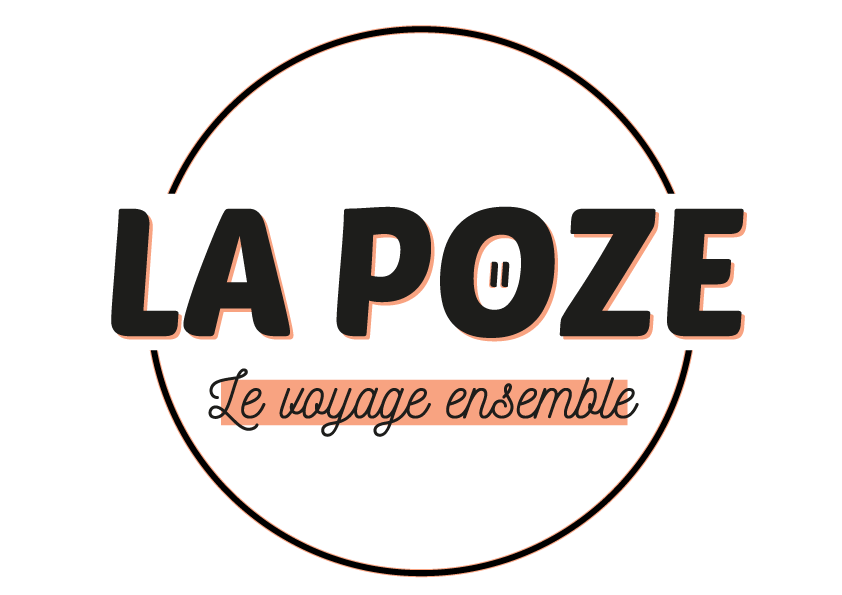
- Auvergne Rhône Alpes
- Centre Val de Loire
- Hauts de France
- Ile de France
- Nouvelle Aquitaine
- Pays de la Loire
- Provence Alpes Côte d’Azur
- Nouvelle Calédonie
- Polynésie Francaise
- Bosnie Herzegovine
- Etats-Unis (USA)
- New South Wales
- Northern Territory
- South Australia
- Western Australia
- Nouvelle Zélande
- Au Hasard d’une Destination
- Notre Tour du Monde
- Préparation tour du monde
- Nos itinéraires tour du monde
- ORGANISER VOTRE VOYAGE
- NOTRE MATÉRIEL PHOTO
- NOTRE HISTOIRE
Le Blog Voyage de Pauline et Valentin pour vous inspirer !
Nous partageons nos expériences en France et autour du monde pour vous inspirer lors de vos prochains voyages et road trip ! Découvrez sur ce blog nos itinéraires, nos conseils et nos incontournables pour partir à l'aventure et créer vos propres expériences.

La Patagonie : nos 15 jours de roadtrip (itinéraire & conseils)
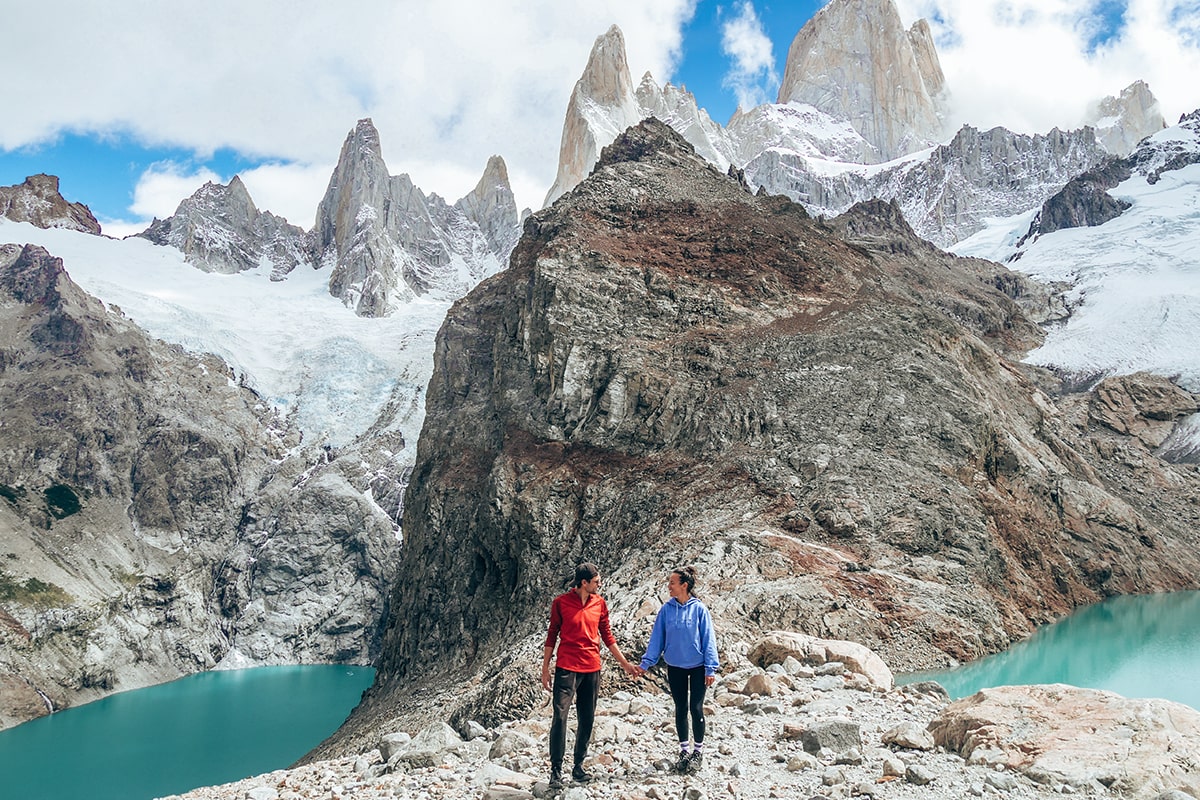
La Patagonie est une destination à couper le souffle, un véritable coup de cœur pour nous lors de notre voyage en Argentine. La Patagonie est un incontournable à faire dans une vie pour ses paysages hors du commun et son ambiance si particulière. Nous avons pu explorer cette région du monde entre El Calafate et Bariloche avec des activités et des expériences diverses et variées.
Comment ne pas ressentir de l’émotion face au glacier Perito Moreno ou au mythique Fitz Roy. Il y a un sentiment d’être au milieu de nulle part, de se sentir isolé et de se retrouver dans une nature encore préservée et unique au monde. Nous avons eu la chance de pouvoir faire une randonnée encore un peu méconnue, le Cerro Cristal, qui était une expérience juste mémorable pour son panorama.
La région de Bariloche au nord de la Patagonie retrouve un semblant de civilisation plus important par rapport à El Chalten ou même El Calafate et des paysages différents plus axés sur des forêts et des lacs.
Découvrez notre itinéraire complet d’un mois lors de notre voyage en Argentine en cliquant ICI !
Retrouvez tous nos conseils pour bien organiser son voyage en Argentine en cliquant ICI !
🧡 Cliquez ici pour découvrir les hôtels au Patagonie sur Booking.com !
🧡 Souscrivez à une assurance voyage et économisez 5% pour votre séjour en Argentine en cliquant ici !
Voir cette publication sur Instagram Une publication partagée par La Poze | Pauline & Valentin (@la_poze)
Informations Voyage en Patagonie
Nombre de jours : 15 jours
Moyen de transport : Bus et voiture de location
Logement : Hôtel
Période de l’année : Février
Notre itinéraire de voyage en Patagonie
Jour 1 & 2 : el calafate – patagonie.
Hébergement : Hôtel à El Calafate
El Calafate
Nous débutons notre roadtrip en Patagonie argentine à El Calafate qui est clairement la plus grande ville du sud de la région. El Calafate est le port d’attache idéal pour découvrir les environs riches en randonnée et en expérience comme notamment la proximité avec le glacier Perito Moreno. El Calafate ressemble à un village de montagne avec toutes les commodités, des boutiques, des restaurants, des agences pour les activités et une ambiance très sympa. Selon les saisons et la période, il n’est pas rare de voir des festivals ou autres concerts au niveau de l’amphithéâtre.
- Pour arriver à El Calafate, il y a un aéroport avec des liaisons régulières avec Buenos Aires et d’autres villes en Argentine. Depuis l’aéroport, des navettes vous amèneront jusqu’au centre de El Calafate.
- Il est aussi possible de venir en bus depuis Bariloche, Ushuaïa ou encore Puerto Madryn pour ne parler que du coté argentin. Il faut quand même savoir que les trajets sont très longs.
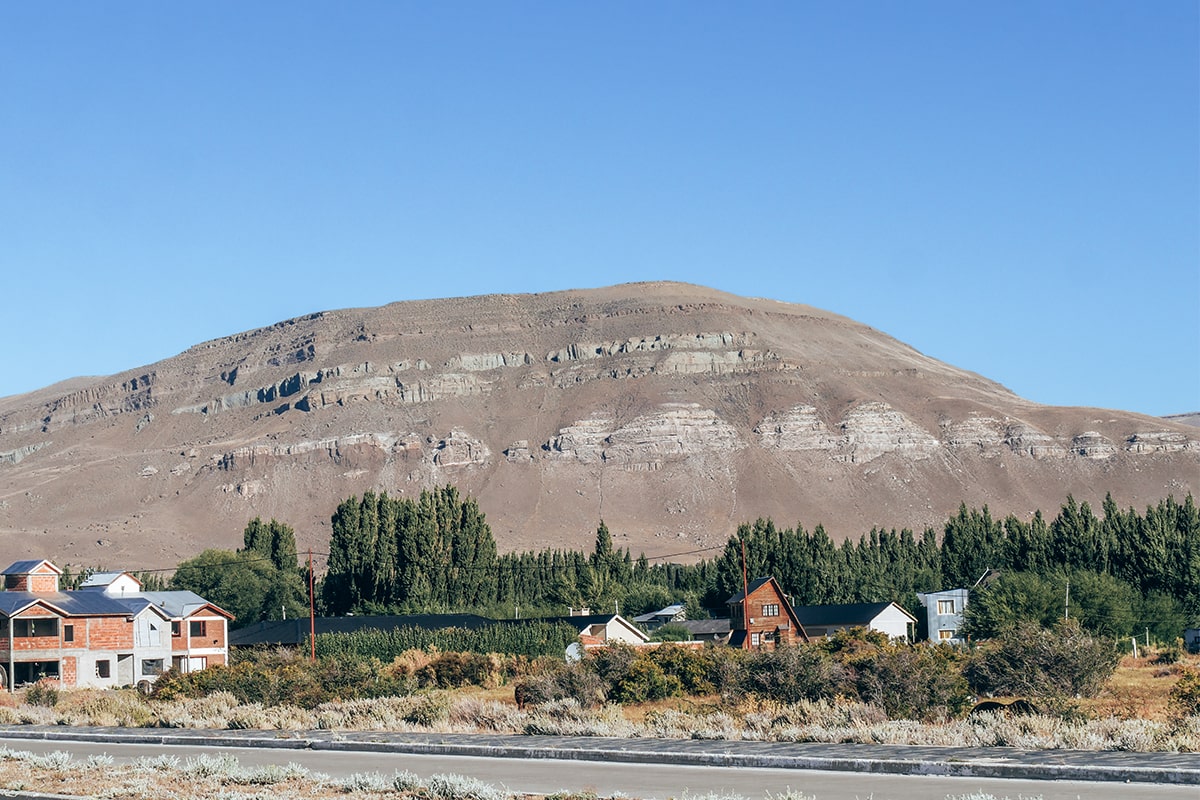
Lago Argentino
Le Lago Argentino est un immense lac avec une couleur bleue bien distinctive que l’on découvre aux alentours de El Calafate mais aussi sur des kilomètres à la ronde autour des glaciers et des cerros. De notre côté, nous avons profité de sa proximité avec El Calafate et d’une petite quinzaine de minutes à pied pour nous retrouver au plus près du Lago Argentino et nous promener sur la promenade qui le longe. On y trouve des plages, des aires de jeux et pas mal de points de vue.
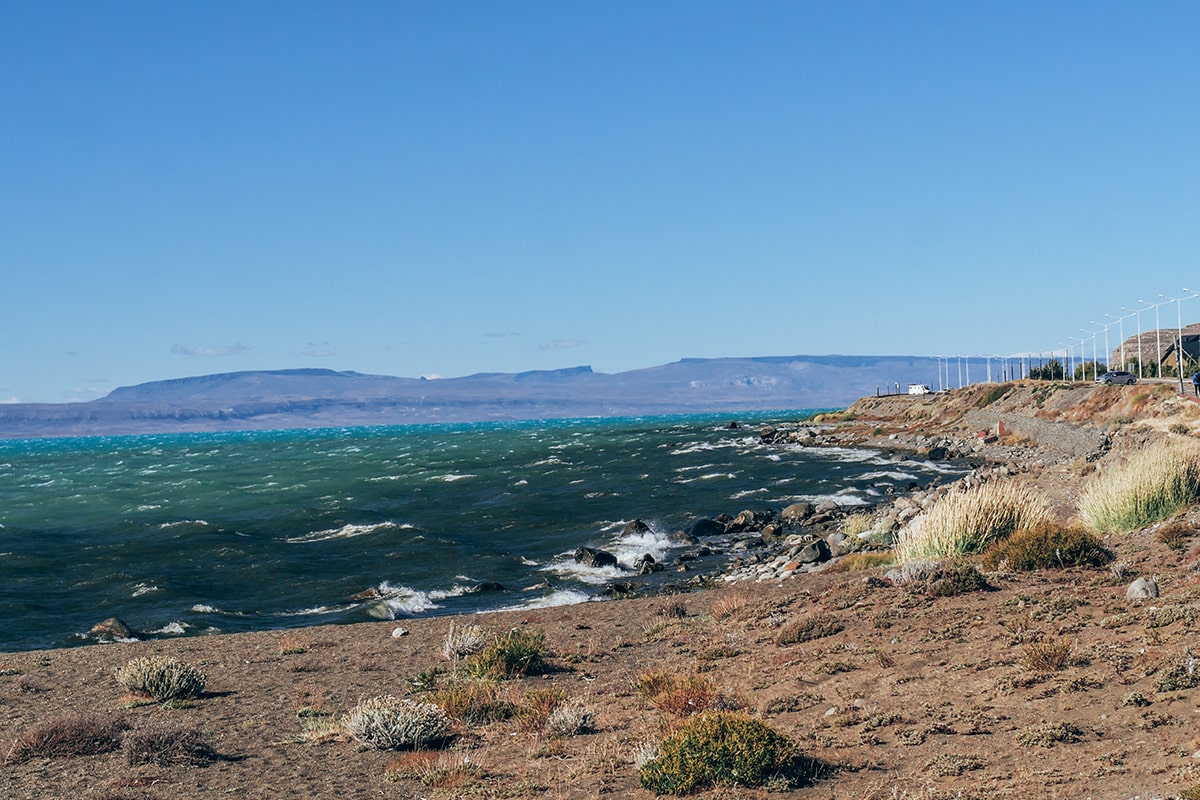
Réserva Laguna Nimez
La Reserva Laguna Nimez est une petite réserve qui se trouve entre El Calafate et le Lago Argentino. Une boucle de quelques kilomètres vous permet de vous promener à la découverte de la faune et la flore et notamment des flamants roses qui sont sans doute le réel intérêt de ce coin de nature.
- L’entrée est payante à hauteur de 1000 pesos par personne.
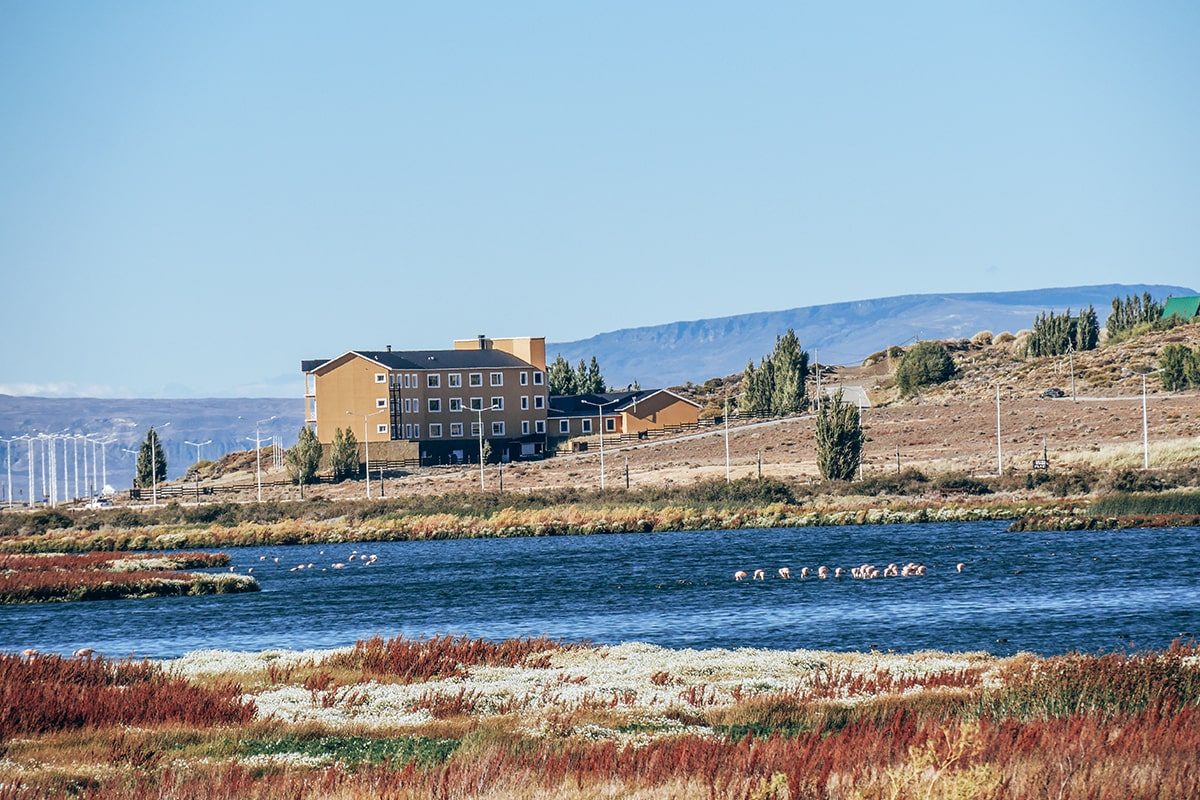
Jour 3 : Cerro Cristal – Patagonie
Randonnée cerro cristal.
Nous partons à la découverte des alentours de El Calafate avec notre première randonnée en terre patagonienne direction le sommet du Cerro Cristal. Nous sommes excités à l’idée de découvrir les paysages de cette magnifique région et cette nouvelle expérience nous promet une vue à 360 degrés à couper le souffle. Le départ de la randonnée se trouve au niveau du Lago Roca et nous promet une ascension de 2h30/3h avec 1000 mètres de dénivelé. Dès les premiers mètres, nous comprenons que nous allons en prendre plein les yeux avec déjà des vues magnifiques sur les lacs, les montagnes, les steppes ou encore les glaciers.
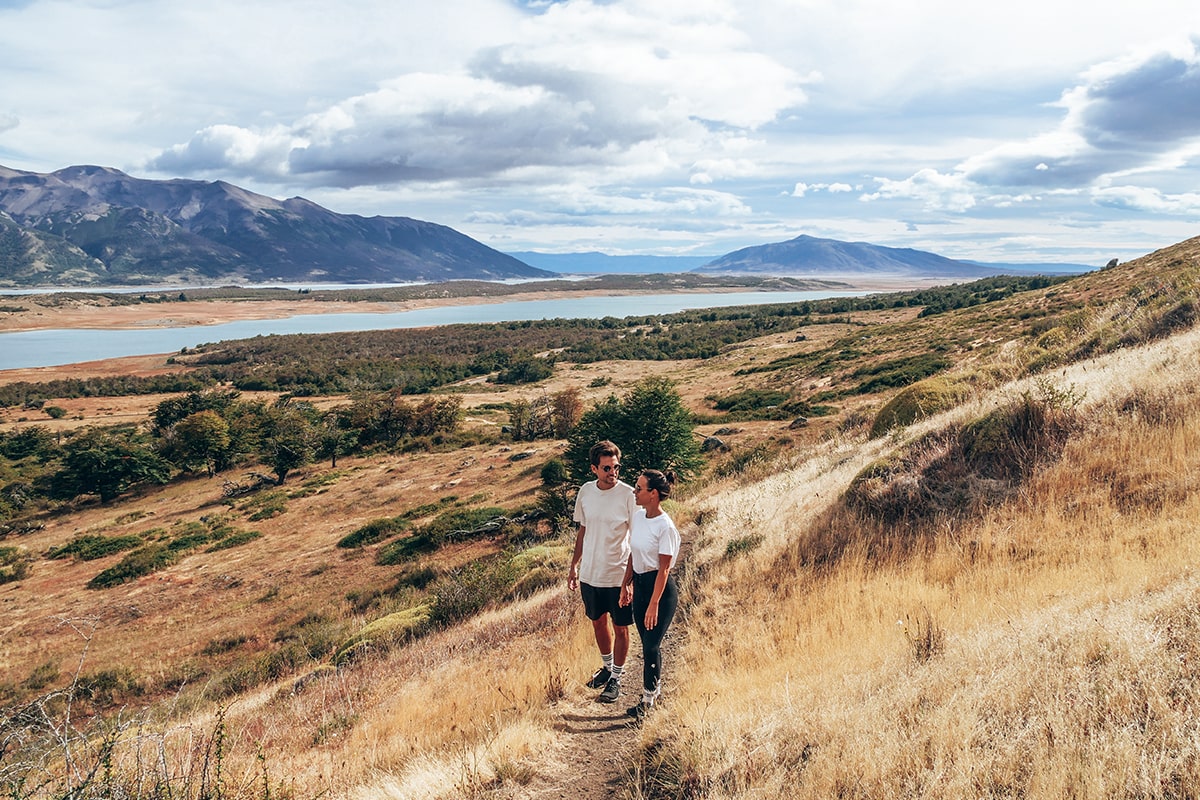
De l’autre côté, les paysages changent avec des montagnes nous rappelant vaguement l’ouest américain et des airs de Grand Canyon.
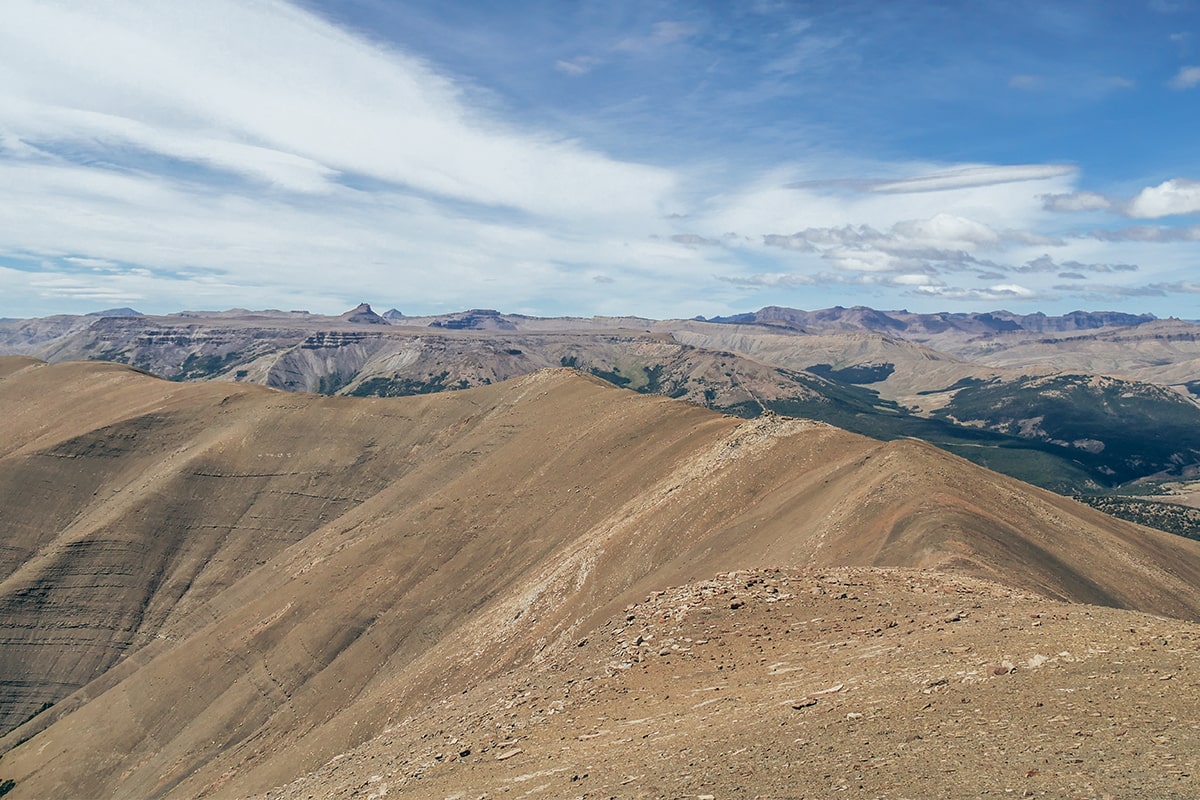
- L’accès à la randonnée de Cerro Cristal est gratuit et se fait en partie sur une route non goudronnée.
- Vous pouvez y aller en voiture de location en autonomie (accessible selon nous même en voiture citadine si vous faites attention). Lors de notre passage, aucun bus ne faisait le trajet. Nous avons donc pris un taxi qui nous a amenés pour 12000 pesos aller/retour. Le trajet entre El Calafate et le départ de la randonnée est de 1h15.
- Pour la randonnée, n’oubliez pas vos chaussures de randonnée et des vêtements chauds car le temps peut vite changer ici et il y a pas mal de vent. Prenez aussi à manger et à boire car il n’y a rien autour, vous serez au milieu de nulle part.
- Nous avons mis 2h30 pour la montée en prenant notre temps et la descente nous a pris 1h15. Pour la journée, nous sommes partis à 8h30 de El Calafate et nous sommes revenus à 18h15. Prévoyez la journée pour prendre votre temps, prendre des photos et surtout profiter de ce type de paysage.
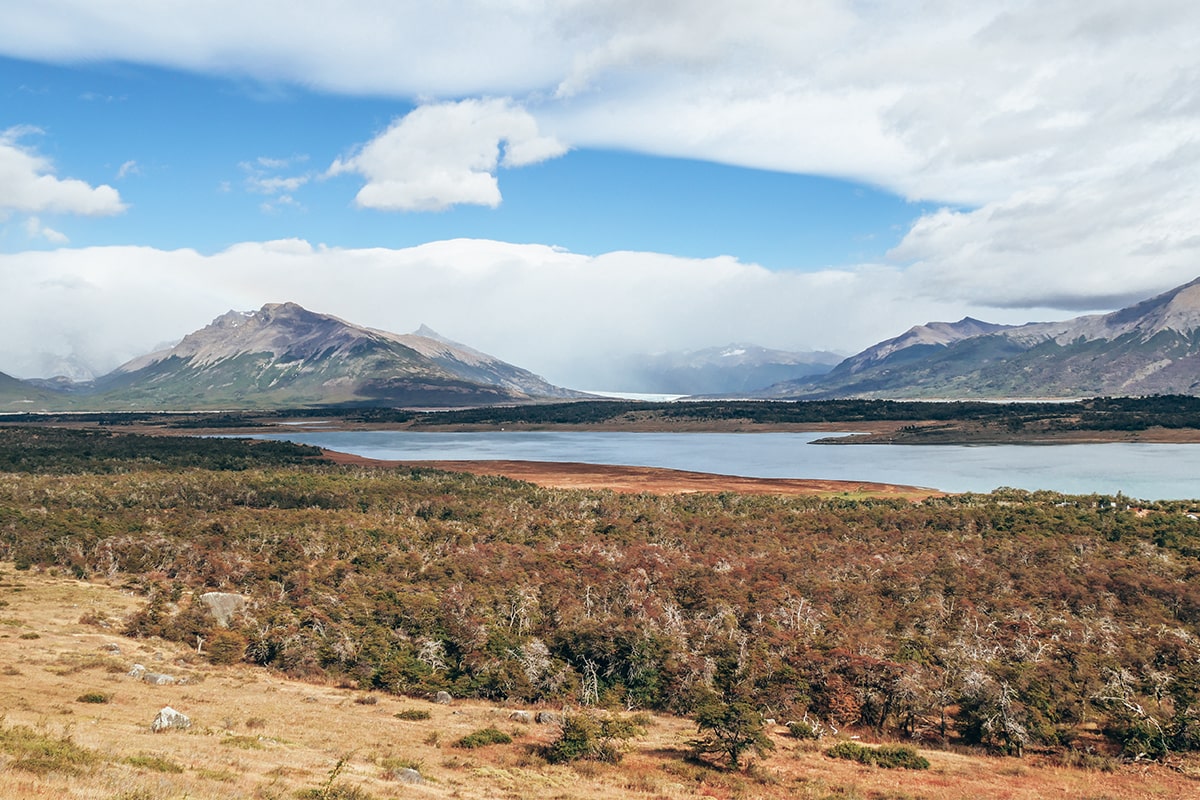
Jour 4 : Perito Moreno – Patagonie
Glacier perito moreno.
Le Glacier Perito Moreno est sans doute l’un des spots qui nous fait le plus penser à la Patagonie, c’est l’incontournable en Argentine. Il était depuis des années sur notre bucket list et nous allons enfin pouvoir le découvrir en vrai et de près par rapport à la randonnée d’hier au Cerro Cristal. Le Perito Moreno se trouve dans le parc national des Glaciers et il est juste incroyable de beauté et de puissance. L’effet wahouuu est garanti et vous aurez à plusieurs reprises l’occasion de le faire grâce aux nombreux sentiers et points de vue qui permettent de découvrir le glacier. En arrivant avec le bus, on nous dépose au début d’un sentier où nous pouvons voir un grand lac avec des icebergs, c’est déjà magnifique.
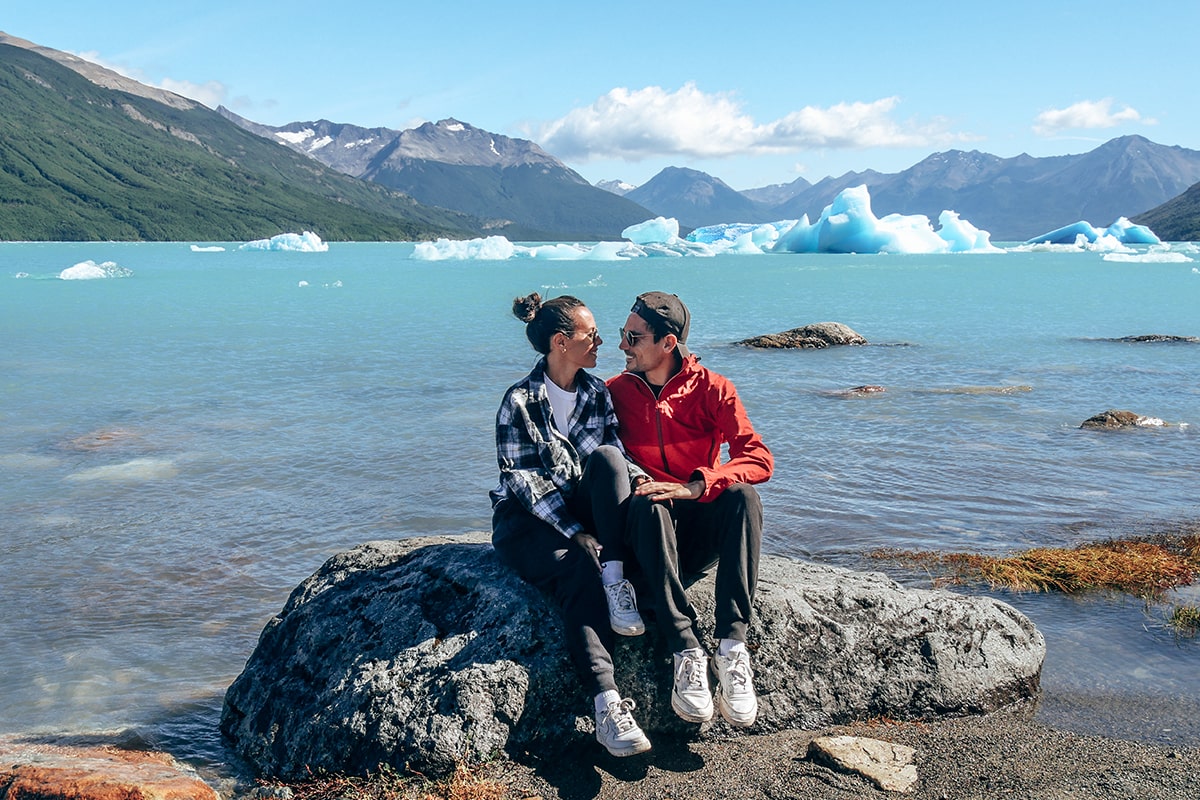
Nous rejoignons donc ensuite le sentier jaune central qui propose deux parcours, l’un avec des balcons au plus près du glacier et l’autre un peu plus en hauteur pour des panoramas à couper le souffle. Les détails du glacier et ses alentours sont bien visibles avec de la glace bleue, blanche et marron selon les endroits. Le glacier Perito Moreno culmine à plus de 70 mètres de hauteur à certains endroits. Le bruit de la glace qui tombe dans l’eau est ahurissant, on croirait entendre le tonnerre et même des détonations quand le morceau de glace est important. Le spectacle se joue aussi avec le décor avec en premier plan le glacier et en arrière-plan les montagnes. On voit vraiment que le glacier Perito Moreno s’étend sur plusieurs kilomètres.
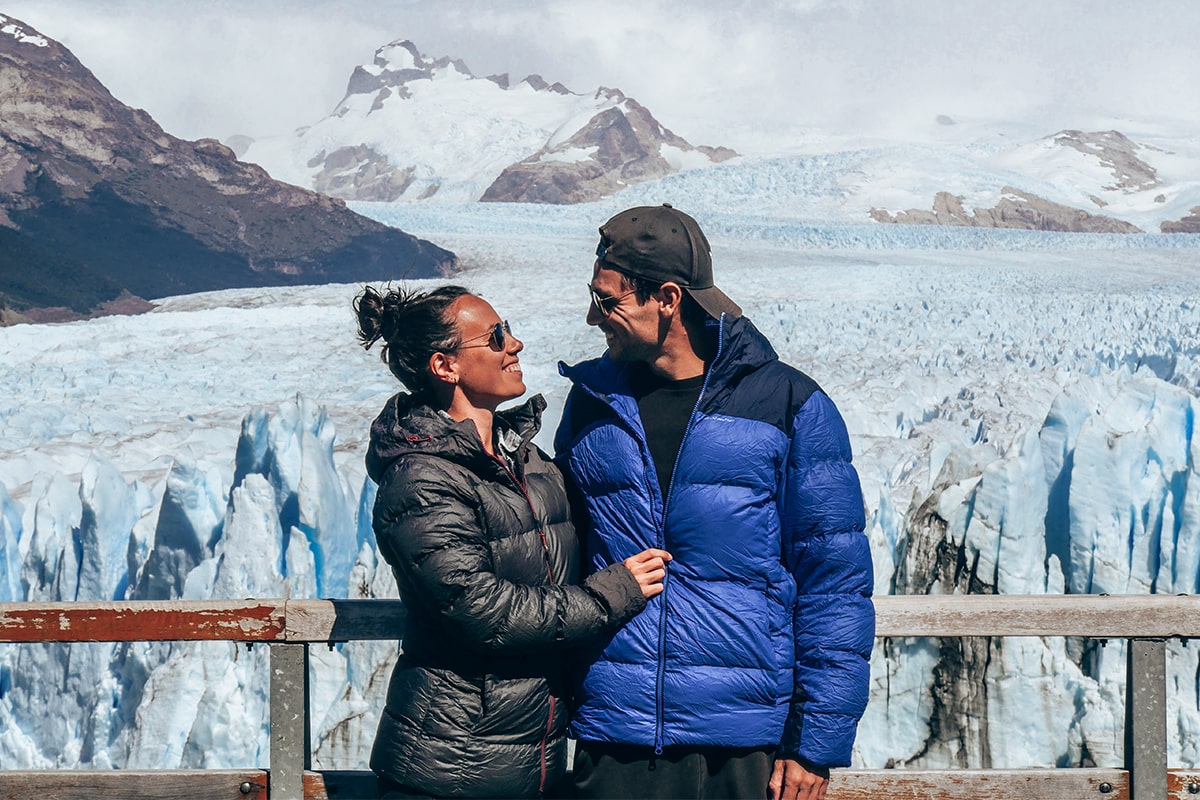
On a fini par le sentier rouge qui nous permet d’avoir des points de vue depuis une forêt avant de remonter pour découvrir la face ouest du Perito Moreno. Bref, nous avons passé une journée juste exceptionnelle à profiter de ces moments, des différents points de vue et de cette nature incroyable. Nous attendions le Perito Moreno comme l’un des moments les plus importants de notre voyage et nous n’avons pas été déçus.
- Nous avons payé une navette de El Calafate au glacier Perito Moreno directement à la station de bus de El Calafate. Nous avons payé 4000 pesos par personne pour la navette. La navette vous arrêtera à l’entrée du parc national des Glaciers où vous devrez payer 2520 pesos par personne.
- Nous sommes partis de El Calafate à 9h du matin et sommes revenus vers 17h. Sur place, nous avons eu le temps de nous promener pendant 4h30 ce qui est largement suffisant.
- Vous pouvez apporter à manger ou prendre sur place au niveau du restaurant. Lors de notre passage, le sentier vert était fermé.
- N’oubliez pas de vous couvrir car le temps peut vite changer. Pas de réelle difficulté sur les sentiers.
- Il est possible de réserver une excursion en bateau pour s’approcher encore plus près du glacier.
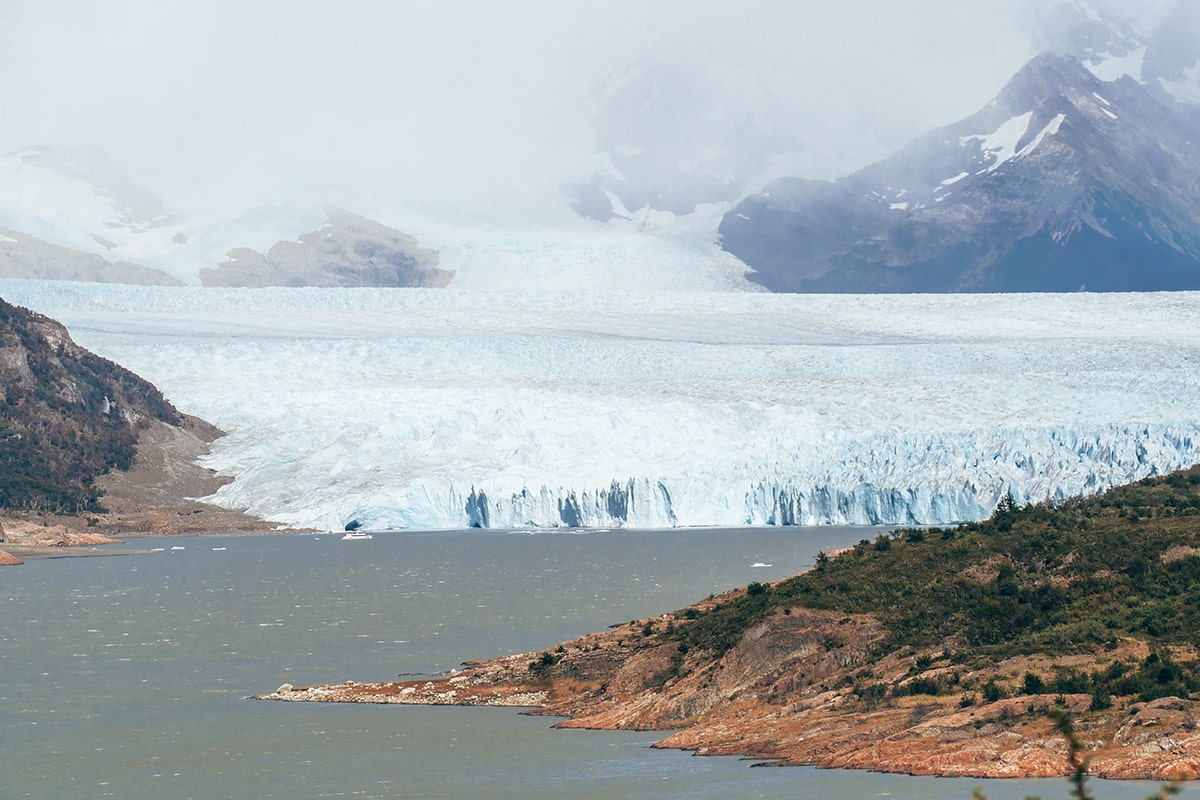
Jour 5 : Todo Glaciares – Patagonie
Excursion todo glaciares.
Avant de rejoindre El Chalten, nous partons pour une dernière expérience aux alentours de El Calafate avec l’excursion « Todo Glaciares » qui va nous permettre de découvrir deux glaciers, Upsala et Spegazzini. Une navette nous amène donc du centre-ville de El Calafate jusqu’à un port d’embarcation sur le Lago Argentino. Il faut savoir que les deux glaciers sont accessibles seulement en bateau et par le biais de cette excursion. La traversée en bateau du Lago Argentino est magnifique avec son eau bleue distinctive et les montagnes tout autour.
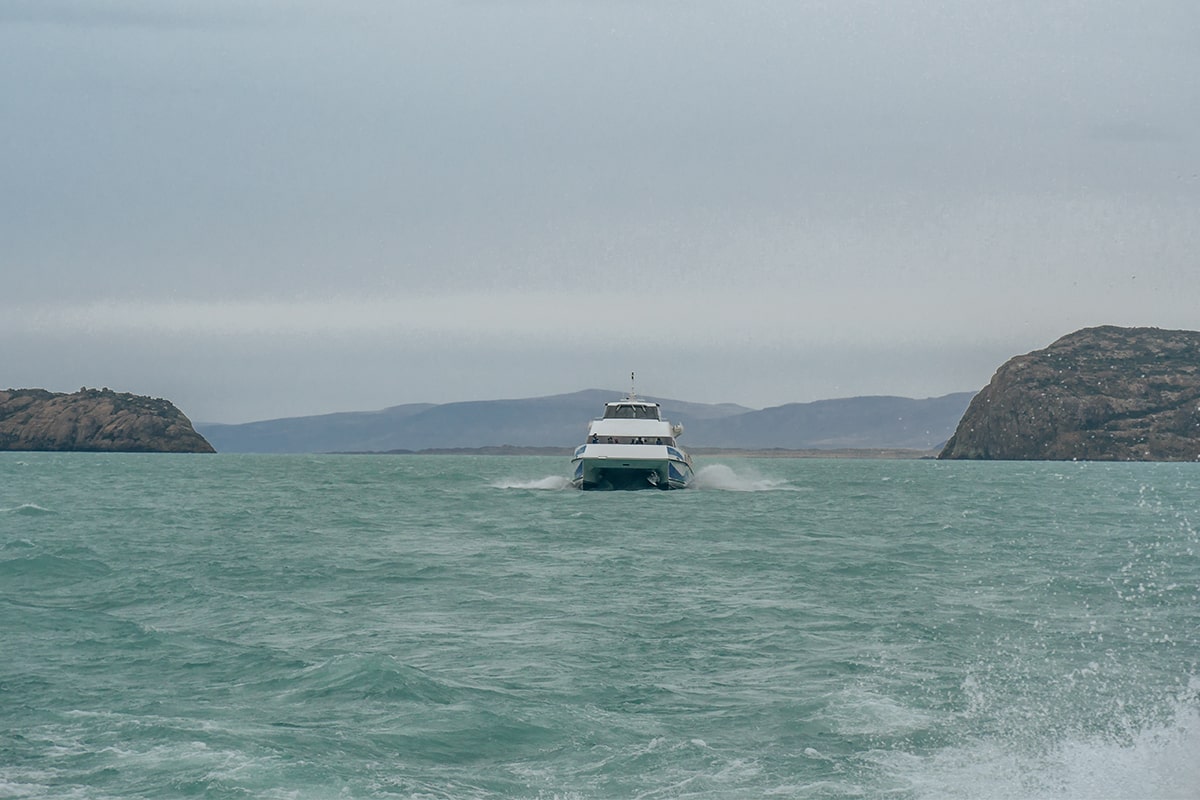
Nous faisons donc demi-tour pour prendre la direction d’une nouvelle branche du lac. Au bout de quelques minutes, nous apercevons plusieurs glaciers en haut des montagnes créant des sortes de cascades dans la forêt. Plus loin, nous arrivons au plus près du glacier Spegazzini et là le moment est dingue. On peut distinguer une coulée de glace partant du haut de la montagne jusqu’au lac avec des hauteurs de glace atteignant jusqu’à 135 mètres. Ce glacier est juste grandiose, nous en prenons plein les yeux. Nous n’en revenons pas, nous nous sentons tout petit, la nature est si belle. Les couleurs sont une nouvelle fois blanche et bleue. Et lorsque certains morceaux de glace se détachent du glacier pour finir dans l’eau, le bruit est indescriptible. La météo est moins au rendez-vous que les précédents jours mais cela donne une ambiance très sympa aussi. Bref, une nouvelle découverte à la hauteur de nos espérances.
- Nous sommes partis pour cette excursion « Todo Glaciares » avec l’agence Solo Patagonia. Nous avons payé 16 500 pesos par personne avec la navette entre El Calafate et le port d’embarquement inclus. Il est possible de faire l’excursion le matin (départ 7h – Retour 15h30) ou l’après-midi (départ 13h – retour 21h30). En haute saison, ne pas hésiter à réserver à l’avance. Nous avons dû réserver 3 jours avant en plein mois de février.
- La navigation en bateau dure à peu près 4h avec deux arrêts sur l’eau. Il y a aussi un arrêt d’une heure au refuge du glacier Spegazzini pendant 1h pour vous restaurer.
- Il est possible d’acheter à manger au refuge ou d’amener votre propre nourriture. Sur le bateau vous aurez l’occasion d’acheter à boire et autres gourmandises.
- Vous ne pourrez pas rater non plus le service de photo sur le bateau, en gros à chaque arrêt du bateau sur l’eau, 2 photographes mitraillent les touristes qui attendent en file indienne. Le seul point négatif de cette excursion selon nous.
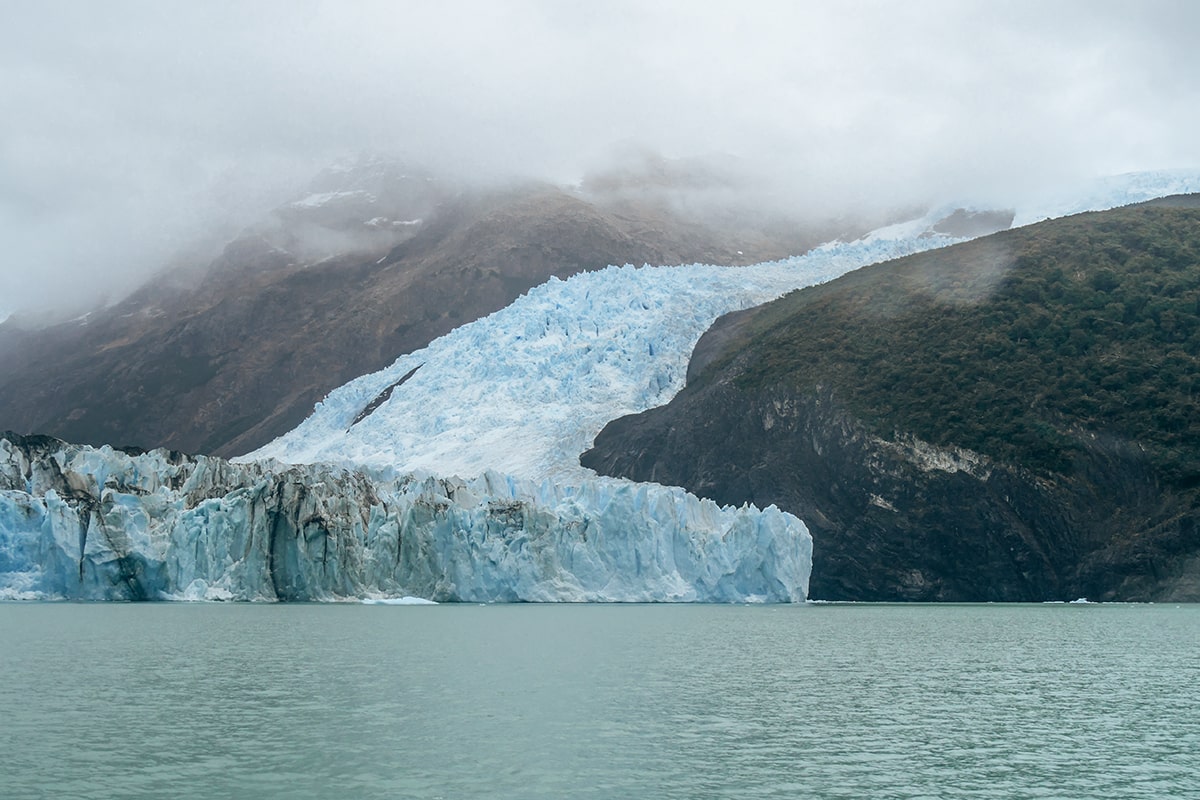
Jour 6 & 7 : El Chalten – Patagonie
Hébergement : Hôtel à El Chalten
Le village de El Chalten est petit mais l’ambiance est très sympa et surtout vous y trouverez tout ce qu’il vous faut. Ici, nous sommes au milieu de nulle part, au milieu de la nature et il y a déjà de très beaux panoramas sur les paysages depuis le village. El Chalten a beaucoup de charme au milieu des montagnes avec les jolies vues au loin sur le mont Torre et le Fitz Roy. La grande majorité des habitations sont en fait des hôtels et la rue principale est arpentée de part et d’autre par des restaurants, bars, agences ou magasin de sport.
Chorillo del Salto
Il vous faudra environ une heure de marche (environ 3 kilomètres) depuis le centre-ville de El Chalten pour découvrir la cascade Chorillo del Salto. La randonnée est très facile, les paysages traversés aussi et le final avec la cascade qui jaillit entre les roches vaut le coup. Une belle balade entre deux grosses randonnées ou si le temps n’est pas trop de la partie.
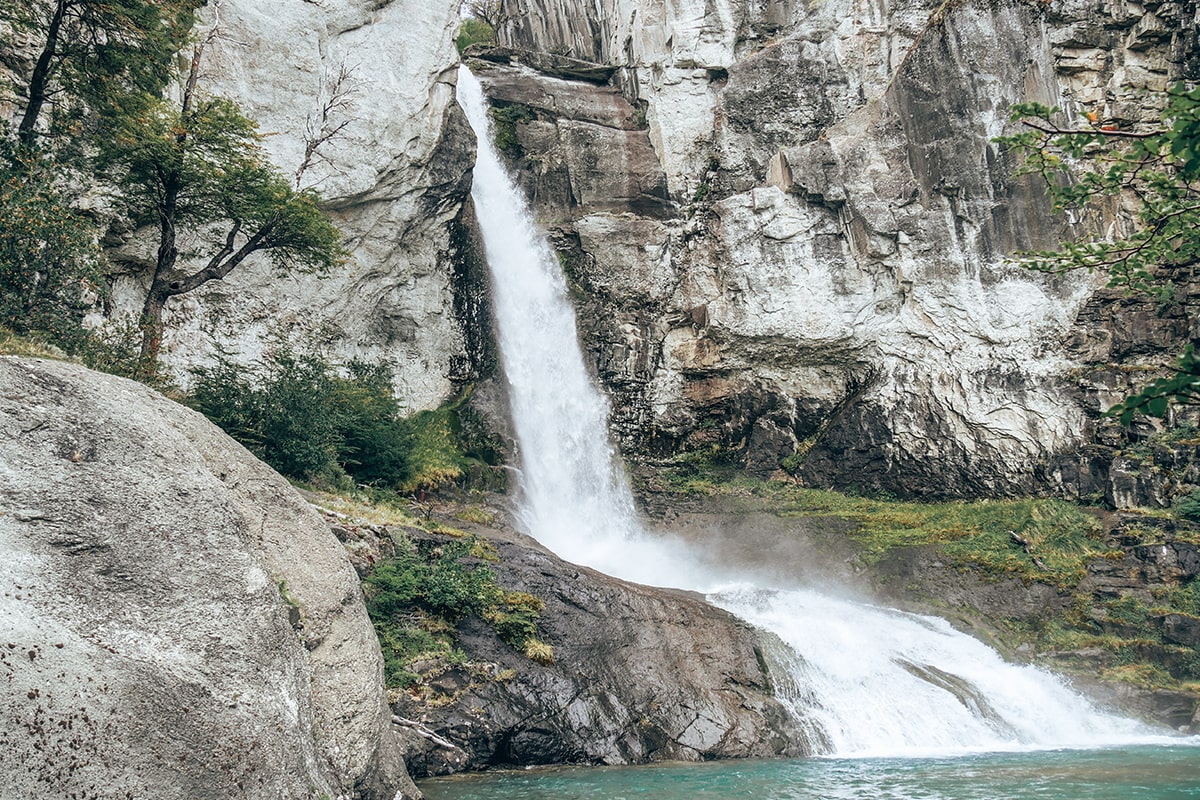
Mirador Las Aguilas & Condores
Les mirador Las Aguilas & Condores se trouve à moins d’une heure de marche du village de El Chalten dans le sens opposé à la cascade Chorillo del Salto. La randonnée ne présente pas de grande difficultés malgré un petit dénivelé. Nous vous conseillons vraiment de faire les deux miradors car les vues sont différentes. De notre côté, nous avons préféré le mirador de Las Aguilas pour sa vue à 360 degrés exceptionnelle sur le Fitz Roy, le mont Torre, le lago Viedma et tous les alentours.
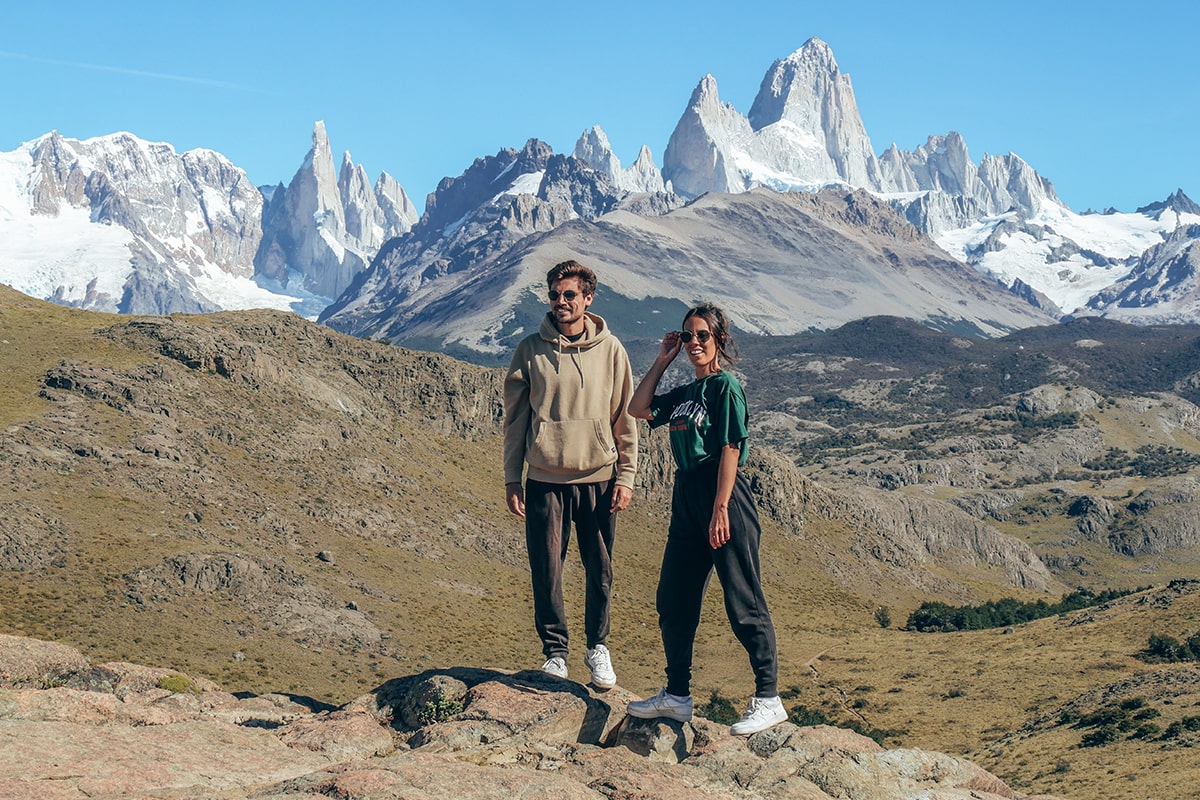
Jour 8 : Fitz Roy – Patagonie
Randonnée fitz roy.
El Chalten est la capitale du trekking et sa randonnée la plus mythique est la montée jusqu’au Fitz Roy et la Laguna de Los Tres en contrebas. Le Fitz Roy est sans doute le spot le plus connu en Patagonie après le glacier Perito Moreno. Résultat : on en a pris plein les yeux tout au long de la journée. Sur le papier, nous partons pour 20 kilomètres de marche aller-retour avec un dénivelé de 750 mètres et environ 8h de marche. Le point de départ de la randonnée du Fitz Roy se trouve dans le village de El Chalten. Mais de notre côté, nous avons décidé de commencer différemment en prenant une navette tôt le matin depuis le village de El Chalten jusqu’à l’hostelleria El Pillar. Nous avons fait ce choix pour plusieurs raisons :
- Faire la randonnée sous forme de boucle
- Voir un glacier sur le chemin sans faire de détour
- Economiser 1h de marche à l’aller.
Et nous pouvons vous dire qu’on n’a pas regretté notre choix. Dès le début de la randonnée, nous nous retrouvons dans un paysage hors norme entouré de montagnes aux multiples couleurs et des cours d’eau en contrebas. Un vrai décor naturel.
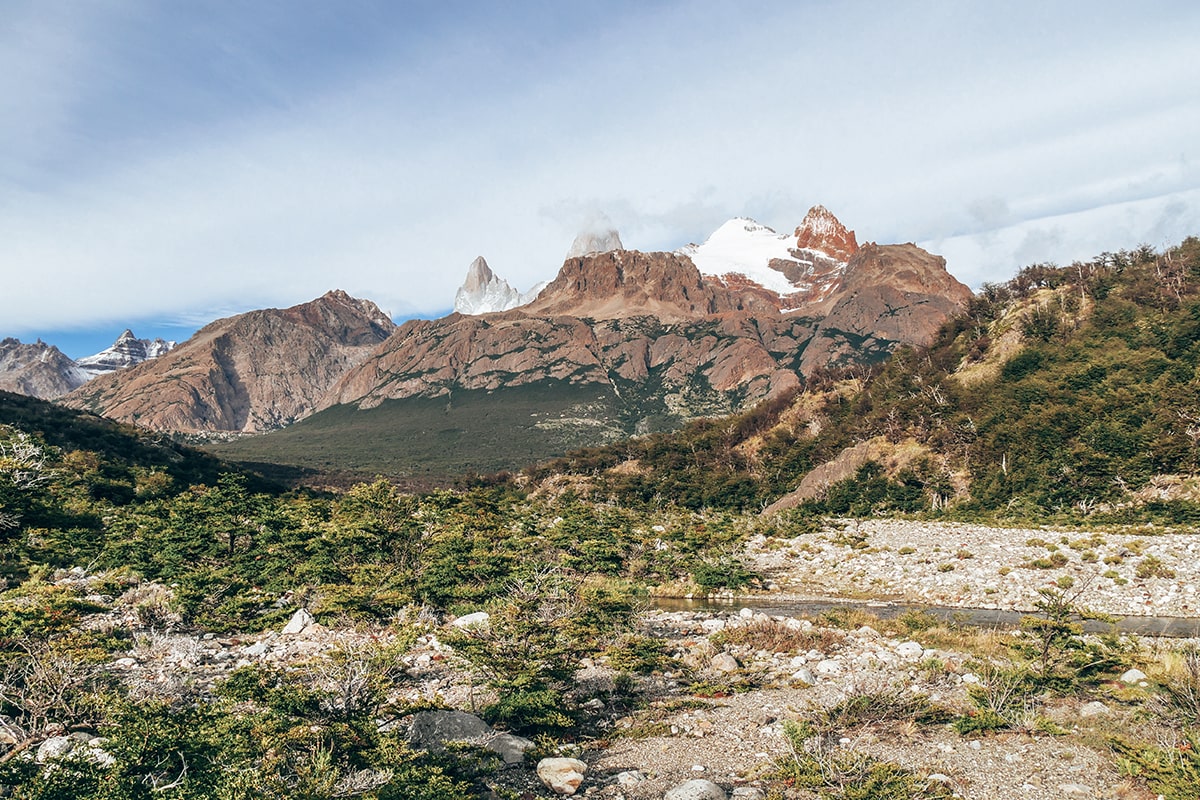
Après quelques minutes, une grande plaine se présente à nous avec le Fitz Roy en arrière-plan. On arrive d’ailleurs à l’intersection entre le sentier venant de El Chalten et le nôtre. C’est d’ailleurs à cet endroit que se trouve un camping pour bivouaquer. Après le camping, la vraie difficulté de la randonnée se présente devant nous. On comprend qu’il nous faut passer la colline avec un certain dénivelé pour arriver à notre objectif de la journée, c’est à dire la Laguna de Los Tres. L’ascension est un peu rude mais ça se fait aisément et surtout les points de vue se dévoilent à 360 degrés pour notre plus grand plaisir avec des lacs, des montagnes, des plaines et des forêts.
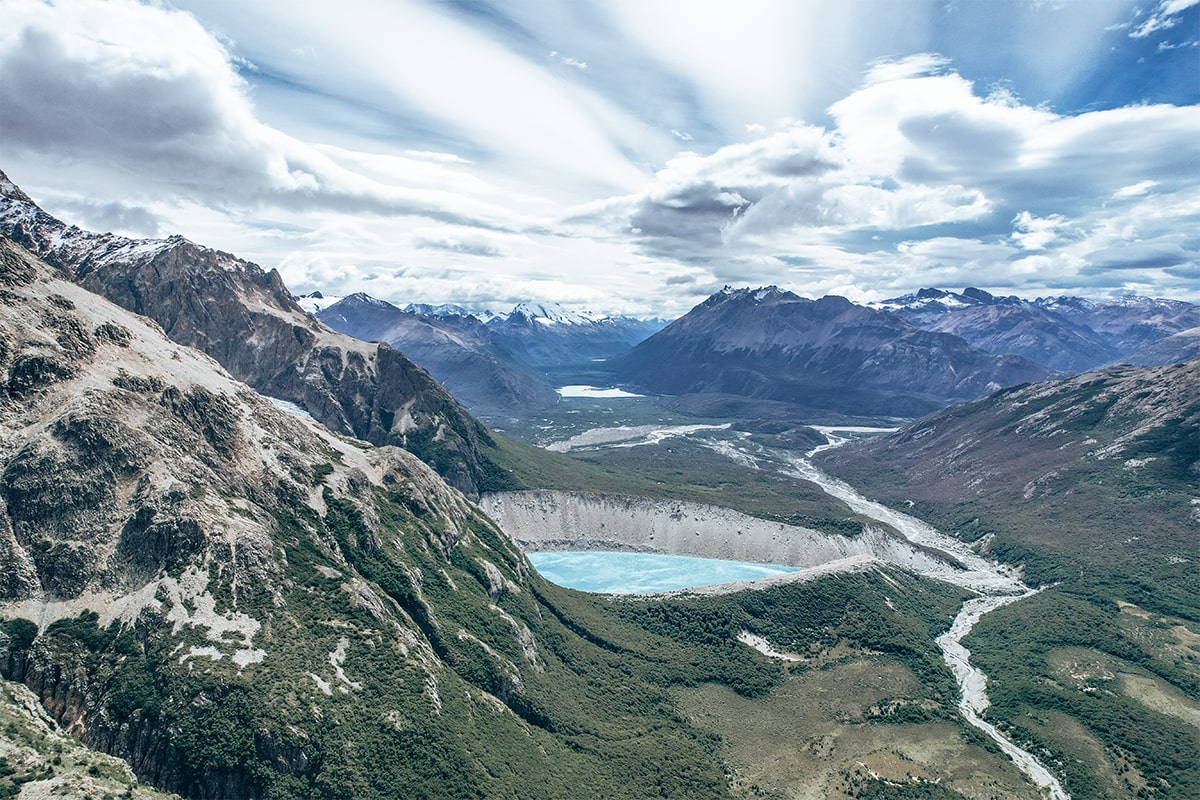
Enfin, nous arrivons en haut de la colline dans un décor à couper le souffle avec les fameuses pointes du Fitz Roy, le glacier et la lagune de Los Tres avec son eau turquoise. Le spot est juste incroyable, quel bonheur de se retrouver ici. Nous en profitons pour descendre et aller toucher l’eau qui est…glacée.
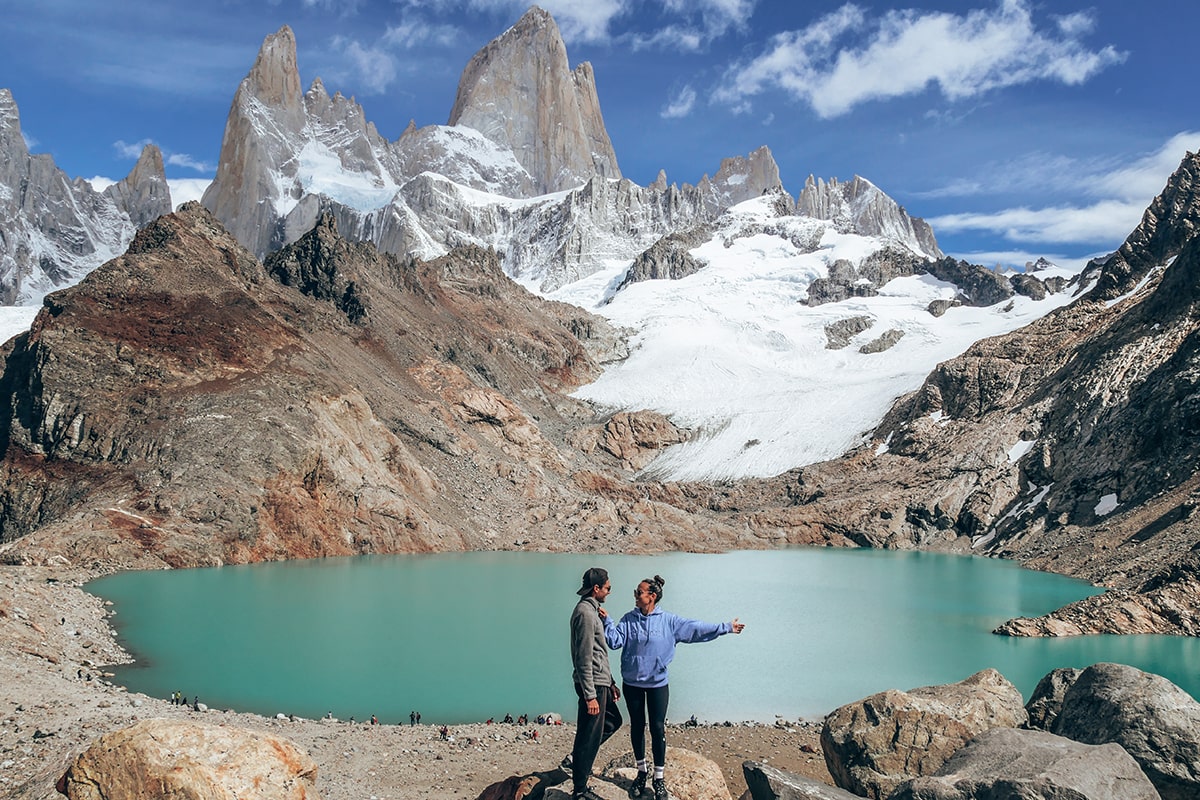
La randonnée ne s’arrête pas là, n’oubliez pas en bas de la lagune de Los Tres, de continuer votre chemin jusqu’aux points de vue amenant à la Laguna Sucia et sa couleur bleue encore une fois impressionnante. Le meilleur endroit est sans doute le panorama permettant de voir les deux lagunes et le Fitz Roy en arrière-plan en prenant un peu de hauteur. Un paysage que nous ne sommes pas prêts d’oublier.

Sur la route retour, nous prenons le sentier menant directement à El Chalten pour poursuivre la boucle et éviter de reprendre la navette. Les paysages sont nouveaux, on aperçoit encore le Fitz Roy, de jolis coins où l’eau circule dans les steppes et des lagunes comme notamment la Laguna Capri. Le retour nous a parus être une éternité avec la fatigue accumulée.
- La navette jusqu’à l’hostelleria El Pillar nous a coûté 600 pesos par personne et nous l’avons pris directement par le biais de notre hôtel. Encore une fois il est possible de faire la randonnée gratuitement en partant directement de El Chalten.
- La location de bâton a coûté 130 pesos par bâton.
- Pour les personnes intéressées par le bivouac au camping Poincenot ou Capri, il est possible de louer tout le matériel nécessaire directement à El Chalten. Dans nos souvenirs, la location de la tente et du nécessaire coûtait 4000 pesos.
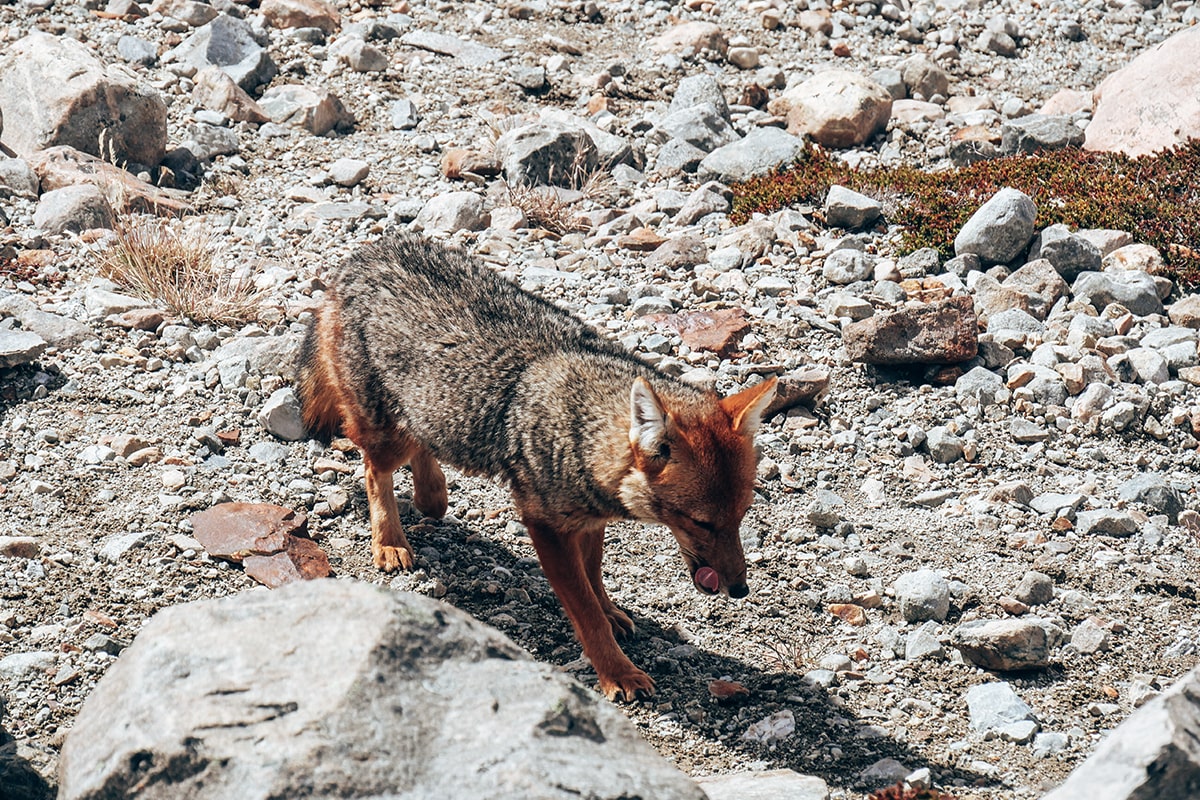
Jour 9 : Laguna Torre – Patagonie
Randonnée laguna torre.
La randonnée vers la Laguna Torre est l’autre incontournable lors d’un séjour à El Chalten. Assez exigeante par sa longueur de 18 à 22 kilomètres selon votre itinéraire, elle ne présente que très peu de difficulté avec un dénivelé de 350 mètres et entre 6 à 8h de marche. Il y a plusieurs points de départ depuis le village de El Chalten mais le sentier officiel débute près de l’hôtel Chalten Apart 365 ou le camping La Torcida. Le dénivelé se situe surtout au début de la randonnée qui nous amène jusqu’à un mirador sur la cascada Margarita et une sorte de gorge.
Le dénivelé continue de plus belle encore sur quelques minutes jusqu’au Mirador del Torre qui permet d’avoir un joli panorama sur le mont Torre et ses environs mais en ne dévoilant pas l’objectif final. Un peu comme au Fitz Roy, on voit un peu l’objectif mais il faut aller au bout pour que tout le décor se dévoile. Le sentier continue en nous amenant au milieu de grands espaces puis dans la forêt avant de se rapprocher de plus en plus près du torrent.
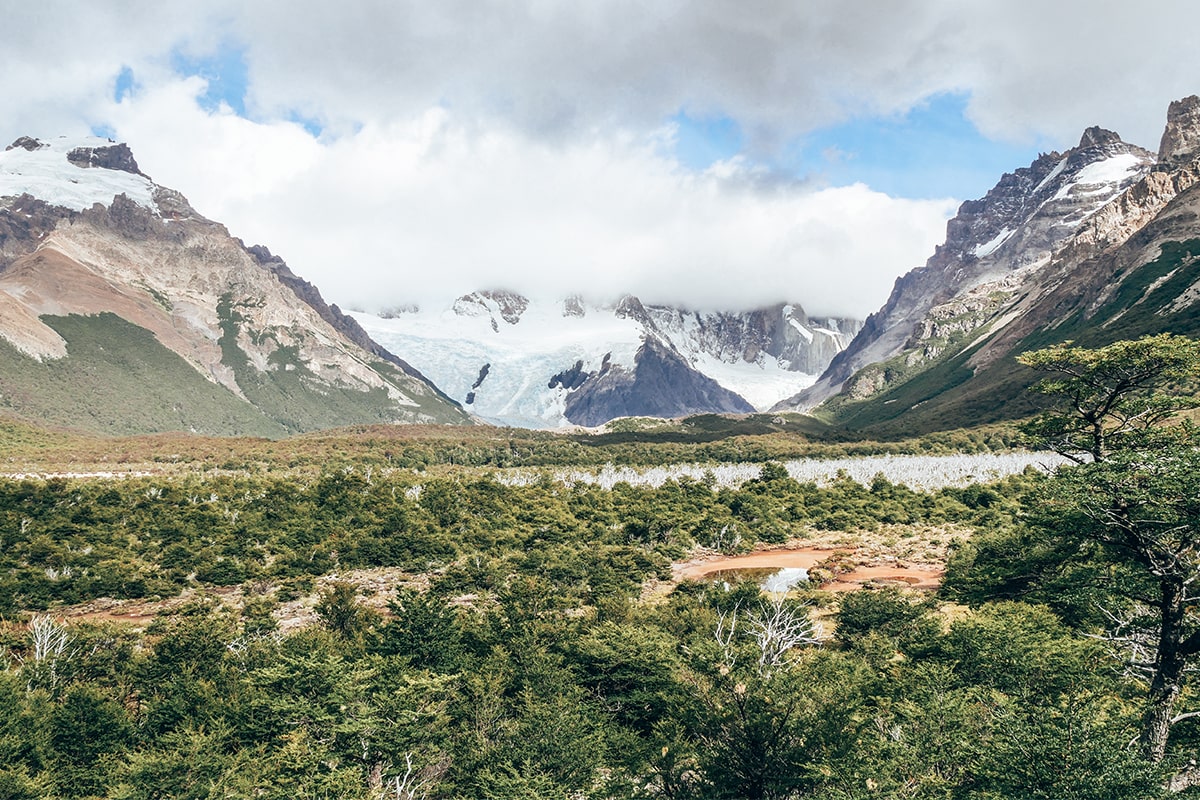
Enfin, nous arrivons au bout de la randonnée où la Laguna Torre se trouve devant nos yeux. L’eau est plutôt grise mais ça donne un charme. Quelques icebergs résistent au soleil estival ici ou là sur le lac. Et que dire des alentours où les montagnes et leurs glaciers entoure la lagune. Le spectacle est une nouvelle fois grandiose. Au passage, il est possible de continuer sur 2 kilomètres pour rejoindre le mirador Maestri qui vous permettra de vous rapprocher des glaciers et d’avoir un point de vue différent.
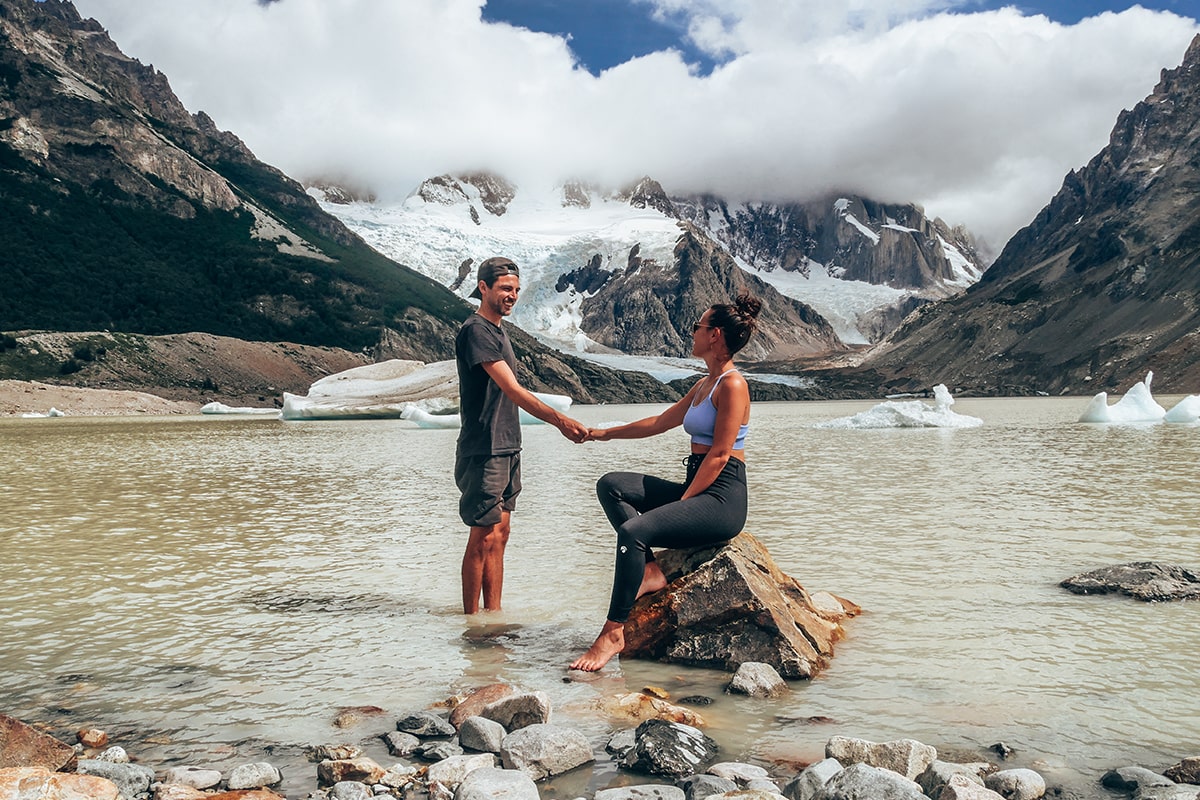
Jour 10 à 12 : Bariloche – Patagonie
Hébergement : Hôtel à Bariloche
San Carlos de Bariloche
San Carlos de Bariloche est la ville principale de la région de Bariloche et le point de chute idéal pour prendre son logement. La ville de San Carlos de Bariloche est assez grande et a l’intérêt de se trouver près du lac ce qui est parfait pour se promener. Ici, on ressent une ambiance de village montagnard suisse avec ses bâtiments autour de la place principale et ses quelques restaurants aux spécialités montagnardes. Vous trouverez à San Carlos de Bariloche toutes les commodités nécessaires et notamment pas mal de bons restaurants avec fondue.
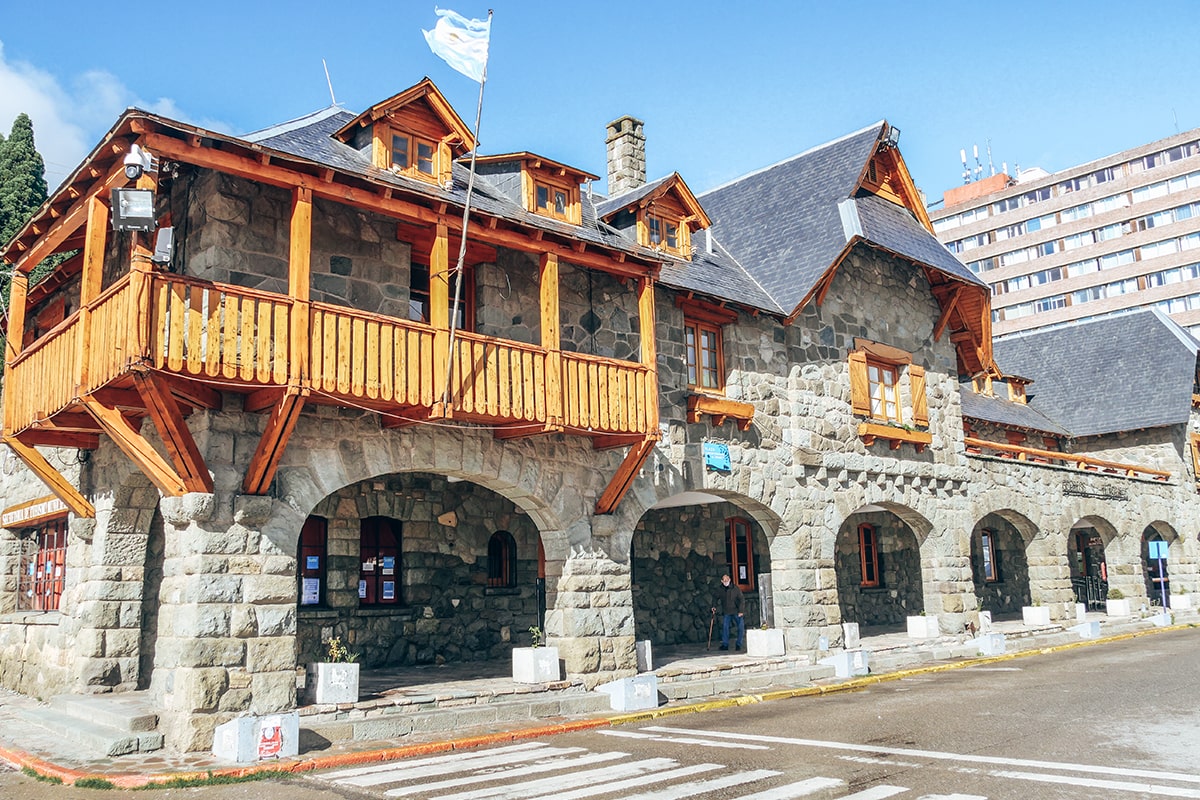
Jour 13 & 14 : La route des 7 lacs – Patagonie
La route des 7 lacs.
L’une des activités phares à Bariloche est de louer une voiture et de faire la route des 7 lacs qui se trouve entre San Carlos de Bariloche et San Martin de los Andes. La fameuse Ruta 40, emblématique route en Patagonie vous permet de passer au milieu de paysages magnifiques sur un parcours d’environ 175 kilomètres aller. La première partie du trajet nous amène dans des paysages assez lunaires et désertiques avant d’arriver à une succession de miradors sur le premier lac et ses alentours.
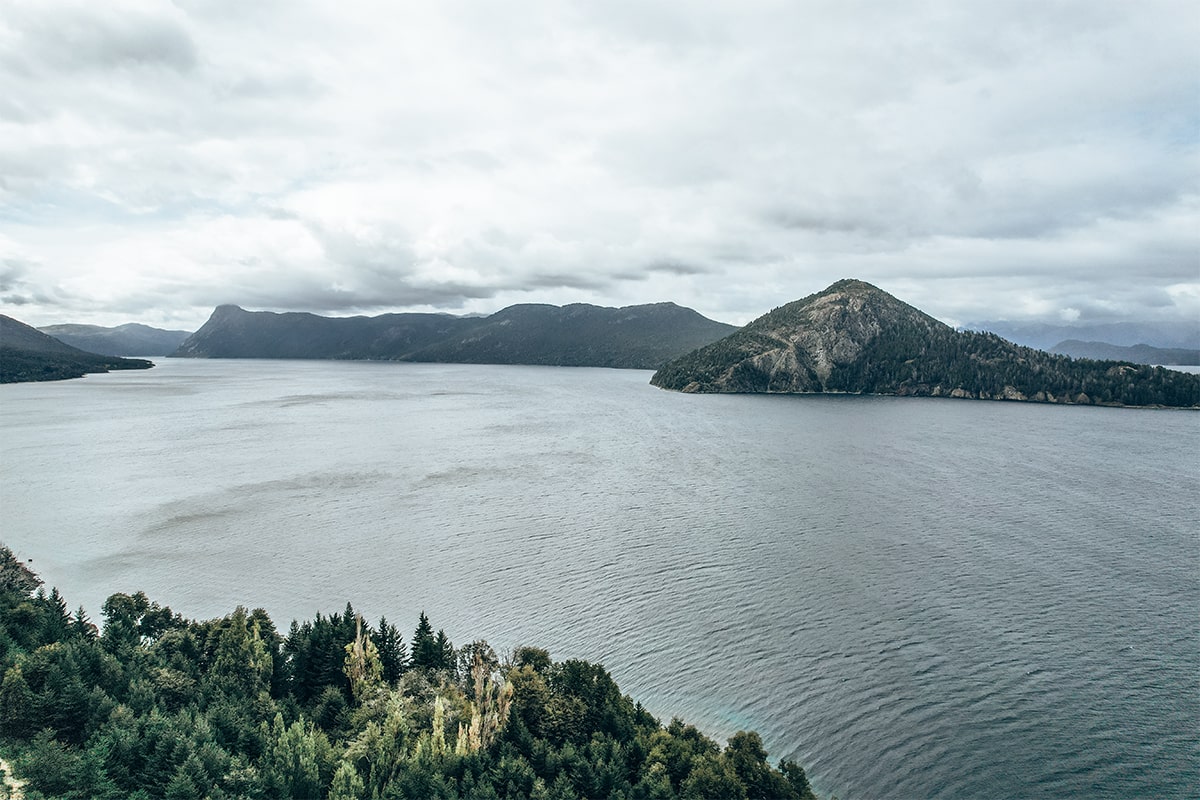
Puis, nous arrivons dans le village de la Villa La Angostura qui est plutôt sympa pour faire une pause. On y découvre deux facettes, un côté calme et limpide près du lac avec ses quelques plages et ses airs de Canada. Et un côté « station de montagne » dans le centre-ville avec ses boutiques, hotels et agences le long de la route principale. Nous profitons de Villa La Angostura pour manger notre déjeuner avant de reprendre la route.
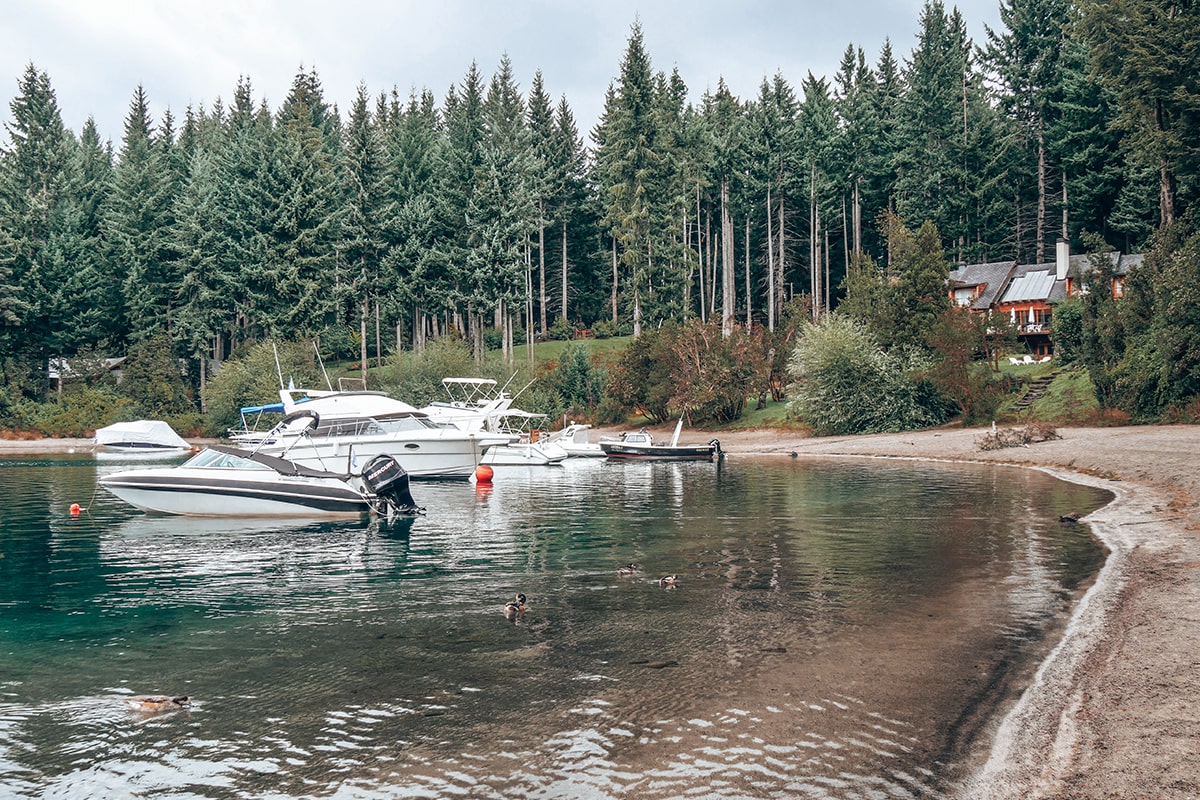
La route entre la Villa La Angostura et San Martin de los Andes permet de zigzaguer entre les lacs et de s’arrêter aux nombreux points de vue sur les magnifiques paysages de cette fameuse route des 7 lacs. D’ailleurs la deuxième partie de la route permet de voir quelques cascades depuis la route. La plupart des miradors principaux sont accessibles directement en voiture mais il y a aussi pas mal de sentiers de randonnée qui vous permettent d’aller découvrir les environs à pied.
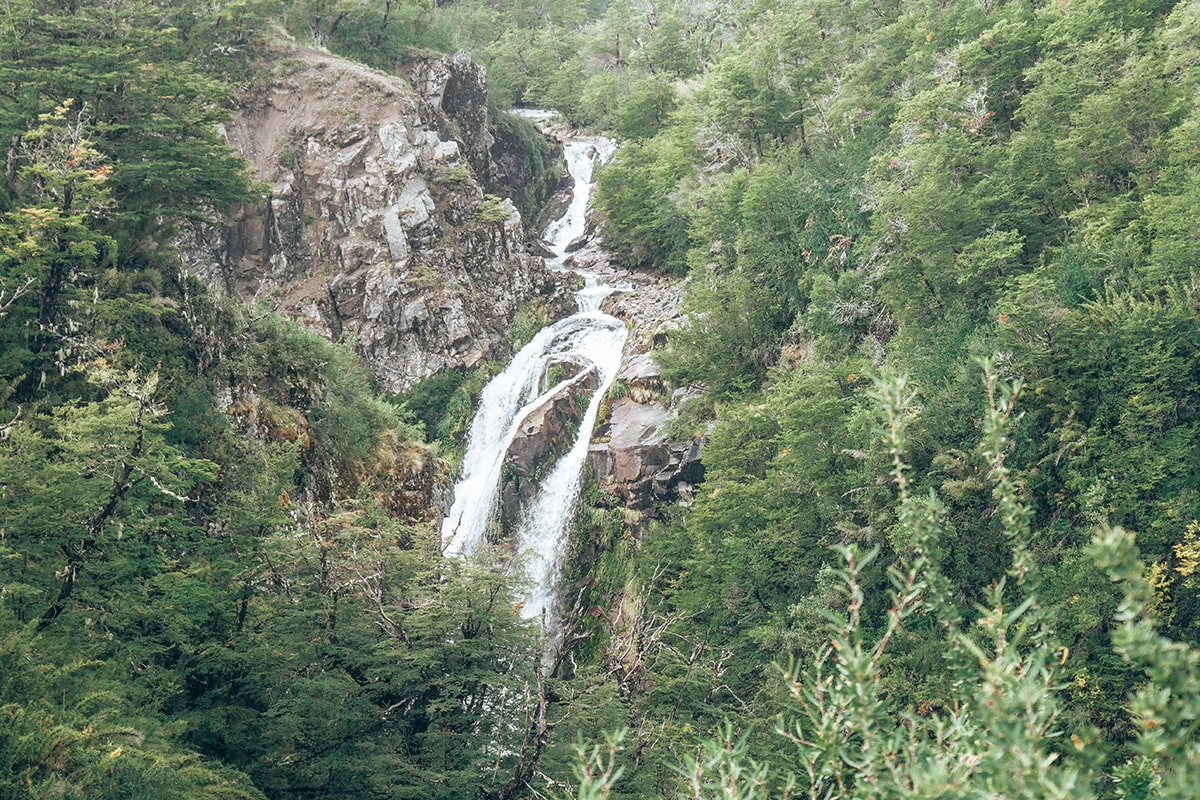
Tout juste avant d’arriver à San Martin de los Andes, nous découvrons un panorama sur le village et son lac. Le village de San Martin de los Andes n’a rien d’exceptionnel excepté de profiter de sa plage et de la promenade.
- Nous vous conseillons de faire la route des 7 lacs en deux jours car en 1 journée nous avons eu l’impression de beaucoup rouler et de ne pas trop profiter.
- Au retour, il est aussi possible de prendre un chemin alternatif en prenant la route 63 puis la route 65 ce qui vous permettra de découvrir des endroits tout aussi magiques et différents de l’aller.
- Il n’a pas fait très beau lors de notre journée sur la route des 7 lacs, ce qui a un peu gâché l’expérience alors essayez au mieux de programmer cette aventure un jour ensoleillé.
- La location de voiture nous a coûté 13000 pesos par jour ce qui n’était pas donné.
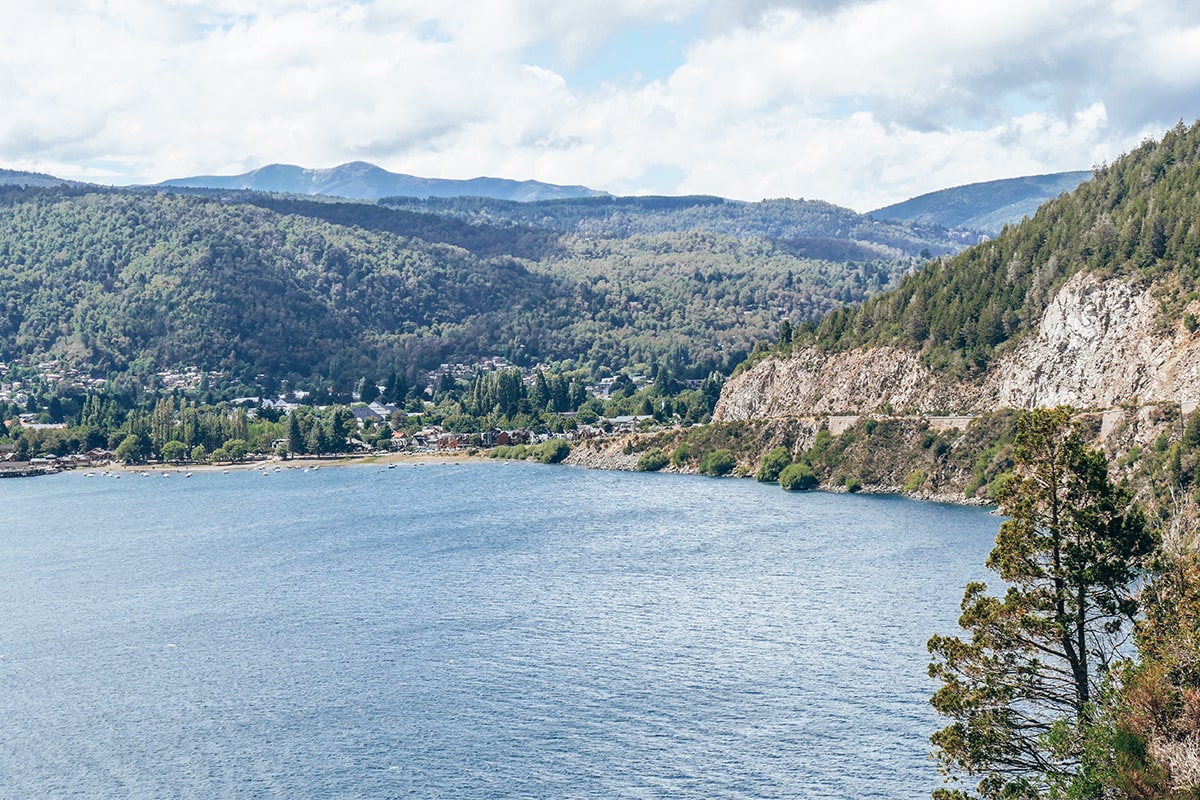
Jour 15 : Cerro Campanario & Llao Llao – Patagonie
Cerro campanario.
Le Cerro Campanario est un spot près de San Carlos de Bariloche et qui a été notre coup de cœur lors de notre passage dans la région de Bariloche. Pour monter au sommet, nous avons opté pour la randonnée avec une marche d’une petite trentaine de minute et un dénivelé assez fort pour atteindre le Cerro Campanario. En haut, les vues sont juste époustouflantes et plusieurs miradors sont aménagés pour en profiter. On y découvre les lacs et les îlots entourés par les montagnes et les forêts. Le Cerro Campanario permet d’avoir une vue de folie à 360 degrés et selon nous le plus beau panorama de Bariloche.
- Il est aussi possible de monter en haut du Cerro Campanario en téléphérique, ce dernier étant payant. Pour information, le sentier de randonnée est quant à lui en accès libre et gratuit.
- Il n’y a pas beaucoup de parkings et la plupart se garent sur le bord de la route. Une ligne de bus depuis San Carlos de Bariloche dessert directement le Cerro Campanario.
- Ne pas hésiter à venir tôt si vous souhaitez être plus tranquille.
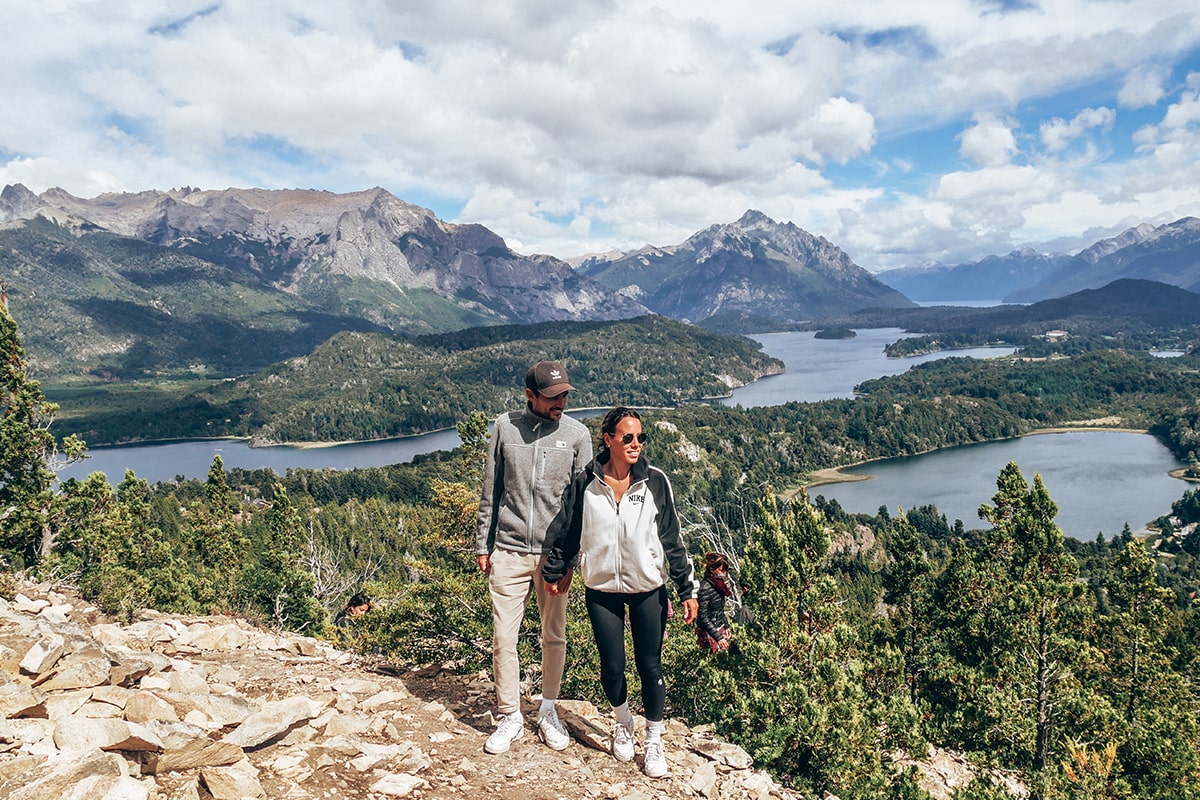
Llao Llao est un super endroit à environ 30 kilomètres de San Carlos de Bariloche où vous pourrez découvrir les lacs, les forêts et de nombreux points de vue. Il y a une sorte de boucle entre les îlots qu’il est possible de faire en voiture en s’arrêtant où l’on veut pour commencer des randonnées ou découvrir des miradors. Évidemment, le faire en vélo, à pied ou autres moyen de transport sont aussi possibles. De notre côté, nous avons fait la randonnée menant au lac Escondido et à Bahia de los Troncos. Bre, nous vous conseillons Llao Llao qui est parfait pour se balader et profiter tranquillement de cette magnifique nature.
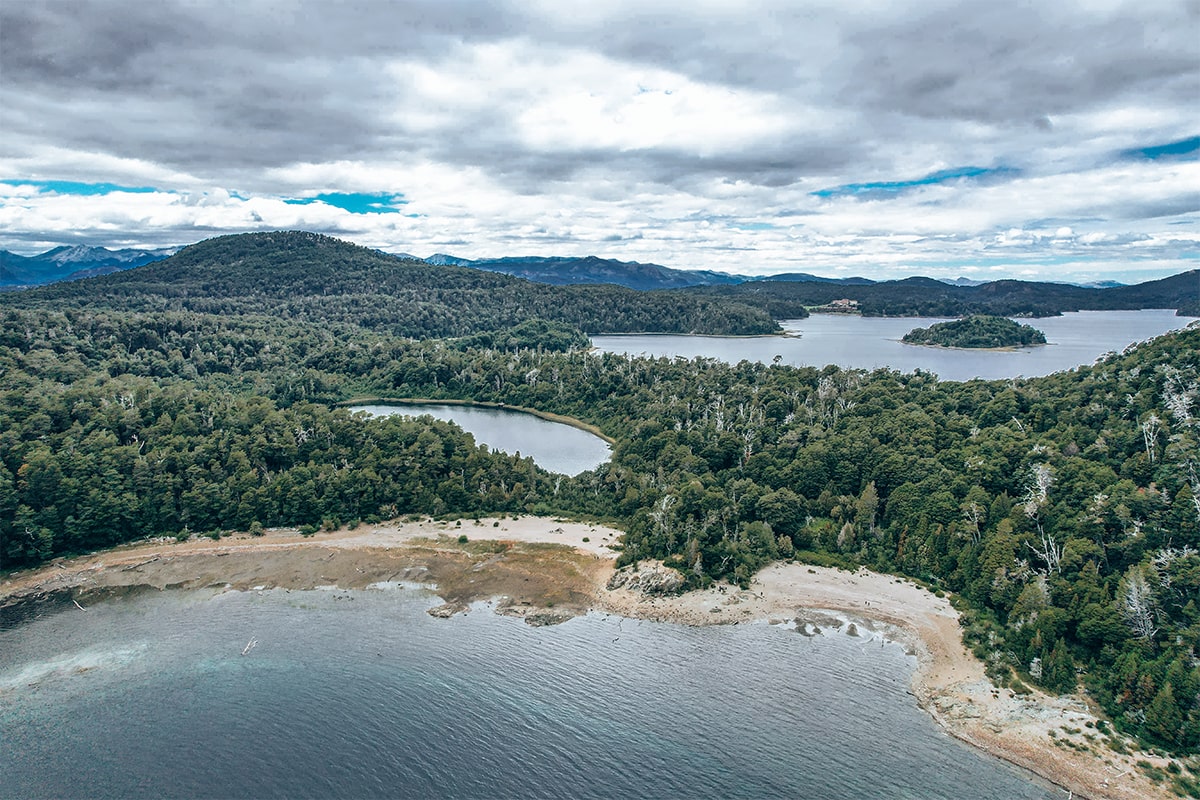
Résumé Roadtrip en Patagonie
La Patagonie était une destination que nous attendions de faire depuis longtemps et nous avons enfin eu l’occasion de réaliser notre rêve. Nous en avons pris plein les yeux lors de ce roadtrip avec la diversité des paysages et ce côté unique que la nature peut offrir dans certaines régions. Nous avons fait seulement le côté argentin ce qui est une bon argument pour revenir faire la Patagonie mais cette fois-ci côté Chili.
Découvrez notre itinéraire d’un mois en Argentine en cliquant ICI !
Découvrez tous nos conseils pour bien organiser et préparer votre voyage en Argentine en cliquant ICI !
Découvrez tous nos voyages en cliquant ICI !
Pauline & Valentin – Instagram : @la_poze

Visiter Rio de Janeiro et ses incontournables
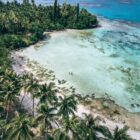
Nouvelle Calédonie : 3 semaines de voyage
You might also like, nusa ceningan, la petite île près de bali, 3 jours de road trip dans les gorges du verdon, 3 jours de road trip dans le massif de l’estérel, notre bilan voyage de 9 mois, une parenthèse enchantée, 4 jours de roadtrip en auvergne, comment organiser son voyage soi-même en 12 étapes , what do you think annuler la réponse.
Votre adresse e-mail ne sera pas publiée. Les champs obligatoires sont indiqués avec *
Enregistrer mon nom, mon e-mail et mon site dans le navigateur pour mon prochain commentaire.
Avertissez-moi des commentaires de suivi via e-mail. Vous pouvez aussi vous inscrire sans commentaire.
Quel voyage de rêve ! C’était un plaisir de lire toutes vos aventures et de voir vos belles photos 🙂
Jean-François
Merci pour votre blog riche en informations! Il nous a été très utile pour notre voyage en Patagonie !
Trop bien, ça fait plaisir ! On espère que vous avez apprécié la Patagonie =)
8 of the best road trips in Patagonia: explore remote and iconic landscapes by car
Jan 27, 2022 • 12 min read
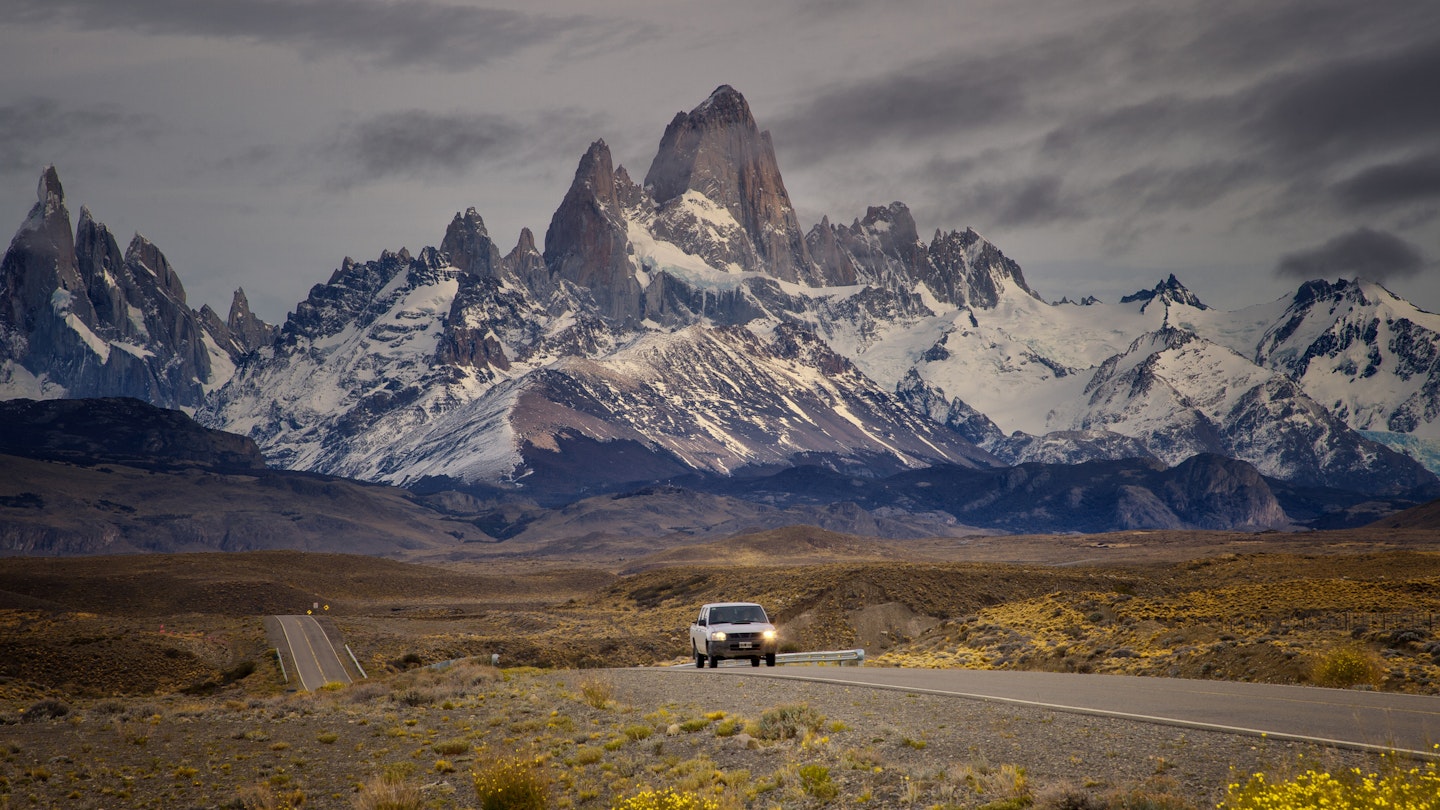
From the most iconic long-distance routes to round-trip drives that can be done in a day, here are the best road trips in Patagonia © Puripat Wiriyapipat / Getty Images
Given the region’s vastness and the remoteness of many of its most scenic roads and destinations, road-tripping is the best way to explore Patagonia, particularly if you want to journey off the beaten track. While the main roads between towns are mostly paved, and even Chile’s Carretera Austral and Argentina’s Ruta 40 are no longer more pothole than road, you may still have to contend with challenging driving conditions: occasional landslides, muddy sections or a bumpy "washboard".
Things to know before you go
While a 4WD is not essential, a vehicle with high clearance is preferable – and essential on minor side routes. The best time to drive around is between October and April, as during the southern winter, some side routes may be closed by snow. Bear in mind that some routes cross the border between Chile and Argentina, so you’ll need special permission to cross borders from your rental company. Also, one-way drop-off fees are hefty, so plan your journey carefully. Here are nine of the best road trips in Patagonia (and Tierra del Fuego ), ranging from three hours to a couple of weeks.
Carretera Austral is Chile's most iconic drive
Start: Puerto Montt; end: Villa O’Higgins; distance: 760 miles (1223km); allow 10 days
The big one. The so-called "Southern Highway" is Chile’s most iconic drive that snakes south from Chile’s Lake District across a landscape of dense forest, snow-peaked mountains, volcanoes, glacial rivers, and misty fjords. A Pinochet-commissioned project in the 1970s, the road was supposed to tame the wilderness and help settle the isolated Aysén region. The southern section is still not paved, which makes travel more challenging. Be prepared for inclement weather and occasional delays (landslides, having to wait for car ferries, etc).
Start in Puerto Montt , the Lake District’s port city, take the first of four ferries, then pass through the salmon-farming town of Hornopirén, before taking two interconnecting ferries through the fjords, with a strip of land in between, to reach the southern half of Parque Nacional Pumalín Douglas Tompkins – a vast area of native forest, gifted to the state by the Tompkins philanthropists. Just south is Chaitén, half buried by the volcanic eruption of 2008 but since recovered, followed by the Villa Santa Lucía crossroads town; from here, you can detour to Futaleufú – Chile’s whitewater rafting capital. Passing through dense woodland, you reach the market town of La Junta, before arriving at picturesque, fjordside Puyuhuapi, famous for its hot springs. The road skirts the fjord and passes high-end fly-fishing lodges before the highest section of the Carretera Austral takes you over Queulat Pass, with mist-shrouded mountains looming ahead. Stretch your legs in Parque Nacional Queulat before following the hilly ribbon of road to Coyhaique , the largest town halfway along the Carretera Austral.
The southern half of the journey is even more remote, sweeping through the pioneer town of Villa Cerro Castillo, past the glacial Lago General Carrera, and through tiny Puerto Río Tranquilo – the jumping-off point for glacier hikes and boat trips to the Capilla de Mármol . Farther south, the ranching town of Cochrane is a good overnighter, and a convenient base for visiting Parque Nacional Patagonia – another Tompkins conservation project – before detouring off the main route to Caleta Tortel – a unique village with cypress boardwalks instead of streets. A final ferry crossing from Puerto Yungay, and narrow hairpin bends of a particularly precipitous stretch of road, with glimpses of forest-clad mountains and raging glacial river below, bring you to Villa O’Higgins, a small pioneer settlement at the end of the road. Then you can either retrace your steps or take a weekly ferry from Puerto Yungay to Puerto Natales , and adventure further in the south.
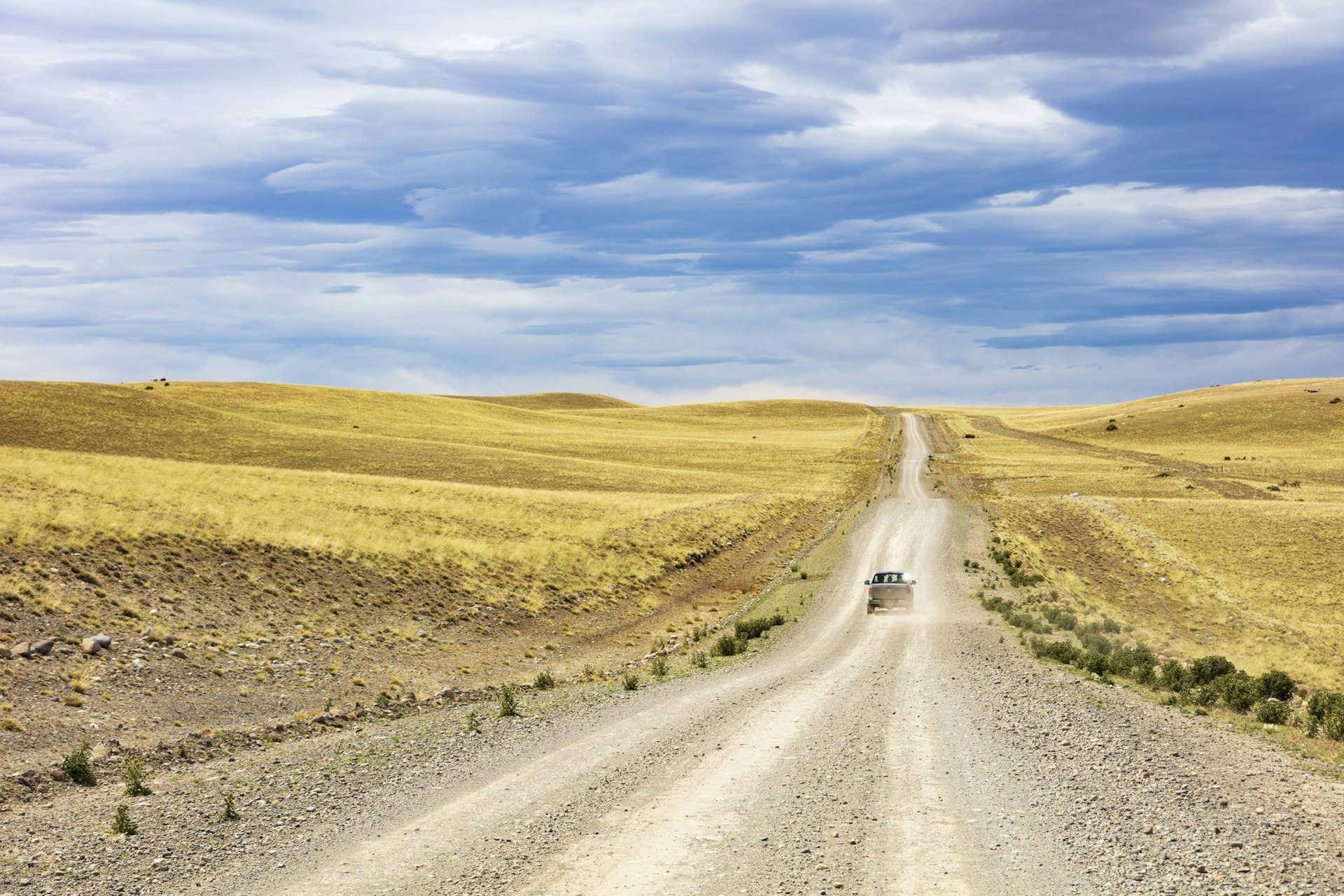
Ruta 40 is a legendary drive through Patagonia's iconic grassland
Start: El Calafate; end: Bariloche; distance: 1017 miles (1637km); allow two weeks
This is the other big one. Even bigger, in fact. Known fondly by Argentinians as La Cuarenta (The Forty), Ruta 40 has the same legendary status in Argentina as Route 66 in the States. Some 3246 miles (5224km) long, it stretches the entire length of Argentina, from Cabo Vírgenes in southeast Patagonia to the border with Bolivia. Even if you don’t drive the entire length you can experience the most remote and arguably most scenic section that’s particularly associated with Ruta 40’s rugged mystique, traversing the vast pampas (steppe) that stretch as far as the eye can see. But it’s not just endless grasslands, where you’ll spot occasional flocks of sheep and swift-footed ñandú (rhea); you’ll also never be far from the bristling of the Andes mountain range that marks the border between Chile and Argentina. Take your time (and not just because the southern section of Ruta 40 is still not completely paved).
Start in El Calafate – the jumping-off point for Argentina’s most accessible and spectacular glaciers, such as Perito Moreno , and head north, past the shores of the impossibly blue Lago Argentino and Lago Viedma. Detour alongside the second lake towards the Fitz Roy mountain range above the tiny trekking capital of El Chaltén before resuming your journey north. Places to stay are few and far between as you pass through small and dreary service towns – Gobernador Gregores, Bajo Caracoles, Perito Moreno (not to be confused with the glacier) and isolated estancias. Before reaching the last town, detour through a scenic valley to the Cueva de Las Manos – some of Argentina’s most spectacular cave art. A day’s drive beyond Perito Moreno, linger in the outdoorsy hub of Esquel and go hiking and kayaking, before finishing up in Bariloche (technically in the Lake District rather than Patagonia) with its picture-perfect setting on Lago Nahuel Huapi, surrounded by soaring mountain peaks.
Explore the region's Welsh culture on Ruta 25
Start: Esquel; end: Puerto Madryn; distance: 417 miles (671km); allow 3–4 days
This tour begins at unprepossessing little Esquel – a hub for hikers bound for the nearby Parque Nacional Los Alerces and kayakers seeking watery adventure on Río Percey and Laguna Terraplén – in the foothills of Argentina’s western Chubut province. It ends in Puerto Madryn , the jumping-off point for the Valdés Peninsula, renowned for its year-round marine life and seasonal whale watching. En route, you’ll stop at the small towns of Dolavon and Gaiman, the majority of whose residents claim Welsh ancestry dating back to the 1860s, when intrepid Welsh immigrants came to Argentina to protect Welsh culture and language that they considered to be under threat in their native Wales. Before you hit Route 25, it’s well worth detouring west from Esquel to Trevelin, another village with Welsh roots – 16 miles (26km) each way. All three villages have preserved the tradition of Welsh high tea, with tea houses offering cream tea with an assortment of cakes; Gaiman’s residents are particularly proud of Princess Diana’s tea-related visit in 1995. Welsh is still widely spoken (with Patagonian inflections) and has enjoyed a recent revival. Route 25 will take you across great swathes of pampas and through a particularly spectacular valley – Valle de los Altares – with red rock formations reminiscent of Utah or Arizona.
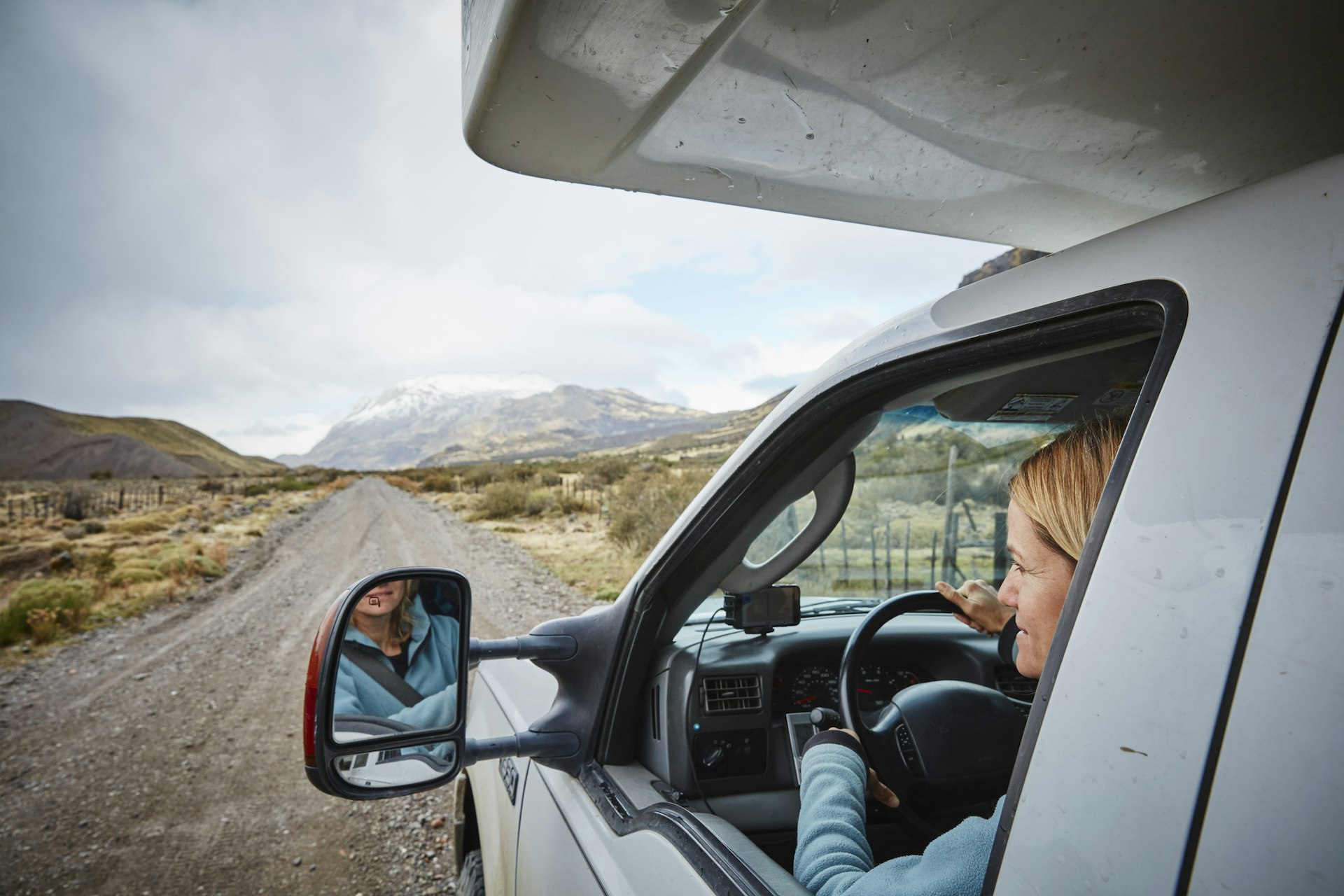
Wonder at the natural beauty and wildlife on the Valle Chacabuco drive
Start/end: Miradór Río Baker; distance: 91 miles (146km); allow 1–3 days
Near a scenic viewpoint overlooking Río Baker, some 11 miles (18km) north of the ranching town of Cochrane, the X-83 passes through Parque Nacional Patagonia and runs all the way to the border with Argentina. Part of the immense rewilding initiative by philanthropists Doug and Kris Tompkins, a formerly overgrazed sheep ranch, Estancia Chacabuco, was transformed into a national park of extraordinary natural beauty, once again populated by guanacos, flamingos, foxes, endangered huemul deer and the odd puma. You’ll want to take it slow, not just because it’s a narrow, bumpy gravel road with some blind corners, but also because you’ll want to absorb views of the scrubland covered hills, thickets of cypresses, the snow-peaked Jeinimeni mountain range in the distance, and the startling blue of meltwater lagoons and the Río Áviles. Wildlife sightings are common (watch out for flamingos by the roadside lagoons) and it’s worth spending at least a couple of days here, hiking the trails from the several trailheads that are some distance apart. If you have a sturdy vehicle, you can cross Paso Roballos into Argentina and connect to Ruta 40.
Follow the Valle de Río Palena to a bay full of marine life
Start: La Junta; end: Raúl Marin Balmaceda; distance: 47 miles (75km); allow 3–4 hours
Linking the little service town of La Junta, en route between Puyuhuapi and the Futaleufú Valley on the Carretera Austral, with white-sand beaches and a bay teeming with marine life, this narrow gravel road follows the perambulations of the twisting teal ribbon of Río Palena through stretches of open countryside and thickets of southern beech forest. Pull over at the rustic Termas del Sauce, 10 miles (17km) into the drive for a soak in the natural hot springs. Shortly before you find yourself driving one of the wide sandy streets of Raúl Marin Balmaceda – the Aysén region’s oldest village, founded in 1889 – you have to take a car ferry across the river. Until this new road was built, the village was among the most isolated in Chile. Local guides can take you dolphin- and sea bird-spotting by boat, or you can look for seals and cormorants while paddling a kayak. If you don’t want to retrace your steps, take advantage of one of the two weekly car ferries – one heading south to Puerto Chacabuco (for Coyhaique), and the other destined for Quellón, on the southern tip of the island of Chiloé .
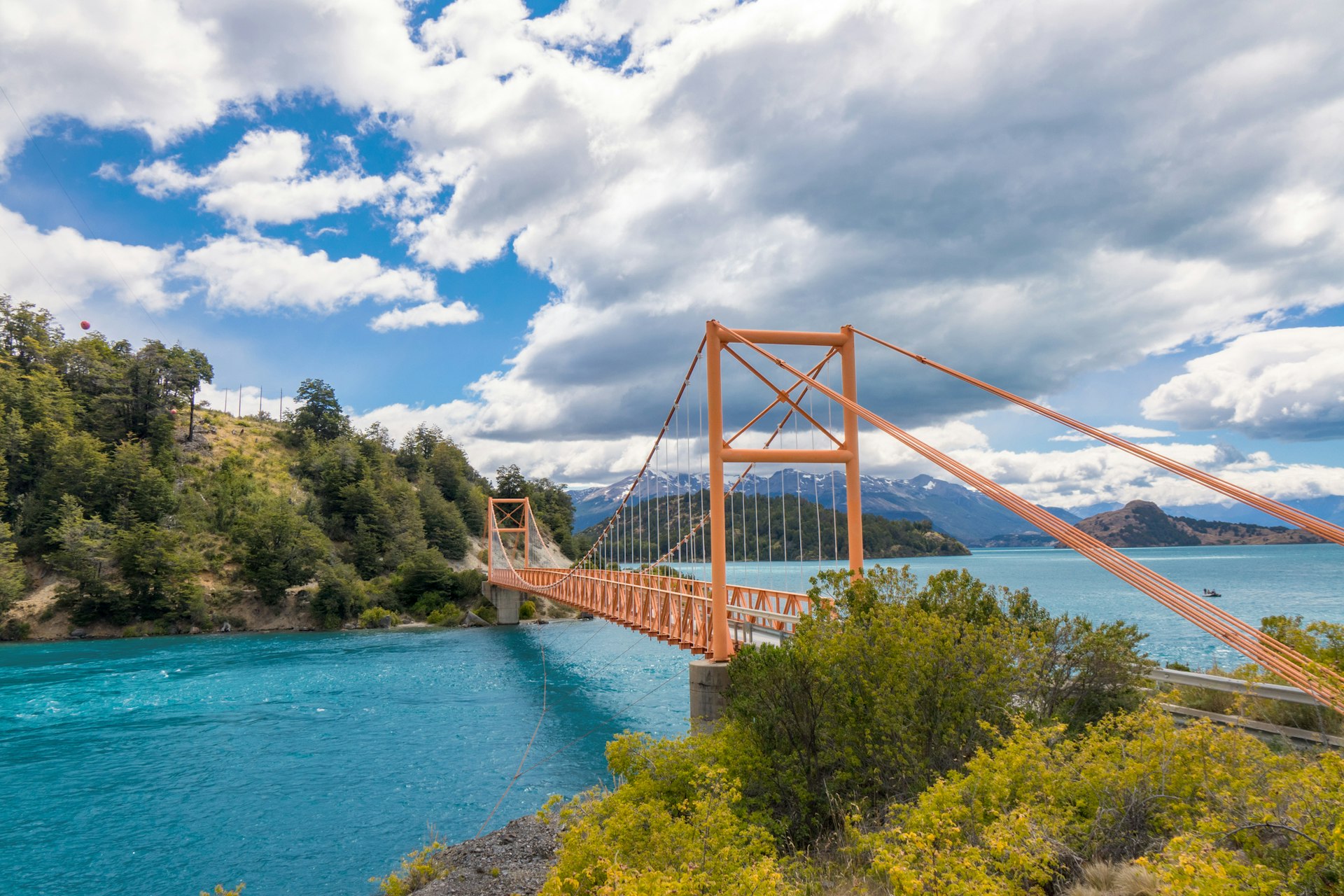
Lago General Carrera Route is a superb scenic side trip off the Carretera Austral
Start: Cruce el Maitén; end: Chile Chico; distance: 71 miles (115km); allow 3 hours
If you’re already driving the southern half of the Carretera Austral, this is a wonderfully scenic side trip from the fork in the road, and along the southern shore of the vast Lago General Carrera – an icy lake whose waters turn from sun-speckled turquoise to a deep sapphire, depending on the weather. Some 8 miles (13km) in, you breeze through Puerto Guadál – a sleepy village with unique accommodations nearby that make a good base for watery adventures – before the road becomes progressively narrower and more precipitous as it climbs steeply above the lake, winding its way around blind corners. Jaw-droppingly beautiful lake vistas open up around every blind corner, but be careful: there are no guardrails and in places, the road is too narrow for two vehicles to pass each other. It’s worth lingering a few days in Chile Chico, an agricultural town with a sunny microclimate; from November to January, gorge yourself on local cherries. From here, you can explore the ancient rock art and arid landscapes of Reserva Nacional Lago Jeinimeni, or press on across the border to Argentina and its iconic Ruta 40. Alternatively – for a shortcut back to the Carretera Austral, take the car ferry across the lake to Puerto Ibañez.
The End of the World is a wonderful one-day drive
Start: Punta Arenas; end: Ushuaia; distance: 388 miles (624km); allow 10–12 hours
This spectacular drive, done in a single day, takes in the navy-blue, wind-whipped Magellan Strait and the equally windswept wide open spaces of Chilean Patagonia before crossing the strait and traversing the vast island of Tierra del Fuego and finally arriving at Argentina’s southernmost city at the end of the world. The first part of the route skirts the strait, leaving behind the graceful stone mansions of Chile’s historic port of Punta Arenas. You enter a scrubland-covered landscape, dotted with occasional estancias before crossing the narrowest part of the strait by regular car ferry (watch out for black-and-white Peale’s dolphins!) to Tierra del Fuego (named after the smoke from the campfires of its indigenous inhabitants). A partially-paved gravel road takes you across an austere landscape of bare hills and yet more scrubland before breezing through the tiny mining town of Cerro Sombrero and eventually crossing the border to the Argentinean half of the island. You get expansive views of the Atlantic before passing through the towns of Rio Grande and Tolhuín before skirting the long narrow glacial lake – Lago Fagnano. On the final approach to Ushuaia , the landscape becomes far more dramatic and mountainous, and you’re finally greeted with the sight of Ushuaia, set against the backdrop of the snow-tipped peaks of the Cordillera Darwin, its steep streets resembling an amphitheater above the deep blue of the Beagle Channel. From here, there’s nowhere to go but back – unless you’re taking a cruise to Antarctica .
Drive the winding Valle Exploradores to an ice field
Start/end: Puerto Río Tranquilo; distance: 107 miles (172km); allow 4–6 hours
Another great side trip from the southern half of the Carretera Austral, this relatively new road has made Laguna San Rafael much more accessible. Until it was built a few years back, the only way to access the aquamarine lagoon, filled with house-sized chunks of ice, and to sail past the face of the ever-shrinking, 30,000-year-old San Valentín glacier, was by pricey catamaran trip from Puerto Chacabuco, near Coyhaique. This narrow, winding, gravel road takes you through the aptly-named Valley of Explorers all the way up to a boat landing, where you complete the rest of the journey to the glacier by inflatable Zodiac boat with the help of Puerto Río Tranquilo operators. But even if you don’t visit the San Valentín glacier, the drive itself is spectacular: it follows the bends of Río Exploradores through temperate rainforest of southern beech, thickets of ferns and nalca (giant wild rhubarb), passing waterfalls and ice melt lakes. It’s well worth stopping at Km 52 and paying a small entry fee to climb up to the Miradór Glaciar Exploradores for all-encompassing views of the northernmost ice tongue protruding from the Northern Patagonian Ice Field. To get up close to the glacier with crampons and an ice pick, make arrangements with El Puesto Expediciones .
You might also like: Tips for getting around Patagonia by plane, bus, car and boat Patagonia's national parks feel like the edge of the world 14 amazing places to go in Patagonia for adventure, wildlife and culture
Explore related stories
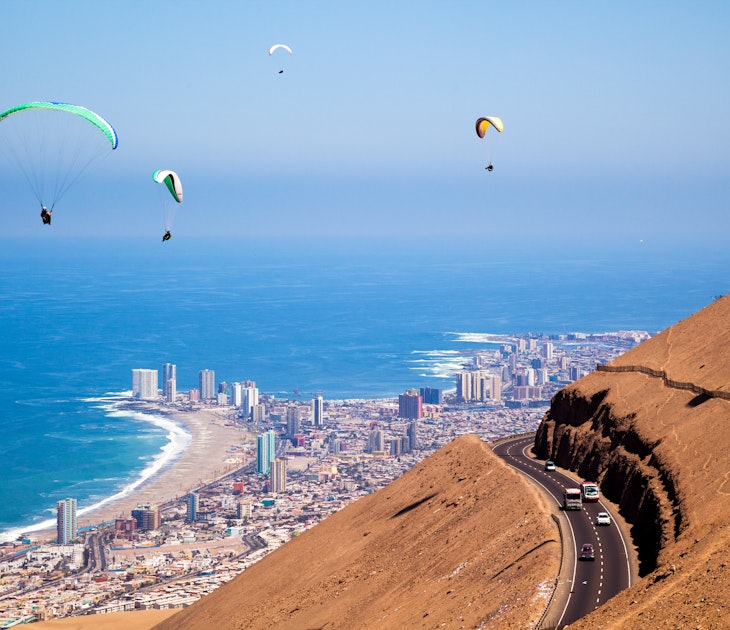
Astrotourism
Aug 22, 2023 • 7 min read
Chile's best road trips take in rolling vineyards, serene lakes, deep fjords, towering volcanoes and bone-dry deserts. Here are our top Chilean drives.
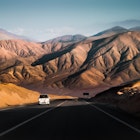
Mar 28, 2023 • 6 min read
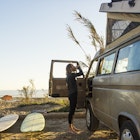
Mar 21, 2023 • 8 min read
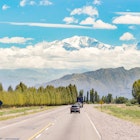
Dec 4, 2022 • 7 min read
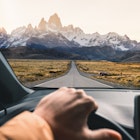
Nov 19, 2022 • 6 min read

Jan 18, 2022 • 13 min read
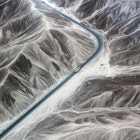
Jul 22, 2020 • 4 min read
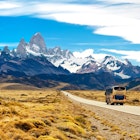
Nov 27, 2019 • 7 min read
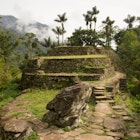
May 10, 2017 • 6 min read
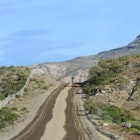
Feb 4, 2016 • 5 min read
The Ultimate Patagonia Guide
12/11/2018 by Kristin Addis Leave a Comment
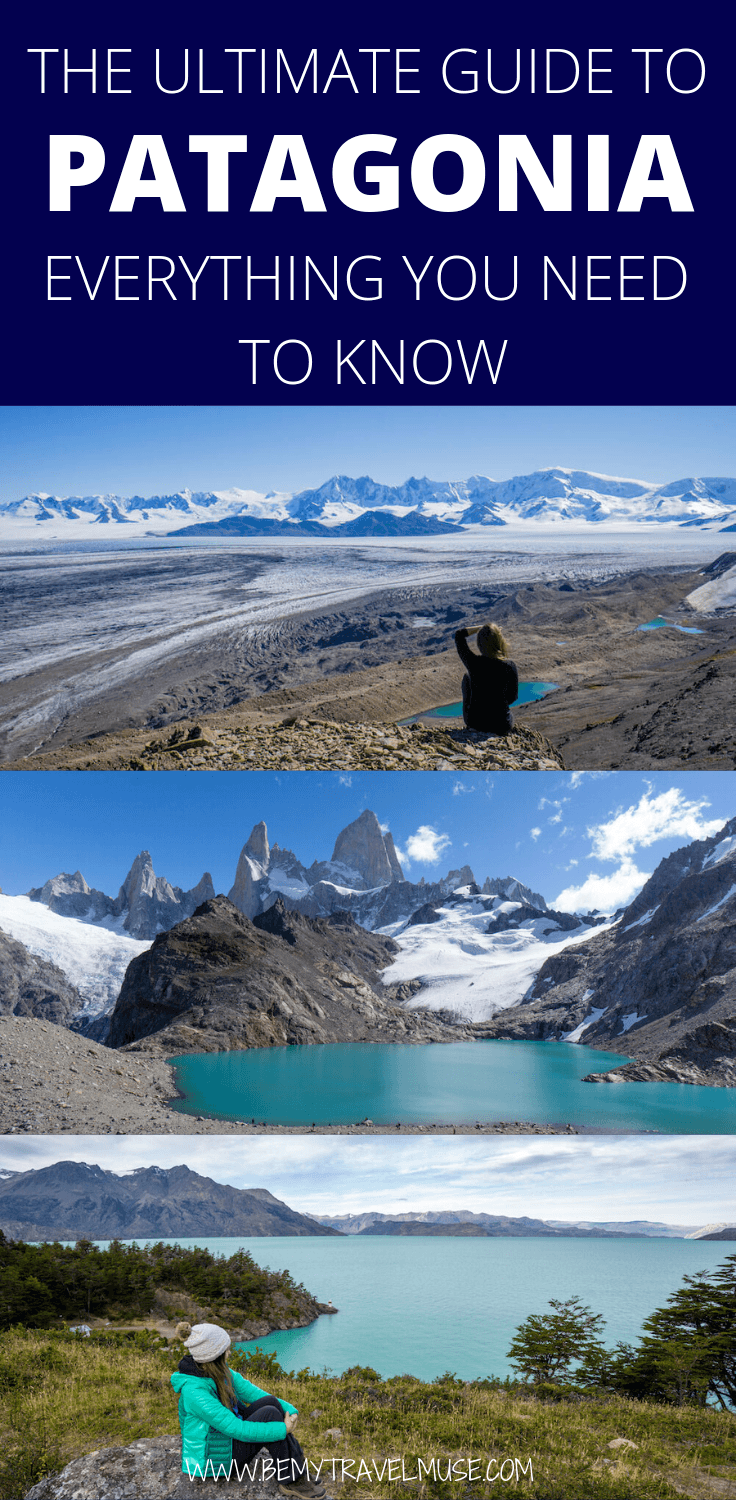
If you love the outdoors and rugged nature, it’s hard to think of a better destination than Patagonia. Split between Argentina and Chile, Patagonia is home to the world’s most beautiful hikes, is a mecca for rock climbers, and is even the jumping off point for Antarctica.
Considering it’s a fairly large region, it can be overwhelming to figure out when to go, where to start, and which activities to pack in. After spending two months there myself, I put together a comprehensive guide to give you an idea of what is a must-see, how to prepare, and when to go. Without further ado, here is my full Patagonia guide:
Table of Contents
When to Go and Weather
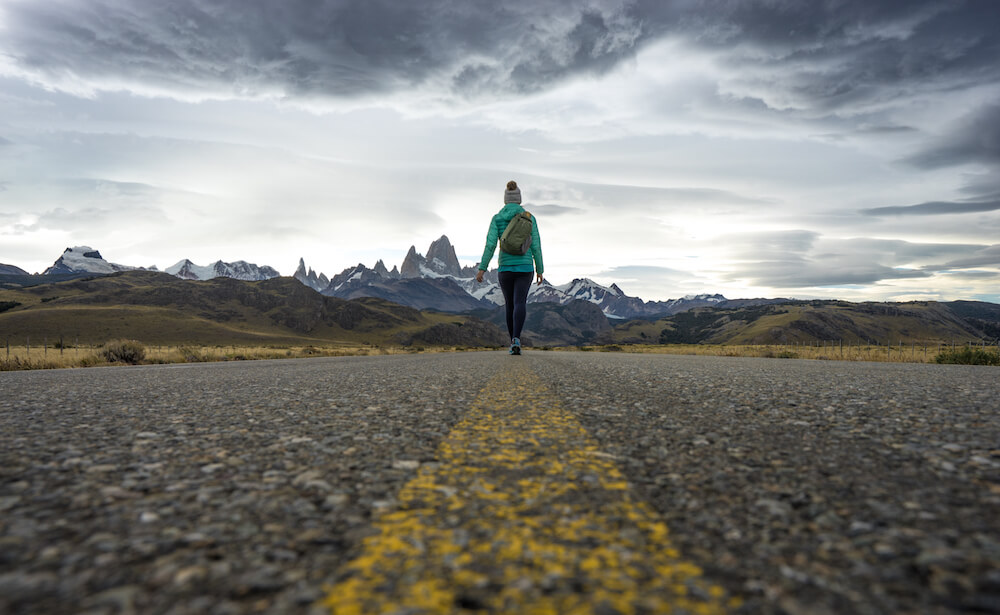
There is no wrong time to visit Patagonia, though you will have a lot more access to the trails and activities if you visit during the summer months. The highest season is between December and March, though November and April are lovely months as well. Just keep in mind that dependent on the year, November and April can be somewhat risky because of snow closing some of the trails, though the spring and the autumn are beautiful.
If visiting in the winter, prepare for a different experience. In Argentina’s Bariloche, it’s the perfect time to go skiing. In the rest of Patagonia, though, plan on sleepier towns, fewer open activities, and limited options for things to do.
Weather-wise, when it comes to Patagonia, the best thing to do is prepare for anything. The region is known for incredibly strong winds, sometimes reaching over 100 km/h, and storms that can materialize out of nowhere and disappear just as quickly. While it can be warm, don’t expect hot summer weather that you might encounter closer to the equator. When it comes to dressing for the weather in Patagonia, plan on wearing things that are waterproof, including your hiking boots, and prepare for the possibility of freezing temperatures.
How to Get to Patagonia
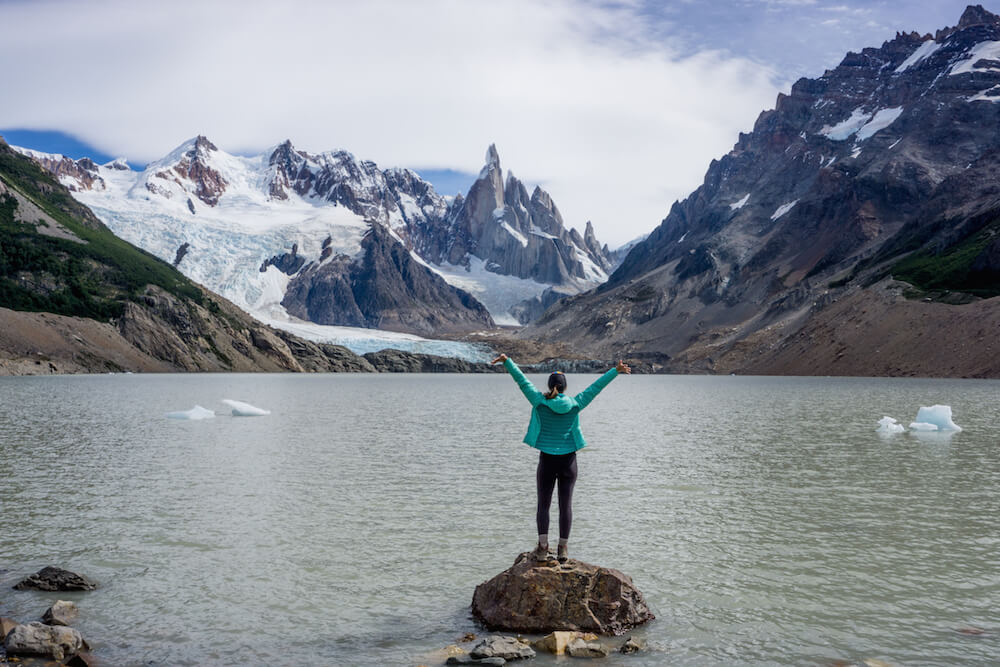
As anyone who fell in love with the concept of visiting Patagonia from 180° South knows, there are many ways to get there, including sailing. But for those of us who stick to more accessible means, the best way to get there is to fly or take a bus.
Buses in South America are generally quite comfortable and reliable. Though quality varies from company to company, most buses have the option to fully recline, called full cama , have bathrooms on board, and offer meals and snacks. As long-term buses go, South America must have some of the best in the world. If you can swing it, I recommend paying up for the nicest company. I usually find this out by doing a quick Google search for my intended route and reading reviews, or asking at my accommodation what they recommend. It’s usually possible to book your bus a day or two before at the bus station, or you can ask your accommodation to help you, or in some cases you can book online. The other option is flying.
The thing about South America air travel is, while traveling within a country can be pretty cheap, as soon as you cross the border the prices jump up like crazy. I started my Patagonia journey in Bariloche, Argentina, so the most logical place for me to fly into was Buenos Aires, and then to catch an onward flight from there. If you plan to stick to Chile, you will most likely be flying via Santiago.
That leads to the next question: Where should you start?
Where to Start in Patagonia
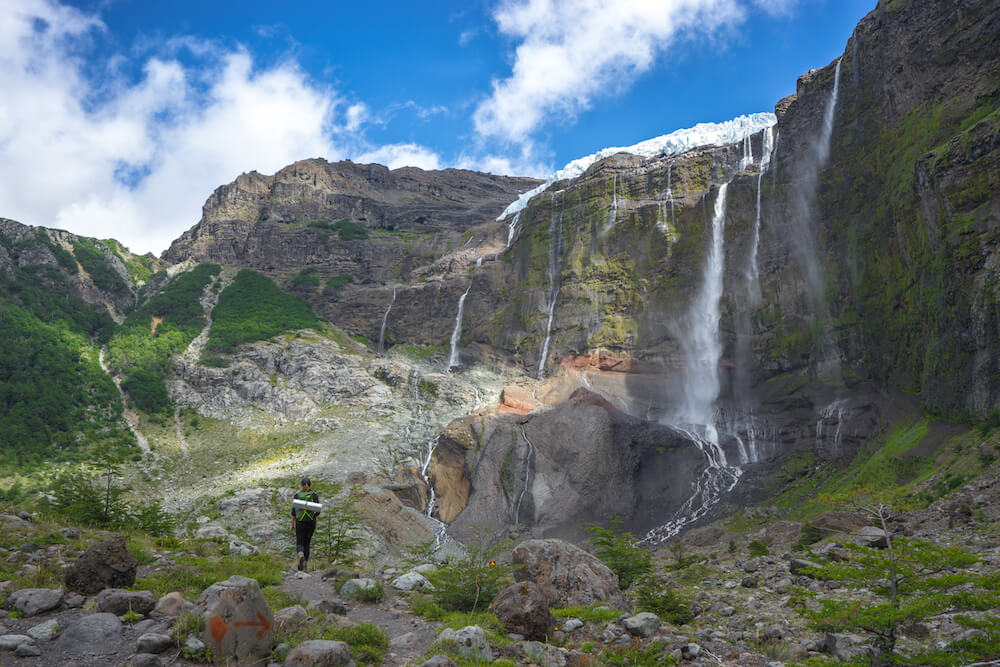
Should you begin your adventure in Chile or Argentina? The short answer is it doesn’t really matter. Bariloche in Argentina is considered a sort of gateway to Patagonia, and a great place to begin your journey if going from north to south, as I did.
Alternatively, you can fly from Buenos Aires down to El Calafate if you’re more interested in the Perito Moreno glacier, and checking out the national parks down south like Torres del Paine and the Fitz Roy in El Chaltén. Some choose to fly into the southernmost point, Ushuaia, and head north from there.
Alternatively, if traveling within Chile, it probably makes the most sense to fly directly to either Puerto Montt if traveling the Carretera Austral or Punta Arenas if you plan to go directly to Torres del Paine. Right now these might seem like a lot of names without any real idea attached to what they are, so let’s go into the best things to see in Patagonia in the next section to help you figure out where you’d like to go.
Where to Go in Patagonia
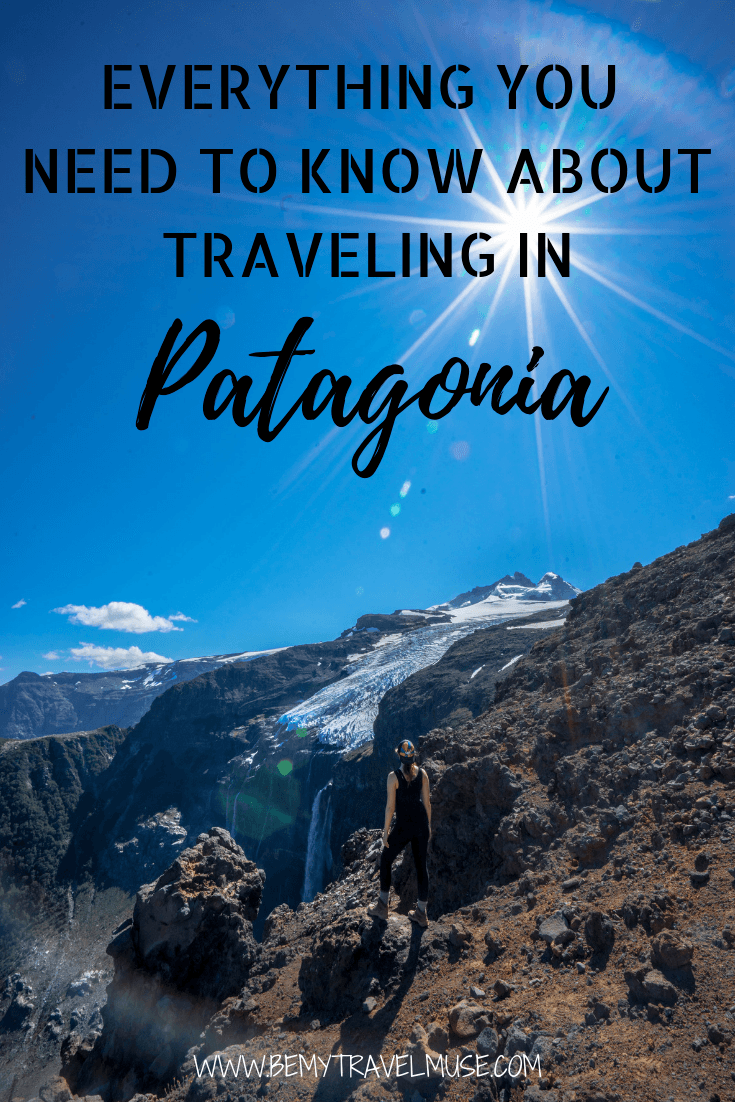
The following are some of the best things to see in Patagonia, in order of my personal favorites. While everyone is different, these are some of the most impressive things that I saw and that I think you’ll love too:
Torres del Paine
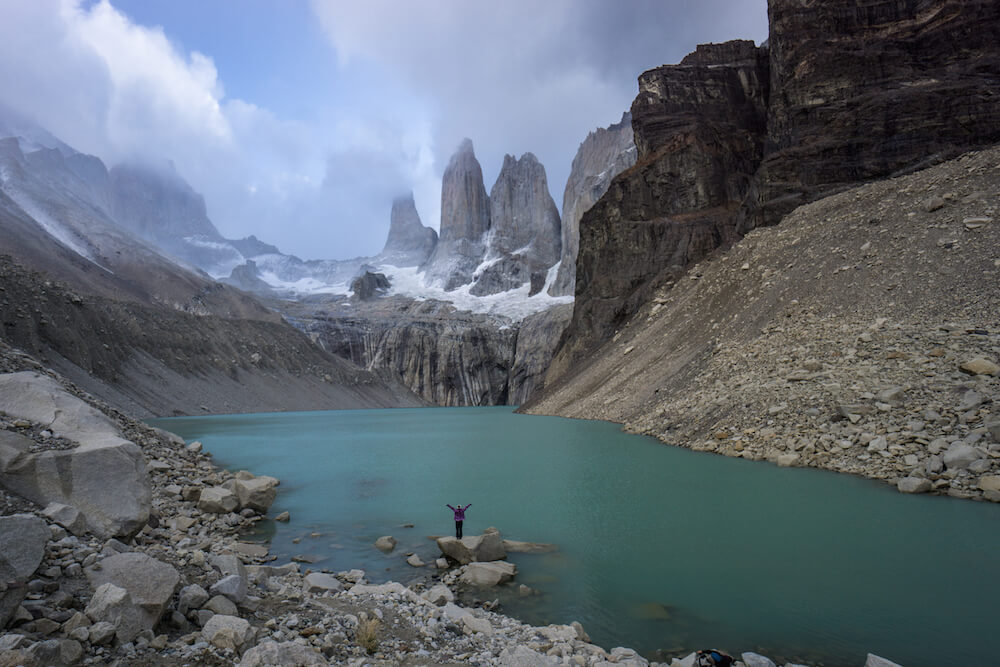
For many, this is the crown jewel of Patagonia. For those who love hiking and are ready to give it a full 5 to 8 days, I highly recommend backpacking through the O circuit in this national park. You’re guaranteed to see incredible mountain formations, the Southern Patagonian Ice Field, which is only visible from four trails in Patagonia, and the incredible Torres, a series of three towers over a minty green-colored lake. There are so many beautiful things in between that we don’t have time to discuss here but if you think you might want to do this, check out my guide on how to hike the circuit in Torres del Paine.
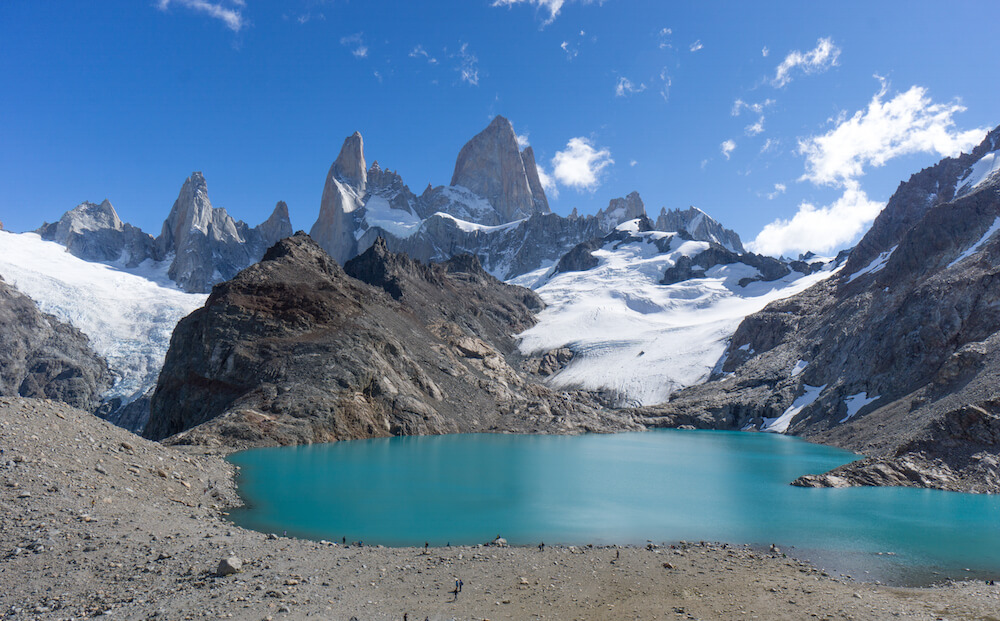
A strong answer to Torres del Paine, El Chaltén is Argentina’s trekking capital. To me, this little town has it all. It’s quirky, the food is good, and it is surrounded by some of the most beautiful landscapes in Patagonia. The creators of the Patagonia label agree, featuring the Fitz Roy on their label.
If you’re less interested in doing a multi-day hike, there are plenty of day hikes in the area, including the 4-day Huemul Circuit . This is one of the most beautiful, and most challenging hikes in Patagonia. There are several 1-day or 2-day options as well. You can read more about the best hikes in El Chaltén here.
The entire Carretera Austral (Ruta 7)
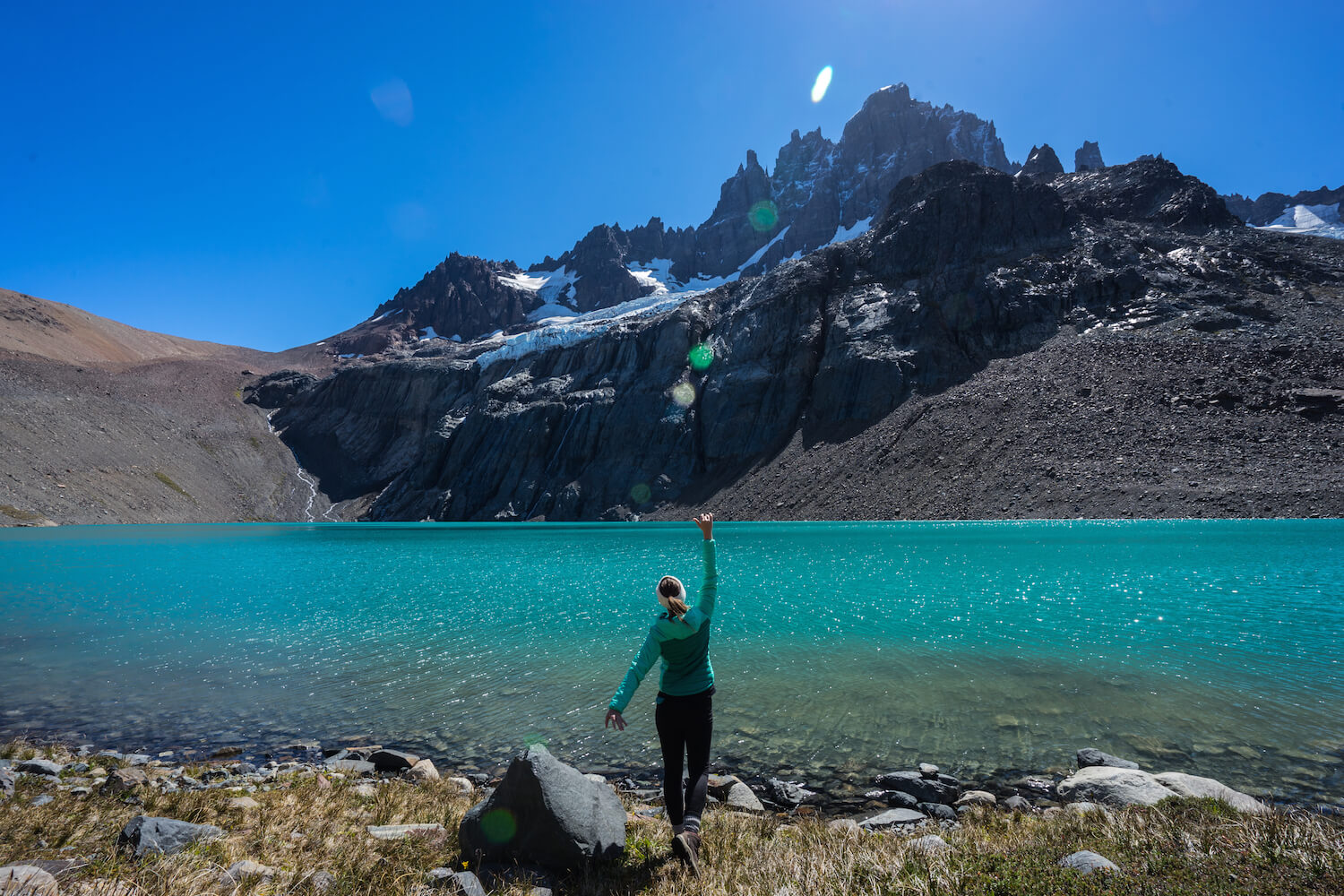
Though remote, this road trip is one of the best adventures in Patagonia. Most travelers do not go down the Ruta 7, opting for the more well-trodden, however more boring Ruta 40 instead. It gets you down south quicker but to me this is a mistake because the Carretera takes you through some of the most wild, remote, and gorgeous scenery. Think hanging glaciers , gorgeous fjords, and people living a way of life that is more reminiscent of the past. You can click here for my full guide on driving the Carretera. I would give this one at least two weeks if you can!
Perito Moreno
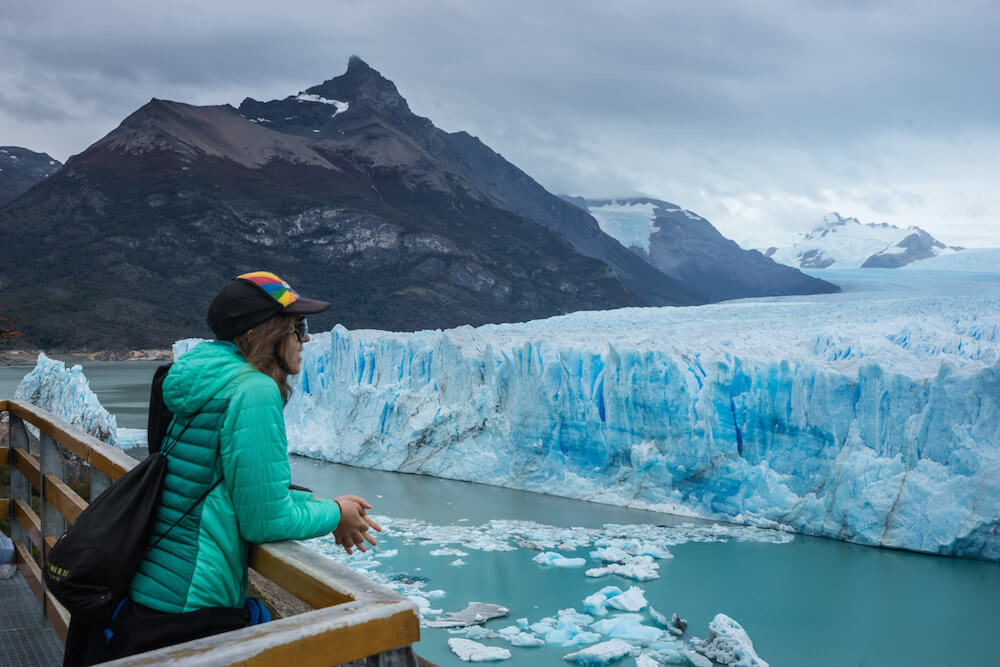
The Perito Moreno glacier is one of the few advancing glaciers in the world, and regularly makes the news for having ice bridges and regular cavings fall dramatically into the lake it sits on. When you visit, you can take a boat, and or walk the length of a wooden boardwalk to take in the sheer size of this incredible glacier. It’s both humbling and awe inspiring.
The glacier is about 30 km in length, 5 km wide and an average height of 73 m from the water to the top, though of course most of the glacier is underneath the water. Keep in mind that the glacier is not located in the town of the same name, confusing as that is. You will need to head to El Calafate to see it. The town itself is nothing to write home about, but the glacier is a must-see.
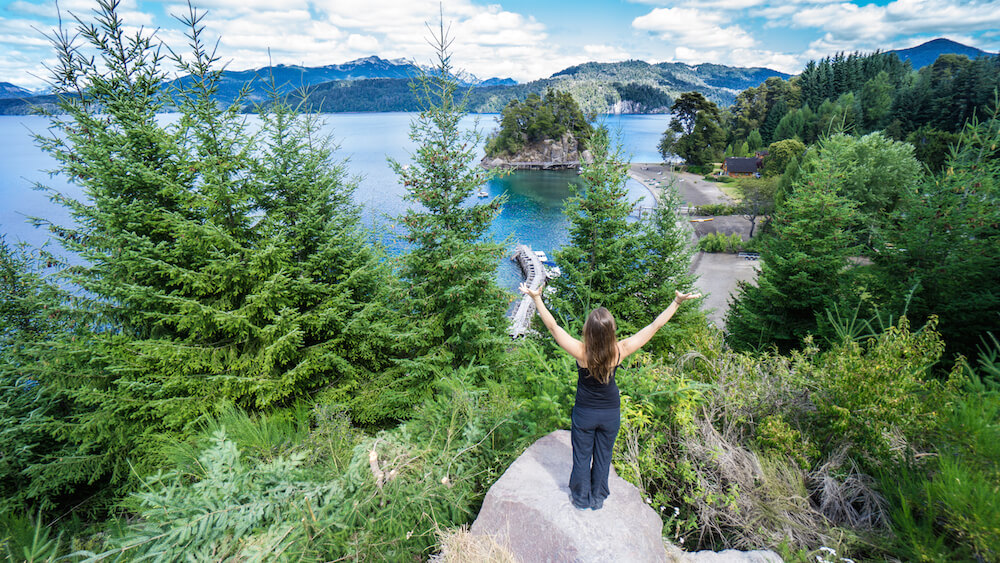
Bariloche is a town in the northern part of Argentinian Patagonia, which many consider the gateway of Patagonia. Reminiscent of Switzerland, the town is known for its chocolate and skiing. Although it’s touristy, some of the most beautiful lakes and hikes are located just outside of it. You can read more about the best things to do in Bariloche here.
Tierra del Fuego
Interested in seeing penguins? This is the perfect place to do just that. Book a day or a multi-day trip out to one of the islands to see the Emperor or Magellan penguin colonies.
What to Pack for Patagonia
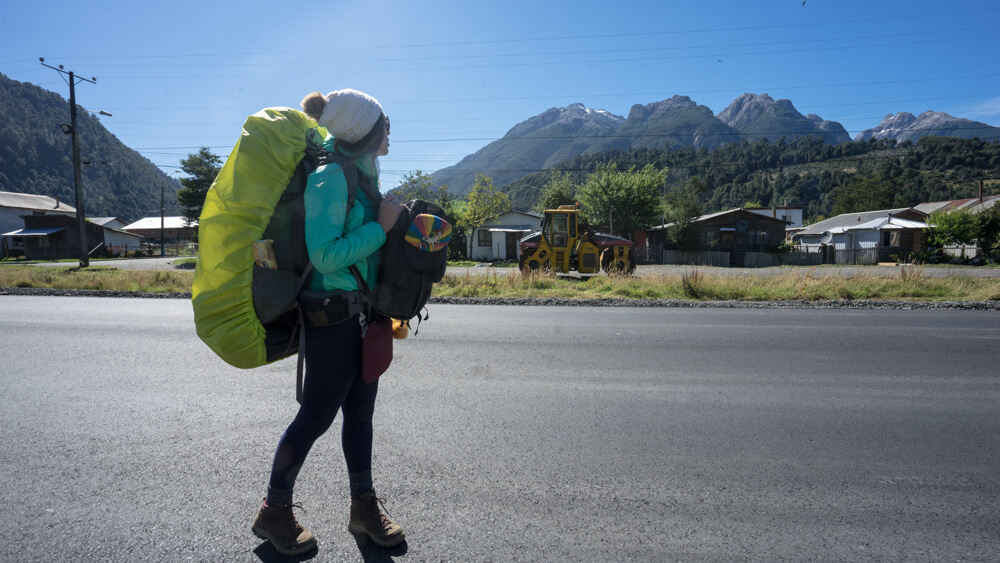
As mentioned in the weather section, Patagonia can experience many different kinds of weather all in one day. The most important thing is to bring clothing that will keep you comfortable. For me, that meant hiking boots that would keep my feet dry, layers so that I was never too hot or too cold, and waterproof gear, especially for hiking.
Prepare for temperatures that could remind you of a late winter, while allowing for the possibility of days that are more like a warm spring. You can read more about my ideal packing list here.
How to Prepare for Trekking in Patagonia
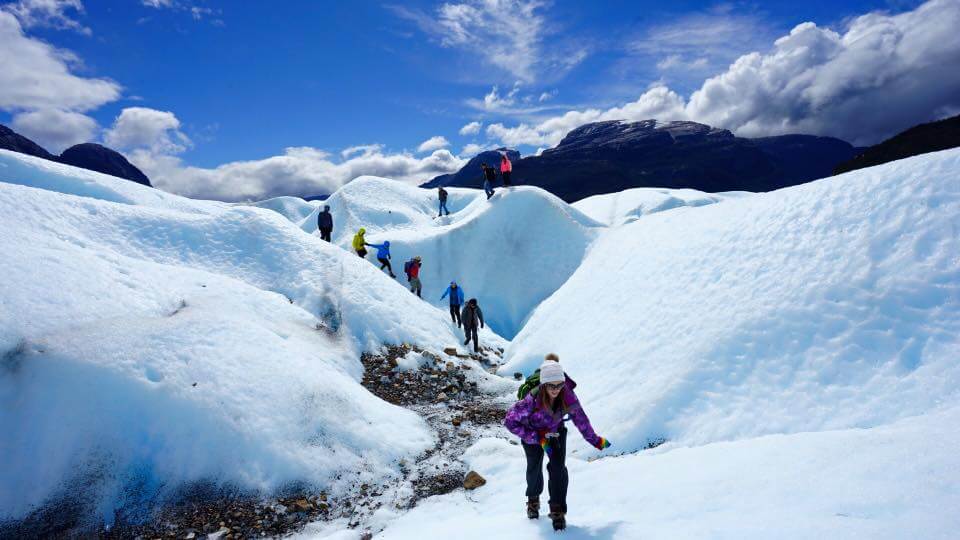
If you’re going to Patagonia and not planning on hiking then honestly what are you doing? All joking aside, I highly recommend working in plenty of hikes into your Patagonia experience because the most beautiful parts are only accessible by foot.
Hiking in Patagonia does come with its own set of challenges. You can plan on the occasional challenge, encountering types of trail that might be totally different from what you’re used to, and of course the winds. Some hikes can be done as day hikes and those are a little bit easier, but if you plan on backpacking, have a look at my guide to trekking in Patagonia for all of the tips on how to be prepared.
Additionally, these are the best hikes in Patagonia , ranging from half days to 8 days.
The Cost of Traveling in Patagonia
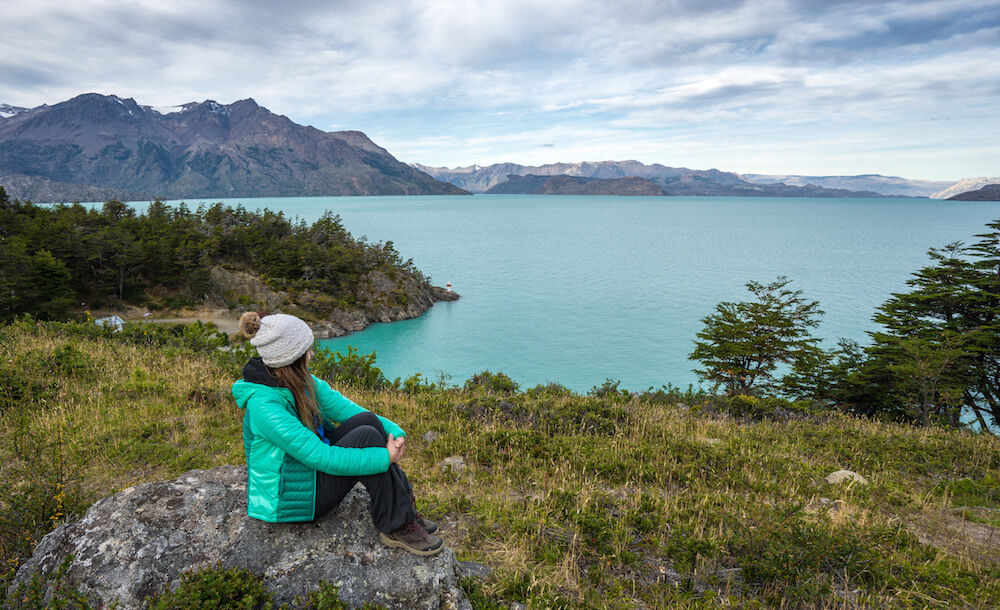
Your trip to Patagonia can be quite expensive or quite cheap depending on your travel style. In most of Patagonia, it’s possible to camp, hitchhike , and take buses. On the other side of things, you could fly more often, opt for higher-end accommodation, or even rent your own car to get around. It all depends on how much time you have, what your tolerance for discomfort is, and personal preferences regarding food. Would you prefer to eat out or are you willing to cook? Most accommodation is equipped with kitchens that are communal, so that makes it a bit easier if you are trying to save money.
All of that said, Patagonia is not a budget destination, per se. Chile has the strongest economy in South America and if you are coming from Bolivia or Peru, prepare to break your wallet open a bit more in Patagonia. My personal spend was just over $53 USD per day, which was a mid-range, modest budget. You can read more here about what went into that and how you can save.
The Best Itineraries for Patagonia
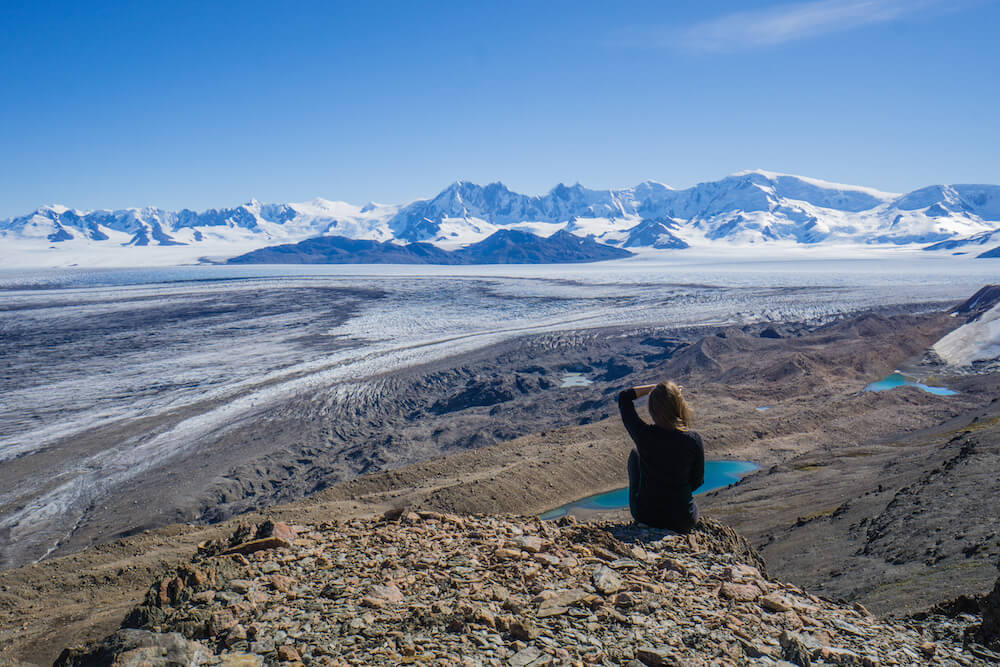
So with all of the information I’ve thrown at you, how can you plan out your perfect Patagonia trip? As this region becomes more popular, it’s becoming more important to book things ahead of time and have a rough idea of what your itinerary will be. For that reason I put together Patagonia itineraries from one week to one month with a few variations in between to help you get started.
I hope you’re ready for the adventure of a lifetime in one of the most beautiful parts of the world.
Patagonia is still one of my favorite trips after six years of traveling the world, and I can’t wait to go back.
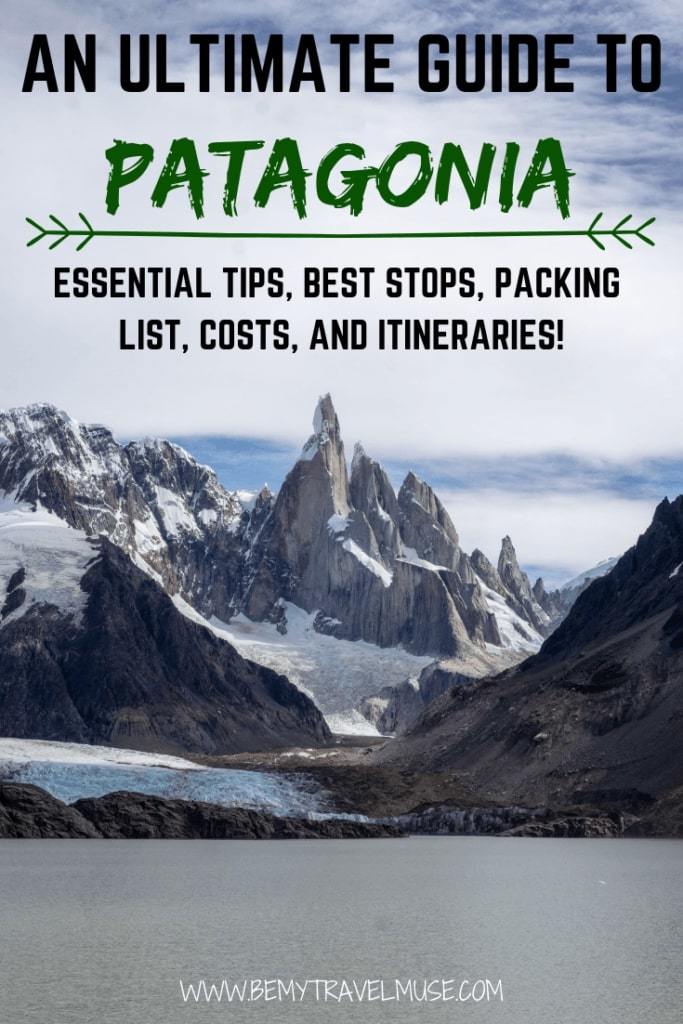
A Guide to Chile
A guide to argentina, about kristin addis.
Kristin Addis is the founder and CEO of Be My Travel Muse, a resource for female travelers all around the world since 2012. She's traveled solo to over 65 countries and has brought over 150 women on her all-female adventure tours from Botswana to the Alaskan tundra.
Leave a Reply Cancel reply
Your email address will not be published. Required fields are marked *
Save my name, email, and website in this browser for the next time I comment.
subscribe to our newsletter
This site uses Akismet to reduce spam. Learn how your comment data is processed .

How to Travel to Patagonia: The Essential Guide for Visitors
By Author Steph Dyson
Posted on Last updated: 24th January 2024
Turquoise lagoons perched beneath sharp, granite pillars and reached only by spellbinding hiking trails; chattering Magellanic and king penguin colonies; slow but magical boat journeys through untamed waters; glaciers towering higher than apartment blocks that calve house-sized bergs into icy waters below.
It’s fair to say that by choosing to travel to Patagonia, a wealth of unforgettable sights await.
Having found international fame as a truly beyond-the-beaten trail travel destination in recent years, Patagonia – a sparsely inhabited region that comprises the southern stretches of both Chile and Argentina – is increasingly finding its way onto travel itineraries and bucket lists .
Click to navigate this article:
A complete Patagonia travel guide
But, as with much of South America, this region can feel like a hard place to travel.
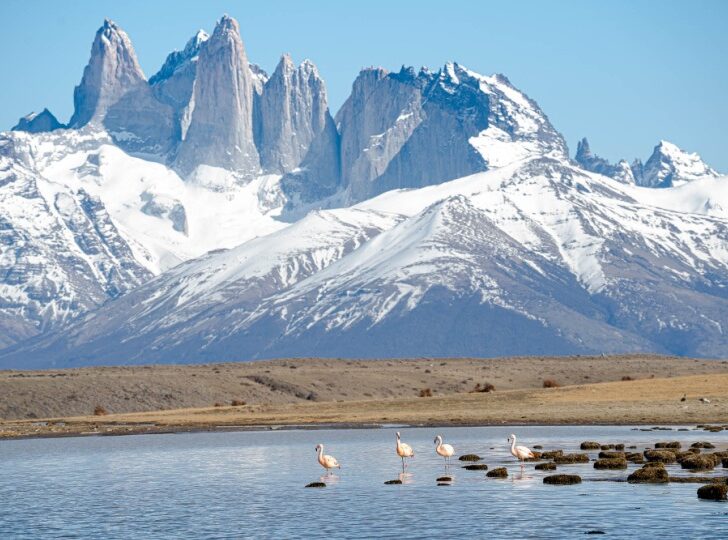
Planning a trip to Patagonia can be a challenge, due in part to just how big it is (at around one million square kilometers, it’s roughly the same size as Egypt or twice the size of Spain – although the exact definition of where Patagonia is is open to debate) and a lack of useful logistical information.
The vast majority of emails I receive each week revolve around questions about travel to Patagonia, with the nitty-gritty details of organizing a vacation in Patagonia or a longer-term trip something that my readers complain is hard to find online.
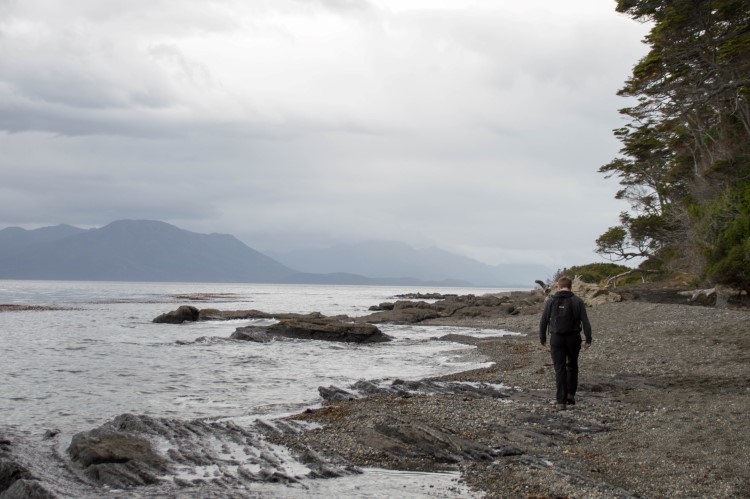
Patagonia is the place I’ve written most about over the last two years. I’ve spent around four months in the region, on three different occasions, the most recently on a research trip covering Chilean and Argentinean Patagonia for the new Moon Chile travel guidebook .
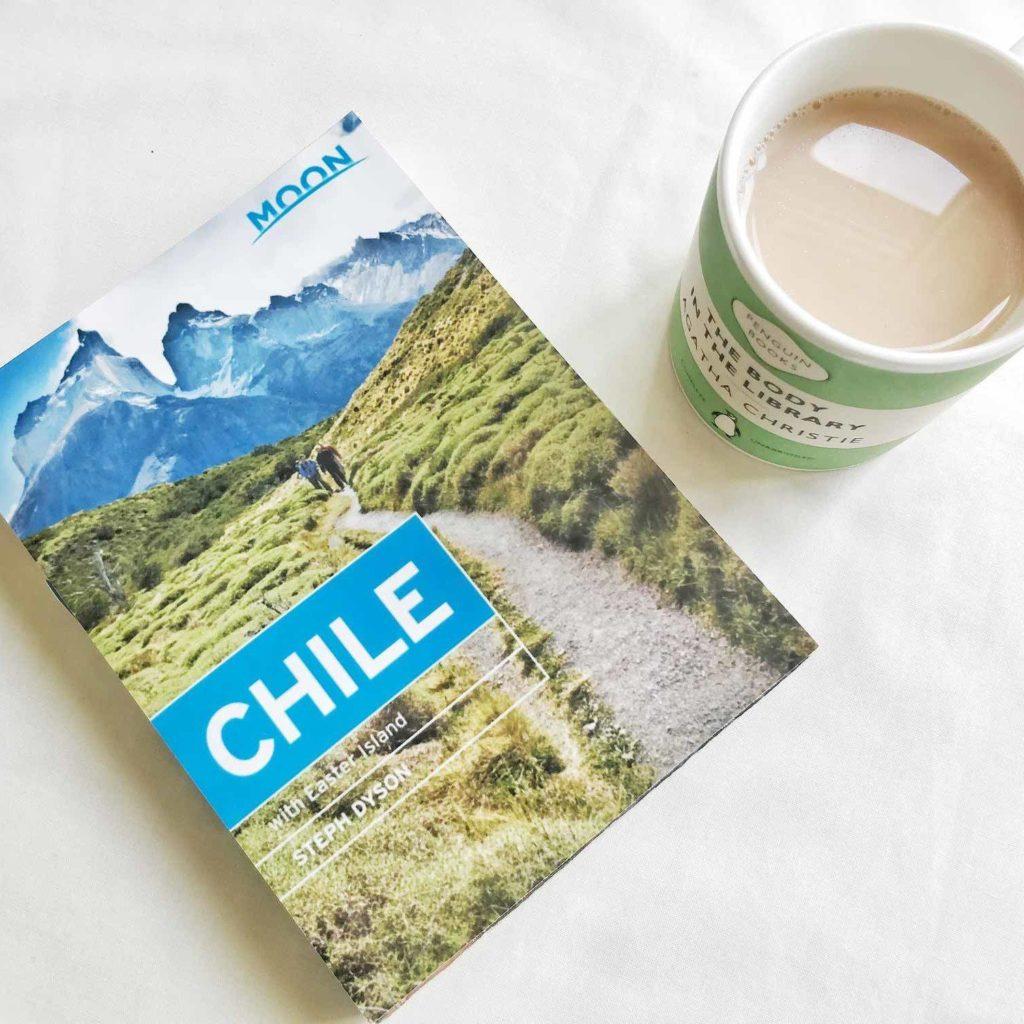
Need more inspiration?
You’ll find even more detailed itineraries, off-the-beaten-path gems, hiking routes and accommodation, restaurant and tour recommendations to suit your travel style in my brand-new guidebook, Moon Chile.
I’ve trawled the entire region, hiked many of its most acclaimed trails, slept beneath expansive, unpolluted night skies, and traveled by boat to almost the very tip of the South American continent.
All of this information has been used to inform this Patagonia travel guide and I’ve included links to plenty of other articles on Worldly Adventurer that have further details to help you in your trip planning.
In this guide, you can expect to learn about how to actually get to Patagonia , the best times and places to visit, and how to travel or backpack through the region on a budget . I’ve included as many details as possible to save you time, money, and stress on your trip.
If you’ve got questions, don’t hesitate to comment below or drop me an email .
Planning Your Trip to Patagonia?
Save time, stress & money with a customized travel itinerary planned for you by a Patagonia expert
What previous clients have said:
“It’s refreshing to find someone with insider knowledge that can take you off the beaten track, away from the mainstream. I particularly liked the detail you give; where to stay and your favourite places. We stayed in some lovely places because of your knowledge, places that we would probably never have found. I also liked the fact that we could ask you questions whilst on the move. Lots to like Steph!”
Why go to Patagonia?
Patagonia is a hiker’s paradise.
Not only do you have the now world-renowned trails of Torres del Paine National Park in Chilean Patagonia, but across the border, Los Glaciares National Park is becoming an increasingly popular destination, particularly as visitor numbers to the Chilean national park rise exponentially each year.
But Patagonia is more than just hiking trails. Road tripping in Patagonia either along the Carretera Austral (Chile), through the wildernesses of Tierra del Fuego (Chile), or down Ruta 40 (Argentina) are equally memorable experiences.
Hitchhiking is another way of not only exploring Patagonia on a budget but also offers up incomparable chances to meet local people.
And then there’s the wildlife, ranging from elusive big cats to humpback whales and penguins and the vast glacier fields, where you can hike over millennial ice or even drink it in a cold glass of whisky.
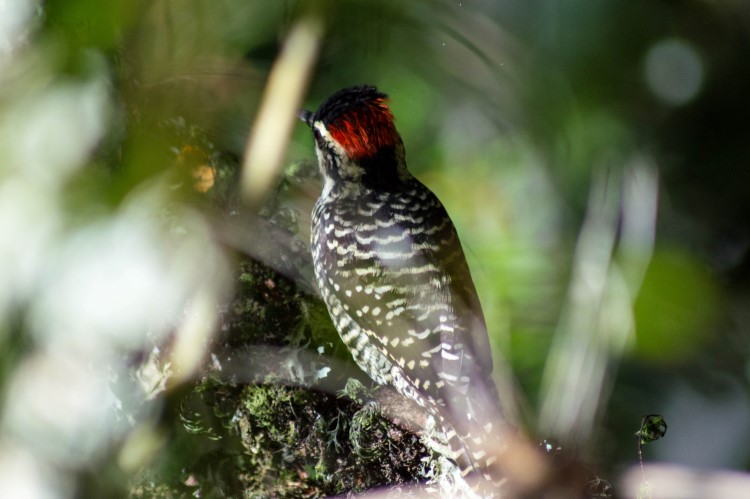
As a region so far removed from the rest of both Argentina and Chile, life here is unique. A local saying, “el que se apura en la Patagonia, pierde el tiempo”, sums up everything you need to know about Patagonia: “he who rushes in Patagonia loses time”.
To truly get under the skin of this region, time is what you need. At least a month is recommended for seeing as much of Patagonia as possible (you can read my recommended three-week and one-month itineraries here ).
However, a shorter trip still offers some time to experience the region (these one and two-week itineraries can help you plan).
Just be aware that you visit Patagonia at your peril; it’s the kind of place that you find yourself returning to over and over again.
As they say in Patagonia, if you eat the local Calafate berry (it’s particularly delicious in a pisco sour), then you’ll be back in the future.
How to plan your Patagonia trip
The following information is the product of months of travel in Patagonia and I hope you find it useful for planning yours!
I often get asked: “Do I need a tour to explore Patagonia?”. As the information below highlights, then no, it isn’t necessary to have a tour.
Argentina economy update
The Argentine economy is a huge mess at the moment, with inflation expected to hit 200% this year. Using Argentine pesos can therefore be a nightmare – and mean you lose a lot of money. The blue dollar (an unofficial exchange rate that gives you a better conversion than the official rate) is around, but if you want to avoid carrying lots of cash, you can now pay using your credit card and get an exchange rate similar to the blue dollar rate. You must choose to pay in Argentine pesos (not USD!) to secure this rate.
Both Mastercard and Visa give you what is called the MEP rate, which is almost as good as the blue dollar rate. Mastercard will charge you the official rate but refund you the money a few days later; Visa will charge you the MEP rate from the beginning.
If you do want to have some Argentine pesos for paying in cash (which I highly recommend as you will need them for some restaurants and attractions), it’s best to use Western Union, whereby you send cash to yourself using the Western Union app and then withdraw it in Argentine pesos from one of their branches in Argentina. Bear in mind, those in El Calafate and Ushuaia can run dry of notes, so it can be easiest to do this in Buenos Aires.
Additionally, you can bring USD (unmarked and untorn hundred dollar bills), which you can exchange at “cuevas” (unofficial exchange houses). These will be able to give you the blue dollar rate and any hotel owner will be able to tell you where your nearest one is. Souvenir shops in most parts of the country will be able to give you pesos in exchange for dollar bills – although they might not give you the best rate.
Avoid cash machines. Currently, the maximum withdrawal is the equivalent of $15 USD in Argentine pesos and it will cost you $10 USD in fees.
While Patagonia is vast and the logistics of organizing your trip can be complicated, ultimately it’s far cheaper to do so alone.
I have a whole section of the blog dedicated to Patagonia travel , so you can head there for further Patagonia travel resources and guides.
However, if you want more guidance, there are various options available to you.
Firstly, I offer a Patagonia trip planning service , where I plan your full itinerary for your vacation in Patagonia using my expert knowledge of the region . I’ve had 150+ happy customers since I started offering the service in 2018 and can guarantee that the service will save you time, money and stress.
If leaving all of the planning and booking to someone else sounds even better, I have partnerships with local companies where you can get a discount for being a Worldly Adventurer reader:
- Chile Nativo can organize private trekking tours in Torres del Paine National Park (great if you’re struggling to book accommodation last minute) as well as across Patagonia. They offer a 5% discount and you need to use the discount referral code “Worldly Adventurer” when you book. Find out more here .
- EcoChile Travel run fully custom-made tours across Chile and Patagonia, organizing every step of the process. They also offer a 5% discount to Worldly Adventurer readers; just mention us when you enquire!
When to go to Patagonia
Patagonia’s extreme southern location means there are certain months of the year when it’s a better time to visit. However, when to travel to Patagonia depends a lot on what exactly you want to do there.
Although the exact limits of Patagonia remain debated (as it’s a region shared by two countries and not a nation), it theoretically starts at 41˚ south (Bariloche, Argentina) and ends at 56.5˚ south (Águila Islet, Chile).
As a result, snowfall is relatively common during winter, while blustering westerly winds are an issue throughout the year.
Patagonia in December through February: the Austral summer
The most popular time to visit Patagonia is during the Austral summer. Visiting Patagonia in December, January or February is when temperatures are at their highest, peaking at around 22°C (72°F).
However, because of the winds, which, are strongest in the summer and can hit up to 120 km/h (74 miles/h), the temperature can feel a few degrees cooler.
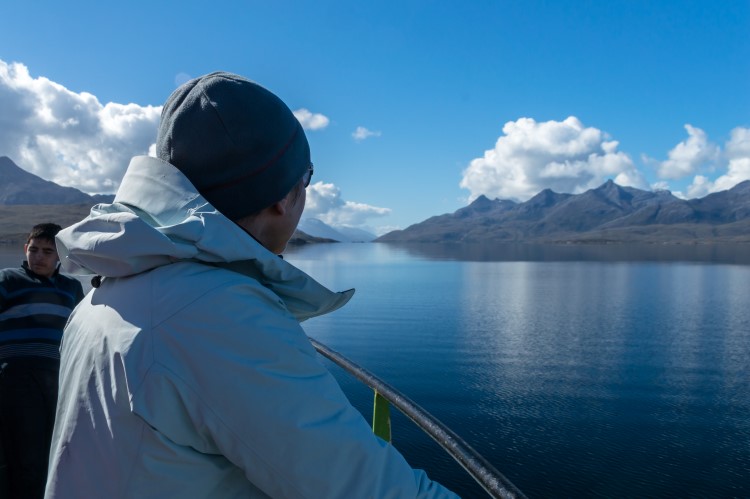
Weather systems also change rapidly, particularly in places such as Torres del Paine National Park, where you can often experience four seasons in one day: namely baking sunshine, cool breezes, rainfall, and even snow.
December, January, and February are also the best months for hiking and other outdoor activities in Patagonia, where it’s recommendable to wear layers, so you can layer up when it suddenly turns cold, or strip down if the sun comes out.
It’s also a good season for wildlife watching , as penguin colonies at Magdalena Island (Isla Magdalena) near Punta Arenas, Punta Tombo near Puerto Madryn and at Bahía Inútil on the island of Tierra del Fuego, arrive to nest from September until the end of March.
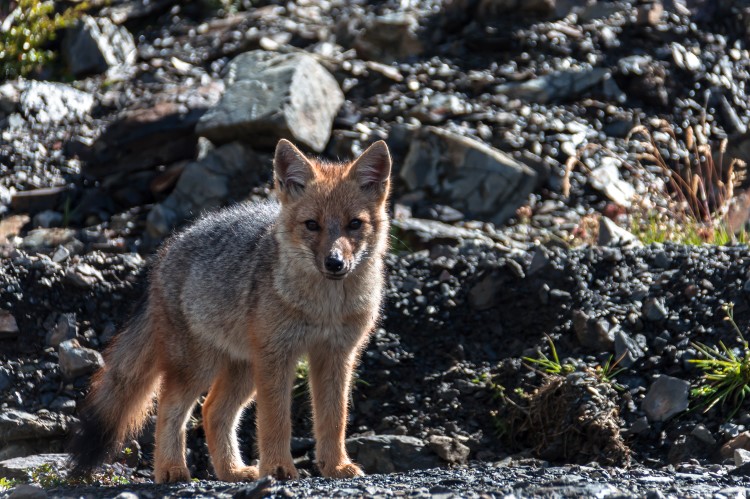
Humpback, minke and blue whales, Commerson’s and bottlenose dolphins, toninas (the Chilean dolphin), plus South American sea lions, and even otters can regularly be spied in the waters off the coasts of different parts of Patagonia.
Ferry journeys through Chilean Patagonia, such as the Navimag ferry from Puerto Montt to Puerto Natales or the boat between Punta Arenas and Puerto Williams offer excellent opportunities for seeing marine mammals.
However, these months are when everyone travels to the region. Patagonia in January and February is particularly busy , as this is when most Chileans and Argentineans have their summer holidays.
As a result, buses and accommodations get booked up, trails are heaving with hikers and for those who like a bit of flexibility in their travel plans, it can be difficult to visit the region without having reserved everything a good few months in advance.
Patagonia travel tip: You’ll need to book your accommodation and campgrounds in Torres del Paine, at least four months before you plan to hike. Reservations theoretically open in June/July but if you email the companies directly, you can often get a reservation before this time. Get more information about organizing the Torres del Paine W trek without a tour .
Patagonia in September to November and March to May: fall and spring
I’ll admit that I’ve never traveled to Patagonia during the peak Argentinean and Chilean summer season.
Instead, I’ve always opted for the shoulder season: September through November and March through April.
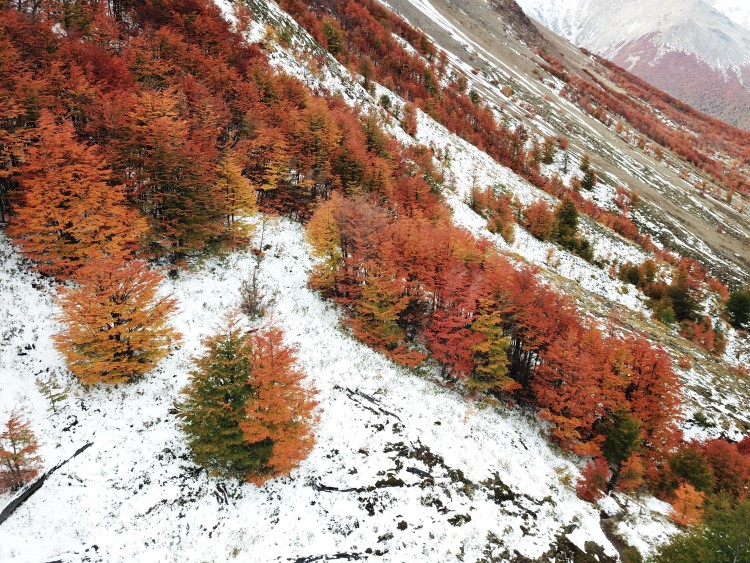
The reason for this is that for me, the magic of Patagonia is in its sense of remote, untouched wildness – something that gets lost when it’s full of other tourists.
Personally, I think that the best time of the year to go to Patagonia is in the months that bookend the Austral summer.
Temperatures are still pleasant enough: in spring (October-November) temperatures hit up to 18°C (64°F) , while in fall (March-April) they hover around 10°C (50°F), although in my experience, when the sun’s out, it can feel a lot warmer.
Overnight temperatures can drop to below freezing during these months, so bring plenty of warm clothing if you’re going to be camping.
During both, rainfall is a possibility – but this is Patagonia: rainfall is always a possibility!
September and May are months that I would avoid if you’re planning on traveling independently, however . Both are just outside of the typical shoulder seasons and few, if any, tourist facilities are open during these months.
In Torres del Paine National Park, for example, you must hire a guide if visiting in these months, while trails in many other national parks are closed due to snow. The Carretera Austral can also be tricky because of snowfall and ice on the road.
In spring , the landscapes awaken to the prospect of a new year, with plants and greenery covering much of the mountainous west of the region, while in fall , it’s a great time for photographers as the lenga and Southern beech forests that cover much of Patagonia turn golden and orange with the approach of winter.
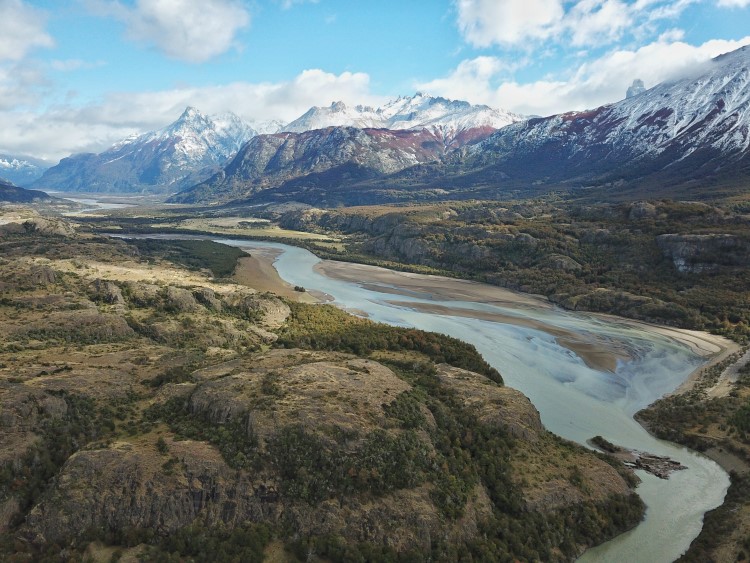
For both of these periods, crowds are fewer. Don’t underestimate the difference that this can make.
Following troops of hikers, 20-people deep, around the boardwalks of the Perito Moreno Glacier near El Calafate and elbowing them out of the way when you try and get a shot of the ice, isn’t personally my idea of fun.
Outside of peak season, accommodation and flights can sometimes be more inexpensive too and for the former, it’s often possible to even turn up without a reservation.
However, bear in mind that particularly in September and October and April and May, many restaurants, hotels and hostels, and tour agencies close for the year, meaning you might find yourself out of luck.
This is particularly the case along the Carretera Austral, where many of the towns seem to go into hibernation outside of summer.
Buses also return to their infrequent schedules, making a trip only possible if you have the time to wait sometimes a few days for the next one.
It’s also worth noting that winter sets in fast. On my first visit to Patagonia, I vividly remember shivering next to a wood fire in a hostel in Coyhaique despite wearing practically all of my clothes, so pack for cold weather.
Patagonia travel tip: Every time you arrive in a new place, you’ll want to double-check the bus timetables to be sure of when the next one is leaving. In spring and fall in Patagonia , you may find yourself waiting at least a few days for the next departure.
Patagonia in June through August: the Austral winter
Patagonia in winter is a unique experience. Heavy snowfall coats much of the region, particularly on the Chilean side, lending the landscapes a magical atmosphere.
As a result, traveling to and around Patagonia can be very difficult and you’ll find buses and even flights into the region have reduced timetables during the months of June through August.
What’s more, many hostels and hotels don’t have central heating and it can get seriously cold at night, even with access to a wood fire or gas heater.
Hiking trails can also end up being closed as snowfall and challenging conditions make them unsafe. In the last couple of years, Torres del Paine National Park has opened to tourists in winter, however, you must go with a licensed guide.
If you are planning to visit the park during this months, I recommend checking out Chile Nativo, a local operator who organize winter W treks (and give Worldly Adventurer readers a 5% discount if you use the discount referral code “Worldly Adventurer” when you book).
Los Glaciares and Tierra del Fuego national parks in Argentina are both open throughout the year, also be aware that trails often close due to snowfall and you can expect temperatures to drop to only a little above freezing during the day.
National parks along the Carretera Austral on the Chilean side are hard to visit in winter, mainly because much of the road (particularly south of Coyhaique) is unpaved and can be problematic after heavy rainfall or snow. Many of the lodgings outside of Coyhaique close for the winter.
However, Bariloche (theoretically the very northern tip of Patagonia – although this is debated ) is home to Cerro Catedral , Argentina’s top ski resort – and one of the best in South America. It has modern runs and lifts and plenty of places to stay during the night. You can expect snow between mid-June and September.
Patagonia travel tip: If you are planning on traveling to Patagonia in winter, I would recommend booking accommodation in advance, or at least confirming that hotels and other lodgings are available, as many close down when they don’t have guests.
How to get to Patagonia
The easiest way of getting to Patagonia depends on the side you wish to visit. Because Patagonia isn’t a country but a region divided between Argentina and Chile, there are various different ways to get to Patagonia.
Getting to Chilean Patagonia
Chilean Patagonia can be a bit of a headache to reach. Why?
You’ll notice if you look at the south of Chile on a map that the north of Patagonia (connected by the Carretera Austral – a road that goes from Puerto Montt in the north to Villa O’Higgins in the south) is actually separated from southern Patagonia by the Southern Patagonian Icefield.
This means it is virtually impossible to travel by road from Puerto Natales directly to the Carretera Austral.
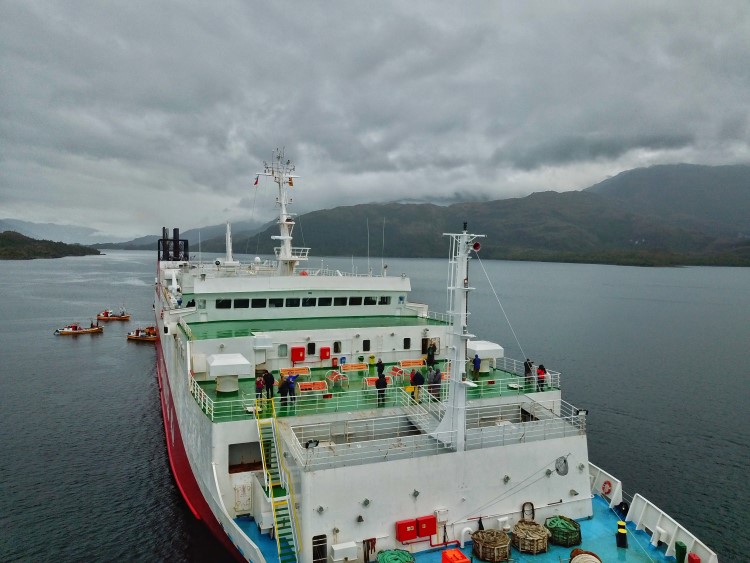
There are ways – which I’ll discuss shortly – but bear in mind that if you want to see both Northern Chile and Southern Chile, you will likely have to cross into Argentinean Patagonia at some point. More on that later!
There are various different options for getting to Patagonia from Santiago. The cheapest way to get to Patagonia from Santiago is generally by flying – although it depends on when you book.
I always recommend comparing prices on Skyscanner.com and then booking directly with the companies themselves. This means that if there’s an issue with your flight or the timings need to change, you can communicate directly with the company rather than an intermediary.
Where to fly into Chilean Patagonia
Flying into Patagonia is often cheaper on the Chilean side than in Argentinean Patagonia, as Chile has more budget airline carriers.
- Jetsmart is the most inexpensive, although it operates fewer flights than other companies and you often have to pay an additional fee for hold baggage.
- Sky Airline is medium priced and has regular flights into Patagonia and again, you pay more for hold luggage.
- LATAM generally has the highest frequency of departures but they’re generally far more expensive. Hold luggage is normally included in the price.
Northern Chilean Patagonia and the Carretera Austral
The easiest way to get to Northern Patagonia and the Carretera Austral is via a flight or bus from Santiago to Puerto Montt (PMC) , the latter a city located just at the top of the Carretera Austral and from where there are plenty of onward connections south. The flight time to Puerto Montt is around one hour and 40 minutes.
Flights to this part of Patagonia are operated multiple times daily by the country’s three main providers: Jetsmart (very cheap but with fewer flights), Sky Airline (medium priced and with regular flights), and LATAM (highest frequency of departures but expensive).
Often, if you book at least a month in advance, you can get flights for as cheap as $15,000 CLP ($23 USD) one-way.
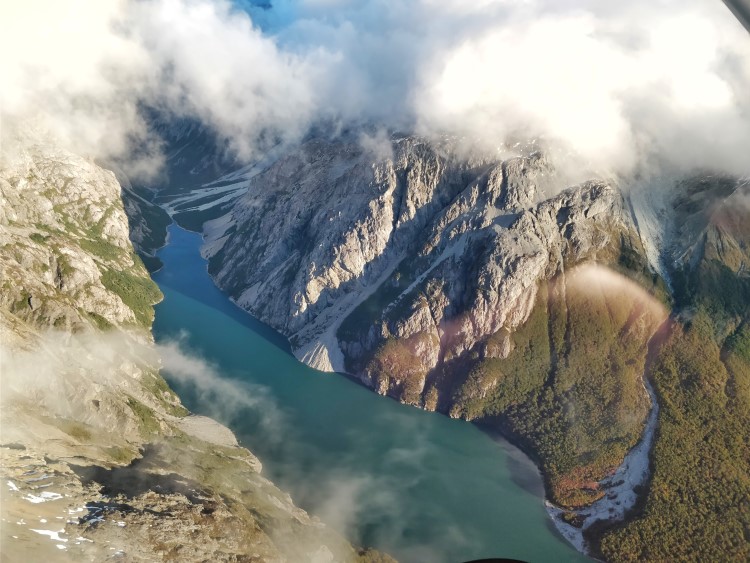
All three companies also fly directly from Santiago to Aérodromo Balmaceda (BBA), an airport about an hour’s drive south of Coyhaique , although Jetsmart only flies to this part of Patagonia between November and February (for prices as low as $7,000 CLP ($11 USD)). Be aware that the cheaper tickets may include a layover.
With the other two flight companies, there are only departures from Santiago to Aérodromo Balmaceda a few times per week and you can expect to pay anywhere between $22,000 CLP ($35 USD) and $66,000 CLP ($104 USD) one-way. Booking in advance is recommended for getting cheaper flights.
Southern Chilean Patagonia
Southern Chilean Patagonia has one main airport, Aeropuerto Presidente Carlos Ibáñez (PUQ ), a thirty-minute drive from the city of Punta Arenas .
There are normally around four flights daily in summer operated by LATAM, Sky Airline, and Jetsmart, and slightly fewer outside of these peak months, and the flight time to Punta Arenas is just under three hours 30 minutes from Santiago.
Flights can cost as little as $38,000 CLP ($49 USD) and up to $150,000 CLP ($164 USD) one way.
From the airport, it’s possible to pick up a direct bus to Puerto Natales or a transfer service into the city. The latter costs around $7,360 CLP ($8 USD) per person; minivans wait outside the arrivals hall for passengers.
A taxi should charge between $10,000 CLP ($11 USD) and $14,000 CLP ($16 USD).
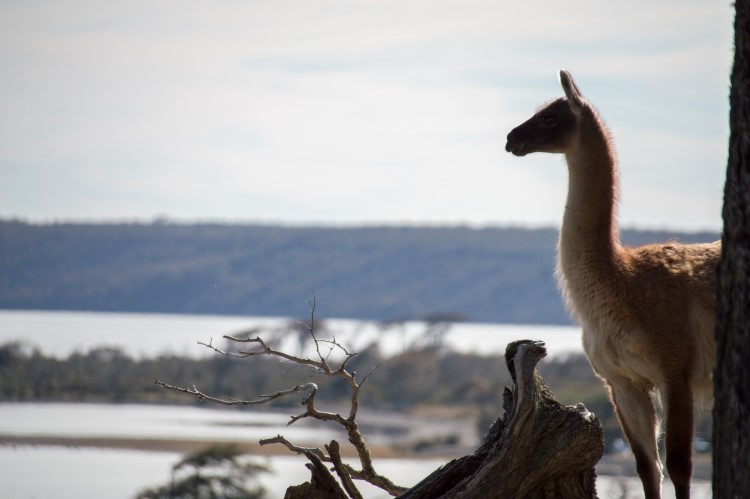
Aeropuerto Teniente Julio Gallardo (PNT) is a smaller airport, six kilometers north of Puerto Natales.
LATAM have flights here from Santiago between two and four times weekly in the months of November through March; flights are more expensive than to Punta Arenas and start at around $73,000 CLP ($80 USD) one-way.
A taxi into Puerto Natales from the airport should cost around $10,000 CLP ($11 USD).
If you’re hoping to continue your journey into Northern Chilean Patagonia and the Carretera Austral, there are weekly flights (normally on Tuesdays) operated by the small airline Aeriovías DAP between Punta Arenas and Aérodromo Balmaceda (near Coyhaique).
Patagonia flights tip: Try and book Chilean flights directly through the Chilean version of the LATAM website, not the US version. You’ll notice substantial savings if you do this; unfortunately, the Chilean website is only in Spanish.
How to travel to Patagonia, Chile by bus
Northern patagonia.
Buses can often be the cheapest way to get to Patagonia, although flights can be even better for your budget if booked in advance.
To get to Patagonia from Santiago , take a bus from the Terminal Sur in Santiago, where you can find overnight buses to Puerto Montt ($18-27,000 CLP ($20-30 USD) semi-cama , $78,000 CLP ($85 USD) salon cama ; £95,000 CLP ($104 USD) Premium , thirteen hours), from where buses and boats continue south.
Food is not normally included in this service and if you want a better night’s sleep, shell out the couple of extra thousand pesos for a cama seat (a 160˚ recline and with more legroom) or the Premium (the new 180˚ recline) rather than for the semi-cama service (a 140˚ recline).
There are generally working toilets on board, although aim to not reserve a seat right next to one! It’s also wise to take hand sanitizer and spare toilet roll as hygiene can leave a lot to be desired.
You can generally find space on buses the day before or even the day or travel, although be aware that holidays and between January and February see a lot more locals using the buses – and fewer tickets available.
Southern Patagonia
It used to be possible to travel by bus to Southern Chilean Patagonia. Services used to leave Puerto Montt and travel the entire length of Patagonia (normally via the Argentinean side) and arrive in Punta Arenas , 32 hours later. They used to cost about the same amount you’d spend on the same plane journey. I’m not surprised that they’re no longer operating!
Patagonia bus travel tip : Most bus companies in Chile are bringing themselves into the 21st century with bus timetables published online and where you can even book tickets in advance. The main bus companies with the most frequent departures along this route include: Turbus , Pullman Sur, and Cruz del Sur . Websites that collate the bus information and through whom you can also book include Bus Bud , which is also in English, unlike the others.
How to travel to Patagonia, Chile by boat
My personal favorite way of traveling to Patagonia is by passenger and cargo ferry. Similar to arriving by bus, this way of getting to Patagonia is the slow journey – the contemplative way of travel that mimics the arrival of the first indigenous and colonial people to the region.
There are two main companies offering ferry journeys into Patagonia:
The Navimag
The Navimag has one route: departing from Puerto Montt to Puerto Natales (four days/three nights; starting at $590 USD for bunk in shared cabin).
I’ve taken this journey and would strongly recommend it.
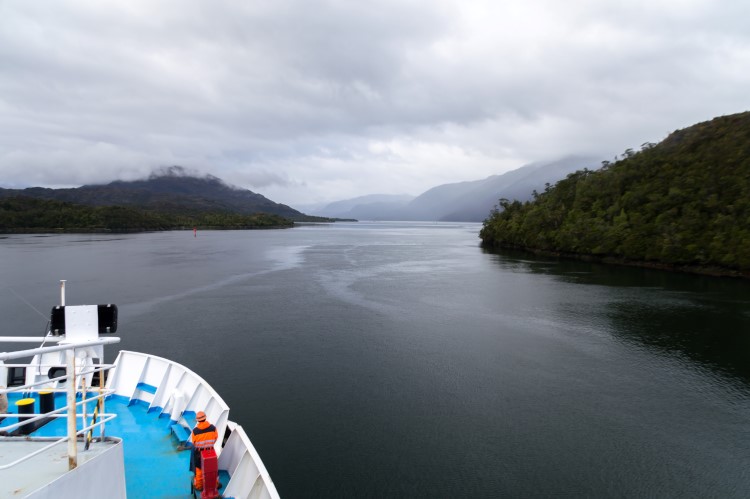
You can read up on the Navimag ferry to Puerto Natales for more price, itinerary, and general information plus a review of the experience.
The ferry is a cargo ship primarily and has been adapted to carry tourists so don’t expect a five-star, luxury cruise; instead, see it as a truly Patagonian adventure.
The Naviera Austral
The Naviera Austral has a selection of ferry routes that are used predominately by local people traveling around Northern Patagonia.
One leaves from Quellón in the south of Chiloé and travels down to Puerto Cisnes , about halfway down the Carretera Austral. This ferry leaves from Quellón on Tuesdays (6pm), Thursday (6pm) and Saturdays (5pm). You can buy tickets online or in their Puerto Montt office (Angelmó 1673). There are no cabins on this ferry, instead you purchase a chair, and you’ll need to bring your own food or make the most of the (limited) on-board cafeteria. It costs $29,000 CLP ($31 USD) for foot passengers and $170,000 CLP ($184 USD) vehicles and takes 12 hours.
Another ferry leaves from Quellón in the south of Chiloé and travels down to Puerto Chacabuco , further south along the Carretera Austral. This one stops at several small ports en-route, making it the ultimate ferry into Patagonia if you want to see the isolated fishing communities that still populate the edges of the fjords.
It’s cheap ($45,000 CLP ($48 USD) foot passengers, $290,000 CLP ($315 USD) per vehicle), long (31 hours), and you get a seat in the boat rather than a bed in a cabin. It leaves from Quellón on Thursdays and Sundays at 1am and again you can buy tickets online or in their Puerto Montt office (Angelmó 1673).
Read more about the Naviera Austral (scroll to about half-way down the article). Food is not included and you’ll want a sleeping bag or blanket to keep you warm overnight.
Patagonia boat travel tip : If you’re planning to travel to Patagonia in peak season (December through February), you’ll want to make reservations for these two ferries at least a couple of months in advance , particularly if you’re planning on taking a vehicle (both have space for cars). Bring plenty of warm, waterproof layers for time spent out on the deck watching the scenery and the wildlife pass; whenever you travel, the weather is likely to be changeable and often cold.
Getting to Argentinean Patagonia
Traveling to Argentinean is theoretically easier than getting to a lot of parts of Chilean Patagonia.
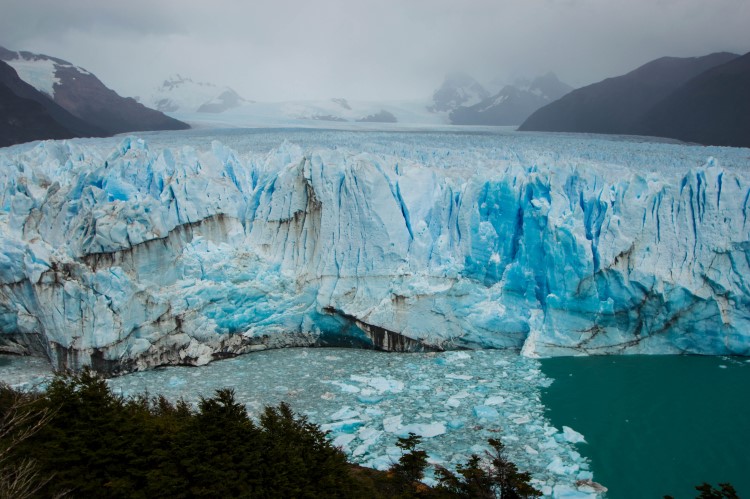
Well, on the eastern side of the Andes Mountains, the terrain is mostly pampa (flat grasslands). On the western side, it’s full of dense forests, mountains, glaciers, and fjords.
This means that bus travel from further north in Argentina is straightforward (if mind-numbingly long). Flights are also possible but generally more expensive than on the Chilean side.
Where to fly into Argentinean Patagonia
Unfortunately, flights in Argentina are expensive. However, if you’re on a short timeframe, they’re certainly worth it as they’ll save you from spending hours on the bus that could be used enjoying Patagonia.
From Buenos Aires to Patagonia you have three options of airports:
Aeropuerto Internacional Teniente Luis Candelaria (BRC) receives some five flights daily from the national airport, Aeroparque Jorge Newbury (note this is a different place than the international airport in Buenos Aires).
Your cheapest option is with Fly Bondi , a new low-cost airline in Argentina, who have two daily flights starting from $50USD. JetSmart often have similar prices.
Aerolíneas Argentinas , who are rubbish (they’re known for being delayed and losing luggage), also run this route and are the most regular carrier operating flights from Buenos Aires to Patagonia. LATAM also offers this route. Flight times are normally two hours.
El Calafate
Aeropuerto Internacional de El Calafate Comandante Armando Tola , just outside of El Calafate also has flights from Buenos Aires. The journey takes just short of three hours and costs from $114 USD one-way. LATAM also has flights but for around double the price.
Aeropuerto Internacional Malvinas Argentinas , a 15-minute drive from Ushuaia . Aerolíneas Argentinas and LATAM have five direct flights from Aeroparque Jorge Newbury to Ushuaia. One-way tickets cost from $140 USD.
From all three cities, there are plenty of overland travel routes into other parts of Patagonia (including the Chilean side) and flights.
Patagonia flights tip: Try and book flights directly through the Argentinean version of the LATAM website, not the US version. You’ll notice substantial savings if you do this; unfortunately, the Argentinean website is only in Spanish.
How to get to Argentinean Patagonia by bus
From Buenos Aires to Bariloche and the northern tip of Patagonia, it’s a 22-hour journey that can cost from $38,000 ARS ($108 USD).
From Bariloche, it’s a further 26 hours to 23 hours to El Chaltén ($62,000 ARS ($177 USD), where there are onward connections to El Calafate and Ushuaia.
Cama suites are the top of the range and include a 180˚ recline – like traveling business class. Cama ejectutivo or cama (160˚) and semi-cama (140˚ with little to no legroom) are the other two options and are progressively cheaper – and less comfortable.
When you book, double-check how far your seat reclines as these definitions vary between companies. A blanket and pillow are normally provided for cama suite and cama ejecutivo services.
Food (and even wine!) is normally provided on long bus journeys through Argentina but definitely check this when you book to avoid getting caught out – it can be a long time before you find yourself at a place where you can buy any food!
As with all bus journeys around Patagonia, take toilet paper and hand sanitizer as the bathrooms likely won’t be in the state that you would hope.
You can buy bus tickets in bus terminals in all cities, as well as online at Omnilíneas and Plataforma 10 . It’s worth booking a couple of days in advance for long-distance services.
Patagonia bus travel tip: Check before you buy how long the journey is as this can vary significantly between companies. Longer times indicate more stops along the route – something that can be a pain when you’re trying to sleep. It is worth noting that the Argentinian Peso exchange rate is very changeable so do double check prices closer to the time of your trip.
The best way to see Patagonia
So you’ve traveled to Patagonia; now what?
As we’ve already discussed, Patagonia is one hell of a big region and getting around (and planning how you do it) can feel like another mammoth task.
Let’s break it down into the easiest and best ways to see and get around Patagonia.
Best way to travel around Chilean Patagonia
Bus is the easiest way to get between cities in Southern Chilean Patagonia and also to cross into Argentina.
- Punta Arenas to Puerto Natales: Buses leave hourly between the two cities ($8,000 CLP ($13 USD); 3hrs 15mins) Bus Sur and Buses Fernandez have their own terminals in Punta Arenas and operate out of the Terminal Rodoviario bus station in Puerto Natales.
- Puerto Natales to Torres del Paine National Park: Buses leave at 7.30am and 2.30pm from the Terminal Rodoviario bus station in Puerto Natales and take two hours 15 minutes to reach the first stop in the park ($8,000 CLP ($13 USD)). For more information, read this guide to Torres del Paine and the W hike .
- Puerto Natales to El Calafate: Buses leave at least once daily for El Calafate in Argentina, operated by Bus Sur , COOTRA and Turismo Zaahj . The journey costs $17,000 CLP ($27 USD) and can take anywhere between five and eight hours, depending on the queues at the border.
- Punta Arenas to Ushuaia: Bus Sur have three direct services per week to Ushuaia.
In Northern Chilean Patagonia , buses generally leave every day between towns and cities, although buses traveling longer distances (such as directly between Coyhaique and Futaleufú or Chaitén), often only have once-weekly departures.
That said, it’s normally possible to hop on a bus traveling to the next town (and then onwards) or hitchhike .
The main bus companies in Northern Chilean Patagonia are:
- Kemelbus : daily services between Puerto Montt and Chaitén.
- Buses Cárdenas (tel. 9/4268 0432): daily services between Futaleufú and Chaitén.
- Buses Becker : destinations from Coyhaique north.
- Aguilas Patagonicas (tel. 67/2112 88): daily services from Coyhaique to Cochrane south and from Cochrane to Villa O’Higgins (via Caleta Tortel).
Read on for more information about bus transport along the Carretera Austral or get tips about hitchhiking safely in South America .
Patagonia bus travel tip: Book at least the day before, even for short journeys, between December and February. You may need to even book a few more days in advance between Puerto Natales and El Calafate. Recorrido and Voy Hoy can be useful for finding up-to-date bus timetables.
Some of the activities in Patagonia that I’ve most enjoyed have been the ferry journeys. Aside from the Navimag and Naviera Austral services into Patagonia, there are also a handful of boats that ply the waters around Patagonia.
The Yaghan: Punta Arenas to Puerto Williams
Off all the boat trips I’ve taken in Patagonia, I can honestly say that the TABSA-operated Yaghan ferry from Punta Arenas to Puerto Williams was my absolute favourite.
This 32-hour journey is aboard a converted cargo ferry that sets sail twice weekly from the Terminal de Ferry Tres Puentes in Punta Arenas, navigating south through the Strait of Magellan, into the labyrinthine, green-drenched Chilean fjords before joining the Beagle Channel and docking finally at Puerto Williams.
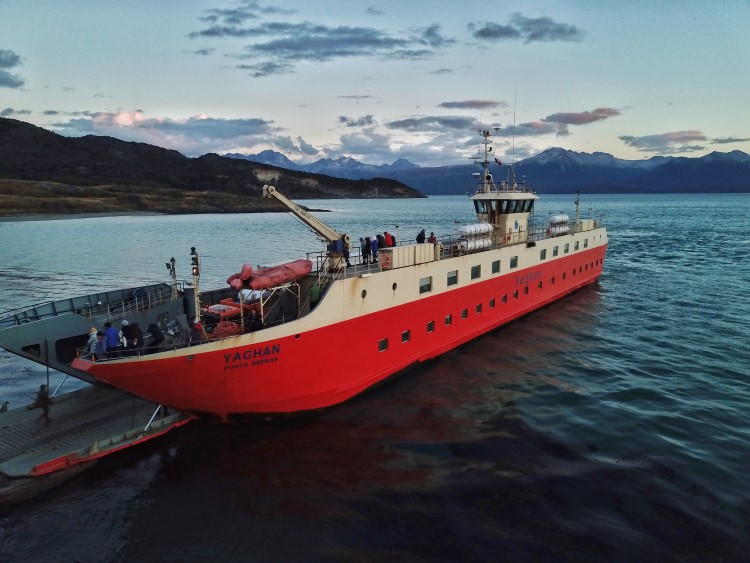
I boarded the ferry at the end of March and we had the most spectacular weather: blue skies and the calmest, crystalline waters that you can imagine.
Every few minutes we spotted more wildlife: Magellanic penguins floating atop the water; South American fur seals and sea lions shrugging their fins at us as they dipped in and out of the water; albatrosses cresting the boat; and finishing with a family of humpback waves leaping out of the water as we entered the Beagle Channel.
What’s more, the journey along the Beagle Channel is made even more spectacular by the fact that you pass mid-afternoon through Glacier Alley, a row of tidewater glaciers plunging down the edges of the Darwin Mountains and into the water.
Accommodation is more like a bus than a traditional boat. Foreigners booking in advance (something essential between December and March; aim for at least two months) pay $151,100 CLP ($237 USD) for a cama seat (180˚ recline with a separator between you and the person behind and in front).
Locals and those who snag a spot in the 24 hours before departure (obviously only if there is space left) pay $108,100 CLP ($170 USD) for a semi-cama (160˚ recline and a lot less space).
There are charging sockets on board, hot showers and three, three-course meals per day served in a poky downstairs dining area. They seemed able to cater to most dietary requirements as you’re required to indicate this when you book.
Be aware that while the return journey departing from Puerto Williams still promises stunning scenery, the boat passes through Glacier Alley late evening/in darkness. The journey from Punta Arenas south guarantees the best views.
Schedules change monthly and you need to book and pay online on the TABSA website . We left around 6pm in the evening from Punta Arenas and that meant that we were in front of Glacier Alley early afternoon, so bear that in mind when you book your ferry (later times may mean you pass the glaciers during the night).
The Cruz Australis: Puerto Natales to Caleta Tortel
Similar to the Yaghan, the Cruz Australis is a cargo boat that now carries passengers the 42-hour journey between Puerto Natales to Caleta Tortel, a town close to the southern tip of the Carretera Austral and terminating in Puerto Yungay, 43 kilometers east.
This vessel has faced few adaptations for tourists and is less comfortable: for example, the ratio of passengers to showers and toilets is somewhat lower and the food quality and quantity leaves a lot to be desired.
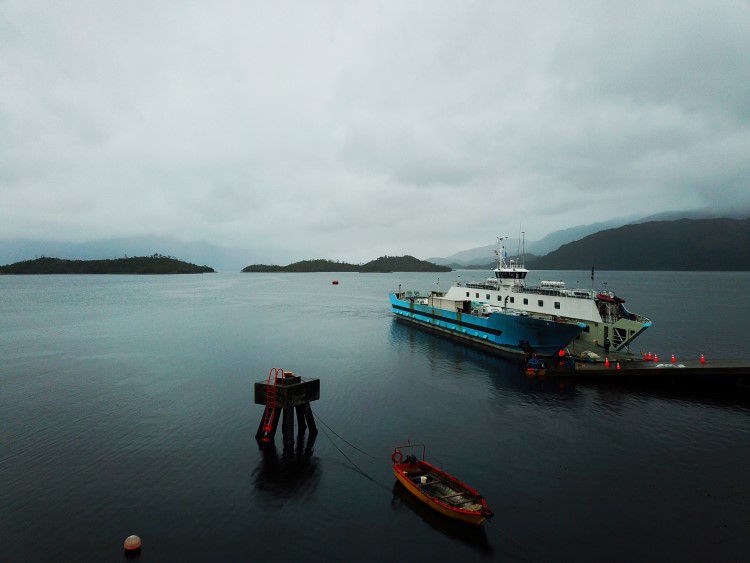
All seats are semi-cama (160˚ recline) and unfortunately, foreigners get to pay $125,160 CLP ($197 USD) per person, five times the cost for Chileans. Blankets are provided but it can get cold, so bring extra layers.
However, this trip feels similarly wild and provides an easy connection between Southern Chilean Patagonia and the Carretera Austral, particularly for those with a vehicle (at an additional cost) or who don’t fancy hiking with all their belongings between El Chaltén and Villa O’Higgins.
You also get to stop at Puerto Eden, a magnificent fjord-side settlement home to around 170 people, including the final members of the indigenous Kawésqar group.
The boat leaves weekly from Puerto Natales at 5am, although all passengers and those with vehicles are required to board the previous night. Three meals per day are included, although extra snacks are recommended as portion size and quality is not the best.
You can book and pay for this online directly through the TABSA website .
Patagonia boat travel tip: For both journeys, an eye mask and ear plugs to escape the pesky light and noise of the television screens, and a towel to make use of the hot showers in a small day pack is recommended; you’re required to leave luggage in a locked room off the main deck upon entry. You’ll get them back when you dock. You’ll also want warm, windproof, and waterproof clothes for time spent on dock watching the scenery go past.
Speedboats between Puerto Williams and Ushuaia
This journey isn’t exactly a ferry journey but is worth mentioning as it’s a useful way of getting between Chilean and Argentinean Patagonia.
Speedboats connect Puerto Williams (the southernmost Chilean settlement in Patagonia), with Ushuaia (the southernmost Argentinean settlement in Patagonia) by crossing the Beagle Channel, with a journey time of around 40 minutes and quite a high chance of spotting whales – we saw a group of humpback whales very close to our boat.
March 2023 update: No speedboats are currently operating between Puerto Williams and Ushuaia. I expect these to restart for the 2023/2024 season, however, I cannot currently confirm this.
The scenery is spectacular on a clear day because of the sharp, sky-spearing mountains that line both the Chilean and Argentinean sides of the channel.
Unfortunately, the journey is exceptionally expensive: $120 USD one-way, $220 USD return. It’s also really badly organized, particularly if you’re traveling from Puerto Williams to Ushuaia, not the other way around.
Boats leave daily Tuesday through Sunday, normally departing around 9am from the ports in Ushuaia or from the Gobernación building in Puerto Williams; boarding crossing formalities are conducted in both and you’ll be guided through the process by the boat staff.
Ferry tickets can be bought in Puerto Williams at Shila, a shop opposite the Gobernación building, or in Ushuaia from Seaboat , an agency located on the Muelle Turístic.
Ferries to Cape Horn
Finally, another popular boat trip in Patagonia is the journey to Cape Horn on Isla Hornos.
This island is mistakenly considered the southernmost point of South America, which is actually the Diego Ramírez Islands 104 kilometers south.
Either way, this trip has long appealed to adventurous tourists as the act of “Round the Horn” was considered the utmost test for sailors over the centuries when Cape Horn offered the fastest route around South America before the construction of the Panama Canal.
This barren, isolated island is inhabited by a member of the Chilean Navy and his family (although only for periods of up to a year) and you can visit with boats from Ushuaia or Punta Arenas, with the chance – if the weather conditions are optimum – to land on the island and visit the lighthouse.
There’s also the Cape Horn Monument, which was erected to honor all the sailors who died across the centuries by drowning in the fierce waves that lash the coastline.
Australis is the best-known company offering Patagonia cruise tours, with a focus on adventure over luxury – although their boats are notably more comfortable than the ferry journeys mentioned above.
However, they don’t come cheap and you can expect to pay $4,586 USD for two people sharing a twin room on a three-night, four-day cruise, including Glacier Alley, the penguin colony on Isla Magdalena, and Cape Horn.
If you’re more interested in a “local” experience (and still incredible views of Glacier Alley), I would strongly recommend the TABSA boat trip from Punta Arenas to Puerto Williams at a significantly more affordable price.
If you’ve got a shorter trip or don’t fancy spending a few days on a boat or bus, you can also take internal flights around Patagonia.
Connecting Southern Patagonia with the Carretera Austral, there are weekly flights (normally on Tuesdays) operated by Aeriovías DAP between Punta Arenas and Aérodromo Balmaceda.
This company also flies two times weekly (normally Wednesday and Saturday, only November through March) between Punta Arenas and Ushuaia and has daily flights (Monday-Saturday) between Punta Arenas and Puerto Williams.
Car rental in Patagonia
Renting a car or a campervan can be a useful way of getting around Patagonia at your own pace and having the chance to explore parts that few tourists see.
Car rental is generally cheaper in Chile than in Argentina and there are plenty of global companies here that add to the competition – and keep prices down.
One of the biggest issues I have faced with car rental in Patagonia and Chile, in general, is insurance. In this country, third-party, rather than fully-comprehensive, is the norm.
Some local rental companies won’t even allow you to add extra insurance on top of their basic policy – meaning that you’ll be required to pay anywhere from $700,000 CLP ($1,100 USD) to $950,000 CLP ($1,500 USD) as a security deposit (excess) when you book the car – and you won’t see any of that money again in the event of an accident.
This is perhaps more normal in the USA, but a shift from what you can expect if you’re used to renting in the UK or Europe.
I’ve previously used car hire excess insurance (sometimes known as excess damage waiver insurance) that protects you from having to use the security deposit to pay the excess if the car is damaged in any way.
This can cost as little as $50 USD a year (or less for one trip) and should prevent you from stumping up whatever excess is written into the insurance policy.
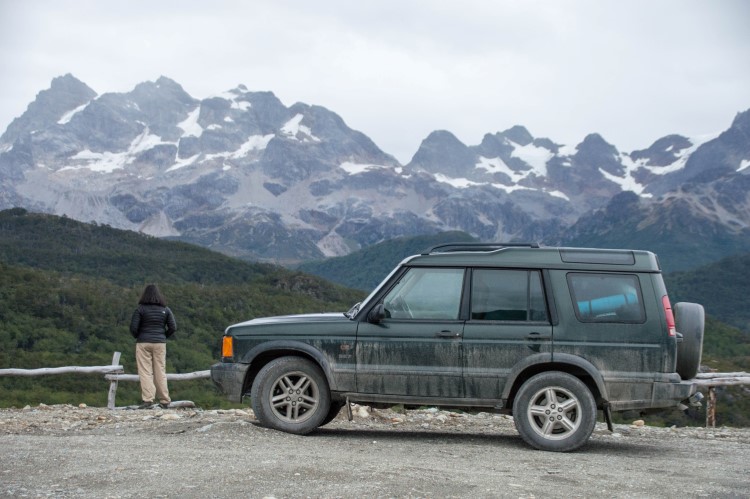
I’ve rented cars across Chile and I personally recommend using RentalCars.com as I’ve found them to be the most reliable and consistently offer the cheapest rental, with prices often starting at around $12,000 CLP ($19 USD) per day.
RentalCars.com link you up to budget car rental companies across Chile and also allow you to add on fully-comprehensive insurance when you book
I’ve rented a car in Patagonia through Europcar and Budget as well, however, I’ve always ended up paying an elevated price as I’ve struggled to rent vehicles through their Chilean websites as you often need a RUT (a Chilean identity document) to book – through their international website, prices are often significantly higher.
As a result, I tend to now go through RentalCars.com as it’s a) in English so you can be 100% what insurance you’re getting and b) in the event of an accident and where you need to claim money back from insurance, you can speak to someone in English – rather than Spanish.
For more tips and tricks, head to my guide to car rental in Patagonia .
Campervan and motorhome rental in Patagonia
If you’re planning a trip for one month or longer in Patagonia, renting a campervan can be a good way of saving money on accommodation and transport costs and will also grant you a lot more flexibility.
In Chile, the main campervan rental companies include:
- Soul Vans : rent vans from Santiago and Punta Arenas
- Wicked : rent vans from Santiago, Punta Arenas, and Puerto Varas in Patagonia
- Condor Campers : pick-up from Santiago, plus Punta Arenas and Puerto Varas (the latter of which you’ll be charged $380,000 CLP ($597 USD) to do so).
For motorhomes and larger camper vans , check out:
- Holiday Rent : pick-up and drop-off in Santiago or Punta Arenas.
- Andes Campers : pick-up only from Santiago or from other cities for a fee and with a limit of 250 kilometers daily.
Patagonia car and campervan rental tip: One-way fees (where the pick-up and drop-off are in different places) can be crippling, particularly if you plan on hiring a vehicle in Punta Arenas and dropping it off in Puerto Montt, for example.
If you’re traveling out of peak season, it’s worth checking out one-way deals offered by campervan rental companies.
These normally come about when they need to shift vehicles at the start or end of the season from one side of the country, and they will give you a significantly discounted price if you drive it for them.
The only problem is you’ll need to fit around their dates – but they won’t charge you a one-way fee. Check out Soul Vans , who sometimes offer one-way deals.
Rental car and van insurance in Patagonia
Theoretically, you need an international driving license to rent a car in Chile, however, I have never been asked to show this in two years of hiring vehicles here.
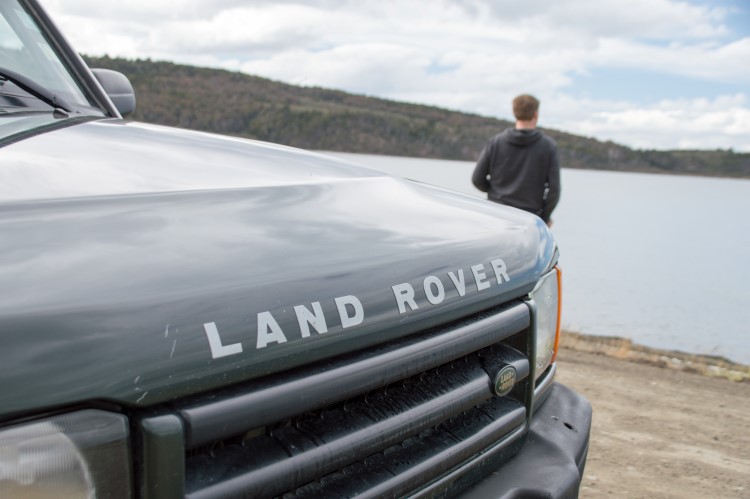
In addition to the obligatory car insurance for your vehicle, if you plan to cross the border into Argentina you will need a notarized document from the car rental company to legally allow you to cross:
- This costs from $70,000 CLP ($110 USD) to $130,000 CLP ($200 USD) and normally needs to be arranged between seven and ten days in advance of picking up the hire car. This should include third-party insurance in Argentina but double-check exactly what your insurance is going to be when you cross the border.
- An extra security bond may also be required by the rental company.
Things to be aware of when hiring a car in Chilean Patagonia :
- You may not be covered to drive on some roads in Patagonia if you rent a small, 2×4 vehicle. I was told when I was renting in Coyhaique that I could take a Chevrolet Spark, but it wouldn’t be insured for driving on the Carretera Austral! Therefore, you may be required to upgrade (at a significant cost) to a 4×4 if you want to drive outside of cities in Patagonia and on gravel or unpaved roads.
- Few companies offer tow-truck assistance if you break down in Patagonia . When it happened to me in Tierra del Fuego, we ended up waiting by the side of the road for about seven hours until they managed to get a new rental car out to us.
- Always carry plenty of food and drink and warm clothes in case of breakdowns. A Chilean and Argentinean sim (or one that works abroad) in case of emergency is also essential. I recommend Entel in Chile and Claro in Argentina.
- In COPEC gas stations (the most common type in Chile), you can normally find the “Rutas de Chile” COPEC map, which all of the COPEC gas stations in Patagonia marked . It’s worth investing in this as it’s good for map reading but also knowing where you can next buy gas.
- Driving along the Carretera Austral is hazardous not only because of the poor state of the roads (we’re talking building-sized potholes) but also the lack of care shown by other drivers on the road. Take it slow to avoid crashing around tight bends and dislodging pesky pieces of gravel that can do serious damage to windscreens.
- Always have your drivers licence, insurance papers, and passport on you in case you get stopped by the police. Chilean cops are not corrupt, so don’t ever attempt to bribe them. Just be polite and follow what they ask you to do.
- Knowledge of some Spanish will make your life easier when hiring a rental car.
Rental car and van insurance travel tip : If you plan to take a Patagonia road trip away from the main cities and into mostly uninhabited territories, such as Tierra del Fuego or into isolated parts of the Carretera Austral, it’s always essential to fill up your vehicle before leaving as fuel can be hard to find in some parts.
An additional fuel container (plastic is the only type allowed) is also worthwhile and you can often request these from your car rental company before you depart.
Best way to travel around Argentinean Patagonia
The Argentinean pampa is a lot easier to navigate than the Chilean side of Patagonia and bus transport is more regular and often more comfortable, making this probably the best way to travel around Argentinean Patagonia.
El Chaltén to El Calafate: From the Terminal de Ómnibuses in El Chaltén, Cal-Tur , and Chaltén Travel have five daily departures to El Calafate (three hours, $600 ARS ($22 USD)).
El Calafate to Ushuaia: TAQSA has daily buses between El Calafate and Ushuaia (16 hours, $2,000 ARS ($75 USD)).
You can buy bus tickets in bus terminals or bus company offices in all cities, as well as online at Omnilíneas and Plataforma 10 . It’s worth booking a couple of days in advance for long-distance services.
Domestic flights in Argentina are expensive, however, they can be useful when you’re on a short trip to Patagonia.
From Bariloche, Aeropuerto Internacional Teniente Luis Candelaria (BRC), Aerolíneas Argentinas have one flight per day ($103 USD; one hour 45 minutes) to El Calafate and one daily to Ushuaia ($104 USD; five hours 50 minutes).
From Aeropuerto Internacional de El Calafate Comandante Armando Tola , just outside of El Calafate, there are normally two flights daily to Ushuaia. The journey takes one hour twenty minutes and costs from $94 USD one-way.
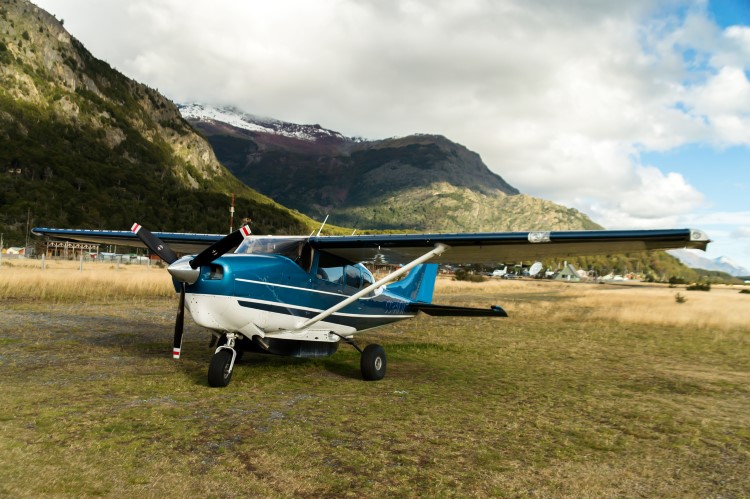
As mentioned above, Aeriovías DAP has twice-weekly (normally Wednesdays and Saturdays, only November through March) between Punta Arenas and Ushuaia.
Car rental in Argentinean Patagonia
All admit that I’ve never rented a car in Argentinean Patagonia. Want to know why?
Well, several reasons:
- It’s expensive, particularly when compared with Chilean car rental prices.
- Distances in Argentinean Patagonia are vast and actually, once you get out of the main tourist hubs (Ushuaia, El Calafate, El Chaltén), there’s not an awful lot to see that you can’t reach by bus. Puerto Madryn is the real exception to this – although you can get there by bus, it’s just a lot of hassle.
The only place I would suggest it makes sense to rent a car in Argentina is in Ushuaia as it makes it significantly easier (and cheaper) to visit Tierra del Fuego National Park, as you’ll save cash on the $20 USD per person bus fare into the park from Ushuaia, and you can tack on a day trip to Estancia Harberton and Laguna Esmeralda too.
However, if you do want to hire a car when you’re in Patagonia, I again recommend going through RentalCars.com where you can get a vehicle from $55 USD per day.
Things to look out for when hiring a rental car in Argentinean Patagonia :
- Be sure to read your insurance policy carefully to see whether you have third-party or fully comprehensive insurance included – again, another bonus of going with an international company such as this as all of the documents are in English.
- You may not be covered to drive on gravel or unpaved roads so confirm this when booking.
- If crossing the border into Chile, you will need additional insurance from the rental company . See above for further information.
- Check if you have a limit on how many kilometers you can drive per day . This is often capped at 200 kilometers (after which you’ll be charged extra per kilometer).
- You may be able to negotiate a lower rental price when you arrive to pick up the car.
- It’s worth photographing pre-existing damage to the rental vehicle to avoid arguments when you return it.
- Always have your driving license, insurance papers, and passport on you in case you get stopped by the police.
If you want to rent a camper van in Patagonia, I’d recommend going with a Chilean company.
Patagonia by train
Although train travel is perhaps the most romantic way of getting around Patagonia, travelers will be disappointed to hear that few of the lines that were once used to carry freight remain in operation.
The most famous is the steam-powered La Trochita, aka the 1922 Old Patagonian Express that found fame in Paul Theroux’s eponymous travelogue.
Nowadays, it only travels the short 20 kilometers to Nahua Pan, the first station on the train’s old route and back again. It costs $900 ARS ($33 USD) for the return ticket.
In summer, it leaves every Saturday, while in winter, it’s generally once a month. You can find out more information on the official website .
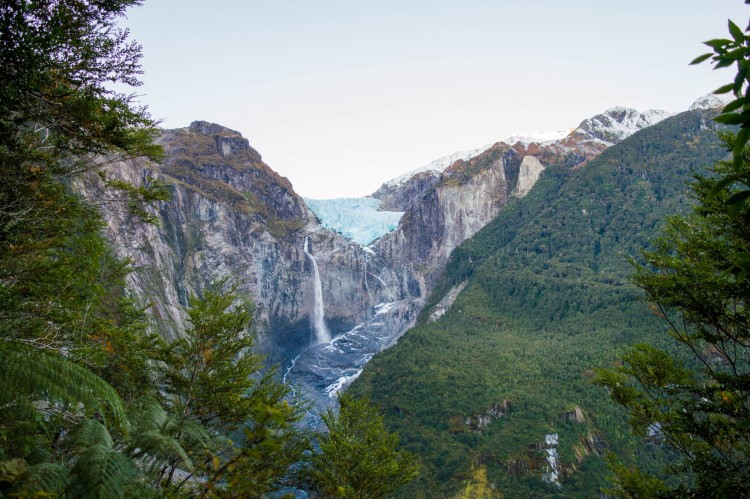
Patagonia road trip itinerary
Many travelers opt to hire a rental car or even buy a vehicle as a way of exploring Patagonia and having the flexibility to visit beyond-the-beaten-trail destinations.
If you’re hoping to plan a Patagonian road trip, I would recommend setting aside at least one month – but preferably more.
This will allow you to see the region’s most unmissable destinations without feeling like you’re on a strict time limit.
Unless traveling with a motorhome or campervan, you’ll want to pack decent camping equipment.
This includes a tent that can survive both the fierce Patagonian winds and the unrelenting rains (find out why I love the Big Agnes Copper Spur ) and a good cooking kit that can withstand both of these weather conditions too.
A spare petrol can, sat nav or map (I use the free maps.me as it has always worked very successfully for hiking and driving in Patagonia) and knowing how to change a tire are other essentials for a road trip through Patagonia.
In terms of itineraries, it depends where you plan to visit in Patagonia and how long you have to hand. I strongly recommend the following:
- The Carretera Austral: Chilean Patagonia’s ultimate road trip is from north to south along the region’s most isolated road. Construction started during the dictatorship and is still underway as this serpentine road is finally being fully paved – although there’s a long way to go. Highlights include Patagonia and Pumalín, two brand-new national parks that were brought into being by Conservación Patagonica (the late Doug Tompkins’ foundation); Caleta Tortel, a village connected entirely by wooden boardwalks; and the glaciers of the Southern Patagonia and Northern Patagonia Ice Fields. Read on for my complete travel guide to the Carretera Austral .
- Ruta 40 : Argentinean Patagonia’s most famous road is Ruta 40, a highway that actually transverses the entire country from north to south. The Patagonian stretch starts in Bariloche, slicing through the pampas as it bypasses El Bolsón, Esquel, Perito Moreno, El Chaltén, and El Calafate, before ending in Río Gallegos. It’s not for the faint of heart, with blustery winds and poorly-maintained roads making it one where you can’t drop your concentration for a minute, but it does promises exceptional views of the Andes Mountains and takes you along the region’s most interesting tourist hotspots. For tips on driving it, take a look at this article and this blog post .
- Tierra del Fuego: Another Patagonia road trip that you can take, although few people do, is into Tierra del Fuego. Plenty of travelers drive along the eastern half through Argentinean Patagonia and Ushuaia; however, the scenery on the western side, as a lone, unpaved road heads south from the ferry crossing at Punta Delgada, is sensational. Comprising angular mountain peaks (the final stretches of the Andes) interspersed with crystalline lakes and lenga beech forests filled with guanaco and foxes, this is the place to go if you’re looking for wild, untouched Patagonia. There’s little written about this on the internet yet, so you’ll have to stay tuned for when I write a post about it or you download my one-month backpacking itinerary , which already contains some key information.
Crossing the border between Argentina and Chile
Most trips to Patagonia involve quite a lot of border crossings, as you’ll likely want to move from Puerto Natales over to El Calafate, or from Argentina onto the Carretera Austral.
It’s not unusual to sometimes even cross the border multiple times in one day!
This is all perfectly legal, although you must ensure that you’ve got the necessary visa or pay a reciprocal fee where required (see these lists for Chile and for Argentina ).
Upon entry into either country, you are issued a 90-day stamp, which is renewed every time you cross in and out.
As I’ve indicated above, crossing between Argentina and Chile is relatively straightforward, however, in some cases, it is something that needs to be pre-planned.
Crossing the border with public transport
Crossing the Patagonian border can be a quick, stress-free process (somewhere between 30 and 45 minutes) or a frustratingly long one (various hours). In summer, queues at popular borders, such as Paso Río Don Guillermo (near Puerto Natales) and Paso Integración Austral (near Río Gallegos), can be very long.
If you’re on a public bus, you’ll be guided through the process by the bus driver, who’ll drop you off on one side of the border, wait for formalities to finish, and then allow you to re-board the bus, before taking you across the border and repeating this process.
The time spent at the border can also be increased by the fact that all luggage entering Chile is checked firstly by sniffer dogs and then put through an x-ray machine.
This is because you are not allowed to bring fruit, vegetables, or animal products with you across the border. The customs authorities are very strict about this and you can face a fine if you do attempt to bring any of these items and don’t declare them.
Whenever entering Chile, it is much better to declare everything and face having it taken off you, than run the risk of a large fine.
Theoretically, the Argentinean border control should check the same, however, I’ve never seen this happen, so you are generally fine to take food items if crossing in that direction.
Crossing the border with a rental car
To be legally able to cross the border in a rental car, you will need:
- A notarized document from the car rental company to legally allow you to cross.
- In Chile, this costs from $70,000 CLP ($110 USD) to $130,000 CLP ($200 USD).
- It needs to be arranged between seven and ten days in advance of picking up the hire car.
- Your car hire and this document should, theoretically, cover third-party insurance in Argentina but double-check exactly what is included in your insurance when you confirm the car rental.
There’s a great overview of the different stages of the border crossing here ; it’s from 2012 but the main information is still valid.
Patagonia border crossing tip: Aim to arrive at borders as early in the day as possible (although they normally don’t open until 8am: you can check opening hours on the official border website here . The Aisén and Magallanes Regions are the ones you want for Patagonia border crossings). Public buses begin to arrive from mid-morning onwards and that’s when the queues start.
Patagonia trip itineraries
If you’re looking for suggested travel routes through Patagonia, this is a subject that I’ve written extensively about.
One week in Patagonia travel itinerary
Although one week certainly isn’t enough to get the best out of Patagonia, you can just about fly from Santiago to Patagonia and squeeze in the W hike in Torres del Paine National Park.
Alternatively, starting in Buenos Aires, you can fly to El Calafate to admire the Perito Moreno Glacier, and spend a couple of days hiking in Los Glaciares National Park near El Chaltén.
For full details, read my one-week Patagonia travel itineraries article .
Patagonia in two weeks
Two weeks is definitely a better amount of time to dedicate to a trip around Patagonia. With two weeks, you can sail by ferry down through the Chilean fjords, before visiting highlights of the Carretera Austral (including the Marble Caves, Parque Patagonia, and the Queulat Hanging Glacier).
For hiking aficionados, you can spend just shy of two weeks hiking the O Circuit in Torres del Paine National Park, a challenging but worthy trek through untamed scenery.
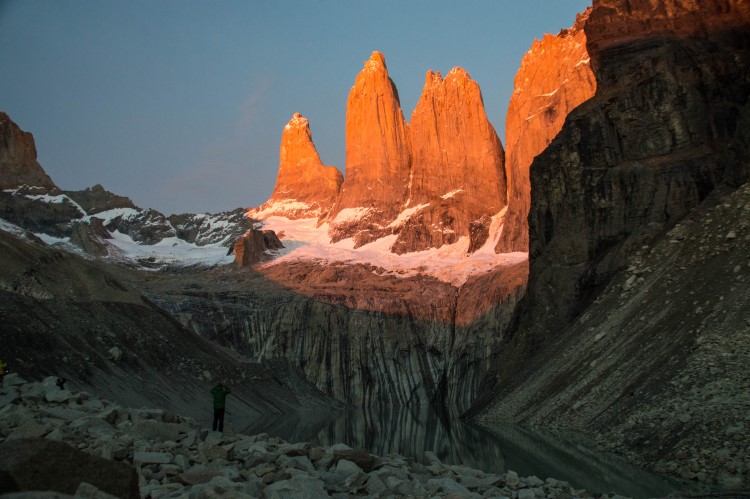
For full details, read my two-week Patagonia travel itineraries article .
Three-week Patagonia backpacking trip
With three weeks in Patagonia, you can hike the region’s best treks, including the O Circuit in Torres del Paine, various routes through Los Glaciares National Park near El Chaltén, and those in Tierra del Fuego National Park near Ushuaia.
Alternatively, you can day-trip into Torres del Paine, see the Perito Moreno Glacier, hang out in El Chaltén before hiking across the border to Villa O’Higgins in Chile, where you head north along the Carretera Austral, stopping at the Marble Caves, the Queulat Hanging Glacier, and Parque Pumalín en-route.
For full details, read my three-week Patagonia travel itineraries article .
One-month backpacking in Patagonia itinerary
Now we’re talking! With an entire month, you can just about see all of Southern Patagonia, both the Chilean and Argentinean sides.
You’ll arrive by ferry to Puerto Natales, hike the O Circuit, visit the Perito Moreno Glacier, hike in Los Glaciares National Park, head through Tierra del Fuego via a king penguin colony and explore the southernmost reaches of Chile before visiting Ushuaia and ending your trip with a visit to the volcanic landscapes of Pali Aike National Park.
For full details, download my one-month in Patagonia travel itinerary .
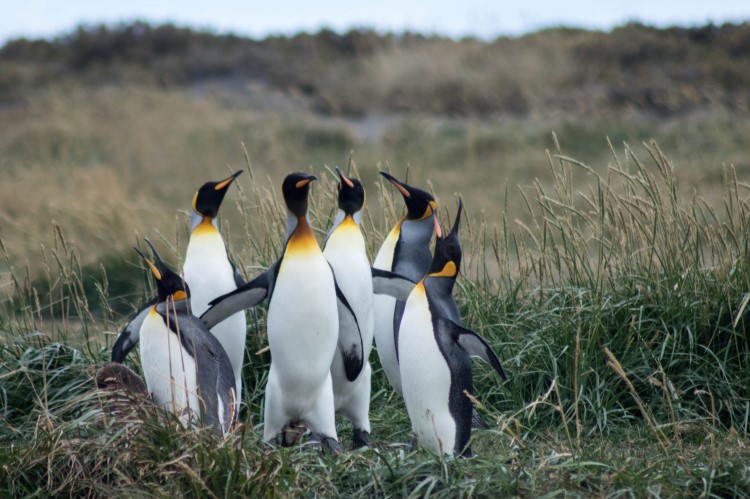
What to pack for Patagonia
Your packing list for Patagonia will depend a lot on what activities you plan to do on your trip.
- Your passport, with at least six months’ validity
- Your driving license (if you plan on hiring a car)
- Moon Chile and Lonely Planet Argentina
- In Patagonia
Day-to-day equipment
- Microfibre travel towel ; Check them out on REI | Amazon
- Flip flops or light-weight sandals; I’m a convert of Teva sandals ; they are lightweight and so comfortable. Check them out on REI | Backcountry | Amazon
- Hat, scarf, and gloves; I love the Buff headband that doubles up as a scarf too, check it on REI | Amazon
- Compression sacks for keeping everything ordered in your bag ; Check them out on REI | Backcountry | Amazon
- Universal adapter plug (Type C (Chile) and Type C and I (Argentina)); Check them out on Amazon
- Battery pack for charging your phone on the move ; Check them out on Amazon and REI
- Sturdy padlock for use with lockers in dorm bedrooms ; Check them out on Amazon
- Steripen for use in Argentina or on the trail; Check it out on REI | Amazon or read my honest review of the Steripen Adventurer
- Extra batteries (they’re very specific for the Steripen); Get them on Amazon
- Nalgene reusable water bottle ; Check them out on REI | Backcountry | Amazon
- Medical kit for emergencies ; Check them out on Amazon or REI or you can easily put one together yourself
Hiking equipment
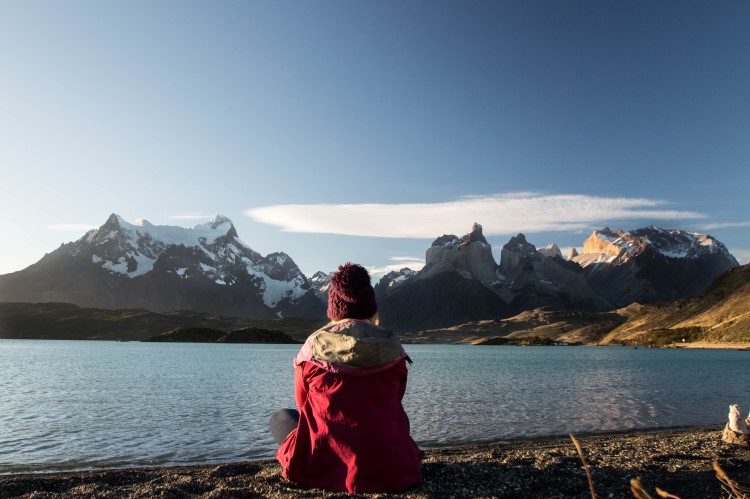
- Sturdy hiking boots ; I have a pair of Salomon hiking boots . Check them out on REI | Backcountry | Amazon or the men’s version on REI | Backcountry | Amazon
- “Inner” and “outer” socks to stop your boots from rubbing; merino wool socks are good as the thicker pair and they help to wick away moisture quickly from your feet: get outer socks on REI | Darn Tough | Amazon and liner socks on REI | Darn Tough | Amazon
- Trekking poles ; These can be invaluable as they can help take some of the pressure off your hips and feet when you’re walking. Check them out from Black Diamond on REI | Backcountry | Amazon .
- A lightweight but waterproof and windproof jacket; I love the Patagonia Storm10 Jacket as it’s an ultralight, easy-to-pack but fully waterproof jacket ( Patagonia ); the North Face Alta Vista Jacket ( Amazon | REI ) is significantly cheaper but offers good weather protection. For him: check out the men’s version of the Patagonia Storm10 Jacket on REI | Backcountry | Patagonia ; if you want something more affordable, the North Face Alta Vista ( Amazon| REI ) is a good shout. I’ve also heard great things about Arc’teryx ( REI | Amazon ) too
- Windproof and quick-drying pants if you plan on hiking in Patagonia ; prAna has a great range available on REI | Backcountry | Amazon ; for men, check out Columbia’s Silver Ridge pants on REI | Backcountry | Amazon
- A warm fleece jacket or down jacket ; Check fleece jackets out for women: Amazon or REI ; for men: on Amazon or REI . I also love my new Jack Wolfskin down jacket ( Amazon ), as it’s extremely warm and lightweight
- A day pack for day hiking ; I use the Lowe Alpine 22l day pack but for readers not from the UK, Osprey has excellent packs (for women REI | Amazon and for men REI | Osprey | Amazon )
- A 60-liter rucksack if you plan on hiking the O Circuit or other multi-day hikes ; I love Berghaus , but if you’re not in the UK, Osprey is again a far better option. You can check out Osprey rucksacks for women on REI | Osprey | Amazon and for men on REI | Osprey | Amazon
- Dry bags for keeping your electronics dry when it rains ; Check out Sea to Summit dry bags on REI | Backcountry | Amazon
- Hiking maps ; check out Trekking Chile : they have the best selection of hiking maps – something very difficult to find in Chile.
Camping equipment
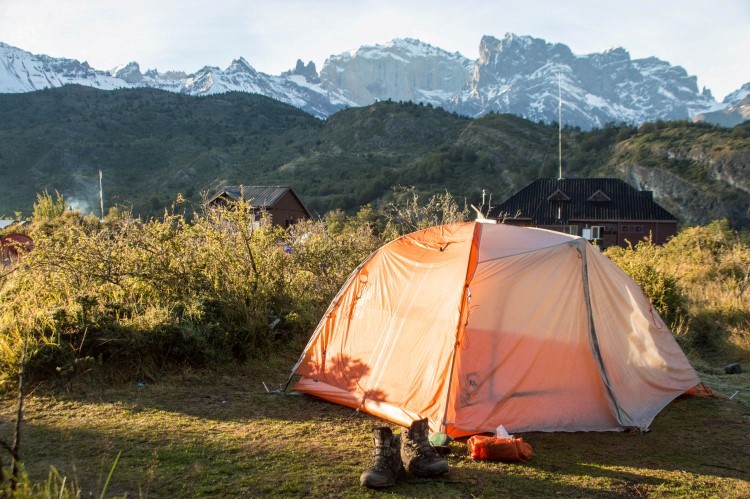
- Headlamp ; Check them out on REI | Black Diamond | Backcountry |
- A lightweight tent ; I recommend the Big Agnes Copper Spur HV UL2 ( REI | Backcountry | Amazon ). You can read my review of the Big Agnes Copper Spur too. The North Face Stormbreak 2 ( REI | Backcountry | Amazon )and roomier Stormbreak 3 ( REI ) are cheaper alternatives.
- Sleeping bag ; I recommend the Rab Ascent 700 Women’s (UK or Canada only) but if you’re in the US, for women, I suggest the Marmot Trestles Elite 30 (find it on REI | Backcountry | Amazon ); for men, the cheaper Marmot Ultra Elite 30 ( REI | Backcountry ) and the expensive Sierra Designs Cloud 800 ( Backcountry | Amazon ) both have rave reviews.
- Sleeping pad ; I really love the Alpkit Cloud Base sleeping mat but it’s not made it to the US yet. Instead, Therm-a-rest have a good line of affordable pads ( REI | Backcountry | Amazon ) or their Prolite is a more expensive and more comfortable option ( REI | Backcountry | Amazon )
- Lightweight and easy to clean cooking equipment; I recommend the MSR pots : check them out on Backcountry | Amazon
- A cooking stove that can survive windy weather ; I recommend the affordable and lightweight MSR PocketRocket ( REI | Backcountry | Amazon )
- Collapsible Bowl; Check it out on REI | Backcountry | Amazon
- Camping Mug; Check them out on REI | Backcountry | Amazon
- Spork; Check it out on REI | Backcountry | Amazon
Road trip equipment
- In car converter plug ; check them out on Amazon
- Copec “Rutas de Chile” map ; you can pick this up in most COPEC gas stations.
Get a full download of this list, with extra information about my reasoning behind my recommendations over at the complete Patagonia packing list .
How much does a Patagonia trip cost?
One of the biggest concerns for travellers to Patagonia is the cost of the overall trip. Patagonia is a notoriously expensive destination to visit, particularly when compared to other parts of South America.
As a rule of thumb, it is possible to backpack Patagonia on a budget of around $50 USD per day .
Staying in budget, dorm accommodation, self-catering and taking public transport, per day you can expect to pay:
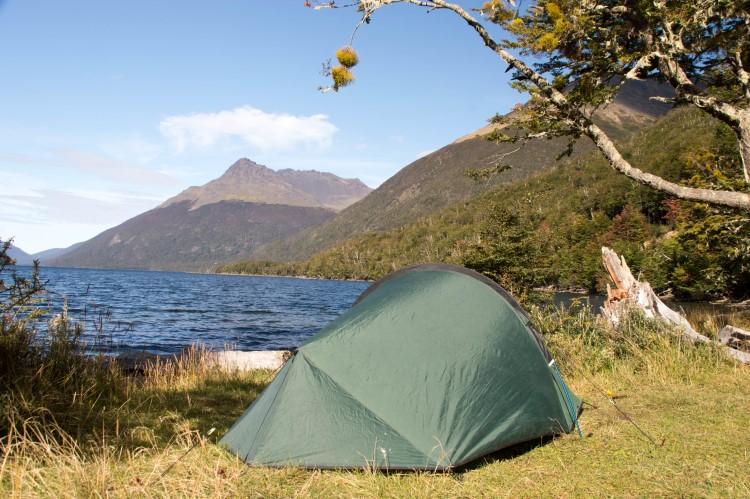
Two people, staying in budget, double accommodation, mostly self-catering and taking public transport can expect to pay:
However, don’t forget to budget in bus or boat transport or flying to Patagonia. Longer bus trips will cost more and you’ll need to budget for any tours that you take, which generally can be quite expensive. National park entrance fees vary, too.
If you plan on hiking in Torres del Paine, the cheapest you can expect to spend is $157,000 CLP ($190 USD): find out how to hike the W Trek without a tour and on a budget .
I’ve written a detailed article about traveling to Patagonia on a budget but these eight tips cover the main jist:
- Use cheaper, budget airlines such as Jetsmart, Sky Airline, and Fly Bondi for cheap flights into and around Patagonia
- Use the free Hopper app to find the best window of time for buying flights
- Hitchhike, cycle, hire a car between a group of you, or buy your own vehicle for the cheapest transportation in Patagonia
- Bring a tent and camp in local campgrounds or choose from budget hostales and residencials (basically local people who rent out rooms) or fully-equipped cabañas if you’re traveling in a group to bring accommodation costs down.
- Self-cater and buy food in big cities in Patagonia to make traveling to Patagonia cheaper – just don’t try and cross into Chile with anything fresh!
- Bring US dollars and make the most of a favorable exchange rate and discounts for paying in this currency
- Use Western Union for withdrawing money in Argentina. This allows you to get the best exchange rate (known as the “blue dollar”) and avoid Argentina’s rampant inflation. Full details here .
- Book in advance accommodation and destinations such as Torres del Paine National Park if traveling in high season
- Avoid unnecessary tours – just pack good quality equipment for your trip (see my recommended gear list for your Patagonia trip with a free checklist download)
For the full, in-depth guide, head over to my article about visiting Patagonia on a budget.
What to do and where to go in Patagonia
It’s probably become clear by this point that there’s a whole lot of stuff to see and do in Patagonia. I’ve spent months there and there remains a shit load that’s still on my list.
But I can condense what I think are the best, most unmissable things to do in Patagonia and so I’ve distilled my favorite destinations, organized by activity. You can also check out my guide to the best places to visit in Patagonia for further inspiration!
Where to go hiking in Patagonia
Torres del paine national park, chile.
Chilean Patagonia’s most famous park, it would be strange not to open this list with Torres del Paine National Park.
Although it’s possible to take a day trip into the park (either with a tour starting from $40,000 CLP ($63 USD) or by renting a car, both from Puerto Natales), hiking the five-day W or ten-day O Circuit is really the only way to appreciate the vast beauty of this dramatic national park.
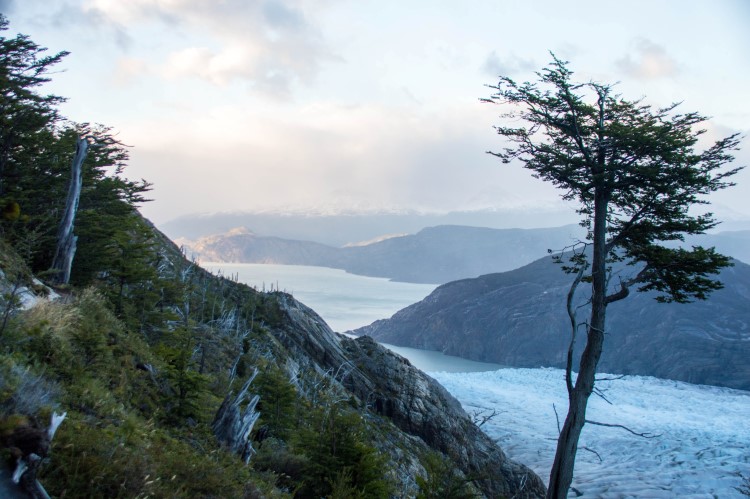
I’ve hiked both, and for me, the O wins easily. With the popularity of the national park increasing exponentially each year (around 250,000 people now arrive annually), the W is frustratingly crowded and this definitely took away a lot of my enjoyment of the hike.
Instead, the O Circuit has a limit of 70 hikers daily and while it’s challenging to carry food for ten or eleven days plus your camping equipment, the actual hike is accessible to even those with little experience.
You can also visit for a couple of days and enjoy day hikes in the park – which is great if you’ve not got much time or have missed out on making campground/refugio reservations for the W.
For further information, check out:
- Everything you need to know about the O Circuit
- Learn about how you can hike the W without a costly tour
- Find out what food to pack for both treks
- Read about the 15 best day hikes that you can do in Torres del Paine
- I’ve also written a lengthy, info-packed post about how to book campsites and refugios in Torres del Paine
- As well as what to do if there’s no space at the campsites for the dates you want .
Los Glaciares National Park, Argentina
Although it’s certainly lesser-known that its rival park across the border, Los Glaciares National Park in Argentina is a seriously beautiful place to go hiking in Argentina.
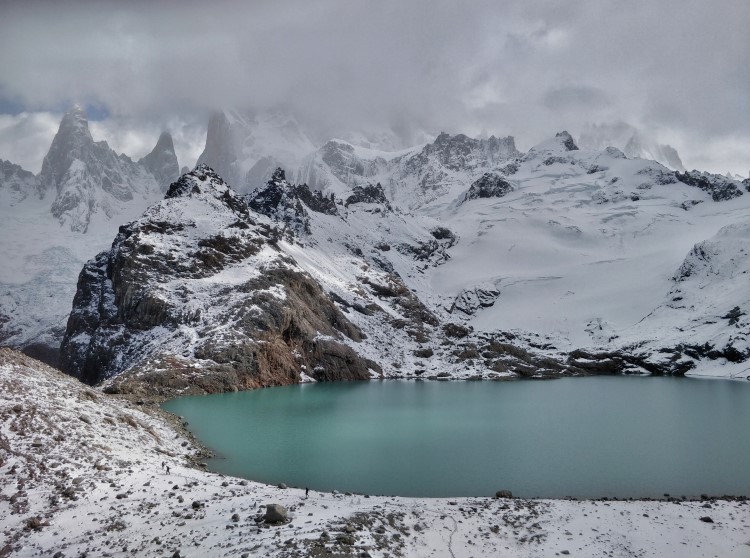
Part of the appeal – and what separates it from the increasingly more complicated-to-visit Torres del Paine – is the fact that this protected area has seventeen hiking trails. Many of these connect up and allow you to spend multiple days trekking through the park and camping at basic grounds, without having to return to nearby El Chaltén.
Alongside the challenging Laguna de los Tres, the most famous trek in the park, there’s also the increasingly popular Huemul Circuit, a 70-kilometer, four-day trekking that starts and ends in El Chaltén and affords spectacular views across the Southern Patagonia Ice Field.
The most detailed post I’ve found for those hoping to do this trek (I’ve not yet done it) is here .
This article from Lonely Planet is a more descriptive overview of what is quickly becoming one of the most sought-after Patagonian treks.
Tierra del Fuego National Park, Argentina
Another top hiking destination in Patagonia is Tierra del Fuego National Park . It’s only 12 kilometers west of Ushuaia at the very tip of Argentina, making it easily accessible for a day trip, although there are also a couple of campgrounds in the park if you choose to stay.
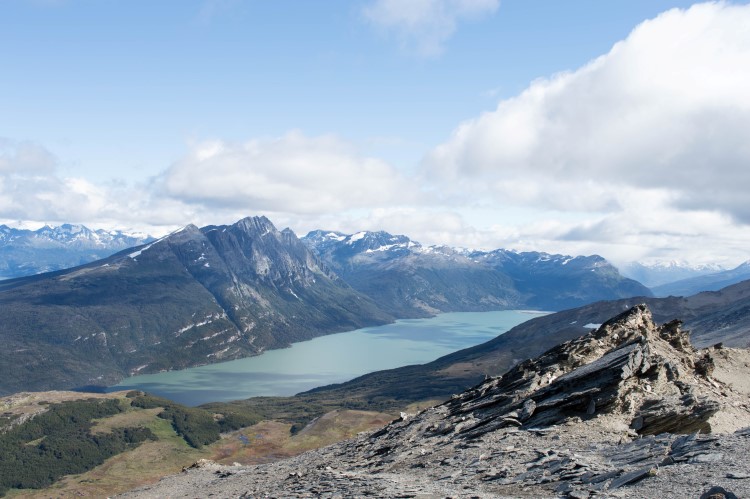
Hiking trails are less plentiful than in Los Glaciares National Park but the views from the Cerro Guanaco trail make it more than worth the visit.
It’s an eight-kilometer round-trip, but a grueling eight-hour hike in total because you ascend 973 meters in only four kilometers to reach a peak.
From here, expect panoramic views of the Beagle Channel below and views across to Puerto Williams, in Chilean Patagonia, when the weather is clear.
You’ll need to download a decent map (I always recommend the free maps.me where you can download maps for offline use) as the path sometimes disappears into a peat bog – and you’ll want decent hiking boots too!
The park is also a great spot for seeing the Southern Lights in Patagonia on a cloudless night.
Buses leave hourly from the terminal in Ushuaia, although, at $20 USD per round-trip ticket, if you’re in a group, it’ll wind up being cheaper (and faster) to rent a car in Ushuaia .
Pumalín National Park, Chile
A newly inaugurated national park, Pumalín was founded by billionaire philanthropist, the late Doug Tompkins (the former CEO of the North Face brand) and is possibly one of the best parks in Patagonia and proves that there’s more to hiking in Chilean Patagonia than just Torres del Paine.
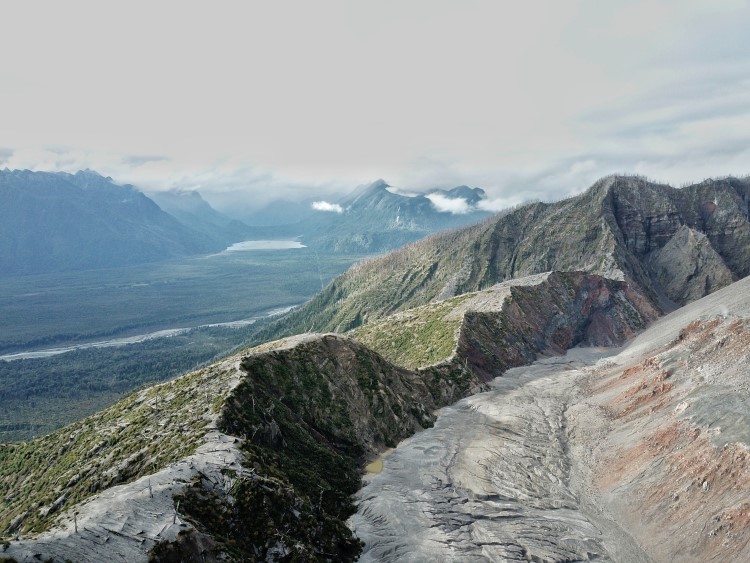
Loads of investment has gone into the park’s infrastructure, with around seven hiking trails ranging from short, easy wanders to day hikes. My personal favorite was the climb up to the crater of the imposing Chaitén Volcano.
It actually erupted back in 2008, burying the nearby town of Chaitén under lahars of ash and mud and forcing thousands to evacuate from their homes. The views down into the crater and, when the sun is shining, out towards the ocean, are spectacular from the top.
There are plenty of campgrounds in the national park charging $6,000 CLP ($9.5 USD) per person. Be aware that there is no public transport from Chaitén, so you either need to hitchhike, bring a car down from Puerto Montt or take a tour.
You can find more information about this on the park’s English-language website .
I highly recommend Chaitén Excursions run by the wonderfully knowledgeable US-expat Nicolás, who runs flexible tours that start from as cheap as $10,000 CLP ($16 USD) per person. He’s based in Chaitén.
Cerro Castillo National Park, Chile
Further south along the Carretera Austral, Cerro Castillo is another newly-inaugurated national park that converted from national reserve status back in October 2017.
The area is best known for the spectacular Laguna Cerro Castillo which is dominated by the sharp, torrent-like spires of Cerro Castillo itself (“Castillo” means castle).
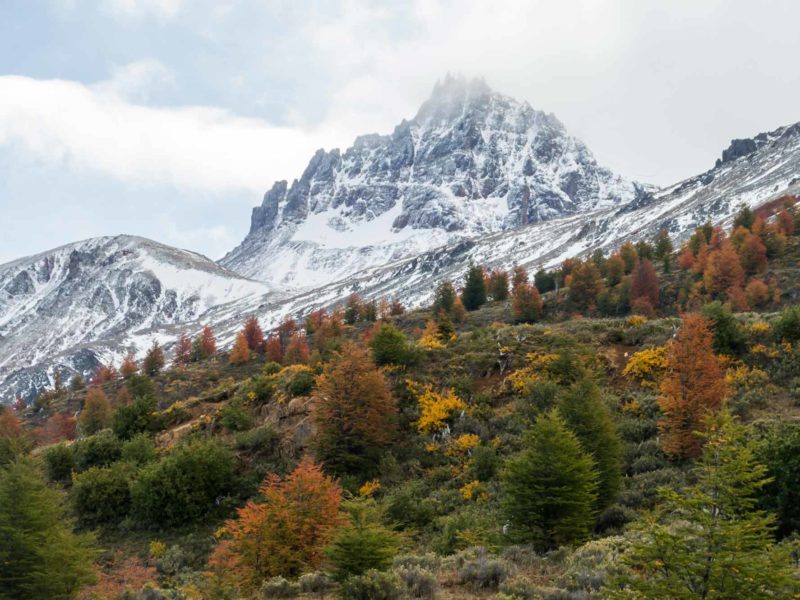
It’s a climbing, one-day hike up to the lagoon, although there’s a growing number of tourists choosing to opt for the 47-kilometer, four-day Cerro Castillo Traverse.
This starts in the east and cuts right through the park west, passing a series of viewpoints for glaciers and lakes, as well as the all-important Cerro Castillo itself.
The most complete guide to this four-day trek can be found via Adventure Alan and it’s a challenging hike but one you can do without a guide.
Patagonia National Park and Lago Jeinimeni National Reserve, Chile
I’m still debating over which is my favorite national park in Patagonia for hiking, but Patagonia National Park is definitely in the running.
Another Doug Tompkins-founded protected area, Patagonia has breathtaking scenery, covering everything from mountain-top lagoons to dusty, sun-scorched grasslands and even mountain traverses through river gorges.
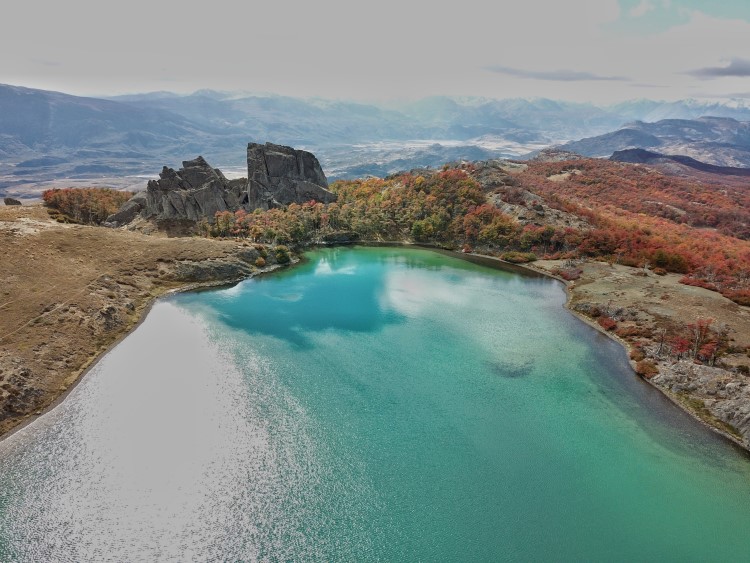
I only had the chance to hike the spectacular Lagunas Altas Trail. It’s a challenging 23-kilometer day-hike that ascends the south side of the valley in which much of the park is located, climbing into lenga forests past beautiful azure lagoons, before looping back down to the campground where you start.
There’s also the three- to four-day, 52-kilometer trek, known as the Traversía Jeinimeni-Avilés or Sendero Valle Hermoso-Valle Chacabuco, that crosses from Patagonia National Park into the Jeinimeni National Reserve.
For more information, the park’s website is especially detailed and even in English.
Where to go for spectacular landscapes and natural landforms
Perito moreno glacier, argentina.
Patagonia’s most famous glacier, Perito Moreno is an astonishingly large glacier just a few hours’ drive from El Calafate in Argentina.
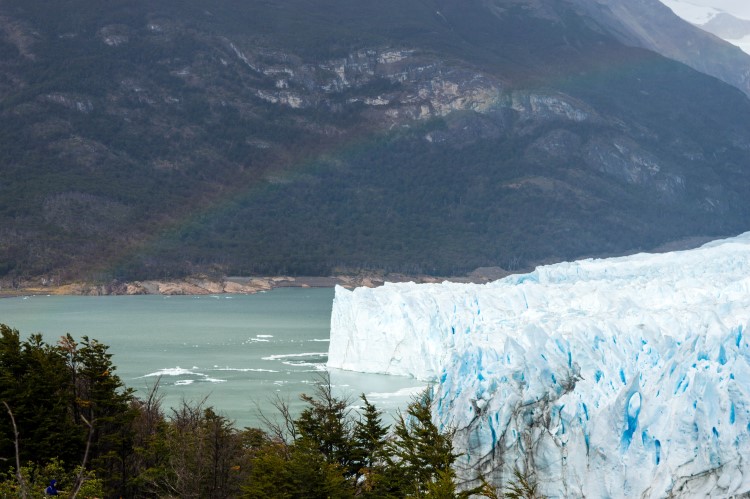
Although it’s certainly not the largest of the glaciers in Patagonia by any stretch, what is unique about this lump of millennial ice is how close to its snout you can get.
Not only are there wooden boardwalks that allow you to follow the main wall of the ice from left to right, just a few hundred meters from it, but you can also go via kayak or boat to see it from a completely different angle.
You can even join a trekking tour from $110 USD for an hour and a half on the ice, with one of the companies based in El Calafate.
It’s fair to say that the walkways get packed with visitors in the summer months, so if you want to avoid the hordes, plan to get the earliest public bus departing from the bus terminal in El Calafate ($24 USD return).
You’ll need $25 USD in cash (Argentinean pesos) for paying the entrance fee, too.
Find all the information you need about visiting in our guide to the Perito Moreno glacier .
Villa O’Higgins, Chile
It’s a three-and-a-half-hour drive or bus journey down to the very end of the 1,240-kilometre Carretera Austral to reach Villa O’Higgins.
This tiny, 600-inhabitant village is unremarkable; however, in the surrounding area, you can visit the bewitching snout of the O’Higgins Glacier, a 75,000-hectare and 38-kilometer-long slice of dense, compressed ice where spectacular bergs calve at frequent intervals.
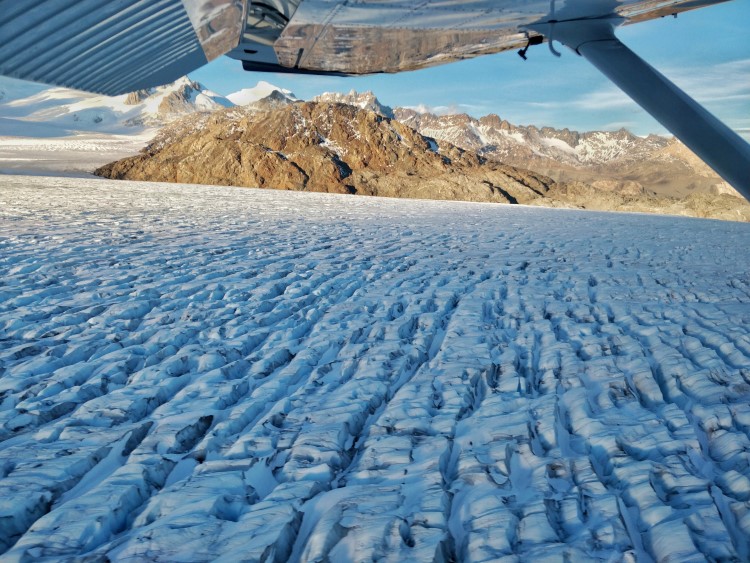
Unfortunately, the local operator running these tours closed during the pandemic. We’ll update this article when we find out who’s now offering this tour.
Glacier Alley, Chile
With its row of tidewater glaciers that hang precipitously over the waters of the Beagle Channel, Glacier Alley is one of those places that you have to pinch yourself to believe you’re actually seeing.
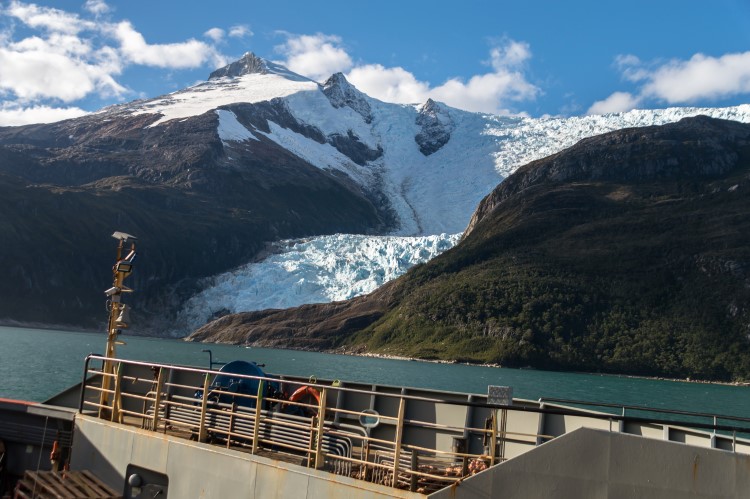
I’d long heard about these beautiful ice giants that are only accessible by ship but thought that my chances of seeing them were nil, as the main cruises that pass by cost well over $2,000 USD for the trip.
However, on my ferry ride between Punta Arenas and Puerto Williams, I realised that this magnificent view was one that I could actually afford.
I’ve written above about taking this very ferry, which normally passes mid-afternoon when the light is perfect.
The captain even slows the boat to allow you to take photos as the glaciers spill water into the ocean below, leaving a trail of milky-coloured, glacial meltwater to create beautiful patterns when it mixes with the saltwater below. See the section “ Best way to travel around Chilean Patagonia ” above for more information about visiting.
Marble Caves, Chile
The swirling, technicoloured patterns of the Marble Caves in Lago General Carrera are probably the Carretera Austral’s most famous sight.
Formed when the winds whip up the spray of the lake and erode the softer limestone, these grottos go back deep back into the rock.
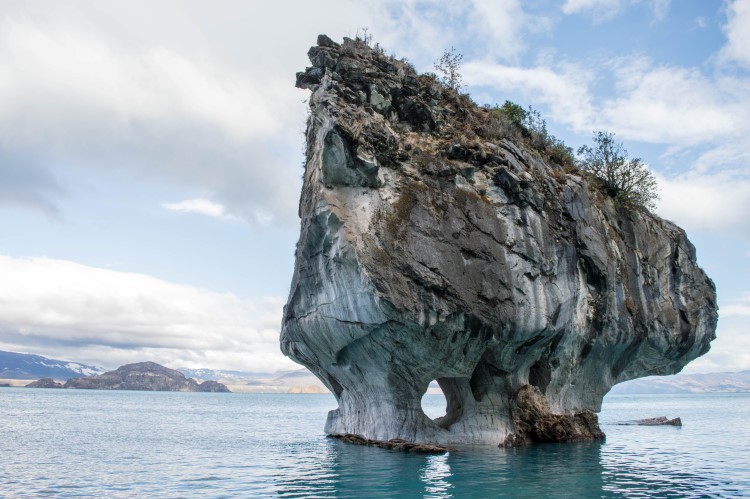
Surreal in their kaleidoscope colouring and only accessible by speedboat or kayak from the closest settlement of Puerto Río Tranquilo (which, in itself, is a good five hours in bus or car from the nearest airport), these caves feel even more special because of the lengths you have to go to experience them and definitely rank among the best places to visit in Patagonia.
The colour of Lago General Carrera changes with the light and pictures are best in the early morning. If you visit between April and June, when water levels are lower, you can pass right through the passageways in the caves and out the other side.
Expect to pay around $10,000 CLP ($16 USD) to go with one of the companies along the shoreline in Puerto Río Tranquilo.
Queulat National Park, Chile
Duck-egg blue and perched precariously on the edge of some mountains, the Queulat Hanging Glacier is an iconic sight along the Carretera Austral .
It’s accessed by an hour and a half’s hike from the entrance into the Queulat National Park, where you climb slowly through dense, evergreen beech forest to reach a mirador located directly across from the glacier – offering truly magnificent views.
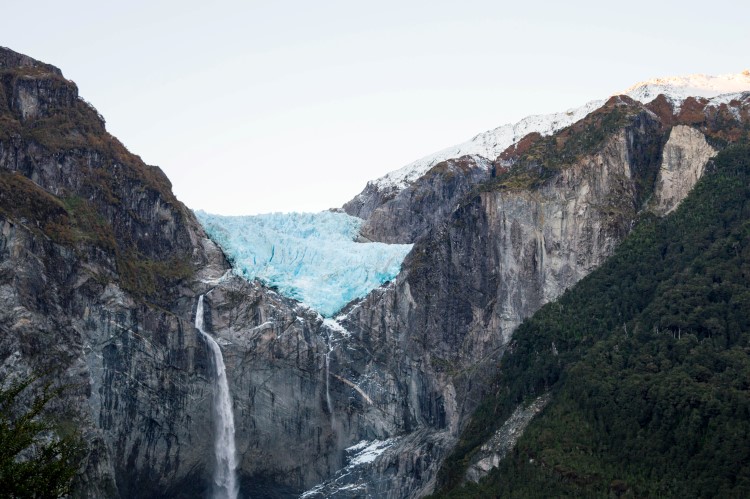
31 kilometres further south on the way to Coyhaique, the Bosque Encantado (Enchanted Forest) offers equally splendid scenery.
A 2.3-kilometer one-way trail climbs through a magical woodland of beech trees that drip with moss, before opening out to a moraine ridge where there’s a short climb up to an emerald lake filled by glacial meltwater spilling from the surrounding mountains.
Unfortunately, this part of the park is closed indefinitely due to a landslide.
Covid-19 update: You MUST make a reservation in order to visit the park. You can do this on this website , but you will need to pay in cash (bring small notes) upon arrival. You can only enter the park between 9:00am and 14:30pm (Tuesday to Sunday; you can stay within the park until 16.30pm) and you must bring your reservation code on your phone or printed off to show at the park entrance. Don’t forget your passport, which you’ll need to show to prove you’re not a Chilean resident.
The Queulat Hanging Glacier can easily be reached from a daily bus that leaves in the morning from nearby Puyuhuapi*.
*Because of the pandemic, I am not sure this is still running. Contact Turismo Experiencia Austral who used to run this service to confirm.
Where to go because no one else does
Caleta tortel, chile.
Caleta Tortel is a magical, fjord-side village almost at the very end of the serpentine Carretera Austral.
There are no roads here; instead, the village is connected by a series of cypress-wood walkways that hang above milky blue meltwaters, which drain from both the Northern and Southern Patagonia Ice Fields. This village is as close as you can get to a fairy tale in Patagonia.
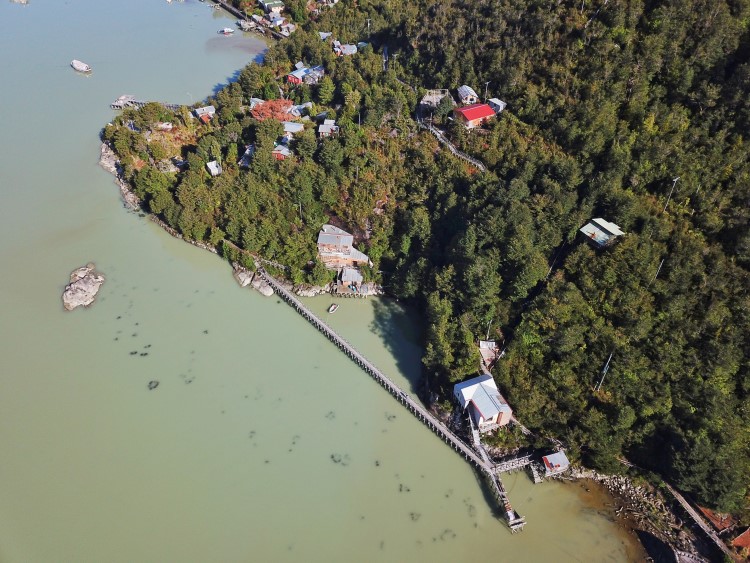
I fell in love upon arrival, as the sun lit up the pastel-hued waters and the morning dew sparkled on the wooden walkways.
From the town, local people run boat trips out to hanging glaciers and the mysterious Isla de los Muertos (“the Island of the Dead”).
Here, 33 crosses bear testament to the deaths of the first Chilean people who inhabited the region and who are thought to have been poisoned by the forestry company that employed them.
Again, Caleta Tortel is made more magical by the fact that it is so inaccessible. You can either take the ferry from Puerto Natales (described above) or arrive overland by frequent minibus services from Cochrane, the closest large town on the Carretera Austral.
Chilean Tierra del Fuego
Almost the polar opposite of the tourist-jammed Torres del Paine National Park, Chilean Tierra del Fuego is a true Patagonian wilderness. Practically empty of people – both locals and tourists – this is one of my absolute favourite places in Patagonia.
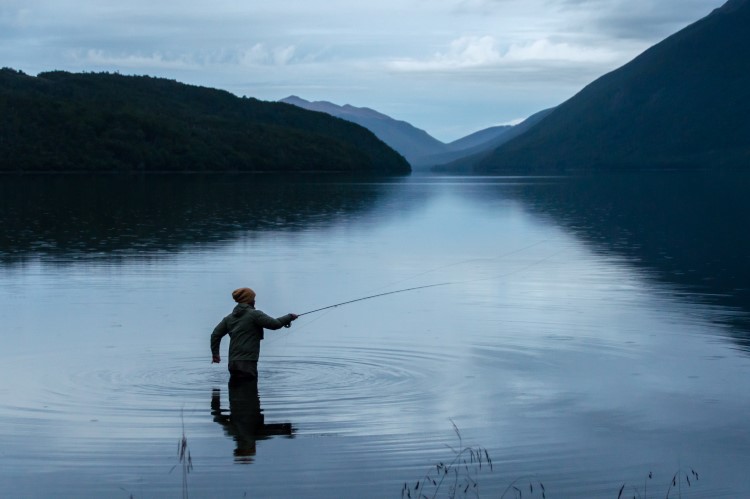
What makes Tierra del Fuego so tantalisingly refreshing for adventurous travellers is the fact that it’s very difficult to access.
To admire its king penguin colony (the only one in the Americas) you can get a tour from Punta Arenas, but to go deeper into its lagoon-dotted and peat-bog laden landscapes, where herds of guanaco shuffle through dense forests and beavers blink at you from road-side streams, you’ll need a vehicle.
Rent a 4×4 from Punta Arenas , pack a tent and enough food to keep you going, plus an extra fuel can, and you’re ready to go.
This is a subject that’ll I’ll be writing about in more detail in the future; however, in the meantime, if you want to learn more, you can download my one-month Patagonia itinerary .
Puerto Williams, Chile
Chilean Patagonia’s best-kept secret – in my opinion at least – is Puerto Williams. The world’s southernmost settlement (nope, it isn’t actually Ushuaia), this tiny community sits on the southern shore of the Beagle Channel on Navarino Island.
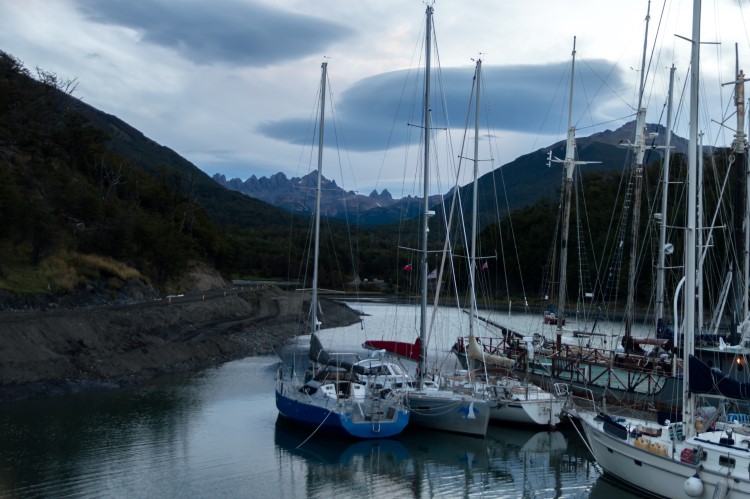
Puerto Williams is beautiful for its remote, wild feel. Horses roam the street aimlessly and most of the town’s residents belong to the Chilean Navy.
However, tourism is on the rise, helped in part by the excellent Museo Martín Gusinde , the most complete museum in Chile about the seafaring, indigenous Yaghan people who have all but been driven to extinction (the final clutch of remaining descendants still live here on the island).
But it’s also an increasingly popular place to go hiking in Patagonia, with the Dientes de Navarino trail picking up steam.
Certainly not for novice hikers, the 53.5-kilometer Dientes de Navarino is a difficult, five-day, four-night hike that circumnavigates the mountain range of the same name, passing through peat bog and bleak, exposed rockfaces.
Staggering views across Navarino Island and a feeling of being at the uttermost ends of the earth are included.
I didn’t get the chance to hike here and there’s still very little on the internet in the way of hiking guides. Wikiexplora have a pretty detailed guide, as do Best Hike .
If you want to hire a guide or just want some up-to-date information, get in touch with local trekking agency, Explora Isla Navarino .
Where to go for an extreme adventure
Futaleufú, chile.
In the north of the Carretera Austral and just on the border with Argentina, Futaleufú is one of Chilean Patagonia’s most picturesque towns.
Tucked within a river valley and surrounded by green-drenched mountains, this town, despite its remote location, is globally-renowned – all thanks to the Futaleufú River that rushes past.
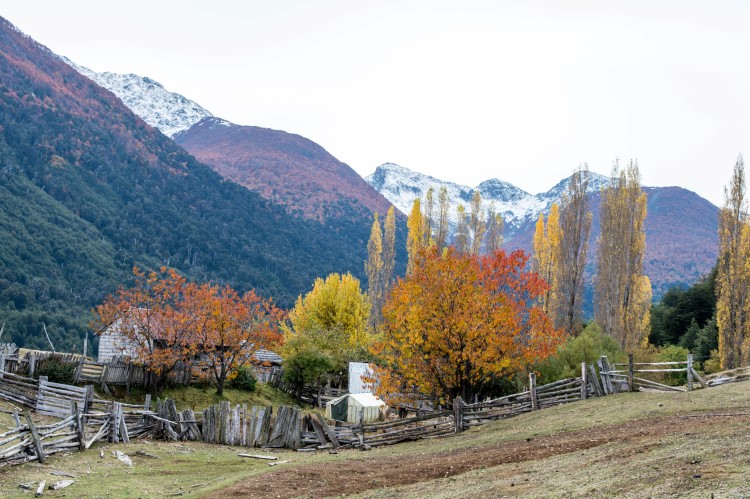
This thunderous river actually tumbles through 47 rapids, including class III and IV and the IV+ and is considered one of the best places for white water rafting in the world and it’s a great spot for experts and amateurs alike.
You’ll want to visit between November through March, although the end of the season has more stable weather conditions and higher water levels, meaning the rapids are even more gnarly and fun.
In the town, there are plenty of agencies that run tours (from $60,000 CLP ($93 USD)), most of whom have international guides and all of which speak excellent English. For the less water-inclined, there are plenty of nearby hiking routes too.
Exploradores Glacier, Chile
Although Perito Moreno is the best-known destination in Patagonia for ice trekking, the Exploradores Glacier, 25 kilometres east of Puerto Río Tranquilo on the Carretera Austral, is perhaps an even better place to do it.
You’ll get a wide-reaching panorama of the glacier and the Northern Patagonian Ice Field beyond from the mirador (viewpoint) at the start of the trek (and accessible for those not ice trekking), before hiking onto the glacier for a six-hour experience, climbing moraine boulders and through dripping ice ravines.
You can book onto a tour with a qualified guide in Puerto Río Tranquilo at a cost of around $70,000 CLP ($110 USD).
Want more inspiration? Read about my other top Patagonia highlights .
Where to stay in Patagonia
Types of accommodations.
Accommodation in Patagonia varies across the region and across Chile and Argentina. These are the main types of accommodation that you can expect to find.
Camping is popular among Argentinean and Chilean tourists, so you’ll find plenty of campgrounds in Patagonia for putting up your tent. If you’re budget backpacking in Patagonia, this is your cheapest option.
You can expect facilities to include showers (most often hot, but not always), taps with clean water and, the most important thing (for the locals at least!), barbecue areas.
Most national parks in Chile and Argentina also have campgrounds, although the quality of services vary with those in Torres del Paine National Park among the best and those in Los Glaciares National Park pretty poor.
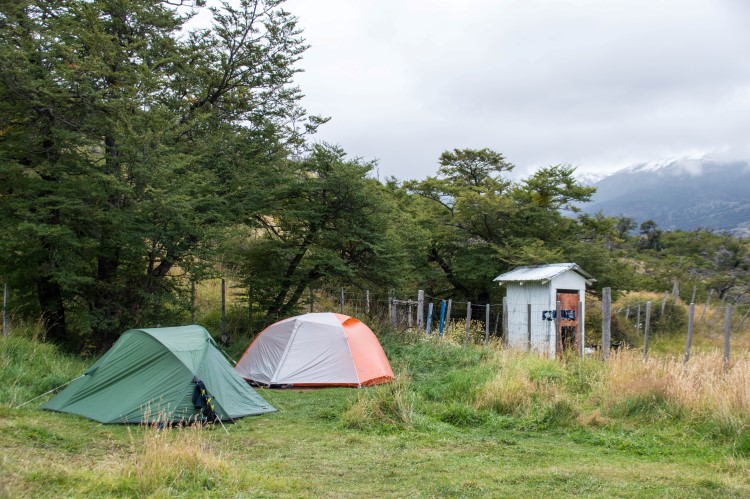
Prices start from upwards of $5,000 CLP ($8 USD).
You can also wild camp in Patagonia, and particularly on the Chilean side, although make sure to ask permission if you’re obviously on someone’s land (they’ll likely say yes) and don’t leave a trace .
In Argentina, the exposed nature of the pampa means there’s very little protection from the wind for your tent and you might not find it a particularly enjoyable experience being blown over in the night.
Wherever you camp, you’ll want a decent tent that’s lightweight enough for multi-day hiking trips.
I recommend the Big Agnes Copper Spur: read my honest review of the Big Agnes .
Hostales and Residenciales
Hostales and residenciales are some of the most common types of accommodation in Patagonia, although you’ve probably never heard of them.
Hostal doesn’t mean what we would call a “hostel”. It’s similar, in that it’s accommodation for travellers, although it’s rarely with shared bedrooms. Most are private, often with a private bath, and with access to communal areas and occasionally a kitchen. Breakfast is generally included in the price too.
A residencial is similar, but normally within the house of the owner and the facilities are often a lot more basic.
You can expect to pay from $12,000 CLP ($19 USD) for a single bedroom and $22,000 CLP ($35 USD) for a private in a residencial , and $18,000 CLP ($28 USD) for a single and $28,000 CLP ($44 USD) in a hostal , although outside of December through March, prices drop and you can often negotiate.
You rarely find these types of Patagonian accommodation on website such as Booking.com .
To reserve (something essential in summer), look for accommodation on Google Maps and contact the owners directly by telephone.
Cabañas
Among Chileans and Argentineans, cabañas (cabins) are the accommodation of choice.
Cabañas are normally pretty basic, wooden structures, comprising two or three bedrooms (they’re intended for large Chilean or Argentinean families), with a private bathroom, living room and well-equipped kitchen.
For a cabin for four people, you can pay anywhere between $40,000 CLP ($63 USD) and $80,000 CLP ($126 USD).
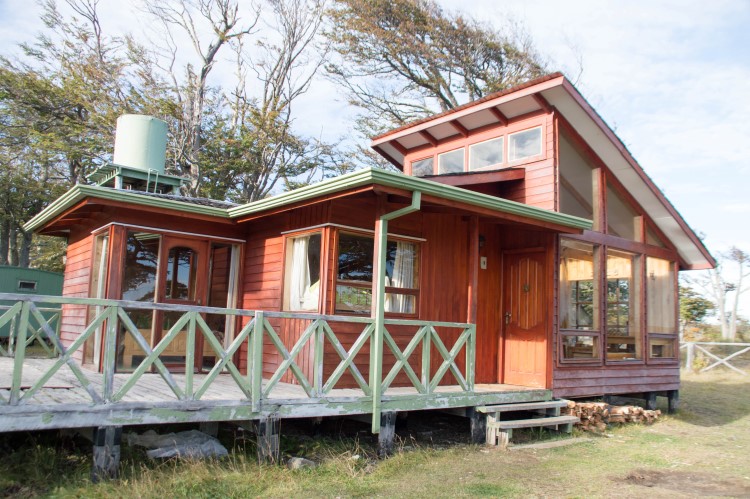
These make sense if you’re travelling in a group, although you’ll sometimes find owners open to a reduction in price for a couple, particularly if you’re travelling outside of December through March.
Again, an increasing number of Patagonian cabañas are appearing on Booking.com , but I’d recommend you also look up options in a given destination on Google Maps and, where possible, book directly with the owners for cheaper prices.
Hostels, in the traditional sense of budget accommodation with dormitory-style rooms, exist throughout Patagonia, although primary in the larger towns and cities.
They’re generally very comfortable, with facilities are as you would expect, with often a communal kitchen and communal areas available to guests.
You can expect to pay upwards of $13,000 CLP ($20 USD) for a dorm bed in a hostel. Privates start from anywhere above $25,000 CLP ($40 USD).
Hostels in Patagonia are best booked in advance in high season, as they can often be full with tourists. You can find them both on Booking.com and Hostalworld.com .
B&Bs and Hotels
There is a proliferation of increasingly comfortable B&Bs, and expensive hotels in Patagonia, with everything up to five-star properties in areas such as Puerto Natales and Torres del Paine National Park, El Calafate and Ushuaia.
B&Bs and other small guest houses often start from $45,000 CLP ($70 USD), while hotels range from this upwards.
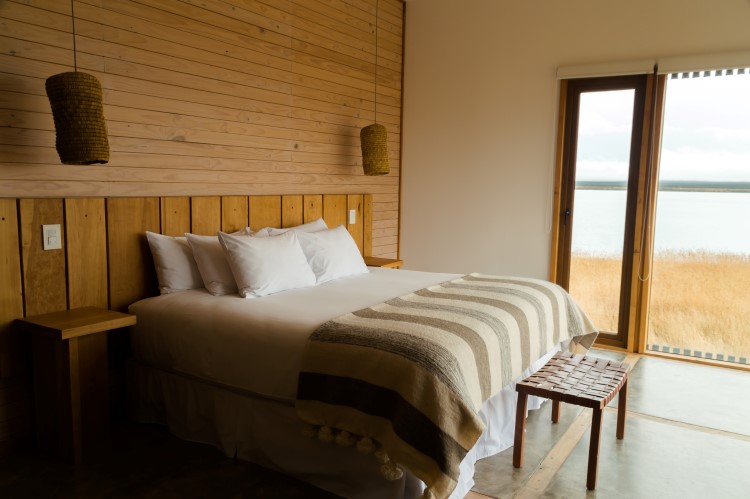
Again, if you’re heading on a short vacation in Patagonia, you’ll want to book hotels in Patagonia in advance in high season, at least a few months in advance for January and February. Again, you can find most on Booking.com .
Cost: $$$$+
Remote lodges have become a new trend in Patagonia and often offer the most exclusive, luxury accommodation and attention.
Properties such as Explora , Tierra Patagonia and Awasi (all in Torres del Paine National Park) offer complete services of hotel pick-ups, all-inclusive dining and private guides and transportation – but you’ll be paying at least $600,000 CLP ($940 USD) per night for this service, with a minimum of three nights standard.
Again, booking in high season is absolutely essential, as these properties are normally small and exclusive.
Booking accommodation in Patagonia
When I travel to Patagonia, I use a combination of advance booking through websites such as Booking.com (which I’ve found to have the most complete collection of accommodation in Patagonia advertised on it) and Hostelworld.com .
If you’re backpacking in Patagonia, you probably want to keep your plans flexible and this is generally possible, although be aware that you might struggle to find cheap or pleasant accommodation if you turn up to a town and start hunting then, rather than booking ahead.
When I’m travelling out of peak season (December through March), I’ll often book a couple of days in advance either through these methods or by finding properties on Google Maps and contacting lodgings directly by phone.
The issue with this latter form of booking is that you need to speak Spanish.
In peak season, I would recommend booking at least a week in advance for big Patagonia cities.
Be sure to bring US dollars with you as many types of accommodation offer tax discounts if you pay this way.
Where to eat or get food in Patagonia
Food in Patagonia is expensive, due to the fact that it needs to be transported down from further north in Chile and Argentina.
You can expect food to cost at 30% more than in other parts of the two countries.
Supermarkets in Patagonia
You can get most fresh fruits, vegetables and other goods in supermarkets in large towns or cities.
The best range and prices found in Punta Arenas and Coyhaique (and Puerto Montt before you enter Patagonia) on the Chilean side and in Ushuaia, El Calafate and Bariloche on the Argentinean side.
For places such as Puerto Natales, which does have a supermarket, but one that is poorly stocked, and El Chaltén, which doesn’t, stock up in the nearest city (Punta Arenas and El Calafate respectively).
In summer, supplies run out quickly and, particularly if you’re buying good for hiking the W or O in Torres del Paine, you’ll be surprised by how little you can find in Puerto Natales.
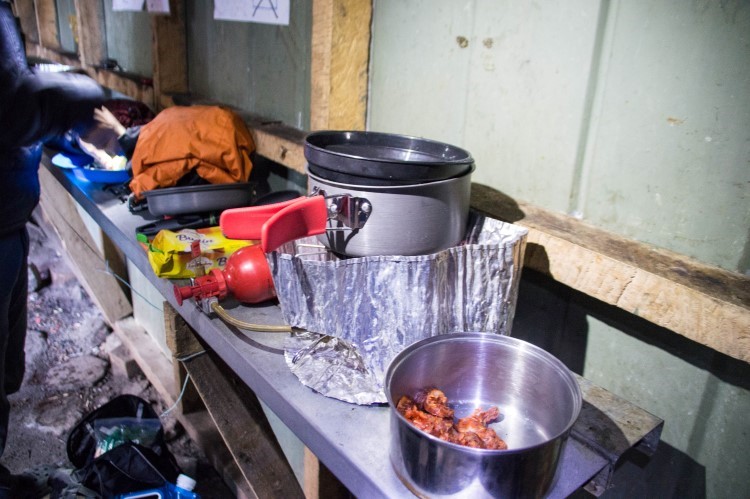
In smaller towns, such as those along the Carretera Austral, you will find mostly tinned goods, bread and some meat and cheese but you’ll struggle to find fresh fruit and vegetables.
You’ll also find prices significantly more expensive than in bigger supermarkets.
Large supermarkets generally always accept debit and credit cards and are normally open every day of the week until 9pm or 10pm, with shortened hours on Sundays.
Self-catering in Patagonia
If you want to keep costs down on your trip to Patagonia, self-catering is the easiest way. As I’ve mentioned above, you’ll want to stock up in bigger towns and cities.
Unfortunately, kitchen access is not a given with all types of accommodation, so I would recommend double-checking this before booking anywhere. Hotels very rarely have these facilities.
Campgrounds occasionally have stoves and cooking equipment, but this isn’t the norm; bring your own gear if you plan on camping.
If you’re after recommendations for light-weight cooking gear, check out my Patagonia packing list .
Remember that you cannot cross into Chile from Argentina with fresh fruit, vegetables or animal products, so avoid doing a big shop just before you cross the border!
Restaurants and dining in Patagonia
Dining on slow-roasted Patagonian lamb or a perfectly-cooked steak is the ultimate Patagonian dining experience, however it comes at a cost.
Restaurants are similar in price with those in Santiago and Buenos Aires, although quality is often much lower.
It’s not unusual to spend over $15,000 CLP ($23.5 USD) for a main and a drink in a medium-priced restaurant in cities across Patagonia and you can expect prices to not be much lower even in small, local restaurants in towns and villages.
However, cheap restaurants offering menu del dia (a fixed menu, normally of two or three courses and sometimes with a drink) can often be found for around $5,000 CLP ($8 USD).
You can always find empanadas in Argentina and Chile for around $1,000 CLP ($1.5 USD) too, which make for a cheap lunch.
Money and exchange in Patagonia
Making sure you get a decent exchange rate and can withdraw money are essential things to plan before you go to Patagonia.
Getting hold of money can be an issue, mainly in Argentina, and one that it’s worth considering before you leave home.
ATMs in Patagonia
You’ll quickly notice in Argentina that getting money out of ATMs can be a real pain in the arse.
I was in Ushuaia when practically all of the cash machines in the entire city stopped functioning for a few hours – not a good thing to happen when you’ve just crossed the border from Chile and have no money on you.
They also have tendency to run out of cash on weekends and bank holidays and can be petulant and not accept a lot of foreign cards.
There’s also a fixed $220 ARS ($8 USD) fee every time you withdraw cash and you’re only allowed to do so in batches of $2,400 ARS ($86 USD) making the whole process exceptionally expensive.
You’ll find that many hotels and tour agencies don’t accept credit cards.
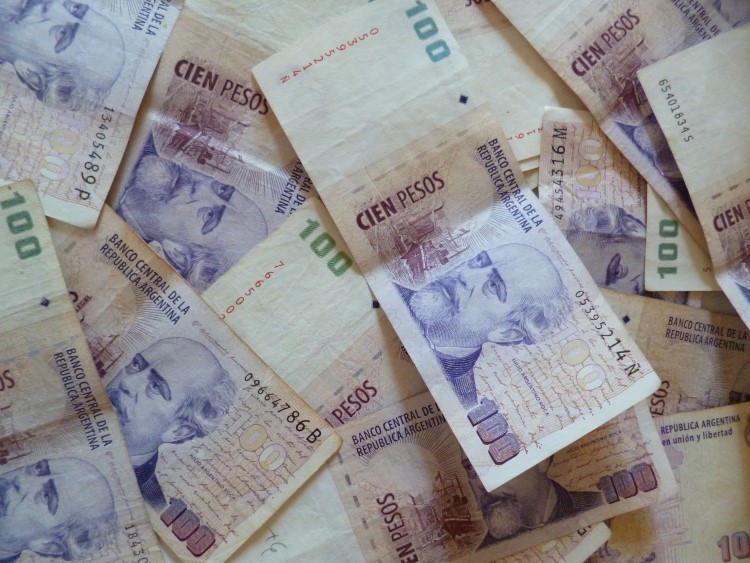
In Chile, withdrawing cash can be costly too. Most banks charge between a $4,500 CLP ($7 USD) and $6,000 CLP ($9.5 USD) fee for using the ATM, although you can withdraw up to a maximum of $200,000 CLP ($314 USD) at a time.
For me (a UK bank account holder), I’ve found that Scotiabank is the only one that doesn’t charge me anything to withdraw cash; unfortunately, I don’t know if this only works for European cards. It’s also a bank that’s only found in cities.
I’ve never had an issue with Chilean banks in Patagonia not having money, although there always is the possibility of small towns running out of cash on weekends and holiday weekends in summer.
Money exchange
While the days of the “blue dollar” are long gone (when you could exchange US dollars for up to 40% higher on the black market in Argentina than the official rate), Patagonia is still a good place to bring dollars with you.
Not only is it exceptionally safe, so you don’t need to worry too much about carrying cash, you’ll find that plenty of hotels and even tour agencies on both sides of the border offer discounts if you pay in dollars.
This is particularly the case in Chilean Patagonia and Chile in general where foreigners should get a tax break of 19% anyway, although in practice, smaller lodgings only offer this is you pay in physical dollars, when they should offer it to you for having a foreign card.
Dollars can be exchanged for good rates in exchange houses around Patagonia.
I was surprised to find that no one wanted to give me a good rate on exchanging Chilean pesos when I was in Argentinean Patagonia in April 2018.
You’ll also struggle to find good rates on British Sterling and Euros.
If there’s anything you think I’ve missed, please add it via the comments below or if you have any further questions, contact me directly at [email protected] .
I promise I don’t send spam: just tips, inspiration and the tools to make a South American adventure a reality , straight to your inbox!
FAQs about visiting Patagonia
What is the best month to visit patagonia.
The best months to visit Patagonia are typically November through mid-December and March. Known as the shoulder season, these months see significantly fewer tourists in the region than the high-season months of late December through February and the weather is still pleasant enough for hiking and other outdoor activities.
The weather in Patagonia is always unpredictable and it’s always possible to experience all four seasons in one day! However, typically in spring (October-November), temperatures hit up to 18°C (64°F), while in fall (March-April) they hover around 10°C (50°F). Wind speeds are also significantly lower than in summer, where they can read up to 120 km/h (74 miles/h) at their strongest!
Is Patagonia worth traveling to?
Yes, Patagonia is worth traveling to! It’s one of my favorite places on the planet and if you love hiking in beautiful national parks with a backdrop of snow-dusted peaks, are keen to spot endemic wildlife species such as guanaco, Andean condors, and pumas, or just want to go to “the ends of the Earth”, then Patagonia is a destination for you.
Sure, it’s expensive to visit because of its distance from major cities such as Santiago de Chile and Buenos Aires, and it’s certainly now on the tourist trail (and not as remote and quiet as many expect), but you won’t regret visiting Patagonia.
Where do you fly into to go to Patagonia?
Where you fly into to go to Patagonia depends on whether you’re visiting the Chilean or Argentine sides of the country. Most people fly from Santiago de Chile into Puerto Natales or Punta Arenas (for southern Chilean Patagonia, including Torres del Paine National Park), while others fly from Buenos Aires in Argentina to El Calafate or Ushuaia (for southern Argentine Patagonia, including the Perito Moreno Glacier).
If you want to visit other parts of Patagonia, there are alternative options. For the Carretera Austral in northern Chilean Patagonia, you’ll want to fly to Puerto Montt or Balmaceda. For Bariloche in northern Argentine Patagonia, you can fly directly there from Buenos Aires.
Is Patagonia better in Chile or Argentina?
As someone who lived for three years in Chile, I’m a little biased in saying that Chilean Patagonia is better than Argentine Patagonia. However, I still think it’s true. Chilean Patagonia has a lot more variety of scenery, from the fjords, isolated national parks, glaciers, and lush vegetation of the Carretera Austral, to the spectacular mountain scenery and wildlife of Torres del Paine National Park, it’s an exceptionally diverse place.
Argentine Patagonia also has its highlights, however. It’s incredible to get so close to El Perito Glacier, and the hiking from both El Chaltén and Bariloche is some of the best in South America. There’s also plenty of wildlife, from the penguin colonies and whales near Puerto Madryn to those accessible from Ushuaia.
Want to save this epic Patagonia travel guide for later? Make sure you pin it!
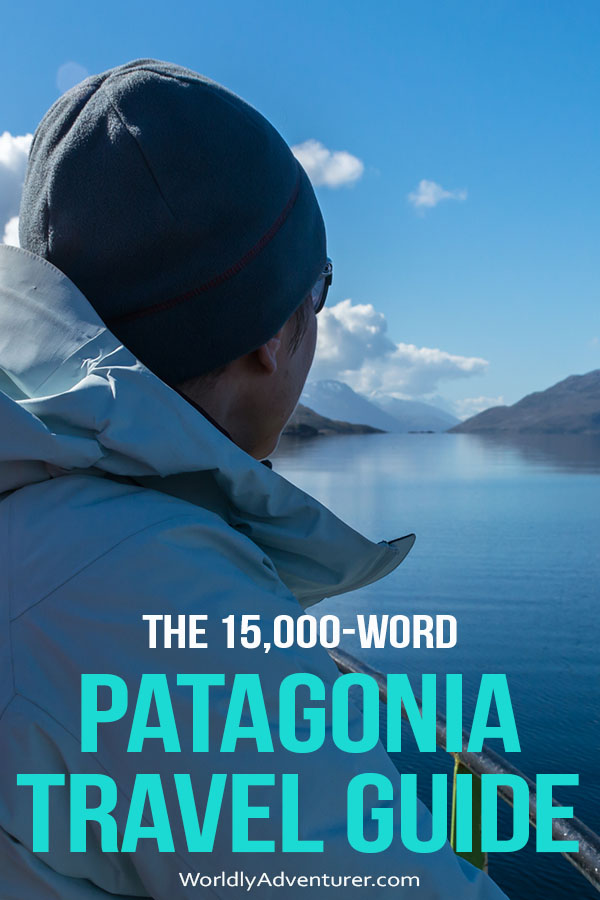
Javier Buchanan
Thursday 15th of December 2022
Hi Steph! Congrats on your post, it certainly has plenty of information of all kinds. If I'm allowed a comment, I think you should have inlcuded Bariloche on the "must see" list. It's Argentinian Patagonia's largest destination, apart from the ski, it has hundreds of hiking trails, lakes, mountains and fairy tale forests. Certainly a must for me :)
Steph Dyson
Hi Javier, yes lots of people love it! I found it very busy when I visited and that spoilt the experience for me but I'm keen to return and see if that changes my mind! Steph
The Vandersons
Tuesday 18th of October 2022
I'm curious why you say the "blue dollar" days are long gone?
We're here in Argentina and even better than the blue dollar (280 to 1 USD) is using Western Union (310 to 1 USD today), and the official exchange if you use an ATM like you suggest is only 145 to 1 USD!
Thursday 19th of January 2023
You are correct - I haven't had a chance to update this article recently! Steph
Sunday 9th of October 2022
I would like to go to Patagonia end of Jan for 2 weeks, I want to see the highlights, hike, see wildlife , see the fjords, glaciers, and sea life. I would like help in planning the trip. Thank you
Wednesday 12th of October 2022
Hi Janet, you need to drop me an email at [email protected] and we can chat further about your plan. Steph
Thursday 7th of May 2020
Hello Steph, this is a wonderful article.
Is there a better way to visit Atacama along with Patagonia? I like to plan this starting next Jan 2020 for 2 weeks.
And I don't see any tours for Atacama along with Patagonia but itself.
Thanks Gabe
Thursday 14th of May 2020
Hi Gabe, you'll have to fly into Santiago from Patagonia and back out again to San Pedro (or vice versa) to see both as there's no easy connection between them unfortunately! Steph
Monday 28th of October 2019
Thanks a lot for this helpful guide! Would be interest in your view on this: due to time restrictions (6 weeks in Chile) we are thinking about two questions: 1) Should we include the very south around Ushuaia in our schedule vs. focusing solely on the far north (Lauca, Atacama) and the areas around Puerto Montt, Chalten, Calafate, Puerto Natales and Punto Arenas? Either at the cost of something else or at the cost of a bit of travel stress 2) We are considering both Navimag (Puerto Montt - Puerto Natales) and the Yaghan (Puerto Natales - Puerto WIlliams) ferries. You seem to have done both. What would you suggest: both or only one? If you had to decide for one of them, which one would you recommend?
Would be very thankful for your guidance! Christian
Thursday 7th of November 2019
Hi Christian, personally I would recommend trying to make sure you have enough time to see everything in as much detail as you want (I would personally plan out day-by-day the itinerary and see if the trip you are trying to do is realistic - this is something I do for my travel planning clients!). I personally enjoyed the Yaghan more than the Navimag but it really depends on if you have the time to get that far south. Have a fantastic trip! Steph
Travel, Hiking, Food
10 Days In Patagonia: Patagonia Itinerary & Travel Guide for Argentinian and Chilean Patagonia

Looking for the best Patagonia itinerary? This Patagonia 10 day itinerary shows you the best activities to do in both Argentinian and Chilean Patagonia. This Patagonia itinerary includes the best hikes, how to get around Patagonia, best bus companies and places to stay on both sides of Patagonia.
Planning a trip to Patagonia in South America but not sure where to start? This is how I felt when I first started playing with the idea of hiking in Patagonia for 10 days. I did not even realize that Patagonia is in both Chile and Argentina before I started my Patagonia trip planning.
Patagonia is a large area at the tip of South America that offers so much to travelers. If you enjoy raw unspoiled nature, then Patagonia is heaven for you. There are amazing day hikes and multi-day treks, powerful waterfalls, horseback riding, glacier sighting, secret caves and even penguins!
Given the time constraint (only 10 days), this Patagonia itinerary will allow you to see all the highlights in Patagonia in both Chile and Argentina. This 10 Day Patagonia itinerary involves a lot of hiking as well as rest days and sightseeing, so choose your activities for yourself as you see fit.
This blog contains occasional affiliate links, where I receive a small commission on sales of the products/hotels that are linked at no additional cost to you. In addition, as an Amazon Associate, I earn from qualifying purchases .

Patagonia 10 Day Itinerary and Travel Guide Overview
Since Patagonia occupies 2 countries, you can either follow the order of this Patagonia itinerary or do the reverse.
We started off our 10 day Patagonia adventure in Chile and finished in Argentina . You can totally do the reverse of what we did on our Patagonia trip. We did a total of 2 day hikes in Torres del Paine in Chile and 2 days hikes and 1 glacier trekking in Argentina during our 10 days in Patagonia. You can see how I structured this Patagonia 10 day itinerary below:
Day 1 : Arrive in Punta Arenas, Chile Day 2 : Mirador Las Torres Hike in Torres del Panine, Chile Day 3 : Explore Torres del Paine Day 4 : French Valley Hike or Lago Grey (no hiking) Day 5 : Bus to El Calafate, Argentina Day 6 : Perito Moreno Glacier Day 7 : Bus to El Chalten + Day Hikes Day 8 : Cerro Torre Day Hike Day 9 : Fitz Roy Day Hike Day 10 : Departure from Argentinian Patagonia
Due to time constraint and the desire to see both sides of Patagonia, we didn’t get to do the entire W trek, which takes 5 days and involves camping. Instead we rented a car and also had private transfer to Torres del Paine for day hikes and sightseeing.
If you have 2 weeks in Patagonia, then you can adjust the itinerary below and do the 5 day W trek in Torres del Paine in Chile before heading to Patagonia Argentina.
Note that if you are planning to do the W Trek (or the O Trek) in Patagonia in Chile during peak summer time (December that is), you should try to book all the refugios or camp sites 6 months in advance.

How to get to Patagonia
Patagonia is a region in South America that is partially located in Chile and partially in Argentina. So it depends on which side of Patagonia you want to visit first.
Flying into Chilean Patagonia
If you are visiting Chilean Patagonia first (like with this 10 day Patagonia itinerary), then you need to fly into Punta Arenas or Puerto Natales. Punta Arenas is also the spot for most departure cruises for Antarctica, pretty cool right?
Punta Arenas (PUQ)
There are daily nonstop flights from Santiago to Punta Arenas with airlines such as LATAM , Sky Airline , and JetSMART with LATAM offering the most number of flights. Flights between Santiago and Punta Arenas are generally no more than $200 USD one way.
If you are visiting from internal destinations, you will obviously need to fly into Santiago first before connecting to Punta Arenas.
Once you land in Punta Arenas, you can take a bus to Puerto Natales (the town you will be staying at). More details on that later.
Puerto Natales (Teniente Julio Gallardo Airport) (PNT)
Another option is to fly into Puerto Natales, which is actually closer to the town where you will be staying (If you fly into Punta Arenas, you will need to take a bus to Puerto Natales anyway).
However there is not as many nonstop flights from Santiago to Puerto Natales. You can find flights from Santiago to Puerto Natales with LATAM and Sky Airline.
If Patagonia is your first stop in Chile, you will need to go through immigration in Santiago , pick up your luggage, get scanned at customs and go back into the airport to check in/board your flight from Santiago to Punta Arenas or Puerto Natales. So you should make sure you have enough time during your layover.
Flying into Argentinian Patagonia
El calafate (fte).
If you are going to visit the Argentinian Patagonia first, you will need to fly into El Calafate.
There are many nonstop flights from Buenos Aires to El Calafate on airlines such as Aerolineas Argentinas and JetSMART .
There are 2 airports in Buenos Aires, be sure to check which airport the flight is operating from.
How to Get Around Patagonia
One great thing about Patagonia is the ease of transportation from place to place and even between Chile and Argentina. You do not need a car to be able to get around Patagonia!
There are 3 main ways to get around Patagonia: bus, private transfer or tour, and driving.
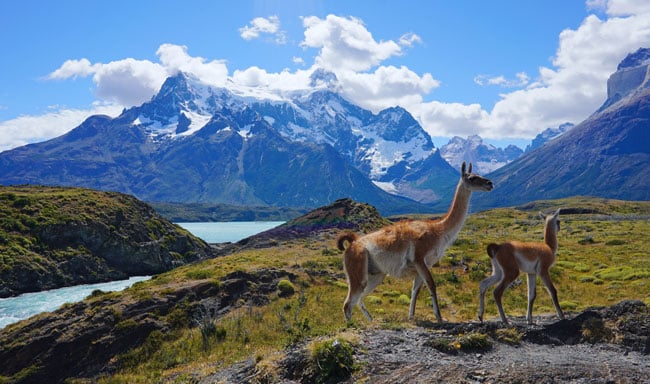
Getting Around Patagonia by Bus
Unless you are going to some off the beaten path place in Patagonia, buses can generally get you to the main attraction and hiking trails in Patagonia.
Bus in Chilean Patagonia
Bus Sur is one of the most popular bus companies on the Chilean side of Patagonia. It offers routes between Punta Arenas to Puerto Natales and to Torres del Paine (where you will hike), Rio Grande, Ushuaia (Argentina), Villa Tehuelches, and El Calafate (Argentina).
It also offers bus service between Puerto Natales (Chile) and El Calafate (Argentina) . You will need to have your passport in order to board this bus between countries.
Bus Fernandez is another option if you are just looking for transportation between Punta Arenas Airport to Puerto Natales.
Be sure to buy your bus tickets online ahead of time and print them out . At least when I went there was no mobile boarding so you need to show your paper tickets.
You cannot buy tickets in person from the airport so purchase your tickets in advance!
Bus in Argentinian Patagonia
Chalten Travel is the most popular bus company in Argentinian Patagonia. They are clean and reliable. We used Chalten Travel from El Calafate to El Chalten.
The bus can either pick you up from your hotel in El Calafate or you have to go to the El Calafate bus station. When you book the ticket online, generally it’s expected that you go to the El Calafate bus station yourself. However we found the Chalten Travel office on the main street in El Calafate and they said they can pick us up from the hotel.
Marga TAQSA is another popular bus company in Argentinian Patagonia. They have many routes in Patagonia.
The best way to book bus tickets in Patagonia is to use busbud so you can compare prices and timetables between the different bus companies in both Argentina and Chile.
Renting a car in Patagonia
If you want more flexibility in your Patagonia itinerary, then renting a car may be a good option for you.
Renting a car in Patagonia is also great if you want to do a lot of day hikes (instead of doing the W trek) in Torres del Paine or if you are a slow hiker. Since buses in Patagonia have set schedule, if you are a slow hiker you may actually miss the last bus to leave the park.
I will say this first, rental cars (especially the ones with automatic transmission) are not easy to come by in Patagonia, and this has gotten even worse since the pandemic. If you are planning to rent a car in Patagonia, be sure to book way ahead of time.
Renting a car in Chilean Patagonia
If you are planning to drive around Chilean Patagonia the entire time, it may be best to pick up a car when you land in Punta Arenas.
There are more cars available for rent there and you can use Expedia to search for rental cars from Punta Arenas.
If you are trying to rent a car from Puerto Natales, that will be more challenging.
There are some local car rental agencies in Puerto Natales, such as EuropCar , Punta Alta Rent Car , and Magallanes Rent a Car . You can also ask your hotel if they know any car rental agencies that they recommend.
Renting a car in Patagonia costs about $100-$200 a day depending on car availability, type, and date.
Renting a car in Argentinian Patagonia
It is a lot easier to rent a car in Argentinian Patagonia from El Calafate (this is where you can fly in or bus in from the Chile side).
You can find relatively abundant and cheaper rental cars on Expedia for about $80 a day (manual transmission). Automatic transmission is also hard to come by and can be very expensive (like $300 a day).
Again, you can also ask your hotel in El Calafate if they have any car rental agency recommendations.
Private Transfer and Tours in Patagonia
If you do not want to take a bus in Patagonia and do not feel comfortable driving in Patagonia, your last option to get around Patagonia is to book tours and even private transfers.
There are many amazing tours (even hiking tours) in both Chilean and Argentinian Patagonia on Viator and Get Your Guide .
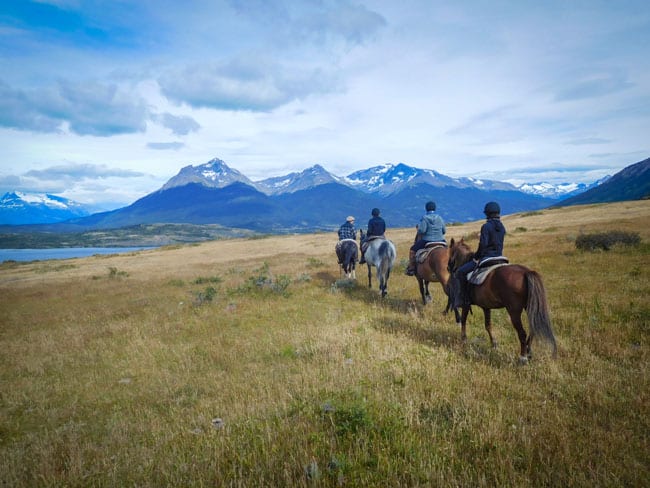
Best Patagonia Tours For Those Without a Car
If you want to do everything mentioned in this itinerary but don’t have a car (and don’t want to take a bus), I would recommend the following tours to make your life easier:
- Puerto Natales: Base of the Towers Day Hike . While you can totally hike Mirador Las Torres without a guide, but it is annoying to get to by bus. This tour will take pick you up from the hotel in Puerto Natales, take you to the hike, and drive you back. There is a guide but you can hike at your own pace. Book here .
- Torres del Paine Full Day Tour with Transfer . This tour is perfect for your 3rd day in Patagonia to relax and see some of the best natural sights in Torres del Paine without driving. Book here .
- French Valley Hike : Again, this is a hiking tour that can pick you up from Puerto Natales and take care of the logistics of the catamaran ride (you do have to pay for tickets). Book here .
- Perito Moreno Glacier Trekking & Tour (Argentina): You have the opportunity to trek on the famous Perito Moreno Glacier with a guide (and transfer), see the glacier from a boat and from the boardwalks. I did this and it was pretty amazing. Book Here . If you do not want to hike, there is a different tour to see the glacier without trekking.
10 day Patagonia Itinerary In Detail
Below is my super detailed Patagonia itinerary that shows you everything you need to know!
Day 1 of 10 Days in Patagonia – Arrival in Patagonia, Chile
As mentioned above, this 10 day Patagonia itinerary starts in Chile. The Patagonia Chile airport to fly into is Punta Arenas . This is also the spot for most departure cruises for Antarctica.
We took LATAM airlines from New York, with a short layover in Santiago. Unfortunately we didn’t have time to leave the airport in Santiago but if you have more time, it’s the perfect opportunity to explore Santiago.
Bus From Punta Arenas to Puerto Natales
Once you land in Punta Arenas (~3 hours flying from Santiago), board the bus for Puerto Natales (if you decide to stay in that town). Puerto Natales is the town most people stay in when they first arrive in Patagonia, Chile.
The bus ride to Puerto Natales from Punta Arenas is another 3 hours and Puerto Natales is 2 hours away from Torres Del Paine. We took Bus Sur from the airport to Puerto Natales. You can book your tickets here .
One thing to note is that these buses are not very on time… they tend to be 15-30 min late, so adjust your expectations and don’t freak out if the bus doesn’t come on time.
Why stay in Puerto Natales?
Puerto Natales is one of the biggest towns near Torres del Paine and it has a lot of restaurants, hotels, hostels, rental car services and super markets there. You can stock up for camping in Puerto Natales too before heading to Torres del Paine , where all the hikes are.

After arriving in Puerto Natales, it would be a good idea to check out the local super market and stock up on food for your upcoming hike tomorrow. We mostly bought bread, sliced ham, apple, fruit juice, water, cookies, and chips and packed our own lunch.

Where to Stay in Puerto Natales
There are many types of accommodation in Puerto Natales.
If you are a backpacker and looking for budget accommodation in Puerto Natales, I recommend hostels such as Red Point Patagonia , El Patagonico , and Corner Hostel .
If you have more budget and are looking for a more luxurious accommodation in Puerto Natales, then I would recommend Hotel Vendaval (where we stayed), and Natalino Hotel Patagonia .
Where to Eat in Puerto Natales
We stayed a few nights in Puerto Natales and tried several different restaurants. Some of our favorites are Pampa Restobar , Cafe Artimana , and Santolla .
Cafe Artimana only takes cash and the menu is only in Spanish. I really liked their sandwiches, skewers and lomo chicken chorizos. There are also many pizza places in Puerto Natales as well as bars.
Day 2 in Patagonia – Mirador Las Torres Hike In Torres Del Paine, Chile
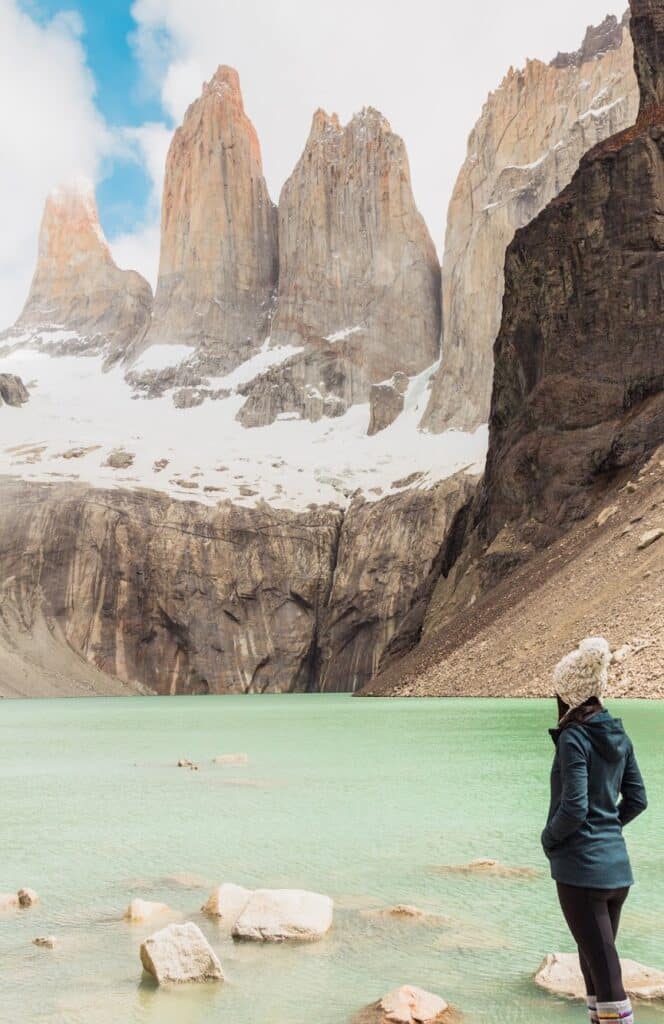
Get up bright and early to catch your bus/private transfer/drive to Torres Del Paine for your day hike to Mirador Las Torres (2 hours away).
The Mirador Las Torres hike takes about 8-9 hours round trip and mostly uphill . The view along the way is incredible and the view of Las Torres at the lake is even more amazing.
The Torres hike is a strenuous hike to say the least and it gets even more challenging when the wind is 40-50km/h, but the view at the summit is well worth the effort. It’s also a perfect spot to propose in Patagonia if you are planning to propose there.
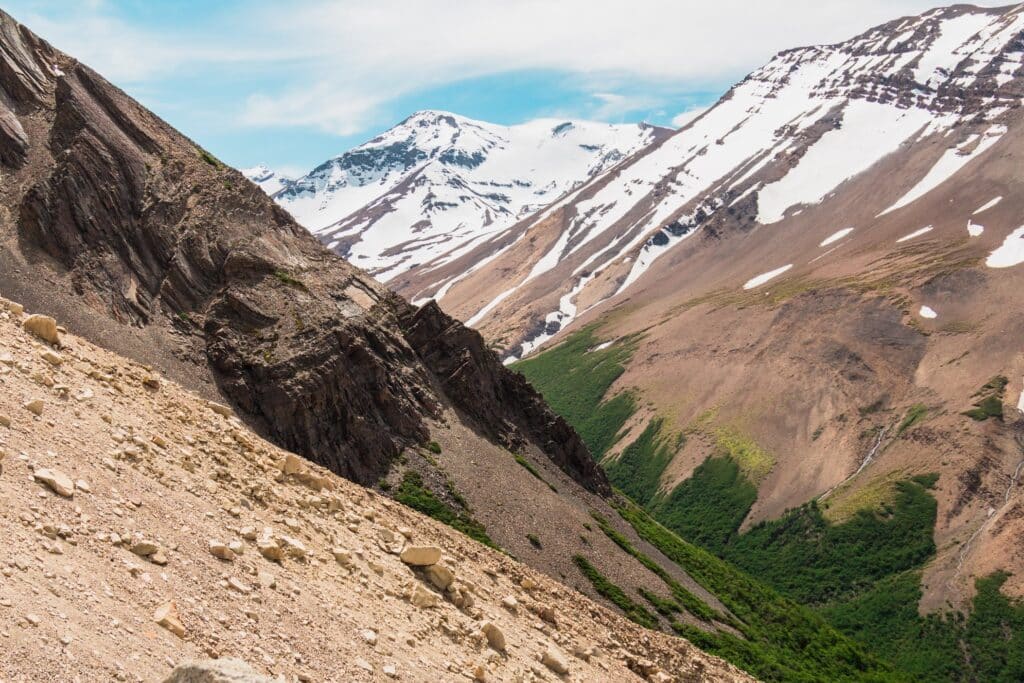
For more detailed information on the Torres hike and how to get to Torres del Paine, check out my post on the Towers Hike .
You will need to buy an entrance ticket to Torres del Paine when you arrive at the administration office. For foreigners that are 18 year old +, the entrance fee is USD 31.2 (cheaper for non-adults and children under 12 year old is free) for up to 3 days.
If you are planning to stay for more than 3 days, then the price is USD 44.5 for everyone except children under 12.
There are discounts for Chilean resident, adults with disabilities, children, etc. There is no ATM in Torres del Paine , so make sure to get money from Puerto Natales. You can also reserve your tickets online at the official website . You need to register first, then purchase tickets.
If you are driving to Torres del Paine yourself, after you buy your entrance ticket at the administration office, head towards the direction of “ Laguna Amarga ” towards Hotel Las Torres . The hiking trail to Mirador Las Torres starts at Hotel Las Torres .
If you are taking the bus yourself and want to catch the bus back to Puerto Natales, make sure to watch out for time so you don’t miss the last bus out.
The weather can be extremely windy and unpredictable in Patagonia so dress in layers and bring plenty of water, food and toilet paper. Also bring a trash bag so you can take your garbage back to town.
I highly recommend bringing hiking sticks for this hike as well as a wide angle lens. Read this wonderful post on how to pack for Torres del Paine for a more detailed packing list.

Day 3 of 10 Days in Patagonia – Explore Torres del Paine by Car (or Tour)

If you are not doing the W trek in Torres del Paine, you have a lot of time to explore the park and just take photos or do short mini hikes.
Many people choose to do day tours in Torres del Paine to the different view points and lakes or rent a car to explore Torres del Paine by themselves.
We ended up renting a car from Puerto Natales and drove 2 hours to Torres del Paine since we wanted the flexibility.
View Points in Torres Del Paine
There are many view points along the drive to Torres del Paine, many with amazing views of the towers. The great thing about driving is that you can pretty much stop anytime you see a pretty spot.
Many of the best view points in Torres del Paine are marked with parking lots so you don’t have to randomly park on the road. There are also a lot of signs on the road pointing to Patagonia so you should not be able to get lost.

Once you get past the administration office to buy your ticket into Torres del Paine, don’t take the path down to Laguna Amarga as that goes towards Mirador Las Torres (from the previous day).
Head towards” Pudeto ” to explore other parts of Torres del Paine.
Salto Grande is a short “hike” to see the best waterfall in Torres del Paine. It’s supposed to take about 15 minutes but due to the wind it took me 30 minutes one way to reach the waterfall.
After Salto Grande you can continue to hike to the Mirador de Los Cuernos for about an hour, which gives you amazing views of the peaks in Torres del Paine. We didn’t get to go because the wind was about 60kmph that day so it was a struggle to even walk to Salto Grande.

Day 4 of 10 Days in Patagonia – French Valley (Mirador Valle del Frances) Hike or Lago Grey
Option 1. french valley hike.
Another day hike in Torres del Paine that you can put on your 10 day Patagonia itinerary is the French Valley Hike . To do that, you need to get the first Catamaran inside the Torres del Paine at 9am (or take a tour but still need to ride the Catamaran)

The cost of the Catamaran (one way) is 40 USD. For more information on the Catamaran, check the official website here . You board the Catamaran from Pudeto to Refugio Paine Grande.
After getting off the Catamaran, you have to walk 2.5 hours to Italian Camp , which is the entry point of the French Valley. This hike is highly dependent on weather and the upper part of the valley is closed when it’s really windy for safety reasons.
If you are not planning to stay at a refugio there, then you need to catch the last catamaran back to Pudeto, so time your hike wisely.
You probably will not be able to finish the hike (get to the best view point) in time, so expect to only go half way. One thing to note is that it’s not possible to finish the hike and then catch the bus back, the timing just doesn’t work so a day tour might be the best.
If you want to do this as a day trip, I would suggest either rent a car, go with a tour, or get private transfer. Again, we used Todo Ushuaia’s private driver this day (you may need to find another private driver as the company we used may have closed).
Option 2. Visiting Lago Grey
On the other hand, if you decide not to hike the French Valley (or if the weather is so bad that they either shut down the hike or shut down the Catamaran, which is what happened to me), then you can visit Lago Grey instead.

There is a boat tour of Lago Grey from Hotel Lago Grey, you can find more information on their website . We did not do this but we did do a short “hike” from Hotel Lago Grey to the shoreline and up an island for a nice view point of Glacier Grey.

From the beach to the view point on the island is about a 20-30 minute walk, on the way back you can either go back down the same way you came up or go around the island for another 30-40 minutes.

Day 5 in Patagonia – Bus to El Calafate, Argentina
After 3 full days in Torres del Paine, it’s now time to travel to El Calafate, Argentina. There are daily buses from Puerto Natales to El Calafate. We took a 7:30am bus from Terminal Rodoviario Puerto Natales to cross the boarder into Argentina to El Calafate.
We used Bus Sur and there are 2 daily buses on Bus Sur. You can find the ticket here . The bus leaves at 7:30am from Puerto Natales and arrives around 2:15pm in El Calafate and the other bus leaves from Puerto Natales at 2:30pm and arrives in El Calafate around 8:30pm.
One reason the bus takes such a long time is because you have to stop by the Chile/ Argentina border.You first need to exit from Chile (and get a stamp) and then you have to wait at the Argentina border to get into the country.
Make sure to have your passport with you at all times as you will not even be able to board the bus without your passport.
All the buses in Patagonia give you an assigned seat so make sure to hold onto your ticket so you know which seat you get.
Where to Stay in El Calafate
El Calafate is a pretty big town so there are plenty of accommodation options in El Calafate.
We stayed in Hotel Kosten Aike which was really central and spacious. They provide breakfast everyday and you can pay for packed lunch to take with you for your day trip to Perito Moreno .

Once you get off the bus at the bus station, you can either walk to your hostel or take a taxi. We decided to not walk and took a taxi and it was only a 5 minute taxi ride to our hotel. Many backpackers just walked to their hotel/hostel near by.
This luxury hotel is located about a 30 minute drive from El Calafate but the view from the rooms are amazing. The hotel also has spa facilities, free airbus shuttle, amazing restaurant and bar.
Where to Eat in El Calafate
There are many restaurants in El Calafate, some are traditional Argentinian food whereas others are pizzas and pastas and pubs.
Some of our favorite places include Isabel – Cocina al Disco (traditional Argentinian place serving large portions meat stew with ravioli (optional)) and they take credit card.
Another amazing restaurant we liked was Mi Rancho (Argentinian food, REALLY good!) You definitely need to make a reservation for Mi Rancho and they only take cash . I really liked the meat and filled pasta at Mi Rancho.
Since we arrived in the afternoon, we just had lunch in Isabel-Cocina al Disco and walked around El Calafate.
Where to Exchange Money in El Calafate
You can exchange money both in banks and at Western Union in El Calafate.
Since we arrived on a weekend, the banks, located on the main street in El Calafate, were closed. We tried our luck at the Western Union and they did money exchange for us.
There are also ATM machines at the bank in El Calafate but apparently some machines have lower limits than other machines, so you will need to try several different ATMs in El Calafate to get the amount you need.
We didn’t have time to explore the whole city of El Calafate since it’s pretty big but we did spend a couple of hours just walking around the main street of the town. There are many souvenir shops, bars, cafes, restaurants, banks, and a post office.

Day 6 of 10 Days in Patagonia – Perito Moreno Glacier Trekking
The reason we decided to spend time in El Calafate is to visit the Perito Moreno Glacier located in the Los Glaciares National Park. I have heard about the glacier in Patagonia so I was really excited to visit.
Some of the best things to do at Perito Moreno Glacier are listed here:
Big Ice Glacier Trekking
Big Ice is one of the most popular activities in Perito Moreno.
You trek for about 4 hours on the Glacier itself. The excursion runs from mid September to end of April, weather permitting. From what I read it’s very physically demanding and tiring but you really get to see a lot of the glacier. It is a full day tour.
Mini Trekking
Mini Trekking as the name implies, this is a mini version of Big Ice during which you trek for 1.5 hours on the Glacier instead of 3 hours. You can book here .

They pick you up from your hotel around 7:30am in the morning. After about 1.5 hour drive you arrive at the port to take a ferry. The ferry ride is amazing because you get to see the glacier up close.
After about a 20 minute ferry ride you get off to walk around and eventually walk up the Glacier with crampon on.
It’s pretty tiring to walk on crampons on Perito Moreno so if you are not 100% sure you want to spend 3.5 hours walking on the glacier, this is a great alternative option. You also end the day walking on the Perito Moreno footbridge to get an amazing view of the glacier.
See Perito Moreno by Boat
If you wish not to do any of the trekking on Perito Moreno Glacier, then you can always take a boat tour ! This full day experience takes you to see the most impressive glaciers not just Perito Moreno but also Upsala Glacier and hanging glaciers such as Dry Glacier.
Kayaking at Perito Moreno
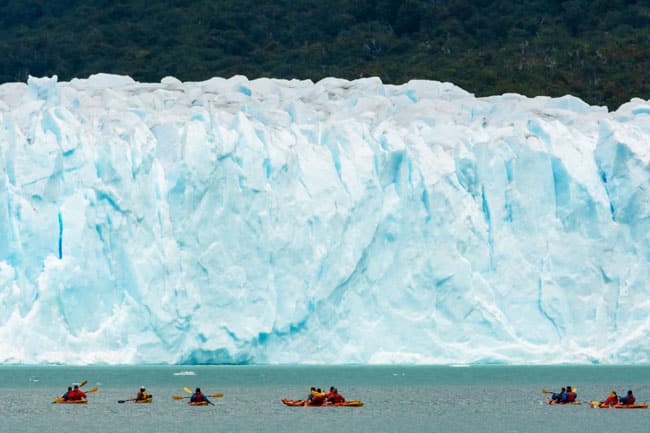
One thrilling activity you can do at Perito Moreno is to kayak near it! You will be able to explore the majestic icebergs floating in the water and enjoy the breathtaking view of this natural wonder.
See Perito Moreno from the footbridge

You can either take a tour or do it yourself to get to the footbridge, which gives you the best view of Perito Moreno.
The Mini trekking included a visit to the Footbridge. However if you are on a budget, you can take a bus from the bus terminal in El Calafate to “Glaciar Perito Moreno” either at 8:30am or 9:30am.
After a 90 minute ride, you will get off at the entrance of national park (and pay a entrance fee). The bus ride costs about USD$30 round trip and the entrance fee to the park is another USD$30ish. Bring cash to pay for your tickets! After you get off the bus you can either do a boat tour or walk up to the footbridge.
Day 7 of 10 Days in Patagonia – Bus from El Calafate to El Chalten & Day Hikes
After the adventure to Glaciar Perito Moreno, it is time to move onto El Chalten to start your Patagonia Argentina hikes on your 10 day Patagonia itinerary.
Why Visit El Chalten?
El Chalten is a very small town located in the middle of El Parque Nacional Los Glaciares. It is located about 3 hours away from El Calafate. Unlike El Calafate, you can literally walk from one end of El Chalten to the other end in less than 30 minutes.
The most famous hikes in Argentinian Patagonia is located near El Chalten, that is why this town is extremely popular and a must-do in Patagonia.
Most of the hiking trails in El Chalten start at the end of the town (away from the visitor’s center) so book your hotels wisely. Some hiking trails start at the beginning of town and the Cerro Torre trail head starts in the middle of town.
Unless you have a car, most people take a bus from El Calafate to El Chalten. There are a few bus operators in Patagonia Argentina but the one we used was Chalten Travel .
As with all the bus companies in Patagonia, your ticket have assigned seats and I highly recommend reserving your tickets online.
There are 2 daily buses departing from El Calafate on Chalten Travel, one at 8am and the other at 6pm. We decided to do 8am so we have the rest of the day in El Chalten for some short day hikes.
Route 40 (Ruta 40)
One note on Route 40, which is the route that the bus travels from El Calfate to El Chalten. The road is the longest route in Argentina and one of the longest routes in the world.
What’s so famous about Route 40 in Patagnoia?
Route 40 got its fame from the view you encounter when you are close to El Chalten. Unfortunately we could not get off the bus to take photos, but fortunately we got front row seats on the upper deck of the bus (yay for purchasing tickets months in advance), we got some pretty nice shots along the way.
Once you reach El Chalten, the bus will take you to the visitor center to understand the history of El Chalten and Mount Fitz Roy, safety information, park information, regulation, etc.
Where to Stay in El Chalten
Even though El Chalten is a small town, there are plenty of accommodation options such as hotels, hostels, and apartments. I even saw someone camping next to the road on the sidewalk.
We stayed at Los Cerros Boutique Hotel & Spa which was super convenient since it was in the middle of town.
The front desk of the hotel displayed daily weather information and breakfast was included. The view from the restaurant at the hotel was amazing and the rooms were bright and spacious. The perk of staying at this hotel is that it’s actually on the way to the Cerro Torre trail head.
Internet was pretty spotty when I was in El Chalten; it actually didn’t really work in the town half of the time when we were there. However it seems like the wifi works a lot better now in El Chalten so I guess technology has improved!
If you want to know the weather in El Chalten specifically, this useful weather forecast website is the one you need. It shows you the weather, precipitation, wind speed and wind gust every 3 hours which is incredibly useful to plan your hikes around the area.
Where to Eat in El Chalten
Since El Chalten is a small town in the middle of no where, there aren’t as many restaurants as in El Calafate or Puerto Natales.
Our favorite restaurant in El Chalten was La Tapera and we went back there every night. You should go when they open because the restaurant gets full and I saw them turning away many people every night. But I’m sure there are more restaurants now in El Chalten and Tripadvisor would be helpful in this case.
Since we went to La Tapera every night we pretty much tried all their dishes and they were all really good. I especially loved their homemade bread with dips as well as their vegetable soup and their pastas. Not only is their food delicious but the service was very fast as well, unlike some of the other places we tried in El Chalten! They also take credit card which was a major plus.
Short Hikes Near El Chalten
We arrived around 11am to El Chalten, and after checking into the hotel and getting lunch, we had an entire afternoon to explore the area.
There are a few short day hikes around El Chalten. One hike we did was 2 hour round trip waterfall hike called Chorrillo del Salto . To get to the trail head, just walk towards the end of the town (opposite direction of where the tourist office is).
The trail head is the same trail head as Fitz Roy but you will see signs pointing to Chorrillo del Salto. You can pretty much walk on the main road (where cars go). The road is pretty flat and boring. After about an hour, you will come to a pretty cool waterfall.

Another famous short hike in El Chalten is the Los Condores and Las Aguilas Viewpoints . This hike is near the tourist administrative office. It’s a short uphill hike and offers really nice views.
There are small markets in El Chalten that you should go to stock up on food/ make lunch for your longer day hikes to Cerro Torre or Mt Fitz Roy.
Day 8 in Patagonia – Cerro Torre (Laguna Torre) Day Hike From El Chalten
If you look at the Patagonia Argentina mountain outline, there are 2 major peaks that stand out. The taller and bigger mountain is Mount Fitz Roy and to its left there is a skinnier and shorter peak, that is the Cerro Torre.
On Route 40, you can see both peaks but once you start hiking, you can only hike towards one peak at a time (and the other one wouldn’t be visible).
The Cerro Torre hike is a relatively easy hike because it’s not really steep and it’s much shorter than the Fitz Roy hike. Cerro Torre hike is about 18km round trip , takes about 6 hours.
The hike is really flat except the first 10 minutes of the hike where you are hiking from the middle of El Chalten up to the official Cerro Torre trail head. Note there is no drones allowed in Cerro Torre.
Day 9 of 10 Days in Patagonia – Fitz Roy (Laguna de Los Tres) Hike From El Chalten

The Fitz Roy hike is perhaps one of the most iconic hikes in the El Chalten region in Patagonia Argentina. The Fitz Roy mountain range is the logo of the clothing brand Patagonia. It is no wonder that this hike is the most beautiful in the region.
If you can only do one hike in Patagonia Argentina then the Fitz Roy hike is the one you must do .I have previously written extensively on the Fitz Roy Day Hike , otherwise known as Laguna de Los Tres .
It is a much longer and harder hike compare to the Cerro Torre hike, with a crazy steep climb in the end.
The difficulty is comparable (if not more difficult) to the Mirador Las Torres hike in Torres del Paine, Chile. What makes the Fitz Roy hike better than the Torres hike? It’s the view along the way. For most part of the Fitz Roy hike, you can see the Fitz Roy mountain and the ground is relatively flat (except the first 3km and the last hour, which is a killer).
The Fitz Roy hike is about 20.4km (12.7 miles) round trip , 8-9 hours. You should definitely bring packed lunch, a lot of water, hiking pole, and layers as weather changes rapidly in Patagonia.

I’m very glad we decided to do this hike last because there is no way we would be motivated to hike Cerro Torre after this long and strenuous hike.
The trail is at the end of El Chalten and is also accessible by car (there is a car park at the trail head). I would recommend bringing a wide angle lens to the Fitz Roy hike because the mountain and the lake is just so massive (even more grand than Las Torres in Torres del Paine). Note that drones are not allowed on the Fitz Roy hike .
2 Day Cerro Torre & Fitz Roy Hike
There is an option for hikes to combine the Cerro Torre hike with the Fitz Roy hike. This hike requires you to camp overnight but the combined distance will be shorter than doing each hike individually. Camping is free in Patagonia Argentina so this may be an option for backpackers or those on a tight budget.
There are a number of other day hikes from El Chalten that look amazing. We simply did not have the time to do any more day hikes when we were there.
But if you still have time, do consider the Piedra del Fraile hike, the hike to Loma del Pliegue Tumbado, or even the multi day trek Huemul Circuit which takes you to the Southern Patagonian Ice Field. I did read this multi-day hike is crazy difficult and you need a GPS to help you navigate.
Last Day of 10 Days in Patagonia – Departure from Patagonia, Argentina
After a perfect and action packed 9 days of your 10 day Patagonia itinerary, it’s time to say goodbye.
To fly out of Patagonia Argentina you have to go back to El Calafate from El Chalten. We used Chalten Travel again and got on the 7:30am bus (there are 3 buses from El Chalten to El Calafate everyday, the times are 7:30am, 1pm and 6pm).
If you are going directly to El Calafate airport, the bus actually stops at the airport first before making its way to El Calafate. You can just get off the bus at the airport (even if your ticket says you are going to El Calafate).
Short Layover in Buenos Aires, Argentina
Generally you will have to layover in Buenos Aires before getting on another flight home (or somewhere else in South America). We ended up having one night in Buenos Aires during the layover so we used uber to get around the city.
There are 2 airports in Buenos Aires. Aeroparque Jorge Newbery is located closer to city center (about 15-20 min Uber ride) and serves mostly domestic and regional flights. Your flight from El Calafate will be landing in this airport.
Ministro Pistarini International Airport (known as Ezeiza) is the international airport in Buenos Aires and is about an hour away from city center. If you are leaving Buenos Aires to go home, then most likely you will be flying out from Ezeiza. So when you book your flights, make sure to pay attention to which airport you are flying into/out of in Buenos Aires.
Where to Eat in Buenos Aires
If you only have a short layover in Buenos Aires I would recommend going to Don Julio to eat steak since Argentina is famous for steak and wine. Don Julio (Guatemala 4699, 1425 CABA, Argentina) is one of the best steakhouses in Buenos Aries so you simply cannot miss it.
There is always a long line at Don Julio but you can make reservation ahead of time. When you wait to be seated the restaurant will give you a glass of champagne which is nice. Don Julio has really good steak (we got T bones) as well as lamb sausage and blood sausage. The portions of steak is really big and well seasoned.
Where to Stay in Buenos Aires
Since we only had one night in Buenos Aires and we wanted to eat at Don Julio, we decided to stay closer to the restaurant without spending a lot of money. We stayed in a private room at Malevo Murana Hostel (Russel 5050, Buenos Aires, Argentina).
Even though it’s a hostel, our room was extremely clean and had a private bathroom, AC, and wifi. I would definitely stay there again if I visit Buenos Aires again. It’s also located in a really nice part of town and about 10 minute walk to Don Julio.
Unfortunately I only had a short layover in Buenos Aires but if you have more time to spend there, check out this awesome itinerary of 3 days in Buenos Aires .
Hope you enjoy your Patagonia trip based on my 10 Day Patagonia itinerary. If you only have 1 week in Patagonia, you may want to consider cutting out some of the day trips to Torres del Paine. Similarly if you have 2 weeks or longer in Patagonia, then consider doing the W trek in Torres del Paine as well as the hikes in El Chalten.
Practical Information For Your 10 Day Patagonia Itinerary
Where is patagonia .
Patagonia is located in the Southern part of South America. Patagonia is a region in the southern part of Chile and Argentina. It’s about a 3 hour flight from Santiago in Chile or Buenos Aires in Argentina. Patagonia Chile is known for Torres del Paine and Patagonia Argentina is known for the Perito Moreno Glacier as well as hiking near El Chalten (Mt Fitz Roy & Cerro Torre, etc)

When is the best time to travel to Patagonia?
The best time to visit Patagonia is December to March (summer in the Southern Hemisphere). The weather is warmer and trails are dry. It’s much windier in the summer time in Patagonia than the winter time however. Patagonia weather in November is probably the windiest time of the year and it can rain/snow all in the same day.
How Much Time Do I need For Patagonia?
It really depends on how much time you have and what you want to see in Patagonia. Patagonia is a big region covering both Chile and Argentina.
In Patagonia Chile alone you can spend as little as 3 days and as much as weeks and the same for Patagonia Argentina. The 10 day Patagonia itinerary covers some of the highlights of Patagonia but you can always stay for much longer to see everything else.
If you plan to do the W trek in Torres del Paine, then you will need a minimum of 4-5 days in Patagonia Chile. I will suggest to spend no less than 1 week in Patagonia.
Can I go to Patagonia in the winter (June – August?)
You can definitely visit Patagonia in the winter in southern hemisphere, however, you will need a guide to do the hikes because snow will have covered the hiking trails. The snow will also make it harder to hike to many places so plan accordingly.
What’s the weather like in Patagonia?

Weather in Patagonia is extremely unpredictable. Due to its location, it can be extremely windy especially in early summer (end of November/early December) and the temperature is high 70 and low 40s.
To give you an example, when I went to Patagonia the end of November, I had to wear 1 sweat shirt and 1 sports jacket during the hike. Of course it gets warm during the hikes in Patagonia but you should have enough layers so you won’t be cold.
You may also experience all four seasons in one day (sun, rain, hail, snow, wind, etc. The wind speed in Patagonia can be as much as 80 mile per hour, it is not safe to hike during those times.
The catamaran also gets shut down when it’s that windy. If the windy speed is 30-40mph you can still try to hike, but use caution as the gusts can be quite sudden and powerful and can knock you down to the ground.
What is a good website for Patagonia Weather Forecast?
We used mountain-forecast.com for all the forecast and it was great. Torres del Paine : https://www.mountain-forecast.com/peaks/Paine-Grande/forecasts/500 El Chalten : https://www.mountain-forecast.com/peaks/Cerro-Fitzroy/forecasts/500 The website tells you wind speed by the hour so you can see if you should go hike on a certain day.

What to see in Patagonia without hiking? Is Patagonia worth going without hiking?
You don’t need to hike to enjoy the beauty of Patagonia and I highly recommend adding some non-hiking days to your Patagonia itinerary. There are plenty of activities you can do in Patagonia without hiking.
In Torres del Paine you can rent a car and drive around the park and walk to see waterfalls and Lago Gray.
In El Calafate Argentina, you can take a boat to get close to the Perito Moreno Glacier to go to the observation deck to see the glacier up close.
Many luxury hotels in Patagonia also offer full day tours to certain view points or to places where you can just walk and enjoy the scenery with no hiking required.
If you are interested in penguins, you can see them when you are in Chile. You can see king penguin on this nice tour .
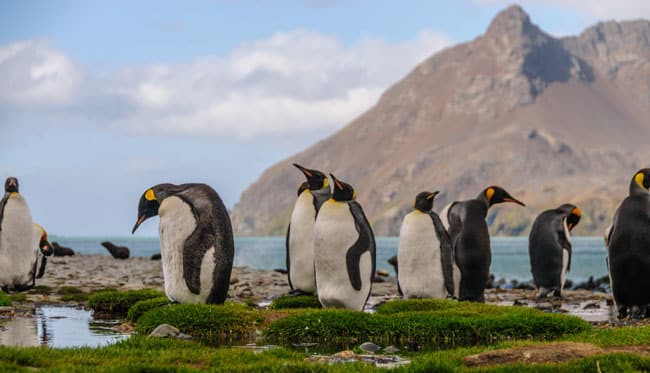
Another fun activity you can do in Patagonia is whale watching , where you could potentially see Humpback Whales, Sei Whales, Southern Dolphins, Oyster Dolphins, etc.
How much money should I budget for Patagonia?
Patagonia can be done cheaply or extremely expensively, depending on your budget and travel style. If you want to do a budget travel trip to Patagonia then plan to camp and cook your own food, It would be $5-$20 a night for Patagonia budget trips; private rooms in guest houses can be between $20-$60 and hotels can range from $200 – $500 a night.
Similarly if you want to take buses around, it will be pretty cheap but renting a car can cost about 100 USD a day or taking a private tour can cost between $150 – $200 a person a day.
Is Patagonia Safe for Solo Traveling especially for women?
Since Patagonia is so remote, people are mostly locals who work in the tourism industry or tourists/backpackers. I felt pretty safe in Patagonia so if you don’t mind hiking alone, then you can totally solo trip it.
The most danger you will experience is probably getting lost or fall although the trails are very well marked so I’m not sure how anyone can get lost.
Hikers on the trail are also very friendly and encouraging, so it’s pretty nice for solo travel. There are also many refugios (hostels) on the hiking trails in Patagonia so you can always make new friends hiking Patagonia.
What Camera lens should I bring to Patagonia?
I highly recommend bringing both zoom lens as well as a wide angle lens to Patagonia.
I didn’t bring a wide angle lens and it was difficult to take photos at Mirador Las Torres (Torres del Paine) and the Fitz Roy (Argentina) because the mountains were so big.
Iphones are generally pretty wide angle but if you plan to use a camera with interchangeable lens, then I highly recommend an ultra wide angle lens for your Patagonia trip.
Can I use credit cards in Patagonia?
Many restaurants and hotels in Patagonia accept credit cards. However, I would recommend getting cash from ATMs/Cash Machines at the airports if possible because not all places accept cash. There is no ATM in Torres del Paine or El Chalten, so plan accordingly.
Can I use drones in Patagonia?
From what I read, Chile requires a permit to fly drones and the process is quite long. Also, it may not be a good idea to fly a drone in Patagonia since it’s very windy and the wind speed is between 20mph to 80mph depending on the season and the day.
Your drone will probably crash in such turbulent weather. In Patagonia Argentina there are specific signs saying no drones are allowed, so please don’t be a jerk and disturb the peace and quietness for other hikers. Nobody wants to have a drone in their photo when they’ve hiked hours for the view!
Additional Reading To Help Plan Your Patagonia Itinerary
- Perito Moreno Glacier Mini Treking : https://serenaslenses.net/perito-moreno-mini-trekking-in-patagonia-argentina/
- Mirador Las Torres Day Hike in Torres del Paine : https://serenaslenses.net/day-hike-in-patagonia-mirador-las-torres-chile/
- Monte Fitz Roy Day Hike near El Chalten, Argentina : https://serenaslenses.net/patagonia-day-hike-mt-fitz-roy-laguna-de-los-tres-el-chalten-argentina/
Like this Post? Pin this 10 day Patagonia Itinerary to Pinterest!

Read my privacy policy .
- Kale by LyraThemes.com.
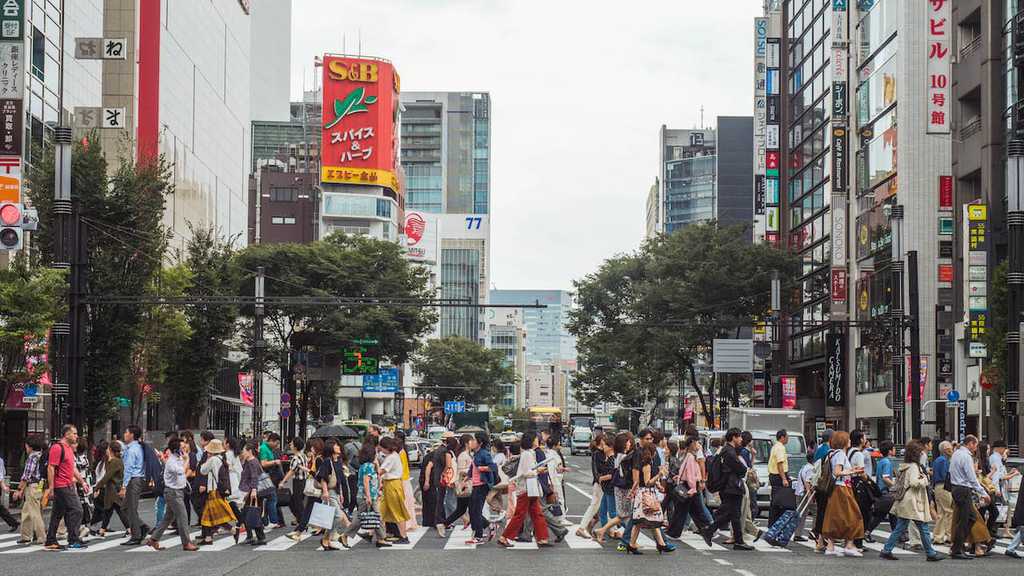
The ultimate 10 day road trip in Patagonia
By Sydney Tong on September 17, 2017 . Read time: 10 mins .
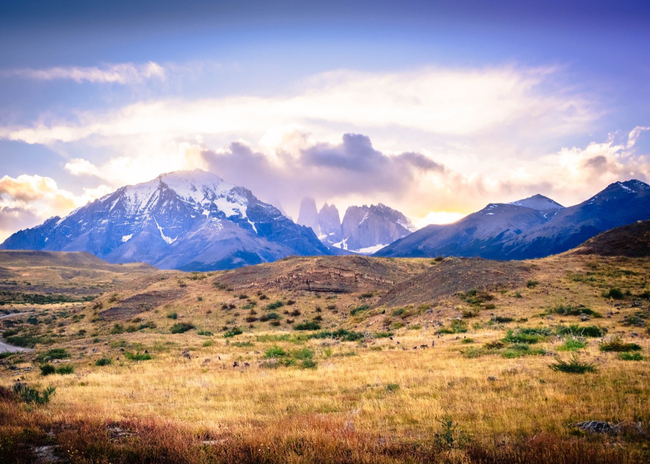
Camping in Patagonia was the most epic adventure I have ever tackled. The region has a human-like temperament and a strong personality that answers to no one. In one day it is possible to experience all of the seasons as she changes her mood frequently without warning. I felt like I was at the complete mercy of Mother Nature as I ventured into the wild world of Patagonia.
The itinerary
Gabe and I had the opportunity to travel to this end of the world while we were attending school in Santiago Chile. Within a week of deciding it was time to go, we were on a plane to Punta Arenas to begin our journey. We were vastly underprepared and only had a few days to do research, buy gear, rent a van and plan it out.
We rented a Wicked Camper Van, which was the best decision because we could go where we wanted when we wanted. Patagonia represents freedom and the thought of being confined to the time schedules of tour groups and buses didn't seem fitting for the trip we had in mind.
Before we knew it, we were cruising in a sweet Suzuki Jimny 4WD with a pop-up tent on top. We had ten days to experience as much of Patagonia as we could. While ten days isn't much time, it was enough to taste a bit of everything.
We made some mistakes on our trip. We stayed too long in some areas and did not have sufficient time in other regions. If we had the chance to make this trip again, we would structure it differently to save precious time and some change. Here is our driving route for ten days, hopefully, it prepares you for your adventure.
If you don't have much time, consider your entire trip in Torres Del Paine OR Los Glaciares National Park.
Renting a Wicked Van was the best decision
- Day one - Zona Franca, Magdalena Island, Marta Island, Cemeterio de Punta Arenas
- Day two - Cerro Dorotea
- Day three - Hike the "W", Lake Pehoe
- Day four - Hike Lake Pehoe lookout, Lago Grey
- Day five - Perito Moreno, The Glaciarium
- Day six - La Leona Petrified Forest
- Day seven - Hike Mount Fitz Roy, Laguna de los Tres
- Day eight - Viedma Glacier
- Day nine - Horseback riding in Cerros Frias
- Day ten - Mirador Cerro de la Cruz, La Luna
If your plans include renting a Wicked Van, you will need to get a flight into Punta Arenas. Hopefully, you can book a van with enough notice, so it's available when you land. We spent a lot of quality time in Punta Arenas while we were waiting for our van. Luckily for us, Punta Arenas is a large city with a fair amount of things to do and interesting sites to see.
If you need to pick up gear, food and other last minute supplies then take a cab to Zona Franca. They have some discounted gear but don't expect it to have everything you need. Equipment and gear are expensive in Patagonia and the more remote the area, the more costly it will be.
Bring reusable grocery bags. Otherwise, you will not have anything to carry your newest acquisitions and Unimart won't assist you.
If you don't plan on going to Rio Gallegos in Argentina to camp with penguins, then tours are available from Punta Arenas. The tour takes visitors on a 4-hour tour to Magdalena Island and Marta Island to view a penguin colony. This option is a touristy alternative to Rio Gallegos.
If you have time, I recommend checking out Cementerio de Punta Arenas. This cemetery has elaborate headstones and ornate family mausoleums. This cemetery is rated by CNN as one of the most impressive cemeteries in the world. Do not miss out.
Amazing mausoleums hedges are everywhere in this cemetery.
Schedule to pick up your Wicked Van as early as possible to drive three hours to Puerto Natales. The location to pick up the van is based out of a hostel. They open at 10 am but are accommodating if you need to pick it up earlier. They used to have a deal, if you show up butt naked, then you get a day free. This offer is no longer valid, but they have a variety of deals to help cut on costs for the backpackers ballin' on a budget. Note, we didn't show up naked.
Once in Puerto Natales stretch your legs at Cerro Dorotea which is a two-hour roundtrip hike. It overlooks the city and the ocean and is a good warm-up hike for the more demanding hikes that will come later in the trip. Local farmers own the land and charge an admission fee for access to this hike.
If you are starting in Punta Arenas and want to explore the east side of Patagonia give yourself more than ten days.
After the hike, grab some lunch at any of the hippy-dippy restaurants and walk around the town. Snap pictures of the ocean and some of the famous landmarks around town. We enjoyed our short stay in this charming city, but we were ready to get into the great outdoors.
The drive from Puerto Natales to Torres Del Paine is a little under an hour. Plan on it taking longer because the views of the 'Torres' as you enter the park are spectacular. You will also pass beautiful lakes, mountains and wild herds of vicuna. We entered the park later in the afternoon and saw the towers with a sunset backdrop. It is truly a remarkable sight to see.
"Camping Torres" campground is at the base of the east side of the "W" and is free. We set up camp in between some trees to protect us from the wind. We ate spaghetti, drank red wine and enjoyed our first night under the stars.
The drives are not bad at all!
After coffee and breakfast, it is time to hike the first leg of the "W." The "W" is a 5-day hike and the most iconic adventure in Torres Del Paine. The first leg of the eastern start is 3 1/2 hours roundtrip with out-of-this-world views of the valley and the river. The hike is windy, and trekking poles are helpful to keep from being blown over. There is a rest point to eat lunch and relax before turning back.
An alternative hike would be the western leg of the hike to Glacier Grey.
The drive to Lake Pehoe takes about two hours and is a stunning palette of colors. Glacial lakes give off a milky turquoise color, and our pictures from this area don't look real. We saw glacial lakes when we drove into the park, but to see them glittering in the sunlight is a different experience.
Campground Lake Pehoe is right on the lake and is the most beautiful camping spot in the entire park. It costs about 11.000 per person, and it is worth it. Each camping spot has a tall wall to protect tents from the strong winds. I'd recommend reservations if you are traveling in the peak season.
Other worldly views during the first leg of the hike.
Wake up your body with a 2-hour hike to the Lake Pehoe look out. The winds are incredible, and at some points, we had to hide behind rocks and crawl on the ground because it was too hard to walk. I have never experienced the wind like this before, and it was a memorable adventure.
Drive to Lago Grey to walk along the lake from Guarderia on the southern shore. The dramatic unrefined scenery is the perfect backdrop to enjoy lunch. You'll be able to catch your first glimpse of a Patagonian glacier.
By this time we were coming painfully close to not having enough gas for the two-hour drive back to Puerto Natales. We needed to go back to fill up on gas before our three-hour drive to El Calafate.
Accommodations in El Calafate are plentiful and are posher than what we experienced previously. Choose to camp in Glacier National Park or the city. We opted to camp in El Calafate at El Ovejero campgrounds. It is a full amenities campground. We got to know our neighbors next to us. We just so happened to be wearing matching fleeces and were both renting vans from Wicked Camper.
Views of Lake Pehoe from above.
Day five was an epic day around Perito Moreno, the most popular glacier in Patagonia. Book a kayaking tour around the glacier or admire it from the shore. You will want to set apart a significant portion of your day for this amazing glacier.
The Glaciarium is an in-depth and informative museum on the glaciers, ice and ice fields. The exhibits in the museum are organized, and we learned a ton. The museum also features an ice bar, if you want to bundle up in a cold glacier-like room while you drink cocktails.
If we could make this trip again, we would have camped in the park for both nights. We were noobs and didn't know what to expect.
The great glacier, Perito Moreno. The view is from shore.
No somos hippies, somos happies!
On the three-hour drive to El Chalten, make a detour at La Leona Petrified Forest. The desert is a stark contrast between the ice fields and forests seem from previous days. See petrified forests and dinosaur fossils from 70 million years ago. It is on private land so expect an entrance fee. Hire a guide and meet them there for first-hand information on the area.
El Chalten is a small town, and it was my favorite out of all the towns and cities. Not only is it the gateway to Mount Fitz Roy, but it is home to beautiful lakes, hikes, glaciers and spectacular panoramic views. Camping spots are plentiful here; we chose to stay at El Relincho campground which is minimalistic but devastatingly gorgeous.
Hiking in Pali Aike National Park.
The epic days flow freely in Patagonia. El Chalten has many epic trails worth writing home about. Get a taste of what Mount Fitz Roy is famous for with a day hike version. If you're still craving more glacial lakes, then hike Laguna de Los Tres for a fantastic day. It's incredible how much-understated magnificence is in such a small town.
Many of the stores and restaurants in El Chalten are cash only, and there aren't many places to access the internet. There is a bank in the town, but it always happened to be closed when we tried to get some cash.
Have enough cash on hand to fill up your tank because the only gas station in town is cash only.
Setting up shop for the night is easy in these vehicles.
Hiking and ice climbing the Viedma Glacier were my favorite memories of the trip. This experience engaged all my senses and left me feeling humble and grateful for my day with Mother Nature. It left such a strong impact on me that I wrote an article on our adventure. Use the link here for a good read.
If you cannot climb, book a hiking tour across the glacier. Please do it. You will not regret it.
The journey home has begun, and this is where you can choose between two different routes home. Drive back to Punta Arenas the way you came or drive to Rio Gallegos to see the penguin colony and hike Pali Aike.
We chose to go back to Punta Arenas through Rio Gallegos. We cherish our time spent camping with penguins, and it was an unforgettable experience, but it consisted of a lot of driving, and the end of our trip felt rushed. I wouldn't choose to go through Rio Gallegos again unless we had more time.
The Viedma Glacier climb is an 8-hour excursion. After dinner and the 3-hour drive, expect to arrive in El Calafate in the evening. It was a long and exhausting day, and I felt completely satisfied with my life choices.
Read how to climb the Viedma Glacier
Climbing Glacier Viedma.
Wake up in El Calafate and take a horseback riding tour through Cerros Frias. Expect the body to be sore from all the hikes and the climbing. After your peaceful day in El Calafate drive back to Torres Del Paine for one last night under the stars.
Weather in Patagonia can change in an instant. Stay up to date on weather reports and allow flexibility when making plans.
Camping with wild penguins in Rio Gallegos Argentina.
Pack up camp and drive the last four-hour stretch to Punta Arenas to return the van. Wicked doesn't require you to return the car with a full tank, but they do expect it to be clean of garbage.
Ask Wicked if you can leave your bags/luggage at their headquarters while you explore Punta Arenas.
Depending on your flight out, there are a bunch of things you can do here. I recommend checking out the view of Punta Arenas from Mirador Cerro De La Cruz and eating dinner at La Luna. It is the best restaurant in Punta Arenas, the food is cooked to perfection, they have an excellent drink list, and the service is top notch with affordable prices. It was the perfect ending to our trip. Cheers! Tips for your camping trip here
El Mirador in Punta Arenas.
- If we were to make our trip itinerary again, it would look similar to this. Patagonia is huge, and there is a lot of driving. Cutting down the driving into more digestible sections is highly recommended.
- It was the best camping trip we have ever taken, and we saw so much. Patagonia carries a heavier price tag but there are ways around it, and it is one of the only places that we can say is worth the price. We’ll have an article up in the future about cutting unnecessary costs in this area.
- Wicked has a daily allowance of kilometers. Our driving route, through Rio Gallegos, meant we were charged an extra $150USD for going over our limit.
- Don't be afraid to pick up hitchhikers. We picked up a couple from Israel and a vagabond Frenchman. We had a good time learning how to communicate in a variety of different languages.
- Be open-minded to new experiences I promise you it will improve your trip a hundred times over.
Do not rush your trip, take your time. You are in Patagonia, the most beautiful place in the world.
If you like it, Pin it!
Join our weekly adventures
Gain access to our exclusive travel tips and more! Expect exotic destinations, big adventures, flavorful food and unforgettable stories from our travels.
Related Articles
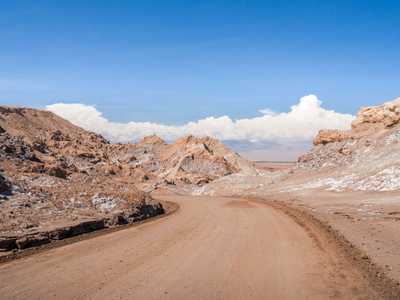
Riding bikes on the moon : Valle de la luna
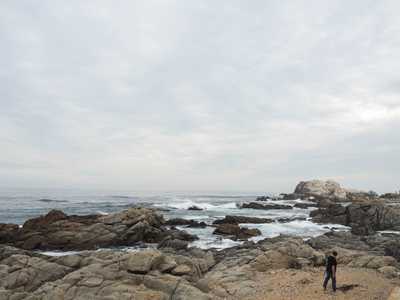
Getting to Viña del Mar from Santiago
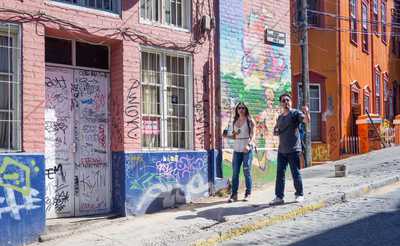
Getting to Valparaiso from Santiago
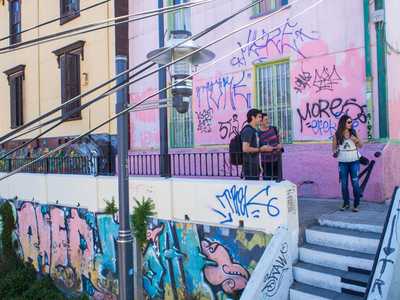
Things to do in Valparaiso
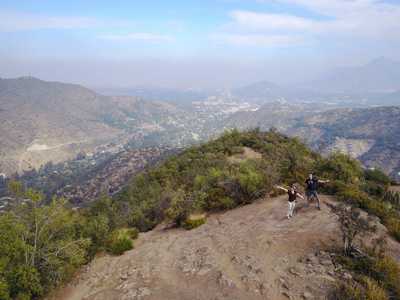
Hiking Cerro Pochoco
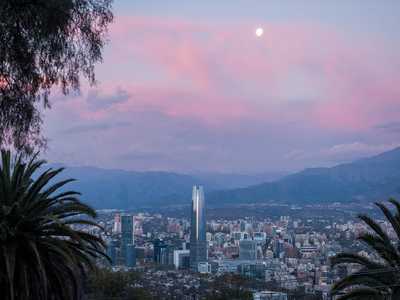
To and From Santiago's Airport
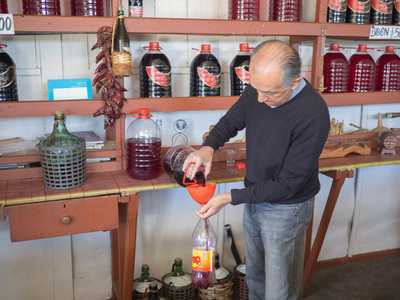
11 Unique Drinks from Chile
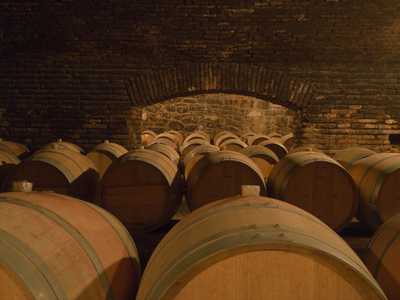
Concha y Toro Vineyard
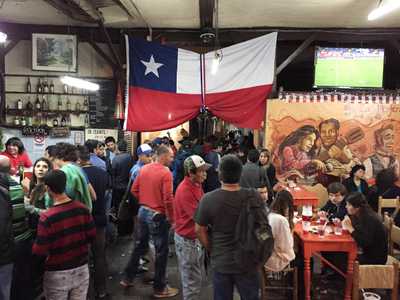
La Piojera : The Most Chilean Bar
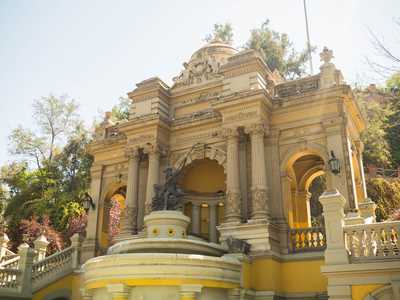
Things to Do in Santiago Chile
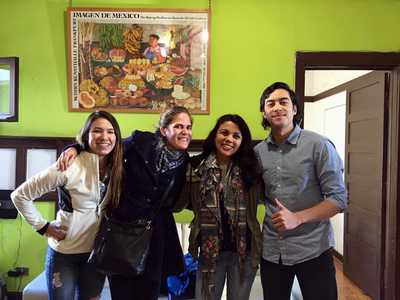
Escuela Bellavista Spanish School
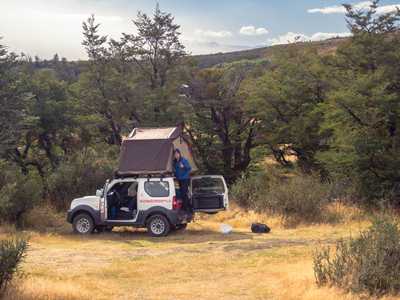
Tips for a wicked camping trip in Patagonia

Riding bikes through Maipu Valley's Vineyards
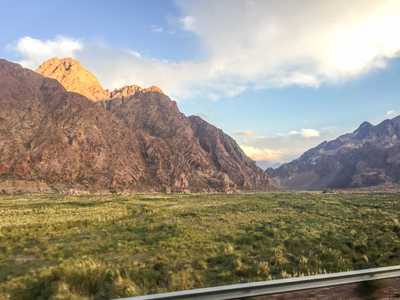
What to Expect when Riding the Bus from Santiago to Mendoza
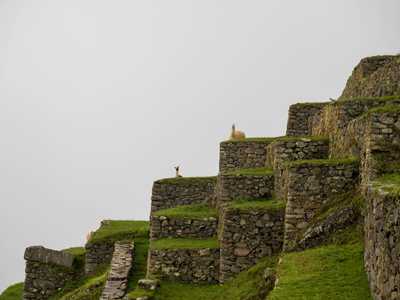
Booking Tickets to Machu Picchu
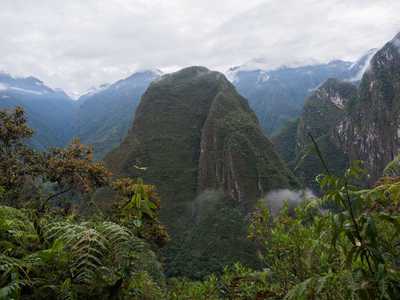
Hiking to Machu Picchu
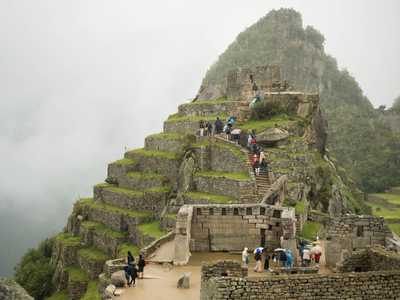
Machu Picchu on a Budget
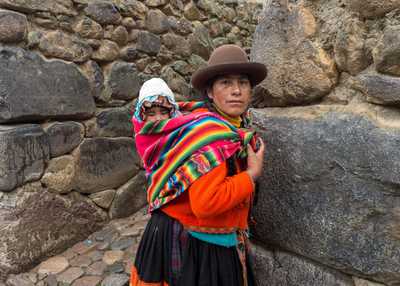
Things to do in Ollantaytambo
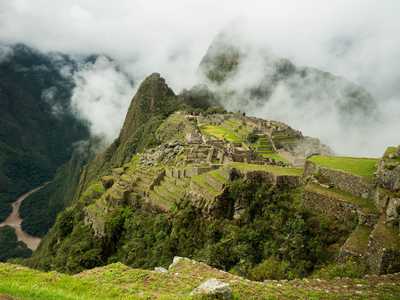
What You Need to Know About Machu Picchu

10 Days in Peru - The Ultimate Itinerary
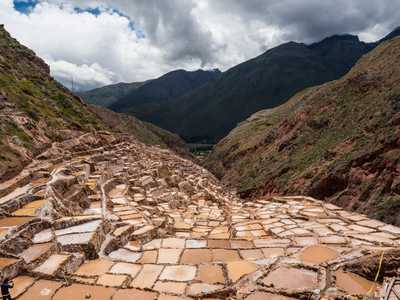
Las Salineras De Maras : Exploring Peru's Sacred Valley
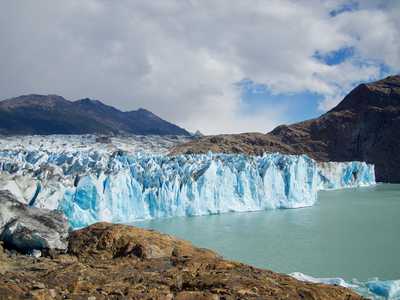
Ice Climbing the Viedma Glacier in Patagonia
- Carnets de voyage
- Le coin pratique
- Tour du monde
- S’inspirer
- En Tour du monde
- Afrique du Sud
- Nouvelle Zélande
- Bibliothèque voyage
- Budget par pays
- Equipement voyage
- Préparer un voyage : sites et outils que j’utilise
- Quelle assurance voyage choisir ?
- Quelle carte bancaire choisir pour voyager ?
- Vol annulé : comment se faire indemniser ?
- Economiser de l’argent en voyage avec le cashback
- Sensations fortes
- Qui suis-je ?
Voyage en Patagonie : itinéraire, récit et conseils pratiques
Dernière mise à jour : 15 novembre 2022
Ah la Patagonie ! Une des destinations phares de mon tour du monde. Je rêvais d’ un voyage en Patagonie depuis tellement longtemps. J’imaginais les étendues immenses, les sommets enneigés et les glaciers et cette atmosphère de bout du monde. Et je n’ai pas été déçue ! Même si le budget pour y voyager est assez conséquent, les paysages en valent vraiment la peine.
Du Perito Moreno à Ushuaïa, de l’Argentine au Chili, voici mon itinéraire de 19 jours de ce voyage en Patagonie , que j’ai eu la chance de faire pendant mon tour du monde .
Ushuaïa, Argentine (5 jours)
Liens utiles pour organiser votre voyage en patagonie, voyager en patagonie : quel itinéraire faire, el calafate, argentine (2 jours).
Mon petit frère me rejoignant en Argentine pour les fêtes de Noël, j’ai fait une exception à la règle que je m’étais fixée en Amérique du Sud pendant ce tour du monde , à savoir d’éviter de prendre l’avion. Pour des raisons évidentes de manque temps au vu des distances, après 2 jours passés ensemble à Buenos Aires, nous avons sauté dans un avion direction El Calafate, véritable point de départ de notre voyage !!
Malgré nos mésaventures du départ dues à une panne de notre avion et trois petites heures de retard, on arrive tout excités à El Calafate pour entamer ce périple en Patagonie. On se rue sur la première agence de voyage qu’on trouve afin de réserver notre excursion au Perito Moreno, ce splendide glacier qu’on voit sur toutes les brochures. Oui là j’avoue on est comme deux gamins à l’idée de le voir !
L’agence Hielo y Aventura propose des excursions combinant passerelles, bateau et trek sur le glacier. Le prix est relativement élevé, mais justifié étant donné la prestation. Et c’est ce qu’il faut pour préserver le glacier du tourisme de masse.
Le glacier en lui-même est impressionnant. On entend régulièrement la glace craquer, puis des morceaux se décrocher et tombant dans l’eau, provoquant des vagues immenses. Le spectacle est hypnotisant. Malgré la petite bruine qui nous tombe dessus, nous restons là de longues minutes à contempler ce spectacle de la nature, fascinant et grandiose.
Un bateau vient ensuite nous chercher pour nous emmener de l’autre côté du glacier. Nous pouvons le voir de très près cette fois. Une fois débarqués, nous chaussons des crampons et partons à l’aventure sur ce gigantesque morceau de glace. On n’entend plus le bruit de l’eau. Juste celui de nos pas et de la glace qui crisse en-dessous. On profite du calme et de ce silence. L’agence même prévu l’apéro pour savourer ce moment.
➡️ Réservez votre randonnée sur le Perito Moreno ici!
El Chalten, Argentine (3 jours)
Mon coup de cœur de Patagonie ! El Chalten est un petit village de montagne au pied du Fitz Roy. Très touristique, il se compose de très nombreuses hôtels, guesthouses et restaurants pour touristes. De là, il est possible de faire plusieurs balades toutes aussi belles les unes que les autres et notamment l’ascension du Fitz Roy.
Je vous raconte d’ailleurs mon séjour à El Chalten ici.
Puerto Natales, Chili (2 jours)
Puerto Natales est connu pour être le point de départ pour le parc Torres del Paine où un trek de 5 jours, appelé le W, fait le bonheur des voyageurs. Nous n’avons hélas pas le temps de le faire et devrons nous contenter d’une petite journée de randonnée seulement, suffisante pour s’en prendre plein les yeux!
Punta Arenas, Chili (5 jours)
On arrive à Punta Arenas après 3 heures de route depuis Puerto Natales. C’est notre seconde étape au Chili, qu’on commence à vraiment apprécier. Noël approche et les rues sont bondées, les chiliens faisant leurs dernières courses de Noël. On a décidé de notre côté d’aller passer le réveillon à Ushuaia , un peu comme l’apothéose de notre voyage.
Du coup, nos jours sont comptés et nous n’avons pas le temps d’aller voir les pingouins sur les îles proches. Je le ferai en solo au retour…
Punta Arenas est une ville très calme, mais assez agréable avec sa corniche où il fait bon se balader. Il y a également de délicieux restaurants de poissons au marché. Nous ressentons toujours cette atmosphère de bout du monde qui nous avais envahie dès notre arrivée au Chili, à Puerto Natales.
Ushuaia, capitale de la province de la Terre de Feu , était un but en soi. Je ne m’imaginais pas mon tour du monde sans atteindre cette ville du bout du monde, la 2e ville du monde la plus australe après Port Williams au Chili. J’ai aimé son atmosphère et ne regrette en rien les longues heures de bus pour atteindre ce lieu mythique.
Pour en savoir plus sur la ville et mon séjour à Ushuaia, c’est ici!
BON PLAN : Economisez de l’argent en voyage dès maintenant en utilisant Igraal . Vous recevrez du cashback sur tous vos achats en ligne : vols, hôtels, billets d’entrée etc. Pour en savoir plus, c’est ici !
Voyage en Patagonie : Informations pratiques
Aller en patagonie.
Les distances étant gigantesques en Argentine, vos déplacements seront donc dépendants du temps que vous avez à disposition.
Ayant peu de temps, nous avons préféré démarrer notre périple à El Calafate en prenant l’avion depuis Buenos Aires car nous voulions absolument rejoindre la Terre de Feu.
D’autres voyageurs commencent leur voyage beaucoup plus au nord, à Bariloche ou Puerto Madryn, qui sont de très bonnes options. Mais attention aux distances si vous comptez aller ensuite à Ushuaia. Si vous avez peu de temps, l’avion sera peut-être également une option à envisager.
De là vous pouvez louer une voiture afin de visiter les environs. Mais calculez bien les distances entre deux villes! Vous risquez d’avoir des surprises!!
➡️ Réservez votre vol Buenos Aires – El Calafate
Où dormir en Patagonie?
Comme pendant quasiment tout mon tour du monde, j’ai dormi principalement en auberge de jeunesse. Mais il faut savoir que la Patagonie nécessite un budget important. Si vous voulez économiser, vous pouvez également camper dans de nombreux endroits, dans les parcs notamment. A vous de voir si vous souhaitez voyager tout le matériel de camping ou non.
A El Calafate, nous avons posé nos valises dans un hôtel sans prétention, l’hostel del Glaciar Pioneros , mais où on a eu une énorme chambre triple pour deux!! Le bonheur du confort retrouvé avec des jours en dortoir…
➡️ Trouvez votre hôtel à El Calafate ici!
A El Chalten , je vous recommande le Rancho Grande , grande auberge de jeunesse avec une terrasse pour profiter de l’extérieur quand il ne fait pas trop froid.
➡️ Trouvez un hôtel à El Chalten ici !
A Puerto Natales, nous avons adoré l’hostel Cuatro Estaciones , où nous nous sommes sentis un peu comme à la maison!
➡️ Voir tous les hôtels à Puerto Natales
A Punta Arenas, Je vous recommande chaudement l’Hostel Entre Vientos . Situé à une demi-heure à pied du centre-ville ou 10’ en collectivo, ses baies vitrées avec vue sur la mer m’ont conquise. On peut apercevoir au loin les petits dauphins noirs et blancs qui sautent joyeusement. L’auberge est très confortable, chaleureuse, propre et fait partie des meilleures de mon trip sud-américain. L’idéal pour chiller entre deux balades !
A Ushuaia , j’ai testé l’auberge de jeunesse Yakush en plein centre-ville. Mais si être légèrement excentré ne vous fait pas peur, ma préférence va à La Posta Hotel situé proche de l’aéroport.
➡️ Voir tous les hôtels à Ushuaia
- Réservez votre vol pour Buenos Aires
- Louez votre voiture ici
- Réservez l’hôtel de vos rêves ici
- Achetez votre guide de voyage préféré ici
- Prenez une assurance voyage ici
- Et n’oubliez pas de commander votre nouvelle carte de crédit sans frais à l’étranger ici . Ouverture du compte en 5′!
Et si vous n’avez pas pas envie de vous embêter avec toute cette organisation, vous pouvez demander à Evaneos de vous aider à organiser un voyage sur mesure. Leurs devis sont gratuits! Ou vous pouvez me contacter également par le biais de ce formulaire.
Epingler sur Pinterest
Soutenir maglobetrotteuse.
Vous avez aimé cet article? Celui-ci vous a été utile dans l’organisation de votre voyage? Alors n’hésitez pas à soutenir le blog! 🙏🏼
Pour cela, plusieurs moyens s’offrent à vous :
– En laissant un petit pourboire ici pour me remercier et m’encourager à poursuivre. ☺️ – En réservant votre séjour chez mes partenaires en utilisant les liens de ce site. Ça ne vous reviendra pas plus cher, et je toucherai une petite commission sur chaque réservation. – Et pour finir, en partageant mes articles autour de vous, en vous abonnant à ma newsletter (Zéro spam garanti!) et en me suivant sur Instagram ou Facebook .
Merci beaucoup et à très vite cher lecteur!
Vous aimerez aussi sur le blog
Randonner à El Chalten en Argentine : magnifique Patagonie Un Noël à Ushuaïa en Argentine, l’incontournable bout du monde Que faire au Chili? Mon itinéraire en un mois Visiter la Colombie : mon itinérair e en 40 jours Visiter le Machu Picchu depuis Cuzco sans agence
Super sympa cet article ! La Patagonie m’attire vraiment, et encore plus quand je vois toutes ces belles photos, ça fait rêver !
Merci Johanna!!! Oui la Patagonie est fabuleuse. Grands espaces et paysages grandioses…
Whaouh, quel voyage et quelles photos ! Cela fait envie et nous fait rêver. Un jour peut-être….
Oui allez y!! Quand la situation le permettra bien sûr! Vous n’aurez aucun regret…
Bonjour, très bel article qui donne encore plus envie d’aller découvrir cette belle région. J’envisage d’y aller en novembre-décembre prochain 🙂 Je voulais juste savoir niveau transport si le réseau de bus était bien développer pour pouvoir se déplacer facilement ? Merci beaucoup 🙂
Laisser un commentaire Annuler la réponse
Votre adresse e-mail ne sera pas publiée. Les champs obligatoires sont indiqués avec *
Commentaire *
Inscription à la newsletter
Ne pas s’abonner Tous les nouveaux commentaires Seulement les réponses à mes commentaires Notifiez-moi des commentaires à venir via e-mail. Vous pouvez aussi vous abonner sans commenter.
A propos de moi
Je m’appelle Magali et je suis passionnée de voyages et de photo depuis le plus jeune âge. Un jour, lassée de mon quotidien, j’ai décidé de tout lâcher pour faire un tour du monde seule. Depuis, je ne cesse de voyager et partage avec vous mes découvertes en espérant vous donner l’envie et pourquoi pas le courage de partir à votre tour, à la découverte de nouveaux horizons.
Soutenir le blog !
Les dernières news.
- Une magnifique journée de randonnée dans les Cinque Terre, de Corniglia à Riomaggiore
- Visiter Copenhague en 3 jours : balade à vélo au coeur de la capitale danoise
- Une semaine magique de safari en Tanzanie !
- Où aller en Italie ? Le top 12 de mes destinations préférées !
- Visiter Naples en 3 jours? Que voir, que faire à Naples le temps d’un week end!
- Qui-suis-je ?
Mes dernières infos!
Adresse E-mail
Top articles
Ressources pour organiser un voyage Préparer un tour du monde Idées cadeaux pour un voyageur Top 11 des romans d'aventure et de voyage 12 accessoires de voyage indispensables Top 5 des livres pour préparer un tour du monde
- Mentions légales
- Politique de confidentialité
Road Trip Patagonia: Driving Scenic Ruta 40 From Esquel To Bariloche
Route 40 is the most famous highway in Patagonia, and when they say all roads lead to beautiful things, they clearly meant this one.
The southern tip of the Americas evokes images of a mountainous, windswept wilderness. Skiers, fly fishing enthusiasts, and hikers worldwide choose this region, called Patagonia, as a top destination . Curving roads through old-growth forests transform into straight paths over the southern steppe. Driving Patagonia's most famous highway, Ruta 40, will take travelers past mountain vistas, crystal clear lakes, and wide views of cloudless skies. Both Esquel and Bariloche offer prime skiing from July through September.
Additionally, each of these Patagonian cities is near impressive national parks: Nahuel Huapi and Los Alerces. They also are near commercial airports, making it easy to get there--this is not the always case with southern destinations in Argentina and Chile. Driving the 300 km stretch between the two can take as little as four hours, but travelers should plan on taking longer (possibly two days) to explore the sites along the way.
Esquel and Trevelin
This journey begins in Esquel. La Trochita, Patagonia's historic narrow-gauge steam engine, might be the city's most famous attraction, but this destination along with neighboring Trevilin has far more to offer. Nature lovers and hikers will want to visit Los Alerces National Park. Wine enthusiasts can try vintages from some of the world's southernmost vineyards. Winter travelers can ski on the slopes of Mount La Hoya. Visitors in springtime will be awestruck by the tulip fields in the Welsh settlement of Trevelin.
- Contact La Trochita: [email protected], 54-2945-451-403
- Hours: 10 am on Saturdays, more frequency in peak tourist season
- Price: $20-$40 US
- Ski Season at La Hoya: July - September
- Lift Tickets: Around $30 per day when purchased online
Los Alerces
Driving 40 minutes to the west of Esquel, visitors will discover UNESCO Site, Los Alerces National Park. This forest is home to trees that sprouted over a thousand years ago. El Alerce Abuelo, or grandfather fitzroya, is the oldest specimen here. It is around 2600 years old, measures nearly 190 feet in height, and has a circumference of around nine feet. Visitors can see this imposing individual by taking a 40-minute boat ride across Lake Menendez. People must buy tickets for this excursion ahead of time in Esquel's center.
The park is a glorious destination for fishing, hiking, kayaking, camping, or taking a scenic drive. People who don't make it to see the Alerce Abuelo can still take hikes through patches of orange Arayan trees and exotic-looking monkey puzzle trees.
- Entrance fee: About $10 US
- Transport to the park: Rental cars or buses from Esquel's bus terminal
- Boat excursion to Alerce Abuelo: About $60 US through Patagonia Express
- Excursion times: 10:45 on Wednesdays, Fridays, and Sundays
related: If You're Visiting Chile For Its Landscape, This Is The Best Time To Go (And Why
Waterfall Nant Y Fall And Trevelin's Tulip Fields
Welsh settlers in Argentina founded Trevelin which means mill. This small community has preserved its Celtic heritage and some residents still speak their ancestors' language more than 100 years later. After a day of hiking in Los Alerces National Park, it's the perfect place to settle down and experience "Welsh Tea." From about 5 pm to 7 pm travelers can stop at one of the town's teahouses. There, for a flat fee, servers will bring them a variety of cakes, cookies, and treats that are traditional to the settlement.
- Where: Nain Maggie Teahouse, Perito Moreno 179
- When: 5 pm to 7 pm
- Price: $12 US
Nearby, the Nant Y Fall River flows out of the mountains onto the Patagonian steppe. This geological transition has formed seven spectacular waterfalls within just a few feet. The sight will awe visitors on the half-mile hike.
- Where: Reserva Nant Y Fall, Provincial Highway 259
- Entrance fee: $3 US
Along the same gravel highway that leads to the falls, visitors can stop and enjoy a wine tasting at the beautiful Viñas Nant Y Fall Winery, or if it's October see tulip fields at Tulipanes Patagonia. They'll also find Nant Fach, the original watermill that gave the town its name. Today it's a quaint, fun museum.
- Tour of Tulip Fields: $8 US
- Tour of Nant Fach Mill: $4 US
related: Argentina's Valley Of The Moon Has Been Called "Unearthly" And Here's Why
Back on Ruta 40, drivers should head north to El Bolson. This Patagonian town has earned fame for its handmade crafts and fanaticism for elves. Try to make it here on a Saturday afternoon when the crafts fair in the Plaza Pagano is at its busiest. Artists display their works from 10:00 am to 4:00 pm, on Thursdays through Sundays.
Driving through this town, visitors will notice unique, modern adobe constructions. This type of architecture has become a trend here because it's environmentally friendly, artistic, and warm throughout the snowy winter.
As drivers travel north along Ruta 40, they'll see the enticing Lake Gutierrez to the west. There are scenic lookouts aplenty and beaches where travelers can eat a picnic lunch. The highway passes through the heart of Nahuel Huapi National Park and visitors will see hiking trails and campgrounds where they can stop and explore the wooded area.
On the northwestern shore of Lake Gutierrez, tourists can take a short hike to the Cascada de los Duendes, Elves' Waterfall in English. It is an enchanting spot and the hike is accessible for all ages.
The city of Bariloche is just minutes away. This is one of Argentina's most famous tourist destinations and it's easy to see why. Lake Nahuel Huapi sits against a backdrop of snowcapped peaks. The mountain slopes are carpeted with indigenous trees like orange arayans, but also planted with pines. Circuito Chico, or the short loop, is a scenic drive along the shores of Nahuel Huapi that takes tourists past some breathtaking views.
German settlers here developed the skiing infrastructure. Today, visitors can ski Mount Catedral's slope from July to September. Mount Otto, another nearby peak, offers rides from cable car rides from the base to a rotating cafe on the summit. The views are incredible. When travelers finish a day of sightseeing or skiing, they've got to re-energize with some of Bariloche's famous chocolate.
- Lift Ticket for Cerro Catedral: $40 US online
- Cable car ride on Cerro Otto: $15 US
next: How To Plan A Trip To Torres Del Paine: One Of South America's Most Eye-Watering Parks
Patagonia Budget Travel Guide & Road Trip Itinerary
Book your trip to patagonia.
Please accept cookies and reload the page to use our booking tool. 🙂
Did you know? You can support our website for free when you book an accommodation through our booking forms and links.
Table of Contents

Best Time to Visit Patagonia
The best time to visit Patagonia (Chile and Argentina) is during summer time in the Southern Hemisphere–so from November to early March . These are the months with most sunshine (12-17 hours of daylight) and highest temperatures (average: 18 degrees Celsius). However, keep in mind that most of the day is below this average and that the weather can change at anytime. The weather can change from warm and sunny to a freezing snow storm in the blink of an eye. If you want to avoid any kind of tourist crowds, you should go in October or March. We went in November, but never really felt that it was overcrowded, even though there were quite a few tourists on hiking trails from time to time.
What Clothes to Bring
Here is a short list of essentials that you should bring on your trip to Patagonia. Remember that the weather is unpredictable and that it can get freezing cold very quickly even during summer months. One time we went through summer weather (sunny and warm), fall weather (rainy and windy) as well as winter weather (snow storm and freezing temperatures) on one single hike. So be prepared !

Must-have clothes in Patagonia:
- 3 in 1 jacket with a hood (for any kind of weather) or hardshell jacket with compatible interior jacket
- Waterproof hiking shoes
- Water-resilient or quick-dry hiking pants
- Waterproof backpack or backpack with rain cover
- Thermal and long underwear
- Sunglasses with UV protection

Transportation
Before you go to Patagonia, you must know that it is a very large region with a very low population . It is normal to drive for hours and not pass any towns, cars or gas stations. Therefore, we highly recommend taking the bus when in Patagonia, as it is much safer and much cheaper.
Bus (recommended by us!)
- Very well established infrastructure
- Buses will take you almost everywhere
- Very comfortable seats (almost like beds)
- Much cheaper than a rental car (around 10 Euros or Dollars for a 2-4 hour bus ride and between 30-50 Euros or Dollars for a 10 hour bus ride)
- Immigration (Chile<–>Argentina) is guided by bus drivers
- Environmentally-friendly
- There’s literally nothing to see between towns anyway as it’s all tundra
- No flexibility
- It can get very cold on the bus (they love their air conditioning down there)
- Toilet may not be working (only happened to us once)
Good bus companies: Buses Fernandez , Bus-Sur , Tecni-Austral
- High flexibility
- No other people around
- No fixed schedule
- You can stop whenever you want
- Very expensive, especially because you have to cross borders multiple times
- You can get stranded very easily in the middle of nowhere
- Very long distances to drive between towns
- You have to handle immigration on your own
- Not environmentally-friendly
Obviously, it is your choice how to get around Patagonia and it always depends on your budget. For more flexibility, choose a car , for budget travel and peace of mind, choose the bus .
Hitchhiking
Some people hitchhike in Patagonia which we find a little dangerous on a long-distance trip. We only hitchhiked short distances (e.g. from Ushuaia to Tierra del Fuego National Park) and highly recommend doing so as it is very common and very safe, but discourage you from hitchhiking longer distances as there is very little car traffic and hitchhikers have gotten stranded out in the middle of nowhere before. If you do decide to hitchhike over long distances, make sure to bring all necessary camping equipment in case you have to stay overnight outdoors. Nevertheless, hitchhiking is very common in Patagonia and totally safe when it comes to getting into a stranger’s car.
You save lots of money if you hitchhike the following routes:
- Ushuaia city to and from Tierra del Fuego National Park (this is the one we hitchhiked)
- El Calafate city to and from Perito Moreno Glacier
- Puerto Natales city to and from Torres del Paine National Park
Where to Stay
The two cheapest and best options in Patagonia are Airbnb private rooms and hostels . There are plenty to choose from. If you want to sleep in a hotel or have your own apartment, it can get very expensive very quickly. By choosing to stay in private rooms and hostels, we managed to stay under our daily budget of $25 per night for both of us . Generally, if you are traveling as a couple or in pairs and want to stay at a hostel , it is (oddly enough) usually cheaper to book a double or twin room rather than two individual bunk beds.
Airbnb Private Rooms
Here’s a coupon for your first stay .
- Get to know locals
- Stay with only a few other travelers and get to know them
- Not crowded
- Usually cleaner
- Usually more comfortable
- Sometimes with private bathroom
- It can be hard to communicate with owners as they usually only speak Spanish (and a dialect to boot!)
- Meet many other travelers
- Staff sometimes speaks other languages
- Private rooms usually available
- Full kitchens
- Bathrooms and kitchens get dirty very quickly
Where to Go and What to Do (Road Trip Itinerary)

Here is a map showing the perfect road trip itinerary for Patagonia (Chile and Argentina). We suggest flying to Ushuaia and working your way up to El Chalten by bus or car. Then, take the bus back to El Calafate or Puerto Natales for a cheap flight back to a South American capitol. For example, we flew from Buenos Aires to Ushuaia and from Puerto Natales to Santiago de Chile for around $50.
Ushuaia (Argentina)
Must Sees: Glaciar Martial (Martial Glacier) Parque National Tierra del Fuego (Tierra del Fuego National Park) Best Hike: Costera trail (Coastal hike) which is around 10 km and takes around 3 hours

Punta Arenas (Chile)
Must Sees: Penguins and rare dolphins on the ferry from Ushuaia to Punta Arenas (ferry included when you take the bus) Punta Arenas cemetery

Puerto Natales (Chile)
Must Sees: Torres del Paine National Park Best Hike: Mirador Las Torres which is around 19 km return and takes around 6-8 hoursTIP: The W trek is the most famous, but also incredibly expensive even if you camp (from $300 to thousands of dollars p.P.). If you want to experience the entire park and see its highlights on the cheap, we highly recommend an extensive day tour with multiple short hikes for around $50 p.P. by Hostal Niko 2.

El Calafate (Argentina)
Must Sees: Perito Moreno Glacier (without boat ride as you can get just as close to the Glacier on the boardwalks!) Reserva Laguna Nimez (don’t pay the entrance fee as you can observe all animals from outside) Best Hike: Take your time and hike all boardwalks at the Perito Moreno Glacier. They are all short, but reward you with incredible views. Watch out for falling ice!

El Chalten (Argentina)
Must Sees: Fitz Roy National Park Best Hikes: Laguna de Los Tres (to Fitz Roy) which is around 21 km return and takes around 6 hours Cerro Torre and Laguna Torre which is around 20 km return and takes around 4-5 hours

Where to Eat
Honestly, don’t bother eating out in Patagonia unless you are in Ushuaia and want to try seafood. Overall, the food is quite expensive , the quality is low and the prices are comparable to Europe. You are much better off cooking in your hostel or Airbnb . Therefore, make sure to always book an accommodation with a kitchen! Everyone we met, including ourselves, cooked almost all meals. Additionally, keep in mind that Chile’s side of Patagonia is much more expensive (sometimes 4x the price in Argentina) . Therefore, if you decide to eat out, do it in Argentina.
However, if you are looking for a snack, it is worth trying Empanadas as they are Argentina’s national dish and are super delicious. There is lots of variety which means you can choose from vegan, vegetarian or meaty Empanadas. You can usually get them in any supermarket or bakery for little money.
If you are looking for local sweets, you have to try dulce de leche (sweet bread spread) and Alfajores which are also available in supermarkets.

Thankfully, there are a number of good breweries in Patagonia where you can have a drink and a pretty decent meal as well. As we mentioned above, the prices in the Chilean portion of Patagonia are insane, so if you do want to go for a beer, it’s best to do so in Argentina. We enjoyed plenty of nice local beers in El Calafate and El Chalten . In El Calafate, we recommend going to La Zorra Taproom and in El Chalten, we recommend going to Don Guerra . Almost all of them offer happy hours as well, which means you can usually get beers for up to 50% off.
About the Authors

Ryne Cook and Denise Braun: We spent 1 month in Argentina, Chile and Patagonia learning about the people and culture as well as the best ways to get around, the best things to do and the most affordable ways to do them. Our time in Patagonia inspired us to write this guide.
Related Posts

Puerto Natales Airport (Airport Code: PNT)

How to get to Machu Picchu from Cusco for only $7.50

Cusco, Peru | Travel Guide & Insider Tips

Buenos Aires, Argentina | 2022 Travel Tips
6 thoughts on “patagonia budget travel guide & road trip itinerary”.
Such A Comprehensive article! Really useful, can’t wait to pack my bag and fly!!!
Thanks Nazleen! You’re gonna have a great time when you go!
This is really helpful, I can’t wait to get back to traveling!
Glad to hear it! We’re traveling closer to home, but it’s still not quite the same!
What a superb detailed travel itinerary for Patagonia (Chile and Argentina). We are still yet to visit Central & South America from BC Canada. Definitely on our “Must Travel To Next” List. Our son did this trip a couple of seasons ago solo and had an amazing experience. Great Post!
Thanks a bunch! We’re sure you’ll have a great time too if you decide to take a trip there. 🙂
Leave a Comment Cancel Reply
Your email address will not be published. Required fields are marked *
Please add me to your mailing list so that I can stay up to date on the latest budget travel tips

Patagonia: Everything You Need to Know to Road Trip travelling Patagonia

There are a number of places around the globe that just lend themselves to a road trip. Travelling Patagonia is one of them; a place of rugged mountains, extreme seasons, and a whole host of different animals, running along the vast, open roads.
Patagonia is the ideal place to pack up your backpack, grab your camping stove, jump in your car and set off on an adventure of a lifetime.
However, when it comes to planning your Patagonia road trip the task can feel daunting, Patagonia is not only huge but also vast and spread across two countries; Chile and Argentina. The weather conditions are harsh and public transport is often unreliable. Being a lesser travelled spot, there’s also really not that much information available on it and prices can be much higher than the standard backpacker budget.
Despite all these facts (or maybe because of them), our adventurous souls and excited nature were driven to visit Patagonia more than ever. We finally fulfilled the amazing bucket list destination.
Travelling to both the Chilean and Argentinian parts of Patagonia is, for many of us, once in a lifetime adventure and one we want as many people as possible to be able to enjoy. That’s why we’ve created this guide on everything you need to know before travelling to Patagonia. We spent an incredible 3-weeks road tripping through the region and now we have put together this guide full of all the essential things to remember before setting out on your own road trip to help you. Looking for inspiration on where to visit Patagonia? Also, read The Best Places to Visit in Patagonia – Argentina and Chile

Table of Contents
Where is Patagonia?
Patagonia is a huge geographical region spread across Argentina and Chile that spans from the centre of South America all the way down to the most Southerly point, Ushuaia.
The region covers an area of a whopping 409,500 sq miles (1,060,600 sq km) and is filled with some of the most incredible sites including glaciers, huge lakes, the Andes Mountains, waterfalls, and fjords.
The Atlantic Ocean surrounds Patagonia in the east and the Pacific Ocean in the west.
The southern tip of Patagonia ends with Tierra del Fuego, located in Ushuaia, the southernmost city in the world and the gateway to Antarctica. An epic experience to add on if you can to your visit to Patagonia.
Patagonia is known for its pristine nature and unspoiled wilderness, incredible views, and even better hiking trails. Making travelling Patagonia the ultimate adventure destination for those wanting something a little more off the beaten path!

How to Get to Patagonia
Start your patagonia travel in bariloche.
There are many different spots in Argentina and Chile where you can begin travelling Patagonia. One of the most popular, and the spot we entered via, is Bariloche. Located in the South of Argentina and is said to be the gateway to Patagonia. Bariloche is the perfect introduction to Patagonia with its many lakes and mountains. The drive-out is also immensely beautiful so it’s well worth visiting.
Fly into Patagonia
Another option is to fly to Patagonia’s main airport, Punta Arenas Airport (PUQ). To get to one of these spots you can either fly into Santiago or Buenos Aires and then take a connecting flight to wherever you choose to start your Patagonia road trip.
How long should I spend travelling Patagonia?
Patagonia is a whole other world and there are so many incredible sites to see. You could easily spend 6 months travelling Patagonia and still feel like there are parts you haven’t touched. We spent just 3 weeks travelling through Patagonia which was great for us to see some of the amazing highlights and enjoy the ever-changing weather. We wouldn’t recommend spending any less time than 3 weeks in the Patagonia region unless you are only visiting a small section of it.
What should I pack for a Patagonia road trip?
Patagonia is known for its harsh weather conditions and you can experience all 4 seasons in 1 day. Even if you are visiting in summer it is worth packing a hat, gloves and a scarf when travelling to Patagonia. Equally, you should make sure you have a sun hat and sunglasses packed for when the sun comes out! We visited during winter and it’s safe to say, it was freezing! We wore many layers. I, Reanna, wore fleece leggings (the budget alternative to thermals) from Primark . A thin polar neck jumper, a thick woolly jumper and a coat. Plus, a hat, woolly socks and gloves. Chris also wore the equivalent and we were still a bit chilly. Just make sure you have enough layers so that you can strip off when you need to. Also, pack waterproof clothing in case you are faced with snow. This happened to us quite a few times!
Where should I hire a car to travel Patagonia?
Car hire in Patagonia isn’t known for being cheap. However, it’s not as bad as we were expecting. There are ways to ensure you’re getting a bit more bang for your buck (see the next point). However, there are plenty of car hire companies mainly based in Bariloche. We opted to hire a car through Hertz however, we booked through a 3rd party as it made it cheaper. Just be sure to shop around and book as far in advance as possible prior to your Patagonia visit. We booked online and collected our car from Bariloche downtown. We then returned it to Bariloche airport so that we could get straight on our flight to our next stop. We found Bariloche to be the ideal start and finish spot when travelling Patagonia.

How to hire a car for less when travelling Patagonia
If you are worried about your budget, be sure to book your car in advance . Also, get a 2wd instead of a 4wd. The roads are dirt roads and generally aren’t the best however, it was more than fine in a smaller car. The only times we struggled were when it snowed. Here a bigger car definitely would have helped. However, the snow chains (which came with our car) made it bearable. To keep the cost down also make sure that the pick-up and drop-off locations are the same. This makes a huge difference to the total price and it can even be worthwhile to return the car to the same spot and get a flight to your next destination. This is what we did when we visited Patagonia. Our final, and most important tip is to pay with cash when you hire your car in Argentina ! Paying for a hire car in cash might sound strange, especially if you’re like us and hiring the car for an extended period of time. However, it kept the cost of the car down by about 50% had we paid using our debit or credit card. This is because of the Blue Dollar Rate.
What is the Blue Dollar rate?
The Argentina currency, Pesos, is extremely unstable. Whilst this may not be great for Argentinians, it does make it a lot cheaper to travel around the country and visit Patagonia on a budget. There’s a lot of information out there on the Blue Dollar rate that isn’t super clear. In basic terms, the Blue Dollar rate is a better exchange rate for your USD or other stable currency than the Argentine Pesos. To be able to get this exchange rate either bring USD with you and exchange it in a spot like Florida Street in Buenos Aires. Here you will find tons of people who are looking to buy USD from you at a better rate than the official one. They will be shouting “Cambio, Cambio” and will take you to a little ‘office’ where you can exchange your dollars. The other way and the way we found to be the most cost-effective, was to download the Western Union app. Then transfer the amount you would like to change onto it and then head to a Western Union to collect it in cash. Western Union will give you your cash in the Blue Dollar rate, not the official rate. So, even with the small fee the app charges, Western Union offers the best Blue Dollar rate.
Things to remember when driving through Patagonia
1. the roads aren’t paved in patagonia.
Don’t plan a road trip through Patagonia expecting tarmacked roads as that is certainly not what you’re going to get! The roads are made of gravel, dirt and a sand-like substance and are sometimes covered in snow. Be sure you’re a confident driver before taking on Patagonia and manage your expectations for how easy the drives are.
2. The drives are long
Not only is Patagonia absolutely huge but, the roads aren’t paved well and Google maps don’t account for this. A 1.5-hour drive can end up taking you 3 hours. Ensure you account for this when planning your day. If you are planning on driving a long distance during the day, we recommend looking at Google Maps in advance and asking someone at your hotel/hostel if this is the best way to go. Potentially the way that Google Maps says takes longer will actually be shorter due to the road conditions. Also, use the “Google street view” option to look at the road conditions. If they are gravel, we would avoid them for long distances. Lastly, use logic. If you are driving along and Google Maps tells you to turn off a paved road onto a dirt track; just don’t do it. We did it a few times and very occasionally it paid off, mostly, it didn’t.
3. Except the unexpected
Despite going off on our Patagonia road trip during the winter months we still weren’t expecting to see much snow on the roads. Oh, how wrong we were. We hired a fairly small car which was not particularly well-equipped for the snow. Hertz provided us with snow tires which in some spots to keep driving were mandatory so make sure you have some. We also slipped and slid around a bit when driving through the mountains. So, make sure you are ready for that!
4. You need a Chile permit to cross between Chile and Argentina
Crossing the border in a rental car between Argentina and Chile requires planning. It is not something you can do on the spur of the moment. When renting your hire car you need to inform them that you will be crossing the border between the two countries. You will then have to pay a small fee (around £50) for a Chile permit. This is a piece of paper that the border crossings will stamp each time you cross between the two countries. Without this, you won’t be able to bring your car across.
Share this:
You may also enjoy:, your guide to visiting colca canyon peru, where to next, our must see spots when travelling …, best places to visit in the …, a guide to the 6 best beaches …, everything you need to know to …, 5 unmissable places to visit in the …, top 10 things to see in skopje, …, 5 of the most incredible places to …, your ultimate guide to visiting northern …, how to spend 1 day in milan (…, top 10 things you can’t miss …, 3 days in venice: the perfect itinerary (2024), your epic guide to visiting isla …, geisler alm: the only guide you …, 5 of the best day trips from …, your epic 2 week guatemala travel itinerary (….

Travel Tales from Argentina and South America
Self-drive Trip to Patagonia: From Buenos Aires to Bahía Bustamante
¡hola my name is juan etchaide, i’m the head of the product department, and a restless traveler. i grew up in puerto madryn, better known as the southern right whale sanctuary, and for península valdés, the most important wildlife reserve in patagonia. in january 2021, my girlfriend flor and i decided to drive from buenos aires where i’m currently living to bahía bustamante, the only village in argentina specialized in seaweed harvesting and mussel farming. if you want to enjoy a self-drive trip into deep patagonia, read my insider tips for the route, 1. how to get from buenos aires to bahía bustamante.
Bahía Bustamante is located in the province of Chubut, at 1700 km (1057 miles) from Buenos Aires.
Flor and I decided to take National Route 3 since it’s the most straightforward route to reach Patagonia . Though we had to switch routes in the middle -a couple of other national and provincial roads- you enter Bahía Bustamante by NR3.
As a native Argentinian, I love long-distance driving and this trip was certainly a long one. Without making any stops, this is an almost 20-hour drive on well-maintained roads. However, as I have part of my family in Puerto Madryn, which is 325 km (200 miles) away from Bahía Bustamante, we decided to make a short stop there and share with my relatives for a couple of days.
(I swear I’ll tell you all about how to self-drive Península Valdés and Puerto Madryn in a next article!)
While Flor had to return to Buenos Aires for work, I continued traveling with my parents to Bahía Bustamante. Though they have lived in Puerto Madryn for more than 20 years now, they didn’t have the opportunity to visit the bahía. When they told me that I decided to transform my couple’s del-drive trio into a family trip!
The routes I follow to reach Puerto Madryn and then Bahía Bustamante:

2. My fears about traveling during Covid times
This was one of the first issues I have to figure out before hitting the road. At regular times, I will just fuel up my car, prepare my mate (our national tea-type infusion, the best mate on the road), and my luggage, prepare my playlist, and charge my phone. But making a self-drive trip in January 2021 demanded additional documentation required to travel the country during the Covid-19 pandemic.
These documents were not that difficult to get, nor that numerous. And I finally discovered that the so-feared controls on the road were not that scary either (and not very frequent to be honest…).
Someone has told me that Chubut will be the toughest regarding the national guard controls but it really wasn’t. They just checked the validity of the documents and asked me if I have downloaded the Cuidar application, designed by the Argentinian government to download all the required documents. The app also reminds you to take a self-health test every 48 hours and declares that you don’t have any symptomatology compatible with Covid-19.
To sum up: Though I got nervous each time they stopped me on the road everything went smoothly and hassle-free . I recommend having a printed version of the documents. Believe it or not, technology can always fail…
The documents I needed for the trip:
- The App Cuidar, which you can download for free.
- The Traveler Permission to circulate (before your trip)
- My ID (because I’m Argentinian). For any foreign traveler, your passport and other documents stamped by Inmigration at your arrival
3. What you can see on the route
I love this route because you can clearly see the transitions between the green, endless territory of La Pampa and the grey and rocky Patagonian steppe. There is an absolute feeling of isolation that rushes into your soul once you reach Patagonia. And a crescent fear of not getting to the next gas station (!). I will tell you about that in a couple of lines…
Personally, I was deeply touched by how the color palette changed from that almost fluorescent green to the deep blue of the sea, and the contrast with the white clay that forms the seacoast, when we were about to enter Puerto Madryn. After miles and miles of no human presence, reaching Puerto Madryn feels like entering a homely place , despite the actual dry weather of the area.

4. Watch out for the gas station on your road trip in Patagonia
Argentina is a wide country, even unpopulated in some areas. That’s why it’s really important to know before starting your self-drive trip to Patagonia, where are the gas stations along the route and if there is any part of the trip where you won’t be able to fuel up if you need to.
From my recent experience, from Buenos Aires to Puerto Madryn I had no worries . I could easily find gas stations all the way. It was a completely different story when we drove from Puerto Madryn to Bahía Bustamante.
We took only the NR3, which is only a two-way road and has intense traffic (mostly big trucks). To make this trip you have to be really prepared, which means taking an extra gas drum, watching out the speed in order not to run out of fuel and avoiding inconveniences with trucks. Think that the next station can be 100 km away from where you get stranded.

5. From Puerto Madryn to Bahía Bustamante by NR3
This is a truly arid, monotonous route and there is not much to see, but when you reach Camarones, just before entering Bahía, the ocean explodes into view! The Bahía Bustamante’s geography is really different from Puerto Madryn. Here the Atlantic ocean opens up to the plain view, and the coast is made of cliffs.
Camarones is 100 km (62 miles) away from the Bahía Bustamante. In this last part of the way, you will take a gravel road which is perfectly maintained by the local authorities. Anyway, before taking this road, always ask Camarones’ Tourist Office or Vialidad if the road is passable because there may have been heavy rain or others that you probably would not be aware of. Beware also of the animal you can bump into the road and take into account when controlling your speed. There are many, many guanacos on this road. This is a type of camelid, and it’s a big animal…
The last 62 miles to Bahía are a bit winding but I never got stressed . In fact, the smooth ups and downs on the way discovered a little green oasis of pasturing sheep. There are several sheep farms that can be visited before reaching Bahía Bustamante.

And once you get there ¡es una fiesta de colores! (it’s a party of colors!).
These were the most useful things I bring with me:
- A binocular. Especially on this part of the road, you can find many animals like guanacos. But if you have binoculars you may also see an orca whale from the road!
- Water! You can never bring enough water with you. Drinkable water for humans, and water for your car engine
- A car phone charger, and two portable batteries.
- A suitable playlist to enjoy the landscapes. Check out the playlist we put together in our Spotify channel. This is a sound trip along with Argentina, from north to south.
Check out the other self-drive trips that my colleagues at the agency have designed for our travelers.
Have you any experience on self-drive trips? Please, share your inside tips on road-tripping with us and our community of intrepid explorers.
Questions? Write to Us
Related stories.

10 Things you Need to Know Before Doing a Road Trip in Argentina
If there is something beautiful in this life, it is traveling by car through Argentina. The enormous extensions of territory […]

What is the Route of the 7 Lakes in Argentina?
What makes the Route of the 7 lakes in Argentina so special? Well, it’s the most scenic route in the […]

Family Adventures on the Road, Mayer’s Family Exploring Patagonia
Say Hueque’s founder and director goes on the routes of Patagonia to explore the most off-the-beaten-path spots. He and his […]
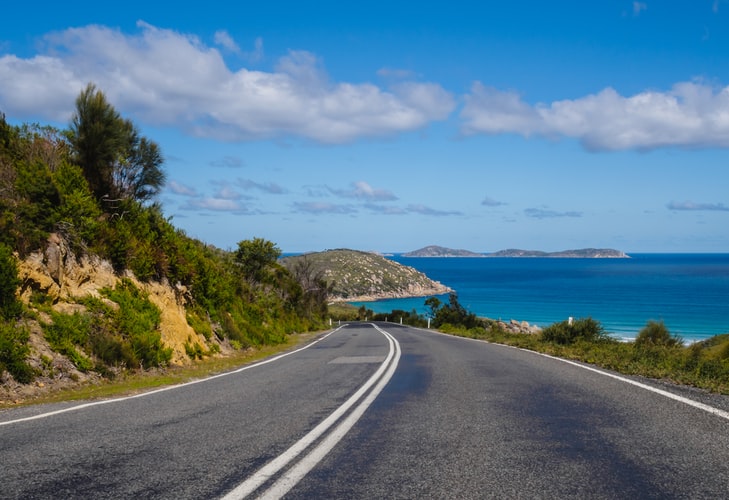
Bariloche, Villa Traful - San Martín de los Andes - Villa La Angostura

Salta - Calchaquí Valleys - Cafayate

El Calafate - El Chaltén - Torres del Paine - Punta Arenas - Río Grande - Ushuaia
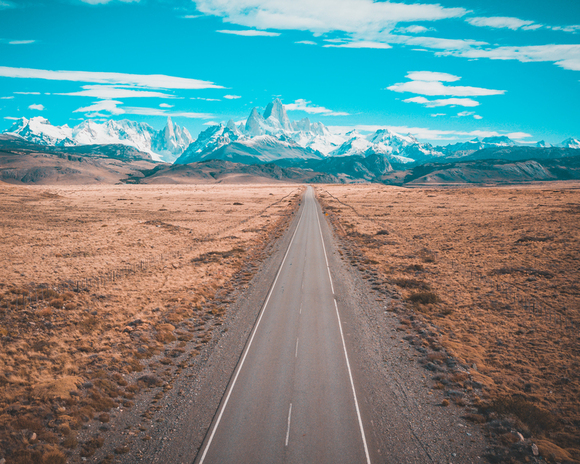
El Calafate - El Chaltén
Let's keep together & connected through our social media channels:
The website uses cookies to enhance your experience. By continuing, you agree to our Cookie Policy
Fill out the form, and our Travel Specialists will craft your quote within 48 Hours
Complete the form and our Travel Specialists will craft your quote within 48 Hours
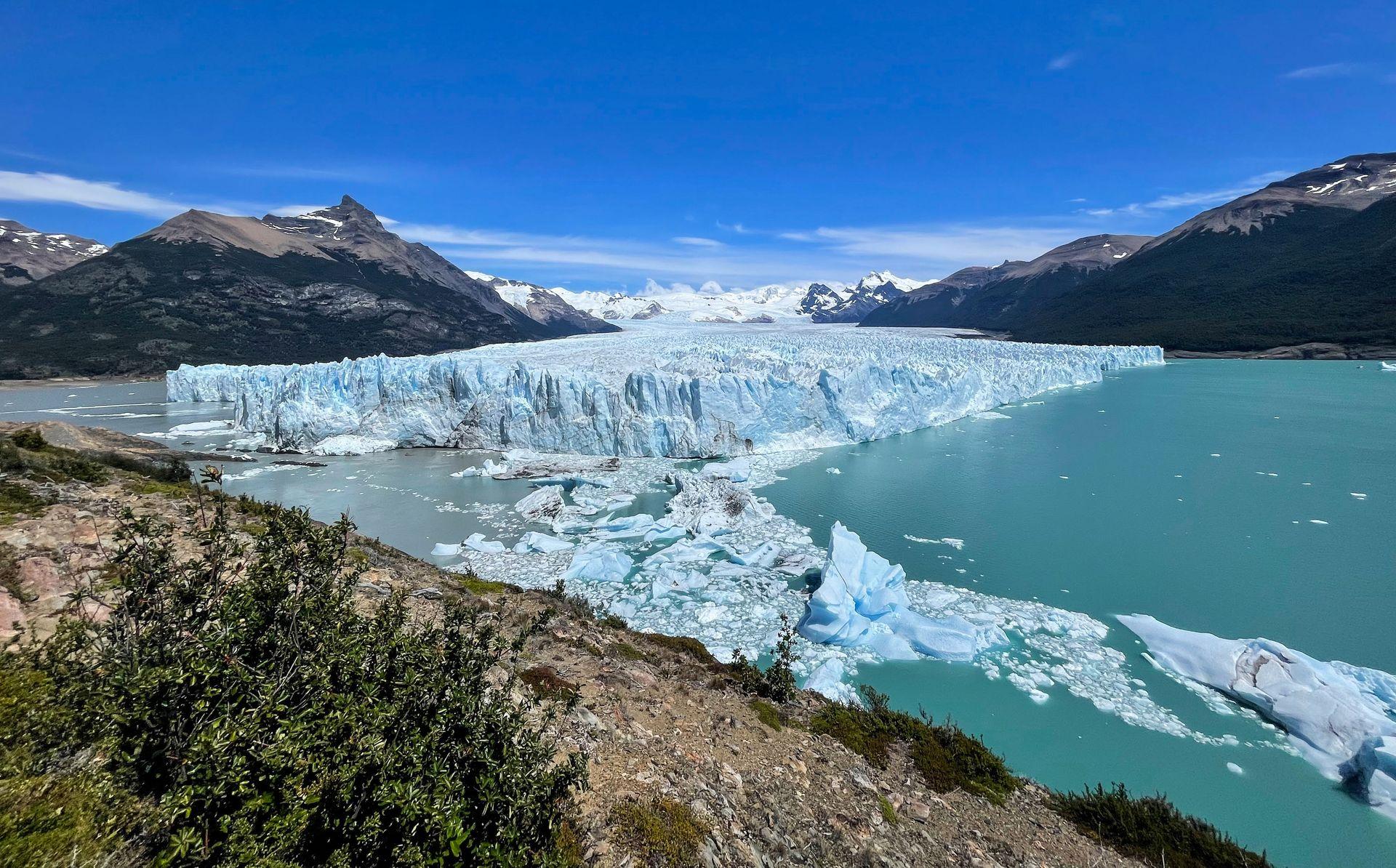
The Best Patagonia 2 Week Itinerary: Epic Road Trip in Chile & Argentina
April 17, 2023.
If you’re planning an epic road trip in Patagonia, you’re in the right place! This region is one of the most beautiful places I’ve ever visited. From jagged mountain peaks to opportunities to see wildlife and a variety of excellent hiking trails, there are endless adventures to be had.
Not only is Patagonia an epic destination, but I found it to be very safe to explore. There are some remote areas that you’ll be traveling through, but with the proper preparation, it is very doable to navigate through the Patagonia region of Chile and Argentina on your own.
If a Patagonia trip is on your bucket list, keep reading to learn what I recommend for a 2 week itinerary and all of the tips that you’ll need to know along the way.
This Patagonia trip itinerary is based on visiting Patagonia in December 2022 and January 2023.
Table of Contents
How long should you spend in patagonia, when to visit patagonia, tips for a patagonia road trip, rental car vs bus, map of patagonia, itinerary overview, day 1 - travel to patagonia, day 2 - prepare for the w trek, days 3 - 7 - hike the w trek in torres del paine national park, day 8 - drive to argentina, day 9 - hike to laguna de los tres, day 10 - drive from el chaltén to el calafate, day 11 - visit perito moreno glacier, day 12 - drive back to punta arenas, day 13 - take a day trip to see penguins, day 14 - fly back to santiago or home, is patagonia expensive, is patagonia vegetarian friendly, is patagonia good for a solo trip.
How many days should you spend in Patagonia? This is always a hard question to answer because I believe you should travel with as much time as you are able. You could spend months exploring Patagonia and still not see everything. Or, you could visit for 3 days and still have a memorable trip.
However, if you’re flying all the way to the bottom of South America, you might as well allow for a good amount of time to properly explore a few different areas of Patagonia. If you would like to visit both Chile and Argentina, and do some epic hiking along the way, I think that 2 weeks is the right amount of time to see the highlights.
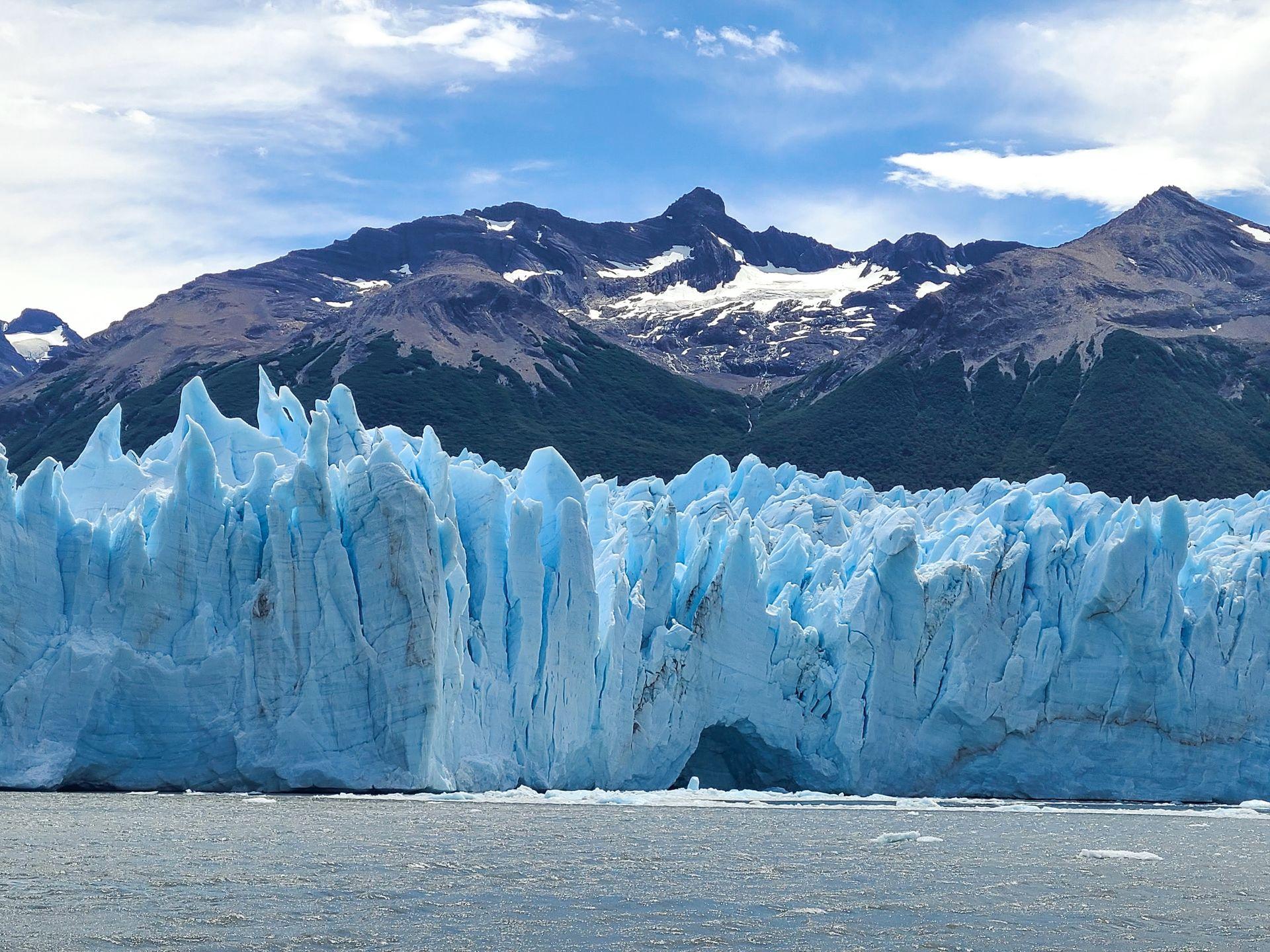
Since Patagonia is located in the Southern hemisphere, the seasons are reversed from the Northern hemisphere. This means that their summer is December through February. This itinerary includes a lot of mountainous hiking, so you’ll want to visit during the summer months or close to it.
This trip is doable from October to the end of April, but you’ll likely have the best weather from November to March. I visited in December/January and thought it was the perfect time.
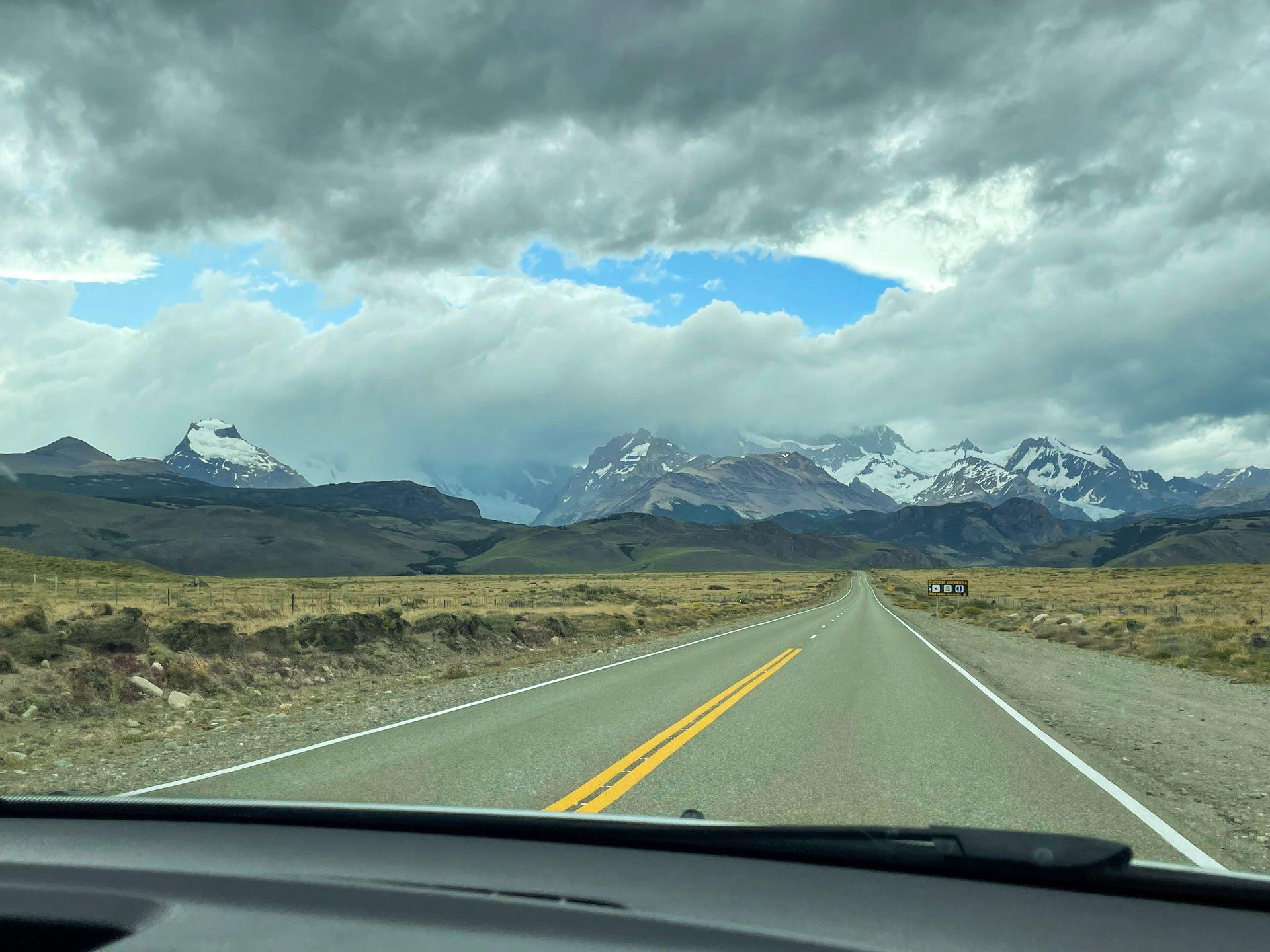
- Some areas of Patagonia are quite remote. Be sure to download Google offline maps so you’ll be able to navigate without service. I also recommend having an international phone plan or local SIM card.
- Prepare for all kinds of weather on your Patagonia trip - but especially wind. The wind can be very intense and even make it hard to drive. Dress in layers and be aware that you may have all 4 seasons in one day!
- If you are renting a car in Patagonia and plan to cross the border, you’ll need the rental company to provide a special permit. Make sure you ask about this ahead of time and be aware that it has an extra fee.
- If you’re traveling by car and headed into remote areas, be sure to fill up on gas whenever you can.
- I always recommend having some local currency when you travel. However, the vast majority of places in Patagonia took credit cards and in the few instances where we needed cash, they also took USD.
- You will likely see a lot of wildlife as you drive around the country! Be on the lookout for guanacas (similar to llamas) and rhea (similar to ostriches).
- Argentina and Chile use different types of power outlets. Coming from the US, you'll need an adaptor for each. I recommend getting a set of universal plug adapters . Chile uses Types C and L, while Argentina uses Types C and I. Both countries have a standard voltage of 220 V, so make sure your devices are compatible with 220 V.
Getting Around Patagonia
When it comes to transportation around Patagonia, most travelers will either rent a car or travel by bus. The bus is a great option if you’re visiting Patagonia on a budget, as it’s much cheaper than renting a car. But if you prefer to have the freedom to come and go when you please, renting a car is the best option.
Here are few things to keep in mind if you rent a car:
- Most of the rental cars are manual.
- You will need an additional permit from the rental car company if you plan to cross the border between Chile and Argentina.
I will be writing this itinerary from the perspective of renting a car, but will provide some information about bus options too when applicable.
Patagonia 2-Week Itinerary
This itinerary involves renting a car in Chile to drive yourself around Patagonia, hiking the W Trek in Torres Del Paine, crossing the border into Argentina and then returning to Chile. This is almost exactly what I did, and what I recommend for an epic trip. However, there are many opportunities to alter the itinerary if you have less time.
- Day 1: Fly into Punta Arenas, drive to Puerto Natales
- Day 2: Prepare for the W trek and visit Mylodon Cave National Monument
- Days 3 - 7: Hike the W Trek in Torres Del Paine National Park
- Day 8: Drive from Puerto Natales to El Chaltén
- Day 9: Hike to Laguna De Los Tres
- Day 10: Drive from El Chaltén to El Calafate
- Day 11: Visit the Perito Moreno Glacier
- Day 12: Drive from El Calafate to Punta Arenas
- Day 13: Take a penguin day trip
- Day 14: Fly back from Punta Arenas
Fly to Patagonia. Most likely, you will fly into Punta Arenas and then travel up to Puerto Natales.
To get to Patagonia, you’ll want to fly into either Punta Arenas or Puerto Natales. It is highly likely that you’ll be connecting through Chile’s capital city, Santiago, first.
Punta Arenas is a lot bigger than Puerto Natales, so there are many more flights and options for rental cars.
If you fly into Punta Arenas, you can either rent a car or take a bus to get to Puerto Natales. I opted to rent a car so that I would have it ready after the W Trek to drive directly into Argentina.
Check out my guide to renting a car in Patagonia for all of the details on car rental!
Either way, it is about 3 hours driving time between Punta Arenas and Puerto Natales.
Tip: If you rent a car in Chile, make sure to ask for a border crossing permit to be able to take it into Argentina. This is an extra fee and not all companies allow it. Call the rental car company ahead of time to make sure, as their online information may not be up to date.
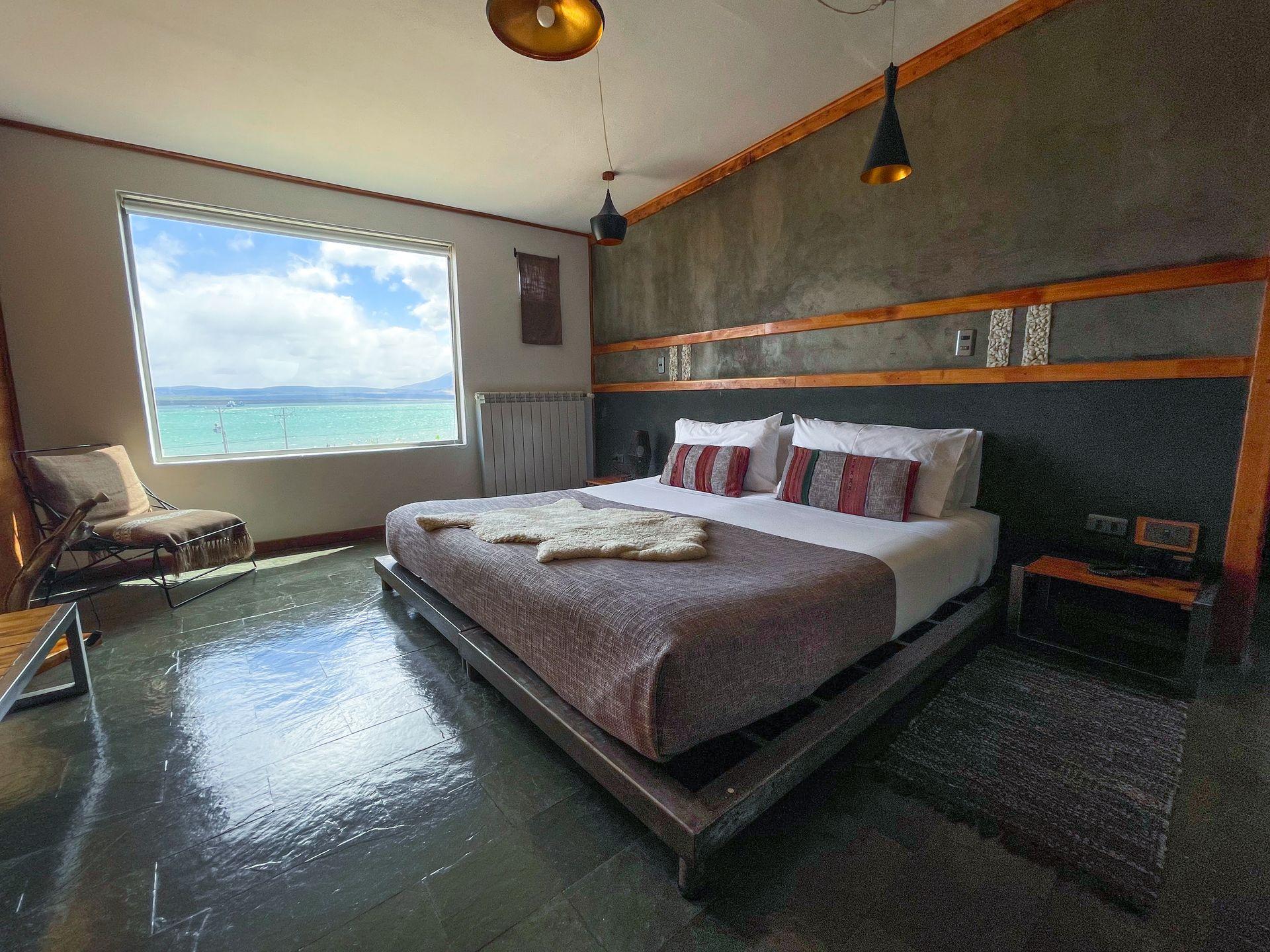
When you reach Puerto Natales, check into a local hotel and explore the town!
When it comes to hotels in Puerto Natales, there are many to pick from. I recommend Hotel Altiplanico Sur for a more peaceful and luxurious stay (at a mid-range budget). Each room has a view facing the water and they have a wonderful restaurant with refreshing cocktails. We also ordered packed lunches from this hotel to have our first day on the W Trek.
Another great hotel in town is Kau Lodge . It is right on the water and closer to town, so you’re an easy walking distance from restaurants. It has more of a social, hostel vibe but still offered private rooms and was quiet.
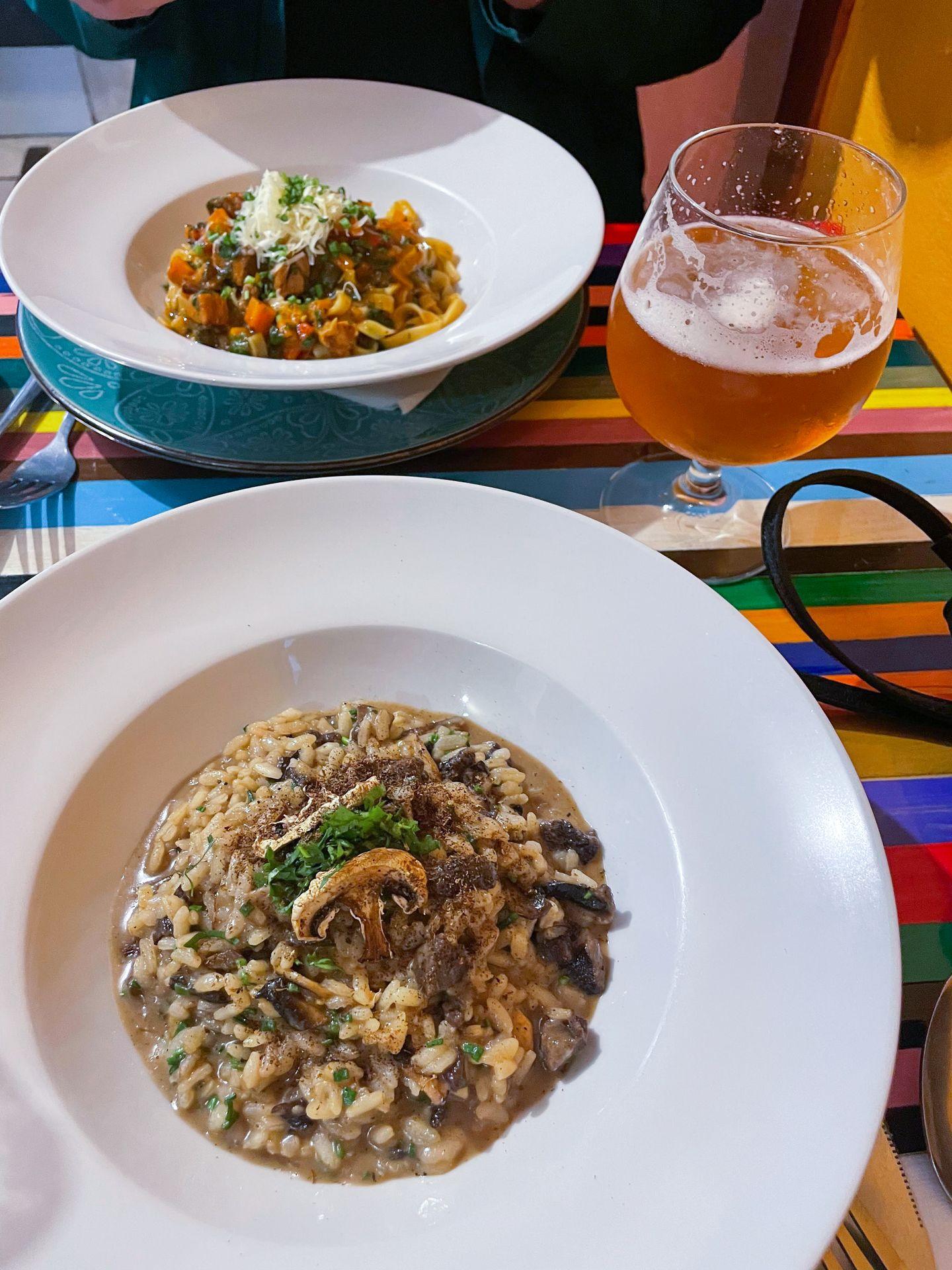
There are also several great restaurants in Puerto Natales. I recommend Café Artimaña, Cafe Kaiken and La Guanaca Pizza. Café Artimaña is a cozy restaurant and craft brewery that serves dishes full of flavor. I really enjoyed a mushroom risotto and a pisco sour. The staff was kind and welcoming.
Cafe Kaiken is another local Chilean restaurant that serves a variety of pastas, as well as other dishes and a selection of wine.
Finally, La Guanaca Pizza is a fun spot for comfort food with a variety of pizza options, cocktails and craft beer.
Tip: Try a Pisco Sour while you’re in Patagonia! It’s a cocktail that is typically made with brandy and blended with fresh juice, sugar and ice. The drink is generally regarded as originating in Peru, but is also very popular in Chile.
Make sure you’re ready for the W Trek and visit the Mylodon Cave National Monument.
This might not be necessary depending on what time your flight was and where you flew into, but I’m leaving an extra day in the itinerary to prepare for the W Trek!
Make sure you are completely packed and ready with any snacks or gear that you may need.
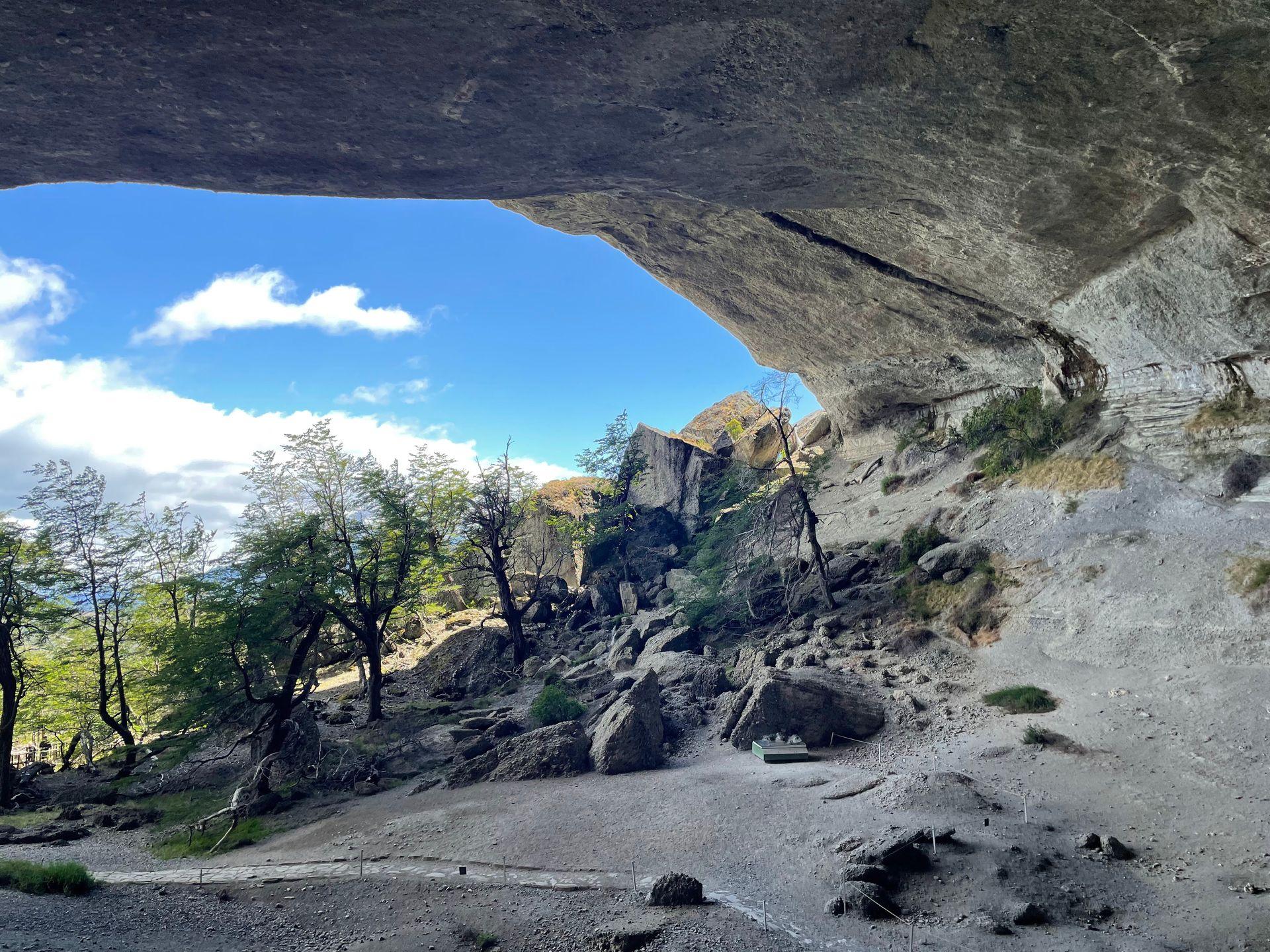
If you have time for an activity and have a rental car, go on a hike in Mylodon Cave National Monument! The park is just about 20 minutes from Puerto Natales and is home to a massive cave. It is a quick walk to see the Milodon Cave, which is the largest cave in the park. The cave is 200 meters/660 feet long and there is a trail around the rim to enjoy the cave up close.
On the short walk to the cave, you’ll also find signage to learn about the history of the cave and prehistoric animal life in the area.
There are many more trail options if you have time and energy. I recommend hiking to Cueva del Medio, a smaller cave that is really neat to explore.
If you don’t have a rental car, you can also visit via taxi.
Spend 5 days hiking the W Trek in Torres Del Paine National Park. Alternatively, spend a couple days here doing day hikes.
If you have the time to spare and you love hiking, I highly recommend hiking the W trek during your trip to Patagonia! The W Trek is a multi-day hike in Torres Del Paine National Park. Most hikers do the trek over 5 days and 4 nights.
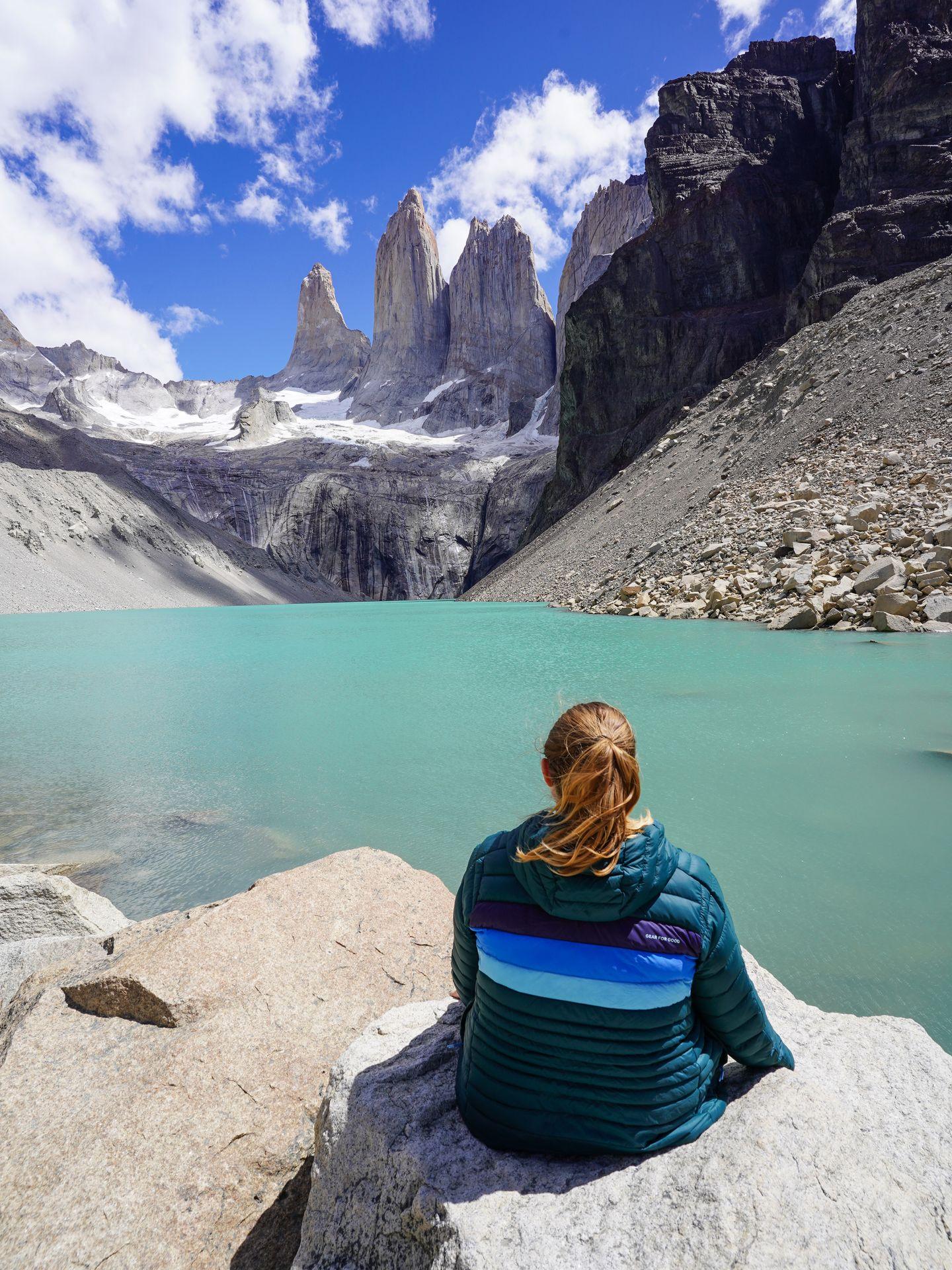
If you’re an avid hiker, you’ll find the W Trek to be incredibly rewarding. The journey will lead you past serene turquoise lakes, cascading waterfalls, mighty glaciers and rugged mountain peaks. Not to mention the chance to spot the magnificent condor birds and the opportunity to get to know other hikers along the way.
One of the great things about the W trek is that you can stay at inns along the way. The inns provide shared dorm rooms, or they can provide tents for a lower cost. They also can provide all of your meals. Having a shower, a bed and your meals taken care of is certainly a luxury after spending your days hiking up and down mountains!
I hiked the trek from East to West and stayed in four different inns along the way. To start and end the trek, I took a bus from Puerto Natales.
For my full itinerary and everything you need to know to book the W Trek, check out my W Trek guide.
If you have less time OR hiking for 5 days doesn’t sound appealing to you, I still recommend spending one or two days in Torres Del Paine National Park.
One option for a shorter visit is to stay at Hotel Las Torres Patagonia and take a day hike to see Mirador Base Las Torres, which is arguably the most iconic view in the park. Another great option is to stay at Hotel Lago Grey and take their scenic boat ride to get a great view of Glacier Gray. No matter what you decide, make sure to spend some time in this incredible park.
Make your way from Puerto Natales to El Chaltén.
After exploring Torres Del Paine National Park in Chile, it’s time to head to Argentina! Take the bus or your rental car across the border into Argentina.
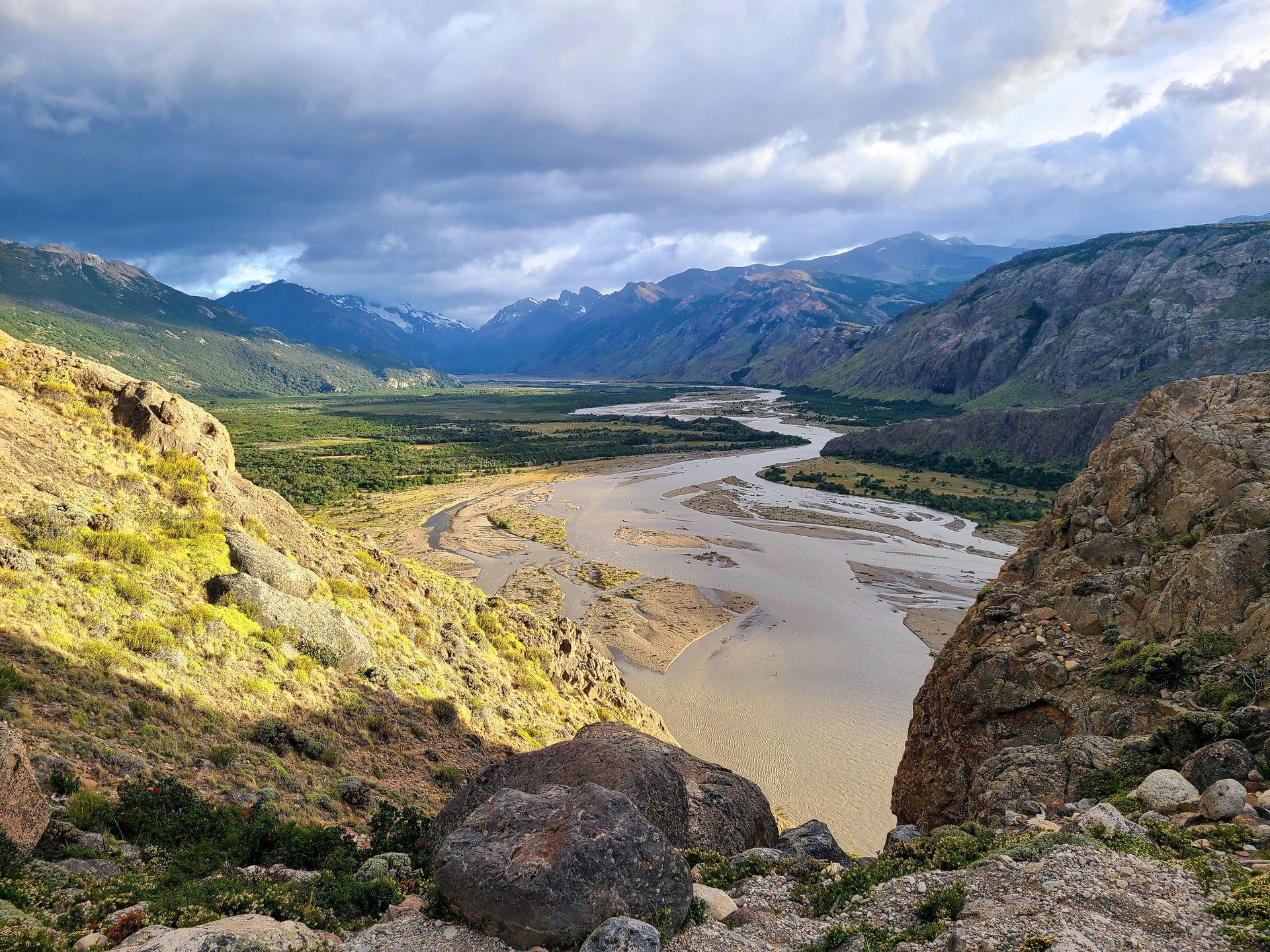
If you are driving a rental car across the border, here are some things you need to know:
- You must have a border crossing permit that will be provided by your rental car company.
- You’ll stop at the Chile border crossing first, then drive across the border and stop again on the Argentina side.
- If you cross at the border closest to Torres Del Paine, it is 8.5 km or a 10 minute drive between the two buildings. It feels a little strange to be in no-man’s land for that long, but keep going and you’ll see it! As soon as you reach Argentina, the road becomes unpaved.
- When you leave the Argentina border, the road is unpaved for a bit longer until you turn onto Route 40.
- Your map will likely try to take you on Route 40 between Estancia Tapi Aike and El Cerrito. This is a long section of unpaved road that you should avoid due to its remote nature and the strong possibility of a flat tire or other car trouble. Instead, take Route 7 to Esperanza and then turn onto Route 5.
- Due to the remote areas you’ll be driving through, be sure to get gas when you can and have a map.
If you are taking the bus, you may need to spend some time in El Calafate between Puerto Natales to El Chaltén.
The drive between Puerto Natales and El Chaltén takes about 5 - 6 hours, but this could be delayed if you have a long wait at the border crossing.
When you reach El Chaltén, check into your hotel and dine out.
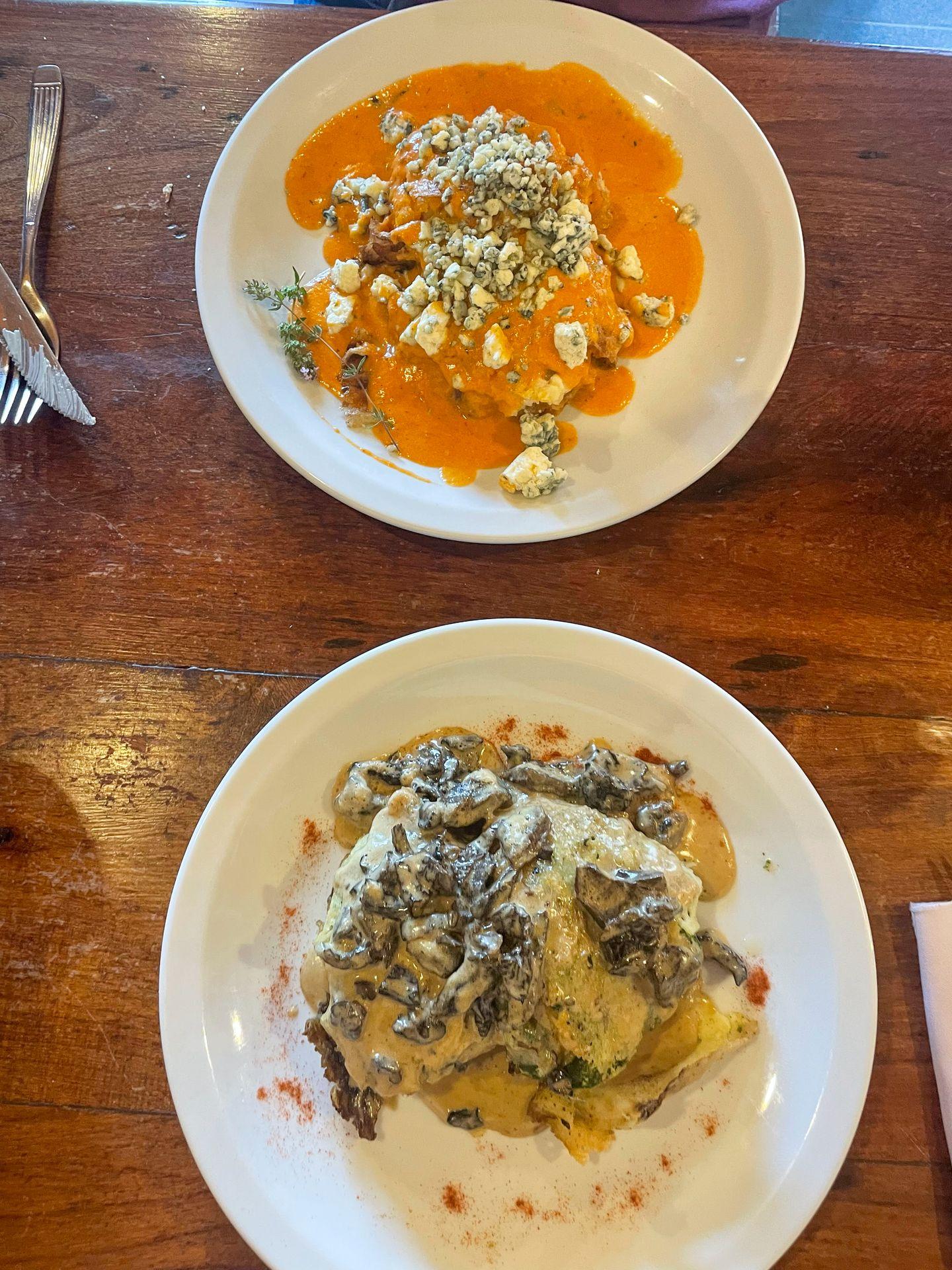
My meal at Fuegia Bistro was my favorite meal of the entire trip. My partner and I both had vegetarian crepes and they were full of flavor. I had the crepe with spinach, and my partner had one with pumpkin and walnut filling, tomato sauce and blue cheese. They tasted like the ultimate elevated comfort food. Not only were the crepes fantastic, but the restaurant had a great wine selection and fabulous service. It’s a little bit of a nicer restaurant but still casual.
I also had a nice stay at Hostería Kau Si Aike . The lodging was basic but included breakfast and the host was so kind and helpful!
Tip: Cell service and wifi is unreliable in El Chaltén. There were some short periods of time where the entire town didn’t have internet. Make sure to be prepared so you’re not completely reliant on it.
Spend the day on an epic day hike to Laguna De Los Tres.
If you’re up for a long day hike, the trek up to Laguna De Los Tres is a must! This hike will rival the W trek in terms of epic views and stunning landscapes. You’ll be hiking to the destination that inspired the logo of the Patagonia brand and get to see a bright blue lake framed from incredible mountain peaks.
Tip: This trail gets super crowded so I recommend getting an early start.
There are a couple different starting points for this trail. The most popular trailhead is right on the edge of town and the town is small enough that you can walk there from any hotel. If you drive, there is a relatively large lot.
Another option is to start from the Senda El Pilar trailhead, which you can reach by bus or car. If you go there by bus, then you can hike back to the El Chalten trailhead and make it a point-to-point hike. This allows you to experience more scenery and hike a less crowded portion of the trail at the beginning of the day! The mileage for both routes is similar.
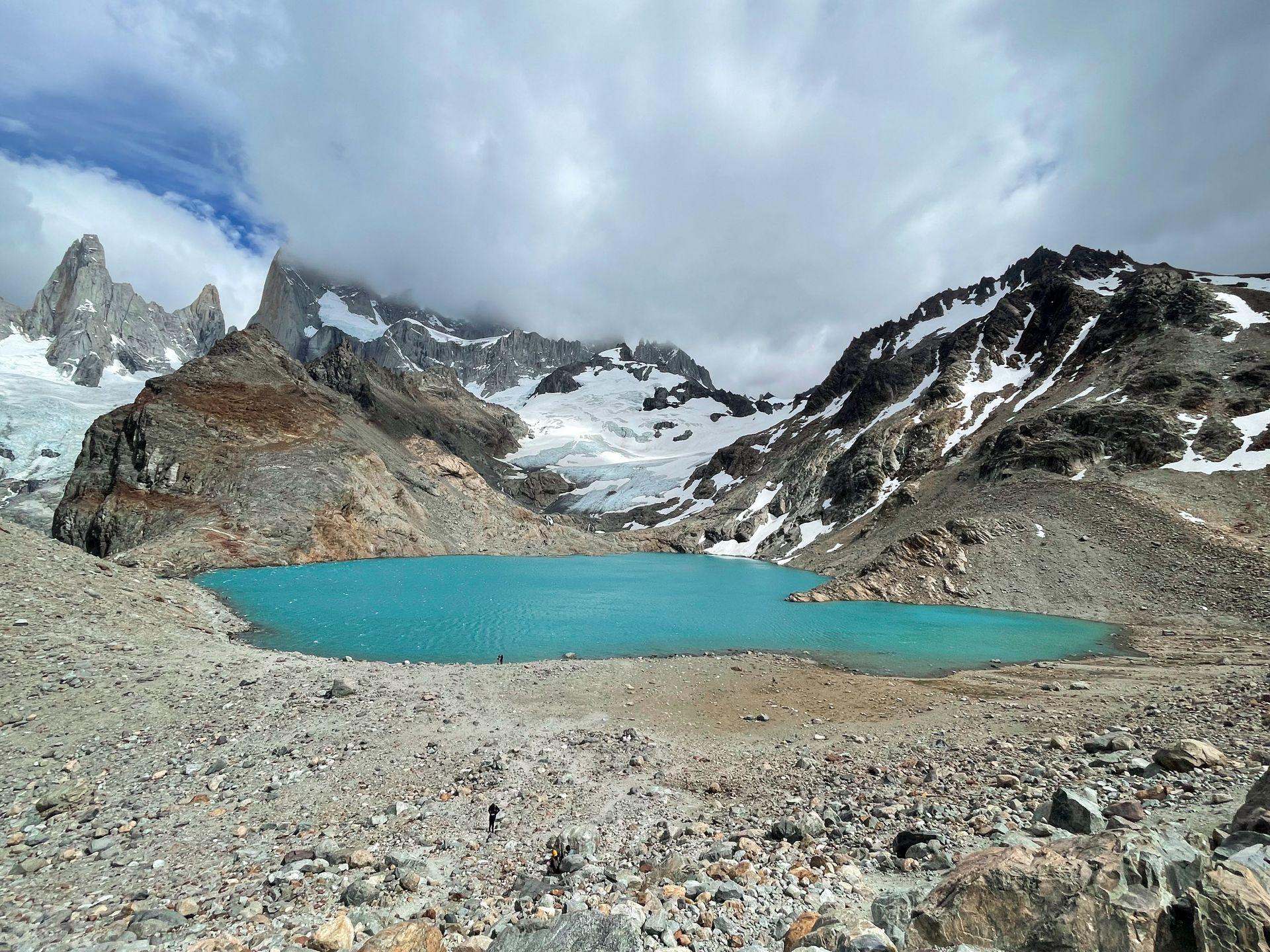
I hiked out and back from the main trailhead and logged 15 miles. The trail has gradual elevation for the first 2 miles, then is flat for the next 2.5 miles. During the flat part of the trail, there are several opportunities to see Mount Fitz Roy in the distance. The views are incredible the entire way!
The last 1.3 miles of the trail to reach the viewpoint are definitely the hardest. There is a lot of rock scrambling and some areas where you’ll be climbing up loose rock. During the day I was here, the wind was intense and it continued to get worse the higher I climbed.
When you reach the peak, you’ll be rewarded with an incredible view of Laguna De Los Tres with the backdrop of Mount Fitz Roy. The area at the top is very exposed, so there can be high winds (there were for me!). I also never saw the full mountain view due to cloud cover, but it was still one of the most beautiful views I’ve ever seen!
Spend the morning on a short hike in El Chaltén and then drive to El Calafate.
Do another short hike or two in El Chaltén before making your way to El Calafate (a 2-3 hour drive).
If you only have the morning, I recommend the Chorilla Waterfall and/or the Huemul Glacier.
Chorrillo del Salto is a short and easy trail that will lead you to a beautiful waterfall. If you are hiking in from town, it’s a little over 4 miles. But if you have a rental car, you can park very close and hike about 0.7 miles round trip to reach the falls. I recommend going early to see these falls because they get crowded.
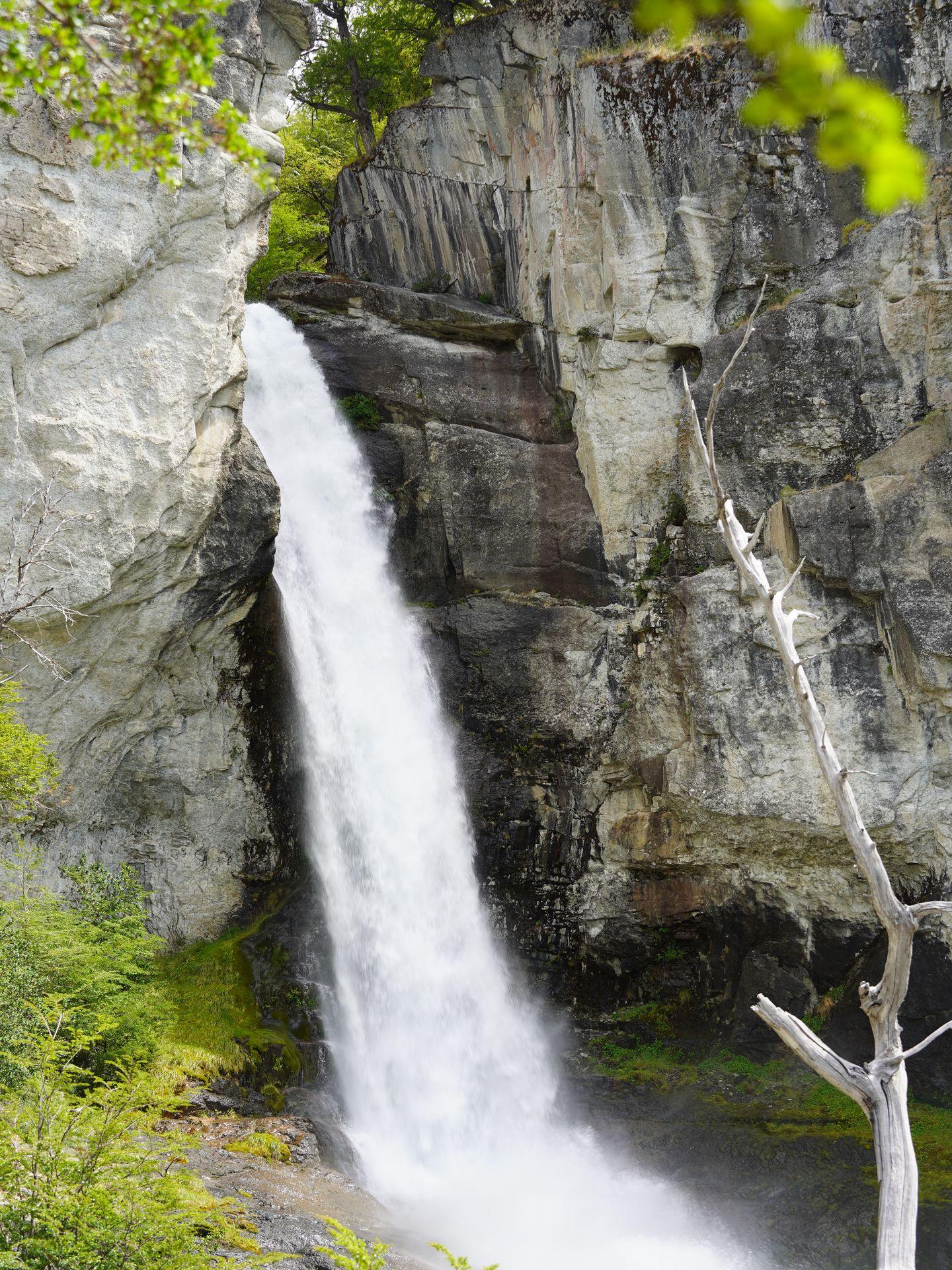
A bit further from town, the Huemul Glacier hike is about 2 miles and includes a beautiful trek through a green forest and a great view of the glacier hanging up above a lake at the end.
Please note that to reach Huemul Glacier, it’s about 34 km on a dirt road. The dirt road should be doable for any car, but there may be some rocky and wet areas. Expect it to take a little longer than you expect, but the drive has many beautiful views!
If you are spending the entire day in El Chaltén, another iconic trail is Laguna Torre. This 10.9 mile (or more if you add on the Mirador Maestri viewpoint) hike leads to a lake that often has icebergs floating on the surface. I hope to hike this next time I visit the area!
After a morning of exploring, make your way to El Calafate to continue your trip.
Tip: If you’re driving, allow extra time to get gas in El Chaltén. There is one tiny gas station and one pump, so there are often long lines. You will also need to pay in cash.
Take a day trip to the Perito Moreno Glacier.
For your one full day in El Calafate, head to the Perito Moreno Glacier. I opted to take a day trip that includes transportation from El Calafate, time at the Glacial walkways, a boat ride and a hike ON the glacier.

The views of the glacier from the walkways are outstanding. There are 4.7 km of walkways and you can see the glacier from multiple angles. It’s truly a sight to behold. The glacier is 5 km wide, has an average height of 74 m above the water and has a total ice depth of 170 meters.
The glacier is also on the move. It flows about 2m each day further from its origin point. And you’re likely to see chunks of ice calving (breaking off) and falling into the water. It’s fascinating to watch!
Next to the walkways, there is also a cafe and gift shop where you can buy lunch.
After exploring the walkways, we took a boat ride in front of the Southeast side of the glacier. It was a quick ride and fascinating to see the tall glacier walls from the water.
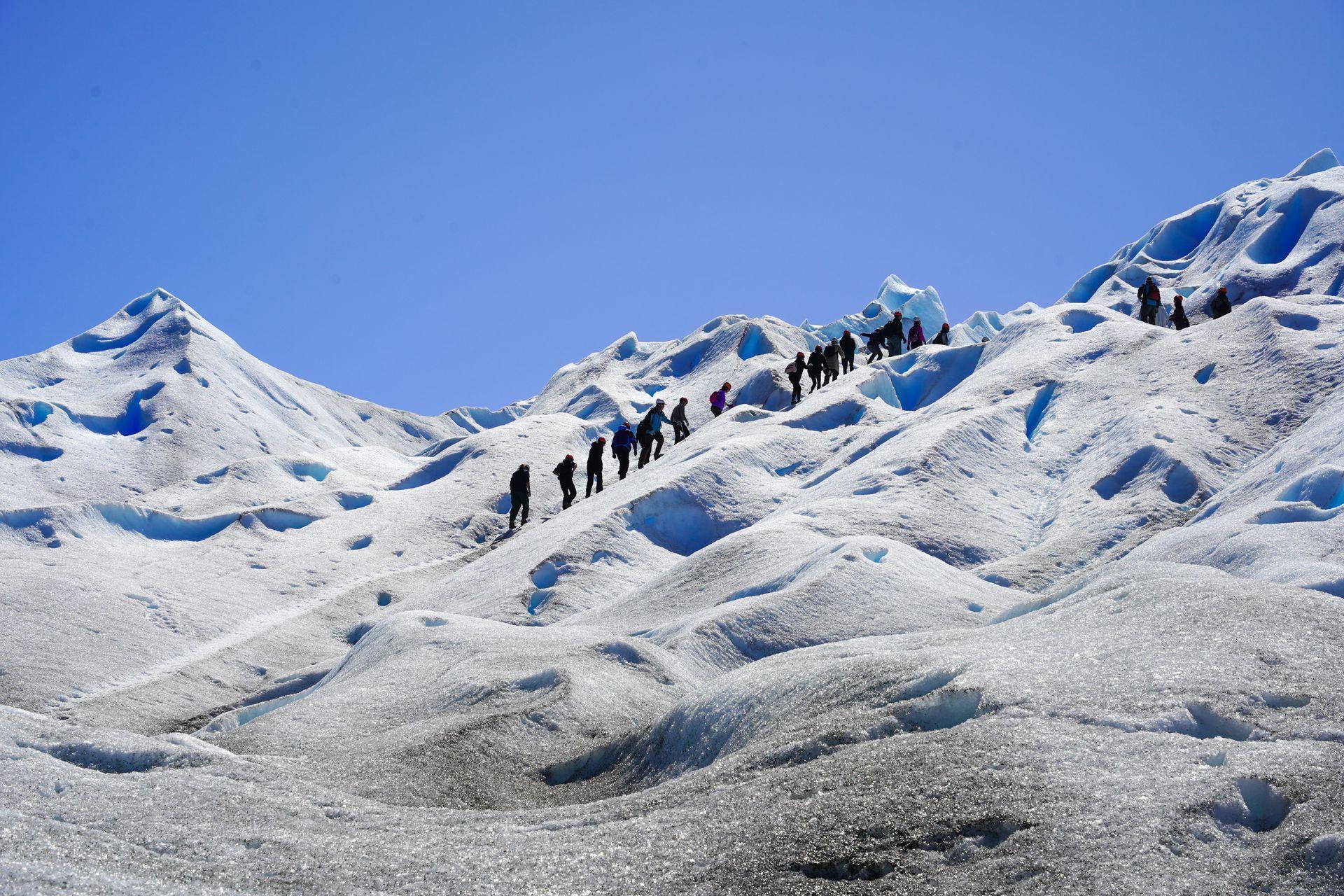
We were dropped off on the other side of the waterway and hiked over to the foot of the glacier. From there, we geared up with some heavy duty spikes and helmets.
The glacier hike was so much fun! We got to explore a crevasse, sample glacier water and take in the stunning views. Glacier hiking is always such a special experience - I also got to enjoy it at the Matanuska Glacier in Alaska.
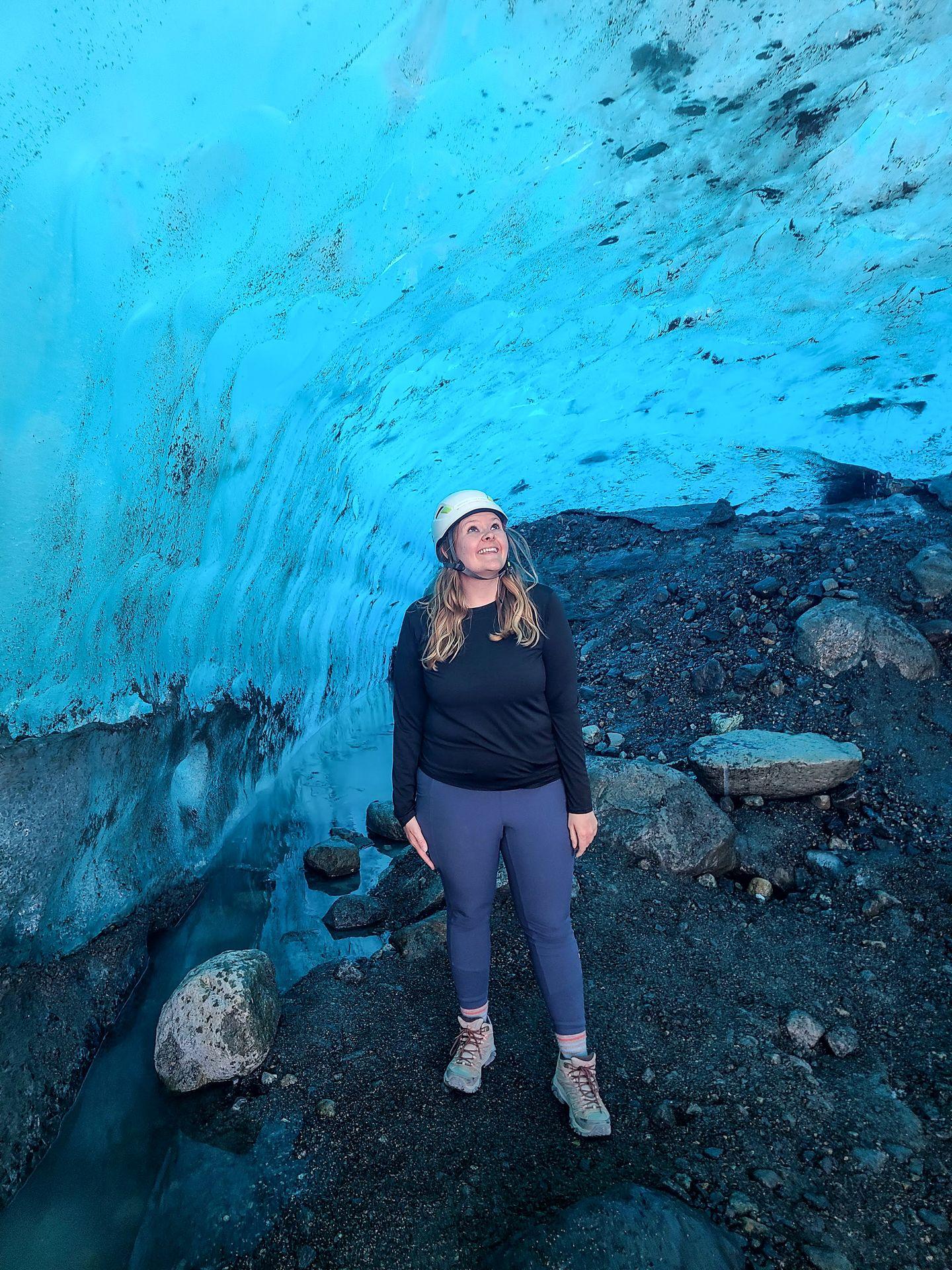
This tour was extra fun because it ended with whiskey served over glacier ice and chocolate enjoyed on the glacier. It was a memorable experience that was worth every penny!
A trip to Perito Moreno Glacier is something not to miss on your Patagonia itinerary.
Drive from El Calafate, Argentina to Punta Arenas, Chile.
Spend this day driving from El Calafate back to Punta Arenas. Keep in mind that you’ll have to cross the border again, so you should allow some extra time. In my experience, crossing into Chile took a lot longer than crossing into Argentina. They spend a lot more time searching your bags.
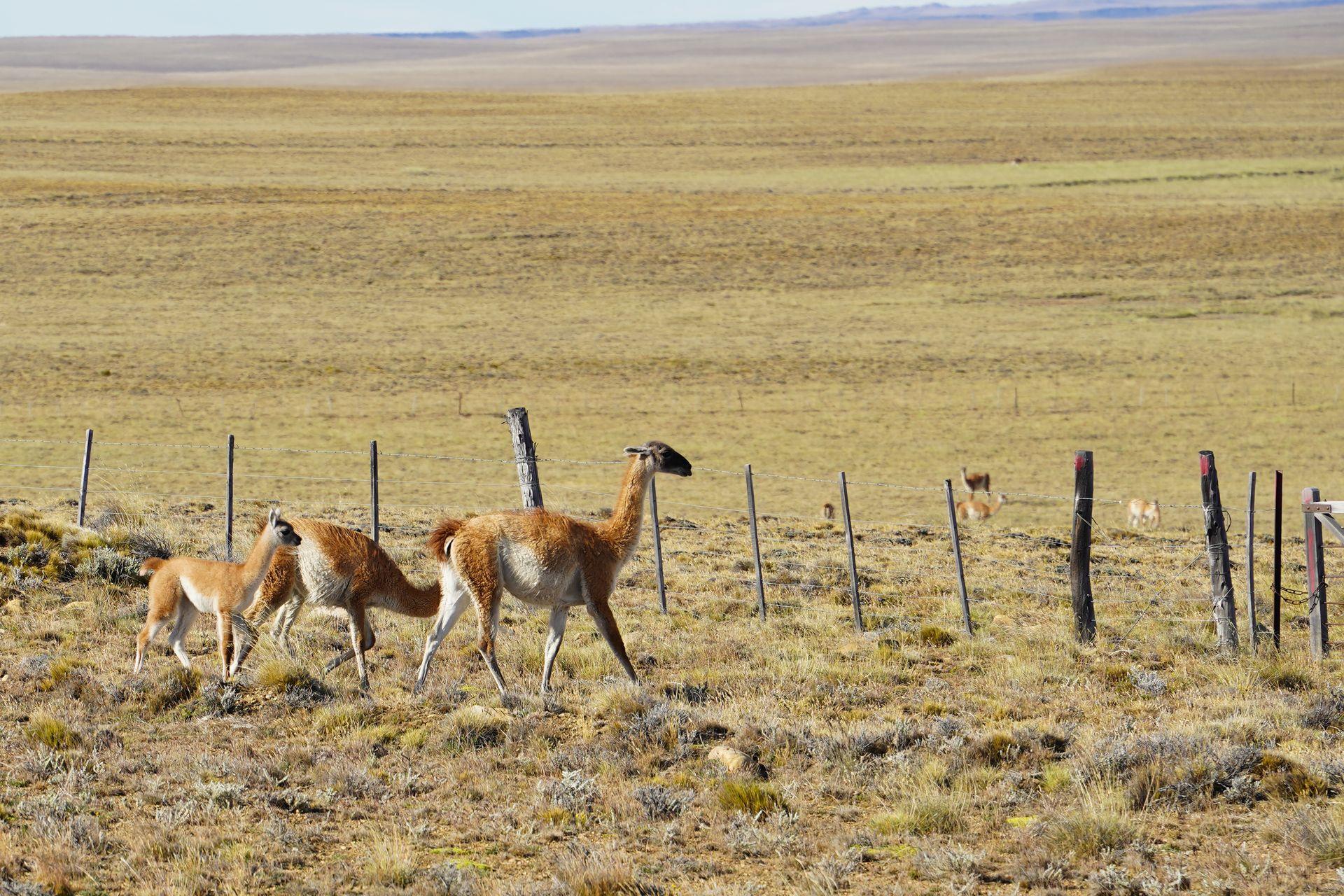
Tip: You cannot take any fresh fruit or vegetables into Chile, be sure to throw them out before you reach the border. Other foods such as nuts and meats can only be taken in with a declaration.
The drive between El Calafate to Punta Arenas will likely take between 5 and 6 hours.
When you reach Punta Arenas, spend some time exploring the city or relaxing after a long trip.
If you have some extra time in Punta Arenas, visit the Cemetery of Punta Arenas. The cemetery is quite large and impressive. It ranks in the top 10 of the most beautiful cemeteries in the world. You’ll be able to explore tree-lined paths with perfectly manicured hedges and see the gravestones of ancient settlers and immigrants.
This is a small admission fee and you’ll be given a map with some information to learn more as you explore.
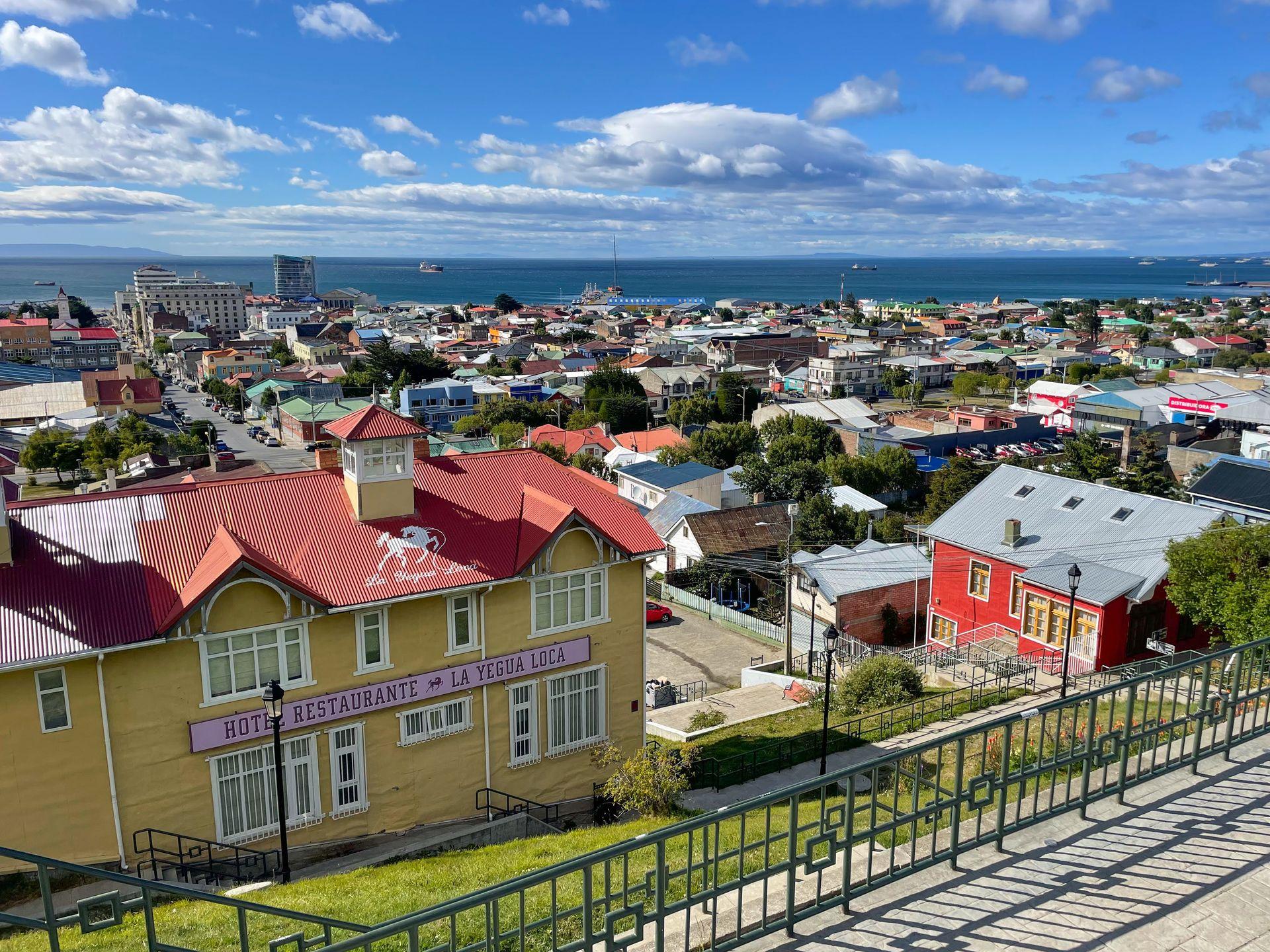
Another great stop in town is Cerro de la Cruz, an observation point that offers great views of the city. From here you’ll be able to see the Strait of Magellan and a large portion of the city. It’s located in a city park and you’ll also find some nice murals and benches. It’s a great place to watch the sunset.
Finally, if you’re looking to splurge on a nice hotel for your last stay in Patagonia, I highly recommend Hotel La Yegua Loca .
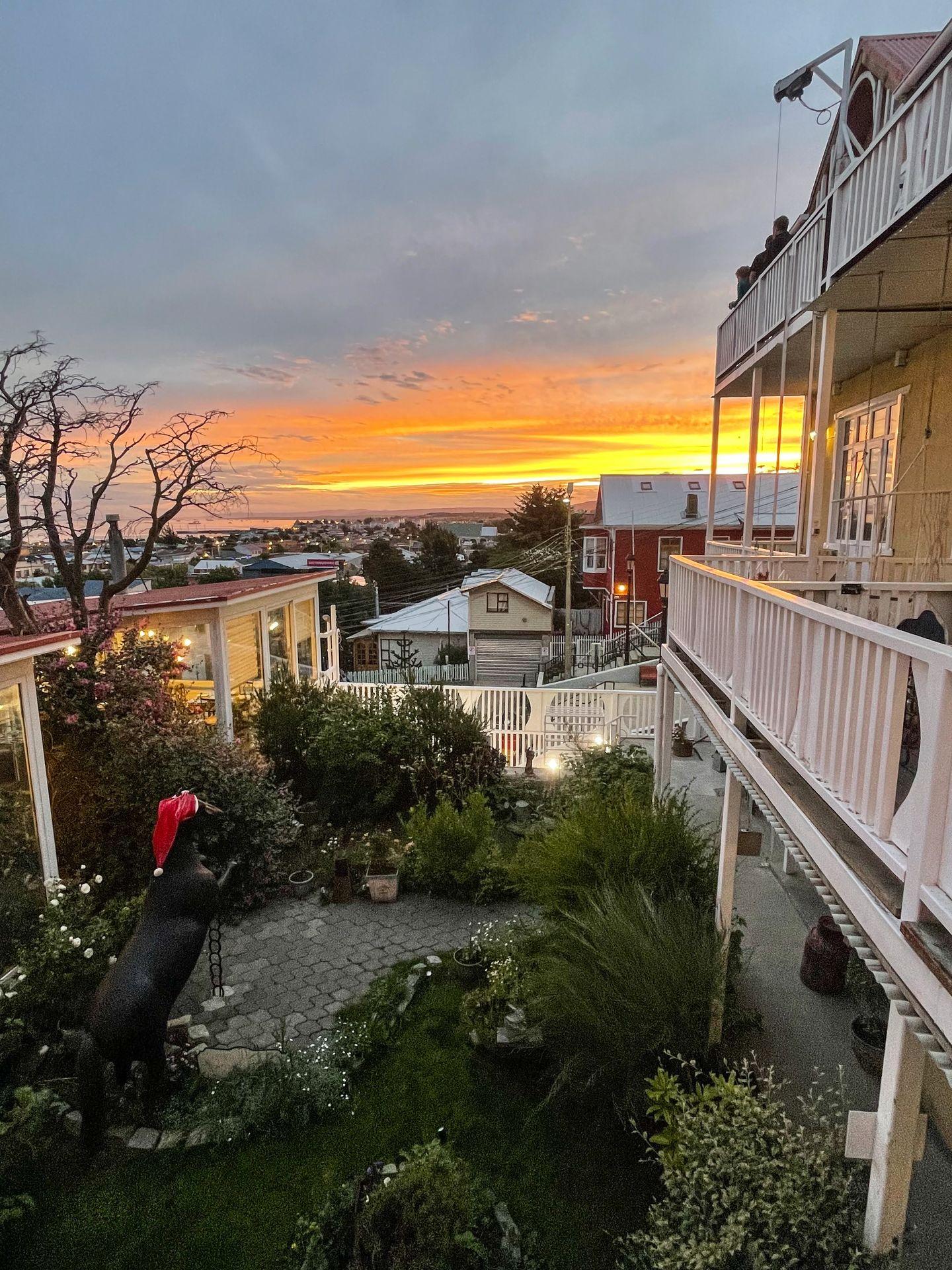
This boutique hotel is themed to honor the trades and traditions of Croatian pioneers, English and Chilotes that arrived in this area in the mid-1800s. Each of the 15 rooms has a different theme showcasing different jobs held by the early pioneers. I stayed in ‘The Warehouse’ which was equipped as a workshop. Details included tools on the walls, a soldering iron as a towel rack, and Chevy memorabilia adorning the walls. Maybe the best part was that the room had a large balcony with an amazing view looking out at the city.
In addition to the beautiful rooms, we ate breakfast and dinner at the hotel and the food was great. I enjoyed a Pisco Sour flight (there were 5 kinds to choose from!), falafel risotto and a chocolate mousse dessert.
This beautiful hotel is the perfect way to end an epic adventure traveling and hiking all over Patagonia.
See penguins near Punta Arenas.
On your final day in Patagonia, take a day trip from Punta Arenas to see penguins! This is something I ran out of time for but wish I had been able to do.
One of the closest places to see penguins is on Isla Magdalena. The island is home to Chile’s largest penguin colony and one of the largest rookeries in Patagonia. Along the way, you also may get to see elephant seals and sea lions!
It is about a 2 hour ferry ride to reach the island, or you can take a speed boat via a tour. Visitors are typically only able to spend about an hour on the island so as not to disturb the penguins too much.
You can book your visit to Isla Magdalena on Viator. This tour lasts 4-5 hours.
If you’re interested in a longer day's adventure to see penguins, you can also take a trip over to Parque Pingüino Rey located on Tierra del Fuego Island. This area is home to a colony of King Penguins and will include more travel in the Patagonia countryside. The tour lasts about 14 hours and can be booked on Viator.
Travel back to Santiago and/or home.
After an incredible two weeks exploring Patagonia, catch a flight from Punta Arenas. Depending on your flight options, you may want to spend a day exploring Santiago.
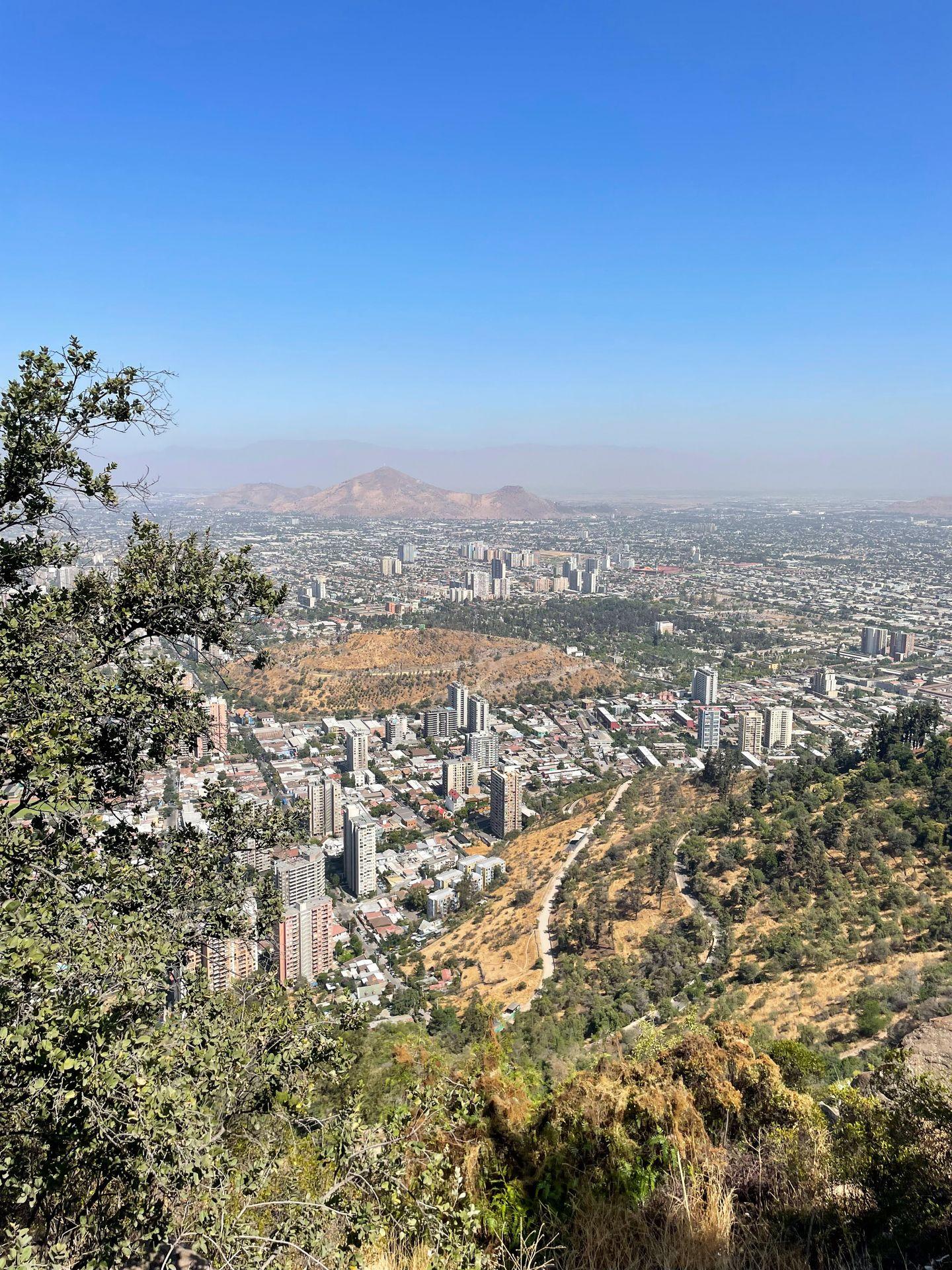
If you have a day or two to spend in Santiago, I recommend walking around Parque Forestal, taking the gondola or cable car to the top of Cerro San Cristobal, visiting the Central Market and eating some delicious food! If you have even more time, take a day trip to either the mountains or the coast. I had a great time visiting a winery, the Inca Lagoon and driving a road with 29 hairpin turns on this tour I booked on Viator.
I hope this itinerary helps you plan an epic trip to Patagonia! Keep reading to learn some FAQs and check out my ultimate guide to hiking the W Trek , my top tips for hiking the W Trek and my guide to renting a car in Patagonia to continue planning your trip.
FAQs about Patagonia Travel
Yes and no. Patagonia tends to be more affordable than traveling in the US, but it’s by no means cheap. As with any vacation, there are plenty of areas where you can choose between saving or splurging. One of my biggest costs was the rental car, but you can opt out of that and travel via bus instead. Hotels tended to be a bit expensive in the small, touristy towns, such as El Chaltén. And there is a large range of prices when it comes to food and activities. To see exactly what I paid to hike the W Trek, check out my cost breakdown.
As a vegetarian, I was pleasantly surprised by how vegetarian friendly the region was! I ate a lot of risotto and also came across plenty of vegetarian pizza, pasta and sandwiches. Just about every restaurant I came across in Patagonia had vegetarian options.
While I did not visit solo myself, I absolutely would! I felt very safe traveling around this part of Chile and Argentina. There are also some great opportunities to meet other travelers by joining tours, staying in social hotels and hostels and getting out on the trails. Personally, I think Patagonia would be a great place to travel solo.
For more Patagonia guides, check out these blogs:
- The Ultimate Guide to Hiking the W Trek Self-Guided
- A Guide to Renting a Car and Driving in Patagonia
- 30 Tips for Hiking the W Trek
- A Detailed Packing List for the W Trek
Thanks for Reading!
Save to Pinterest!
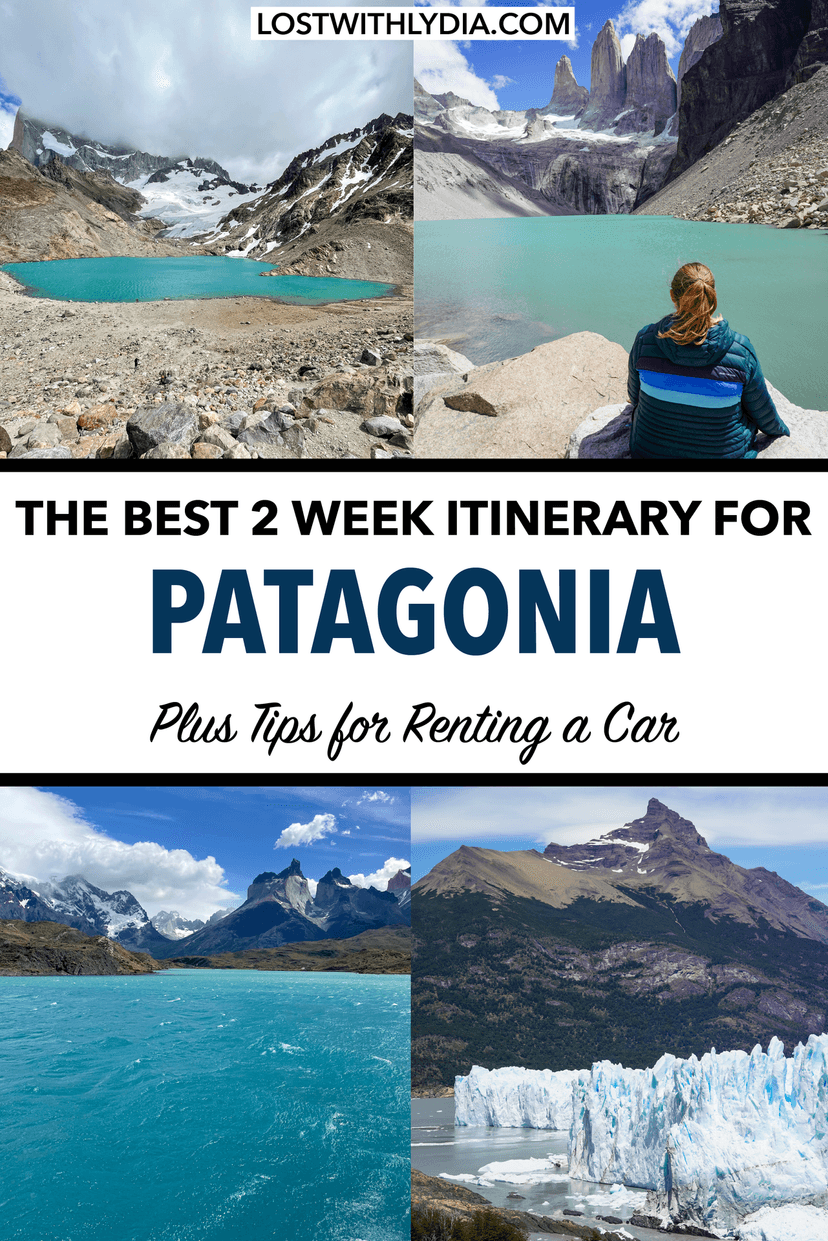
The Best Things To Do at New River Gorge: Hiking, History & More
The Perfect Springtime Rocky Mountains Itinerary (2024)
Let's stay in touch!
Join the Lost with Lydia email list to get monthly travel guides and tips!
You also may like
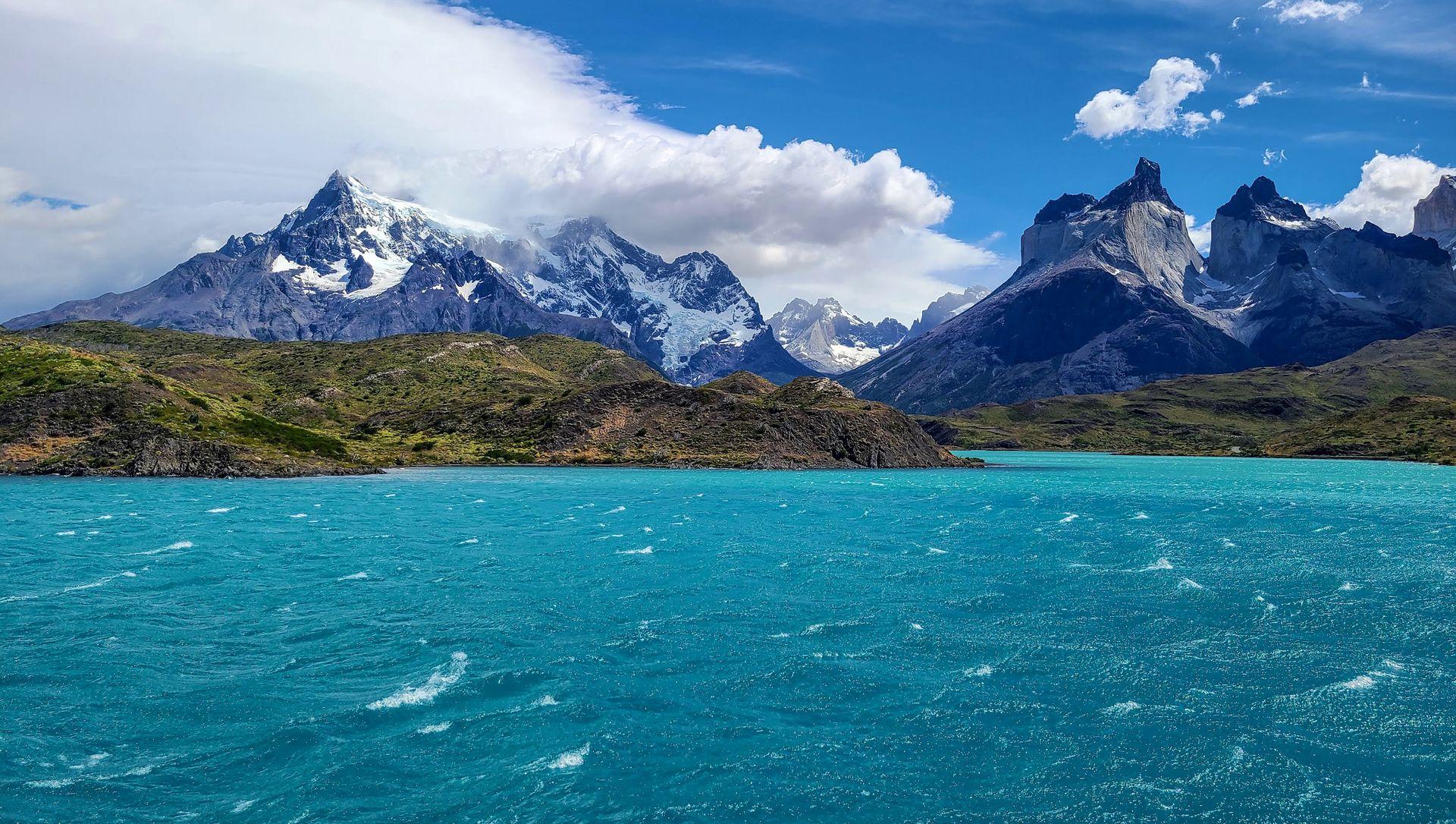
The Ultimate Guide to Hiking the W Trek in Patagonia: Full Itinerary, How to Self Book, Cost Breakdown & More!
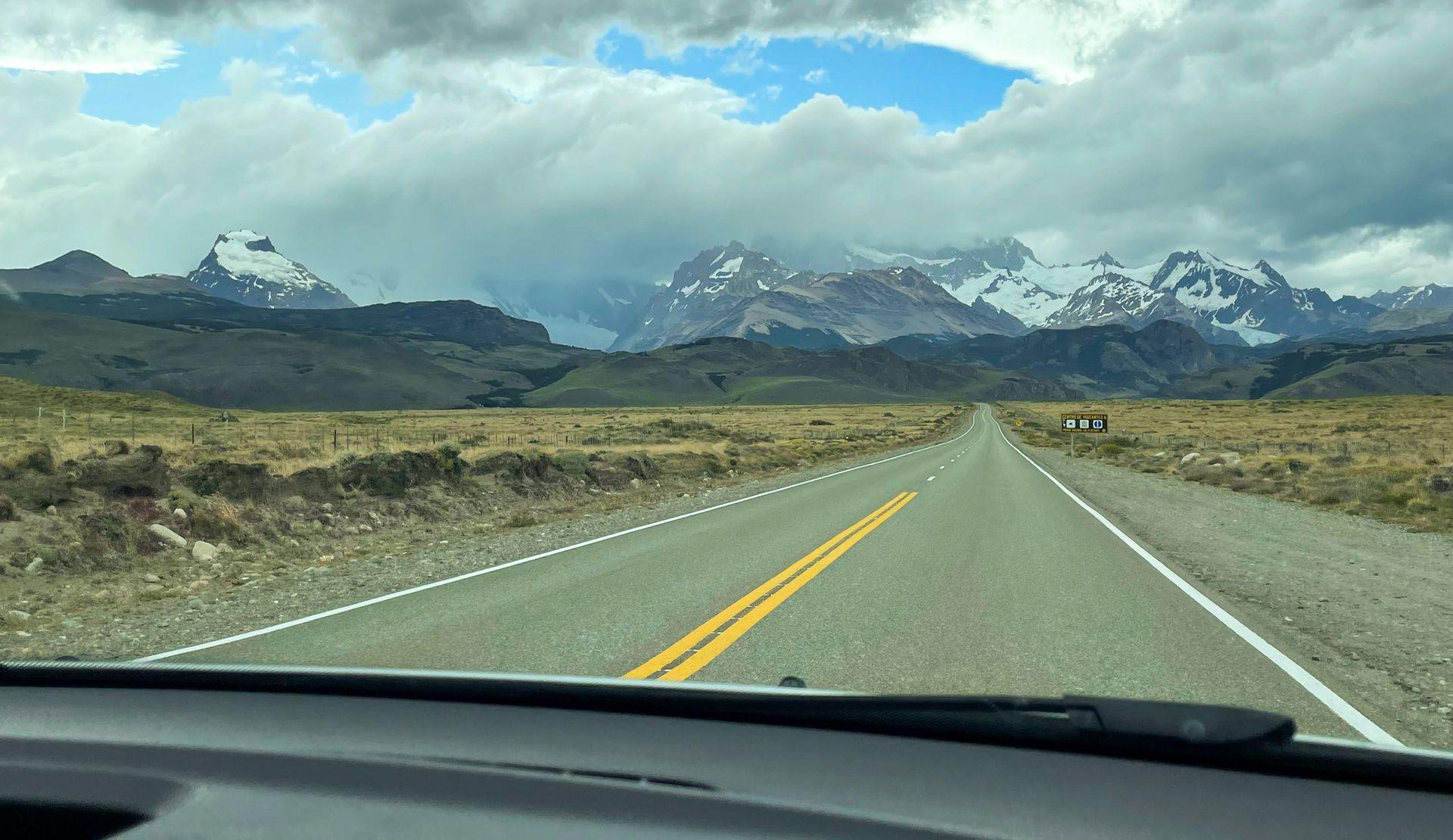
A Guide To Renting a Car and Driving in Patagonia
Want travel inspiration sent straight to your inbox?
By clicking ‘Sign Up,’ I acknowledge that I have read and agree to Hachette Book Group’s Privacy Policy and Terms of Use
Site Preferences
Sign up for our newsletter to get 15% off sitewide!
3 Classic Patagonia Road Trip Routes
Because of Patagonia’s vast expanses, overland travel tends to be for those with plenty of time. Most routes are well served by reasonably priced public transportation, but renting a vehicle can be more efficient. A 4WD vehicle is rarely necessary, but a high-clearance vehicle can be worth the extra bucks.

Parallel to RN 3, the mother of all Argentine roads is RN 40 , from the Bolivian border in Jujuy province to the Chilean border in Patagonia’s Santa Cruz province. It’s in Patagonia, though, that RN 40 has acquired an international reputation as the adventurous route between the northern lakes and southern glaciers. Only in the last few years has there been any semiregular public transportation on the route from Bariloche to El Calafate. The southern segment from the town of Perito Moreno to El Calafate is in the process of being fully paved, but parts of any trip south of Río Mayo still seem like an expedition. Travelers should be prepared for several days’ rugged travel, or weeks, if they want to explore off the main route.
Coastal RN 3 is entirely paved (though discontinuous), and parts of the connector roads through Chilean Tierra del Fuego remain unsurfaced. Still, RN 3 glows with the charisma of the world’s southernmost highway , the Patagonian road that leads from Buenos Aires to Tierra del Fuego’s tip. To grasp the vastness that so impressed early European visitors, and to view prodigious wildlife concentrations, “Ruta Tres” is still a matchless itinerary.
The following section suggests week-long itineraries that can be combined to explore this intriguing region for a longer period, up to 15 days or ideally more. Unfortunately, drop-off charges for rental vehicles are expensive except at the point of rental.
Whichever route you choose, begin by arriving at Aeropuerto Internacional Ministro Pistarini (Ezeiza) and transfer to a Buenos Aires hotel, leaving the afternoon free for sightseeing. Get a good night’s sleep before beginning the road trip of a lifetime.
The Northern Coast
Best for those with limited time and flexibility, this segment is logistically simpler and close to major airports with plenty of other services including rental cars.
Take a morning flight to Trelew and transfer north on RN 3 to the coastal city of Puerto Madryn (an hour’s drive). Make an afternoon visit to the Ecocentro Puerto Madryn, an environmental museum. This leaves time for the beach, more active pursuits such as diving or windsurfing, or even an excursion to Área Natural Protegida Punta Loma, which has a big sea lion colony and many seabirds.
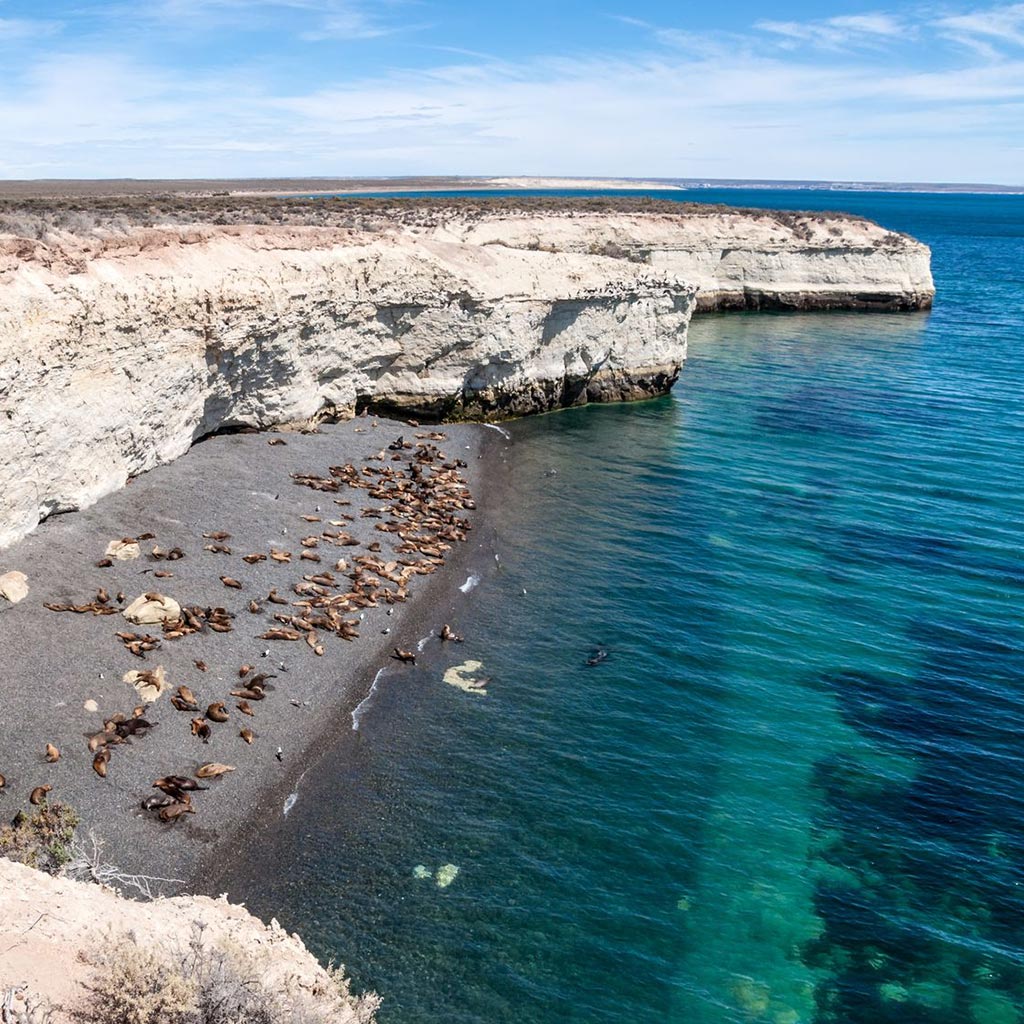
It’s barely an hour’s drive to Península Valdés. Spend the full day viewing wildlife, including elephant seals, penguins, orcas, or right whales (depending on season), as well as guanacos, rhea, and sea lions (present all year). Consider a night at one of the peninsula’s accommodations, such as Estancia Rincón Chico .
Depart in the morning, heading south on RN 3 back to Trelew (1 hour’s drive) to visit Museo Paleontológico Egidio Feruglio, a state-of-the-art paleontology museum, followed by a badlands hike through the in situ paleontological park at Bryn Gwyn, near Gaiman. Enjoy a late afternoon Welsh tea and overnight at Gaiman.
Newsletter Signup
From Gaiman, make an eastbound lateral from RN 3 to Punta Tombo (about 150 kilometers, roughly 2 hours). Its massive Magellanic penguin colony is the continent’s largest. After exploring Punta Tombo, drive along the desolate but scenic coastline past Cabo Raso to isolated Camarones (about 150 kilometers, 3 hours) for lunch. Continue onward to Bahía Bustamante (140 kilometers, 2.5 hours) for accommodations and excursions to offshore islands or a nearby petrified forest. From here, it’s possible to return to Trelew (roughly 250 kilometers, about 4 hours) and fly back to Buenos Aires.
Travelers with more time can continue south on RN 3 to Comodoro Rivadavia (roughly 200 kilometers, 3 hours) to tour the Southern Coast.
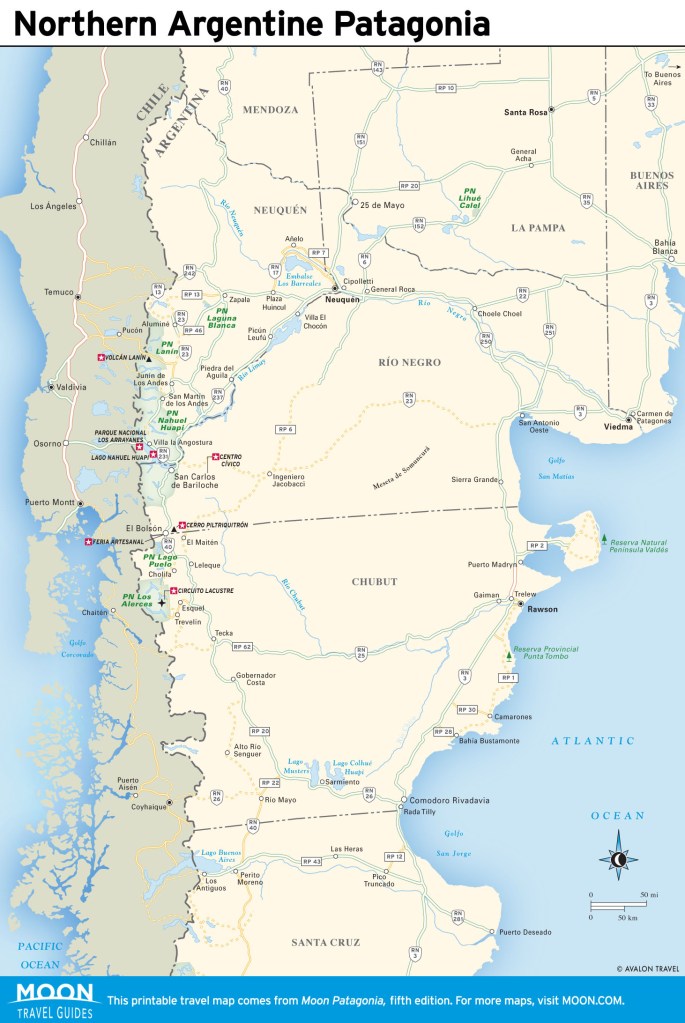
The Southern Coast
Fly from Buenos Aires to Comodoro Rivadavia. Make a brief stop at its first-rate Museo Nacional del Petróleo, before continuing along smoothly paved highway to picturesque Puerto Deseado (300 km, 3.5 hours) and its unique estuary, the Reserva Natural Provincial Ría Deseado . Take a short excursion on the Ría Deseado, home to penguins, cormorants, many other seabirds, and especially dolphins. Spend the night at Deseado.
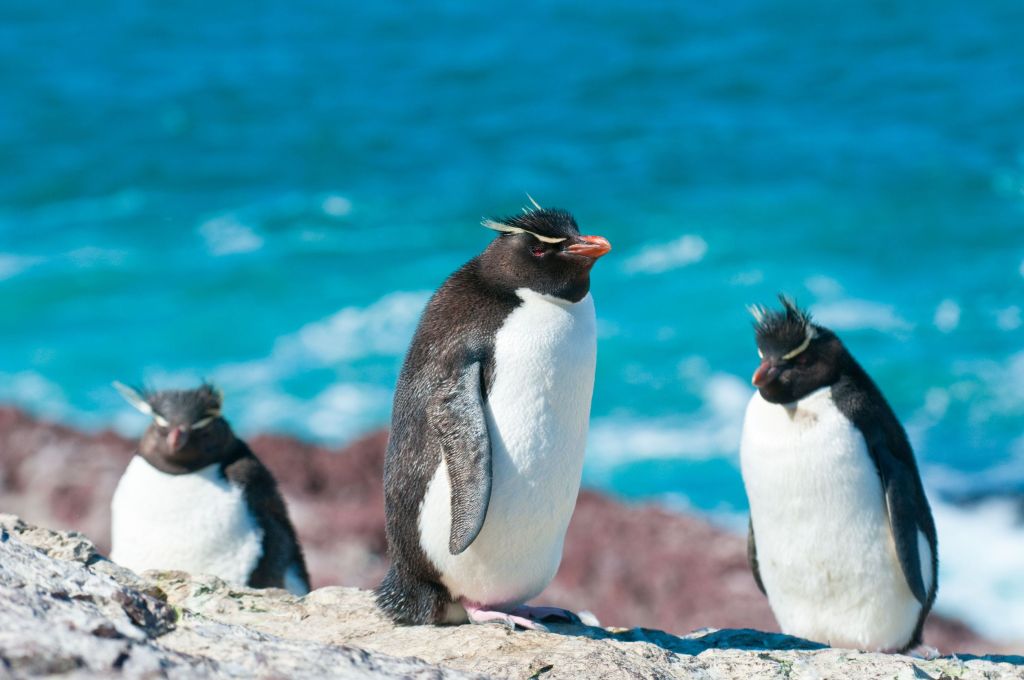
Sea conditions permitting, sail to offshore Isla Pingüino, site of the world’s northernmost rockhopper colony, along with Magellanics and many sea lions. Spend the night at Deseado or, if there’s enough daylight, continue south via RN 281 and RN 3 to Puerto San Julián (about 380 km, five hours). Its harbor and offshore islands are also home to large populations of dolphins and Magellanic penguins. Spend the night in San Julián.
Continue south on RN 3 to the stunning headlands of Parque Nacional Monte León (150 km, roughly 2.5 hours), a short detour off the main road. Before leaving the highway, check tide tables at the park visitors center in order to be able to walk the beach, enter the sea caves, and approach the cormorant-covered Isla Monte León . Camp at the park or find accommodations in the nearby town of Comandante Luis Piedra Buena.
Departing in the morning or afternoon, head south on RN 3 to Río Gallegos (200 km, 3 hours). Find accommodations in town or at Estancia Monte Dinero, near the large Magellanic penguin colony at Reserva Provincial Cabo Vírgenes, the easternmost point of the Strait of Magellan. From Gallegos, it’s possible to fly back to Buenos Aires.
Travelers with more time can continue onward to tour the Andes. Start on RN 3, then turn onto RP 5, which becomes contiguous with RP 40 at Esperanza until the junction with RP 11 east to El Calafate.
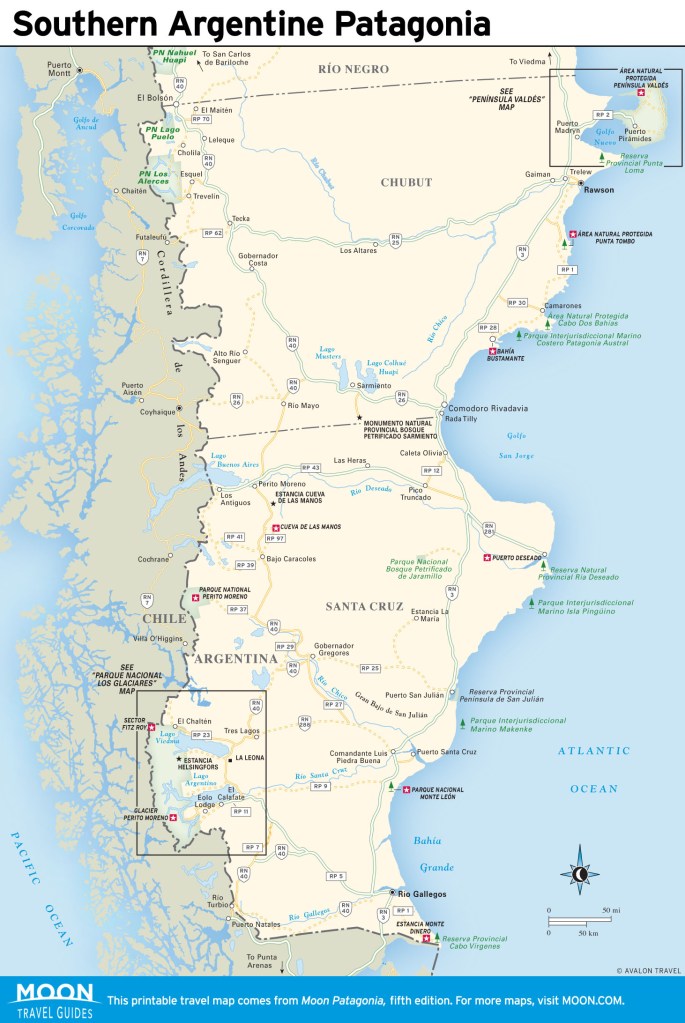
From Buenos Aires, fly to El Calafate , gateway to Parque Nacional Los Glaciares. Time permitting, visit a working estancia (ranch). Otherwise, dine at one of El Calafate’s fine restaurants. The following morning, begin a full-day overland excursion to the Glaciar Perito Moreno in Parque Nacional Los Glaciares. Overnight in El Calafete.
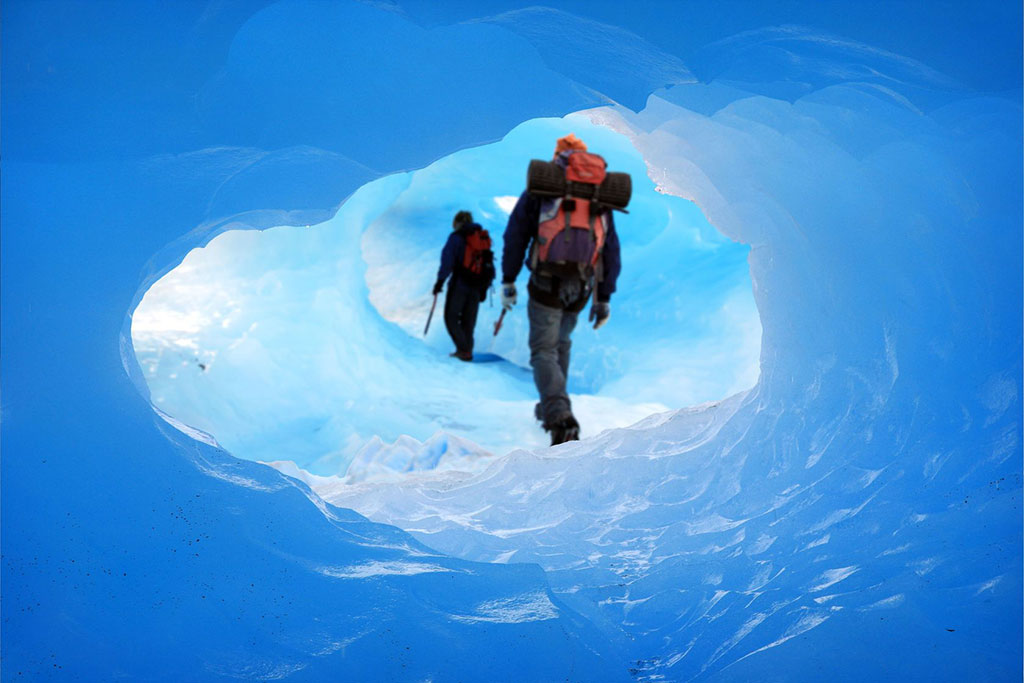
East of El Calafate, take the excellent paved northbound RN 40 and then westbound RP 23, to El Chaltén (about 250 kilometers, 3-4 hours) in Sector Fitz Roy of Parque Nacional Los Glaciares. With an early arrival and good weather, there’s time for a swift hike to view Cerro Torre’s namesake glaciated needle. Find accommodations in or near town.
The following day, plan on a demanding full-day hike to Laguna de los Tres, for views of Cerro Fitz Roy. On the next day, do another hike to Loma del Pliegue Tumbado for its panoramas of Fitz Roy. Return to El Calafate for the flight back to Buenos Aires.
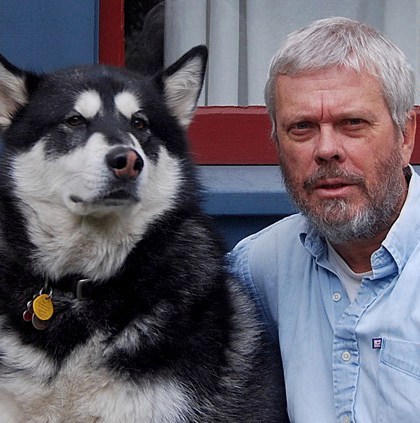
Wayne Bernhardson
About the author.
Learn more about this author
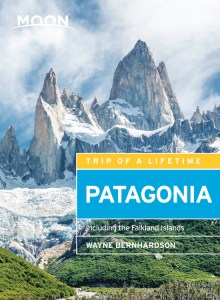
Moon Patagonia
by Wayne Bernhardson
Also available from:
- Barnes & Noble
- Books-A-Million
Pin For Later


IMAGES
VIDEO
COMMENTS
Notre itinéraire de voyage en Patagonie Jour 1 & 2 : El Calafate - Patagonie. Hébergement : Hôtel à El Calafate. El Calafate. Nous débutons notre roadtrip en Patagonie argentine à El Calafate qui est clairement la plus grande ville du sud de la région.
In Patagonia, things don't always go quite to plan, so leave yourself plenty of cushion for your trip. A 4WD vehicle is not essential but a high-clearance vehicle and patience are indispensable. There are a handful of places where your rental company will advise you not to drive unless you have a 4WD. Listen to them!
Patagonia itinerary for two weeks of travel: The Carretera Austral. Overview of this two-week Carretera Austral Patagonia Itinerary: Day One: Fly from Santiago to Puerto Montt. Days Two-Three: Board the Navimag or Naviera Austral ferry. Day Four: Exploring Río Tranquilo and the marble caves.
3-Week & 1-Month Patagonia Itinerary. Three or four weeks in Patagonia is a perfect amount of time to see both the highlights and even things regular short-time travelers don't have time to visit. This itinerary starts in Santiago, Chile; from here, you need to take a flight to Puerto Montt. This will be the official gateway to your Patagonia ...
Start: Puerto Montt; end: Villa O'Higgins; distance: 760 miles (1223km); allow 10 days. The big one. The so-called "Southern Highway" is Chile's most iconic drive that snakes south from Chile's Lake District across a landscape of dense forest, snow-peaked mountains, volcanoes, glacial rivers, and misty fjords. A Pinochet-commissioned ...
Though remote, this road trip is one of the best adventures in Patagonia. Most travelers do not go down the Ruta 7, opting for the more well-trodden, however more boring Ruta 40 instead. It gets you down south quicker but to me this is a mistake because the Carretera takes you through some of the most wild, remote, and gorgeous scenery.
Planning Your Trip to Patagonia — 5 Important Tips. 1. The Distance Between . Patagonia is huge!To say we've traveled there seems almost absurd given the enormity of the entire region - and we covered a lot of ground.
From Buenos Aires to Bariloche and the northern tip of Patagonia, it's a 22-hour journey that can cost from $38,000 ARS ($108 USD). From Bariloche, it's a further 26 hours to 23 hours to El Chaltén ($62,000 ARS ($177 USD), where there are onward connections to El Calafate and Ushuaia.
Patagonia 10 Day Itinerary and Travel Guide Overview. Since Patagonia occupies 2 countries, you can either follow the order of this Patagonia itinerary or do the reverse. We started off our 10 day Patagonia adventure in Chile and finished in Argentina. You can totally do the reverse of what we did on our Patagonia trip.
How to road trip from Santiago, Chile to Ushuaia, Argentina. With a square area of over 400,000 miles, Patagonia region is best explored with a good old-fashioned road trip.
Day four - Hike Lake Pehoe lookout, Lago Grey. Day five - Perito Moreno, The Glaciarium. Day six - La Leona Petrified Forest. Day seven - Hike Mount Fitz Roy, Laguna de los Tres. Day eight - Viedma Glacier. Day nine - Horseback riding in Cerros Frias. Day ten - Mirador Cerro de la Cruz, La Luna.
Pricing and Duration. With tour prices starting from $130.00 and a duration of approximately 10 hours, visitors can enjoy a full-day road trip adventure in Patagonia, exploring scenic towns and lakes while capturing unforgettable memories along the way. The tour offers great value for the experience it provides.
Voyager en Patagonie : quel itinéraire faire? El Calafate, Argentine (2 jours) Mon petit frère me rejoignant en Argentine pour les fêtes de Noël, j'ai fait une exception à la règle que je m'étais fixée en Amérique du Sud pendant ce tour du monde, à savoir d'éviter de prendre l'avion.Pour des raisons évidentes de manque temps au vu des distances, après 2 jours passés ...
Itinerary #1: Explore Los Glaciares & Torres del Paine National Parks. Perfect for first-time visitors to Patagonia eager to tick off both the highlights, this 10-day trip features time in Argentina's Buenos Aires, Los Glaciares National Park, and Chile's Torres del Paine National Park. Starting in Buenos Aires, you'll get a sampling of Argentina's colorful culture before flying to El Calafate ...
Driving Patagonia's most famous highway, Ruta 40, will take travelers past mountain vistas, crystal clear lakes, and wide views of cloudless skies. Both Esquel and Bariloche offer prime skiing from July through September. Additionally, each of these Patagonian cities is near impressive national parks: Nahuel Huapi and Los Alerces.
Best Time to Visit Patagonia. The best time to visit Patagonia (Chile and Argentina) is during summer time in the Southern Hemisphere-so from November to early March. These are the months with most sunshine (12-17 hours of daylight) and highest temperatures (average: 18 degrees Celsius).
A one-way ticket costs around 300 USD for a flight from Buenos Aires/Santiago to Patagonia. Another option is to travel around by bus. This is by far the cheapest way to travel in Patagonia. Buses in Chile and Argentina are comfortable, reliable, and cover all the places I recommended in the itinerary.
Things to remember when driving through Patagonia. 1. The roads aren't paved in Patagonia. Don't plan a road trip through Patagonia expecting tarmacked roads as that is certainly not what you're going to get! The roads are made of gravel, dirt and a sand-like substance and are sometimes covered in snow.
Travel Blog. Travel Tales from Argentina and South America. Self-drive Trip to Patagonia: From Buenos Aires to Bahía Bustamante. Patagonia Travel Posted on 05/20/2021 ... Watch out for the gas station on your road trip in Patagonia. Argentina is a wide country, even unpopulated in some areas. That's why it's really important to know before ...
Road trip et randonnées en Patagonie. Ah la Patagonie… une destination parfaite pour les amateurs de road trip et de randonnées!J'en ai pris plein les yeux, j'ai vu des paysages d'une beauté rare, cette destination m'a vraiment marqué par sa beauté. Voici les étapes à ne surtout par rater : c'est parti pour le roadbook!. Le glacier Perito Moreno : une merveille à ne pas rater !
Tips for a Patagonia Road Trip. Some areas of Patagonia are quite remote. Be sure to download Google offline maps so you'll be able to navigate without service. I also recommend having an international phone plan or local SIM card. Prepare for all kinds of weather on your Patagonia trip - but especially wind.
3 Classic Patagonia Road Trip Routes. Because of Patagonia's vast expanses, overland travel tends to be for those with plenty of time. Most routes are well served by reasonably priced public transportation, but renting a vehicle can be more efficient. A 4WD vehicle is rarely necessary, but a high-clearance vehicle can be worth the extra bucks.
Things to consider. Road tripping in Patagonia is to journey past awe-inspiring scenery, from national parks to mountains, glaciers to rivers, along some adventurous terrain and into the heart of Patagonia. It doesn't have to be just you and the open road. We can set you up with a driver and a guide, either privately or as part of a group trip.